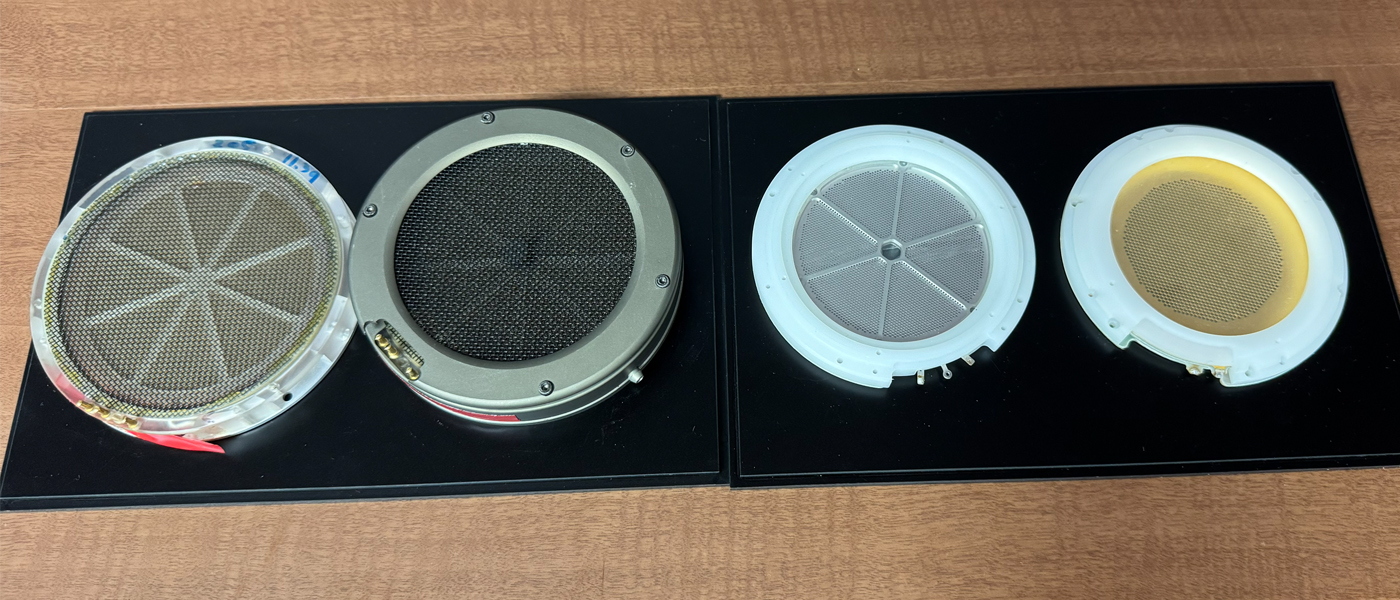 We’re back in Denver for CEDIA EXPO 2025, running September 4–6 at the Colorado Convention Center—and this year, Carlo Lo Raso, Editor-in-Chief of SECRETS, will be on the show floor bringing his expertise and sharp eye for standout gear. Expect a packed week of cutting-edge demos, fresh product launches, and technology that pushes the limits of home theater and smart living.
We’re back in Denver for CEDIA EXPO 2025, running September 4–6 at the Colorado Convention Center—and this year, Carlo Lo Raso, Editor-in-Chief of SECRETS, will be on the show floor bringing his expertise and sharp eye for standout gear. Expect a packed week of cutting-edge demos, fresh product launches, and technology that pushes the limits of home theater and smart living.
We’ll be updating this page daily with news, impressions, and highlights so you can experience the show alongside us.
We’d like to make a special shoutout to Playback Distribution, the team behind bringing some of the most respected high-performance audio brands to North America. Their passion for exceptional sound and deep ties to the hi-fi community make them the perfect sponsor for this year’s coverage, helping us bring you closer to the industry’s most exciting innovations.
Follow SECRETS on Facebook and Instagram for even more real-time updates and behind-the-scenes stories. We hope you enjoy our coverage!
Epson
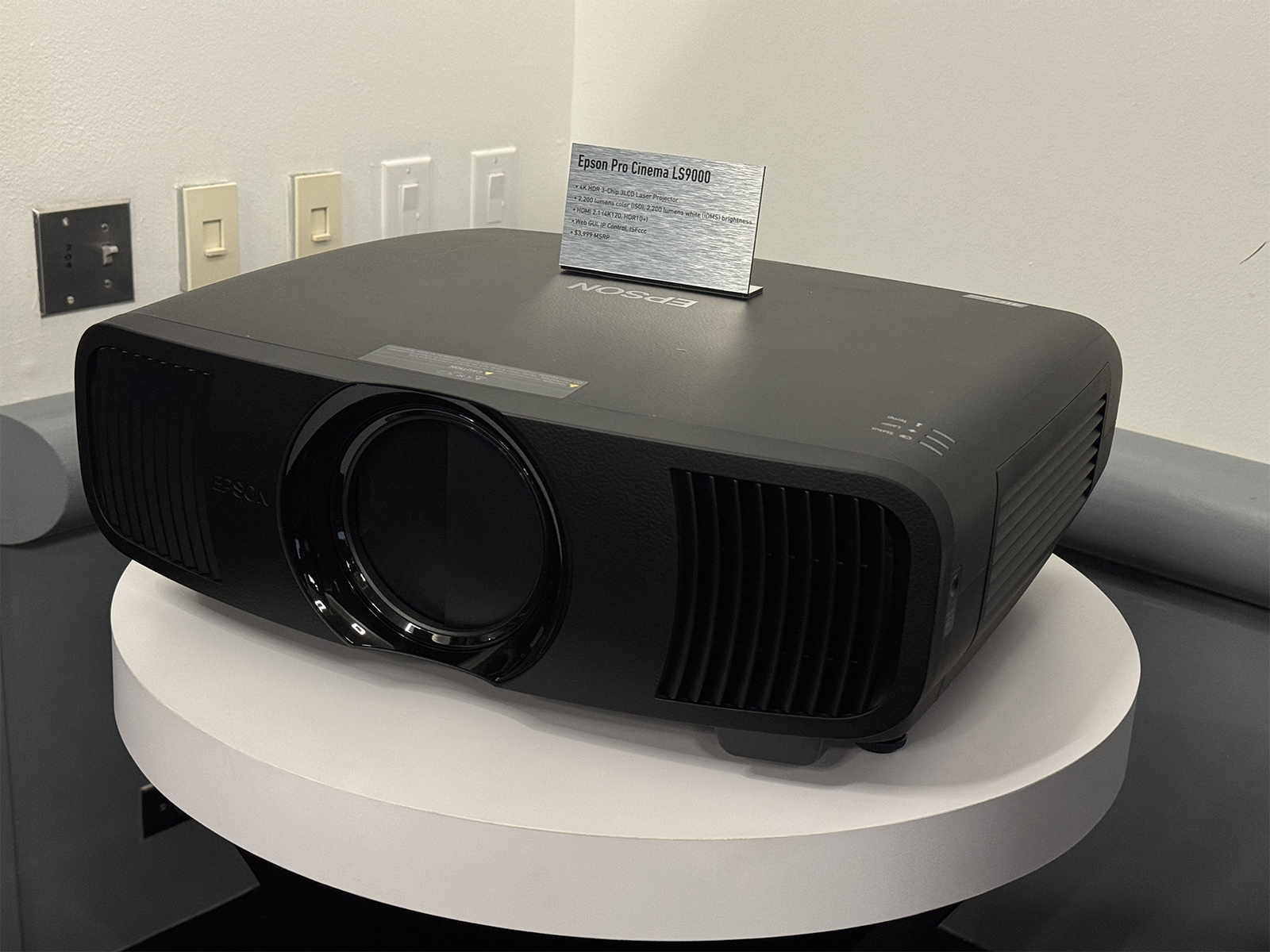 Epson had a couple of new projectors that they were featuring at CEDIA this year. First was the Pro Cinema LS9000 4K 3LCD laser projector, which is their newest entry-level model, priced at $4,000.00. The projector produces a claimed 2200 lumens of both color and white brightness, and in our demonstration, it produced a bright, punchy, and colorful image onto a 120-inch Cima screen from Stewart Filmscreen.
Epson had a couple of new projectors that they were featuring at CEDIA this year. First was the Pro Cinema LS9000 4K 3LCD laser projector, which is their newest entry-level model, priced at $4,000.00. The projector produces a claimed 2200 lumens of both color and white brightness, and in our demonstration, it produced a bright, punchy, and colorful image onto a 120-inch Cima screen from Stewart Filmscreen.
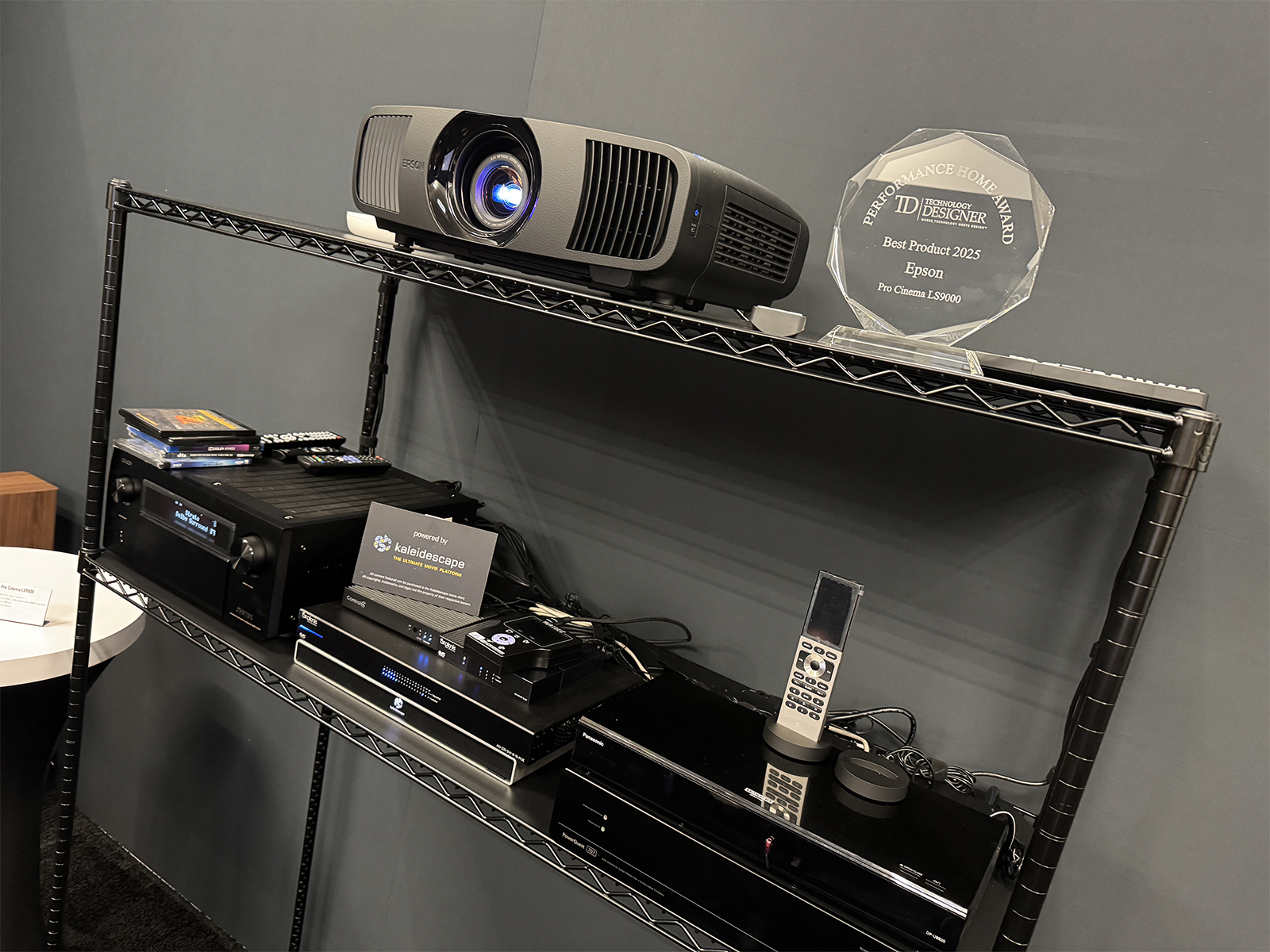
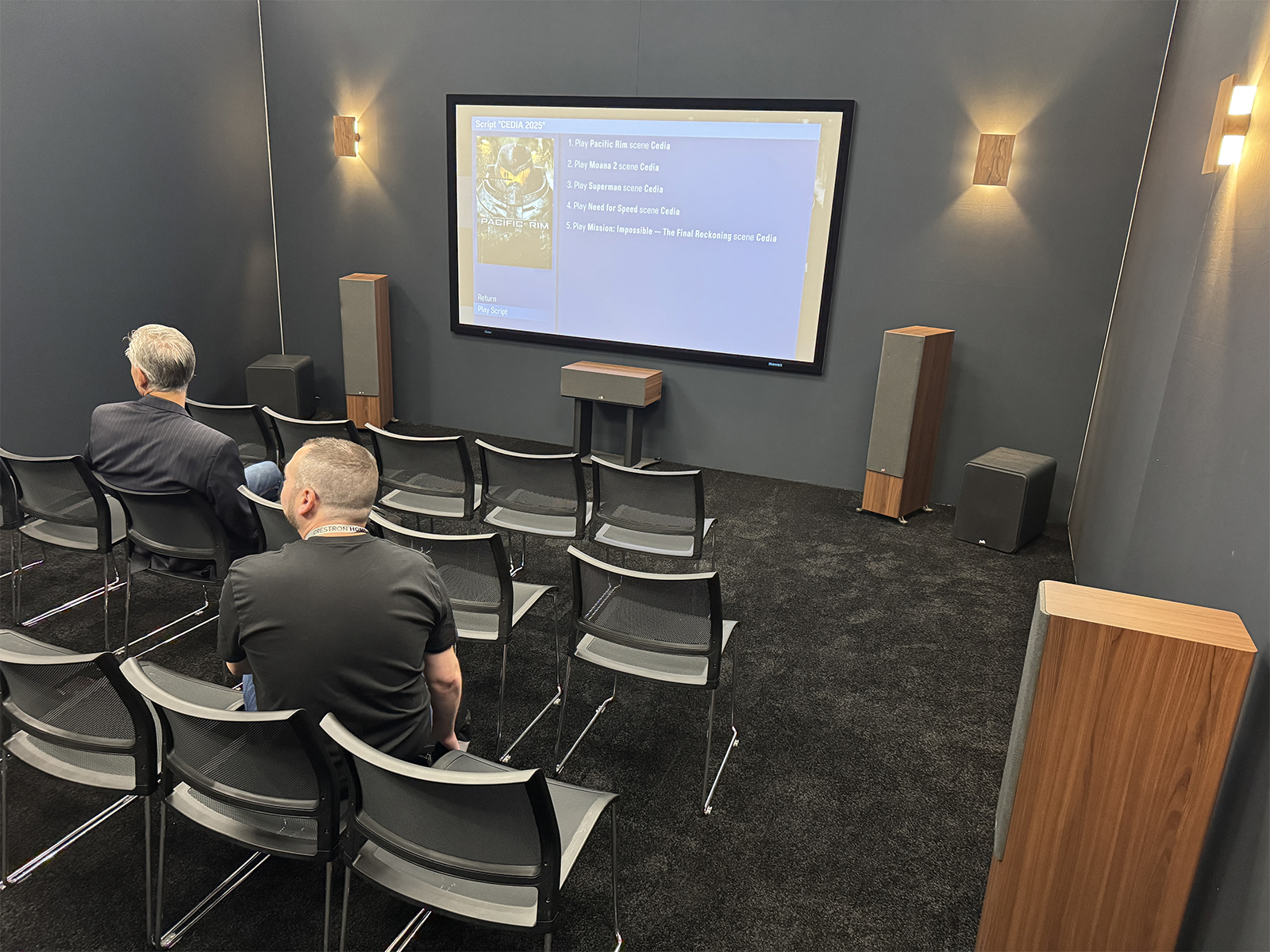 The LS9000 was part of a 7.4 channel demo system that included the screen, a Denon AVR-A10H receiver, a Kaleidescape Strato-E movie player, Polk Reserve Series speakers, and Signature Elite subwoofers. Including cables and projected dealer installation cost, the whole system was priced at $25,000.00 complete. Between the stellar picture and excellent sound quality, I couldn’t see how anyone would be disappointed with this setup!
The LS9000 was part of a 7.4 channel demo system that included the screen, a Denon AVR-A10H receiver, a Kaleidescape Strato-E movie player, Polk Reserve Series speakers, and Signature Elite subwoofers. Including cables and projected dealer installation cost, the whole system was priced at $25,000.00 complete. Between the stellar picture and excellent sound quality, I couldn’t see how anyone would be disappointed with this setup!
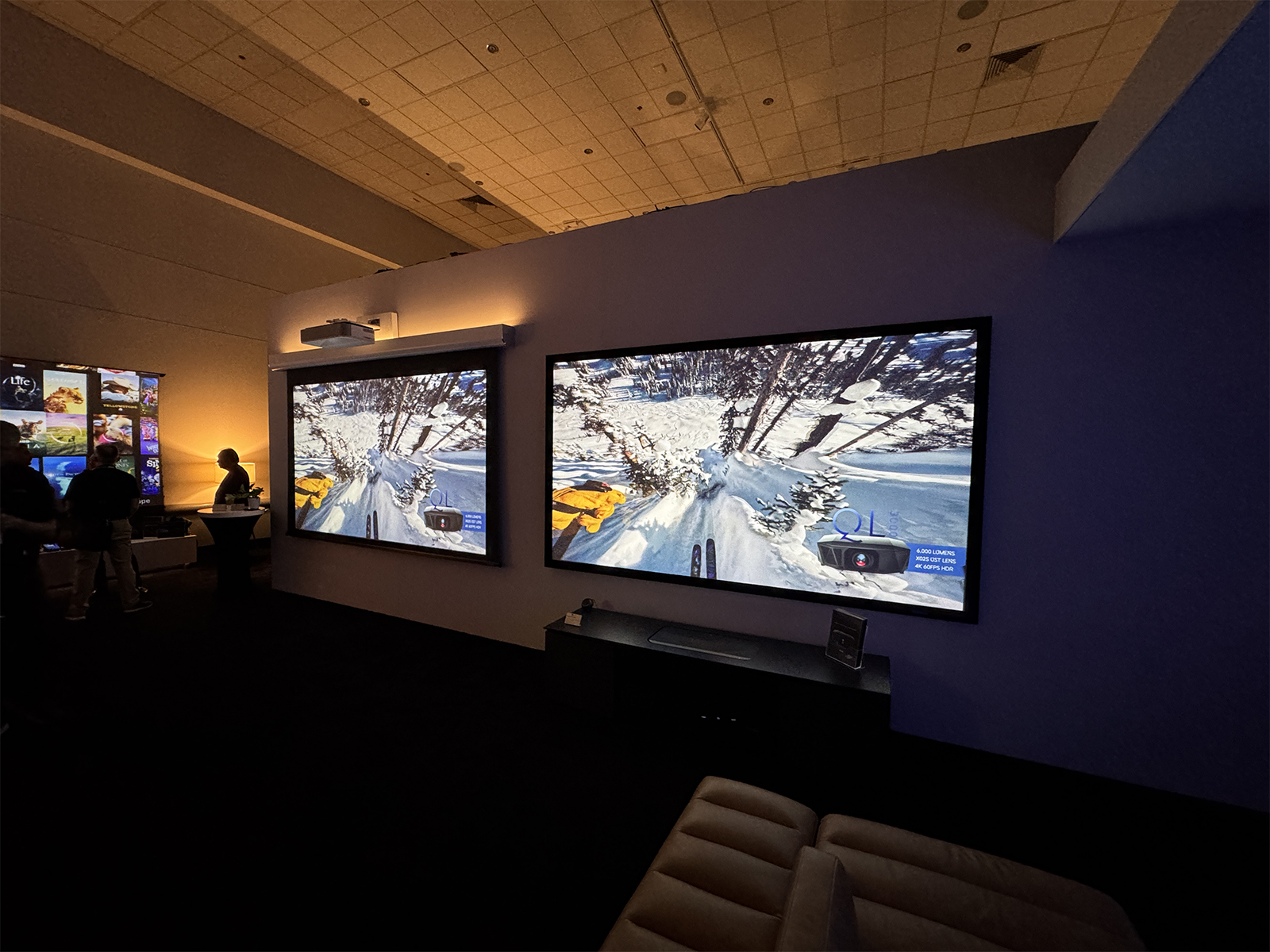 Epson also featured their new QS100 4K PRO-UHD 3LCD Ultra Short Throw projector ($5,000.00) in two setups. One had it wall-mounted and projecting from above, down onto a 135-inch retractable Lexus screen from Stewart Filmscreen.
Epson also featured their new QS100 4K PRO-UHD 3LCD Ultra Short Throw projector ($5,000.00) in two setups. One had it wall-mounted and projecting from above, down onto a 135-inch retractable Lexus screen from Stewart Filmscreen.
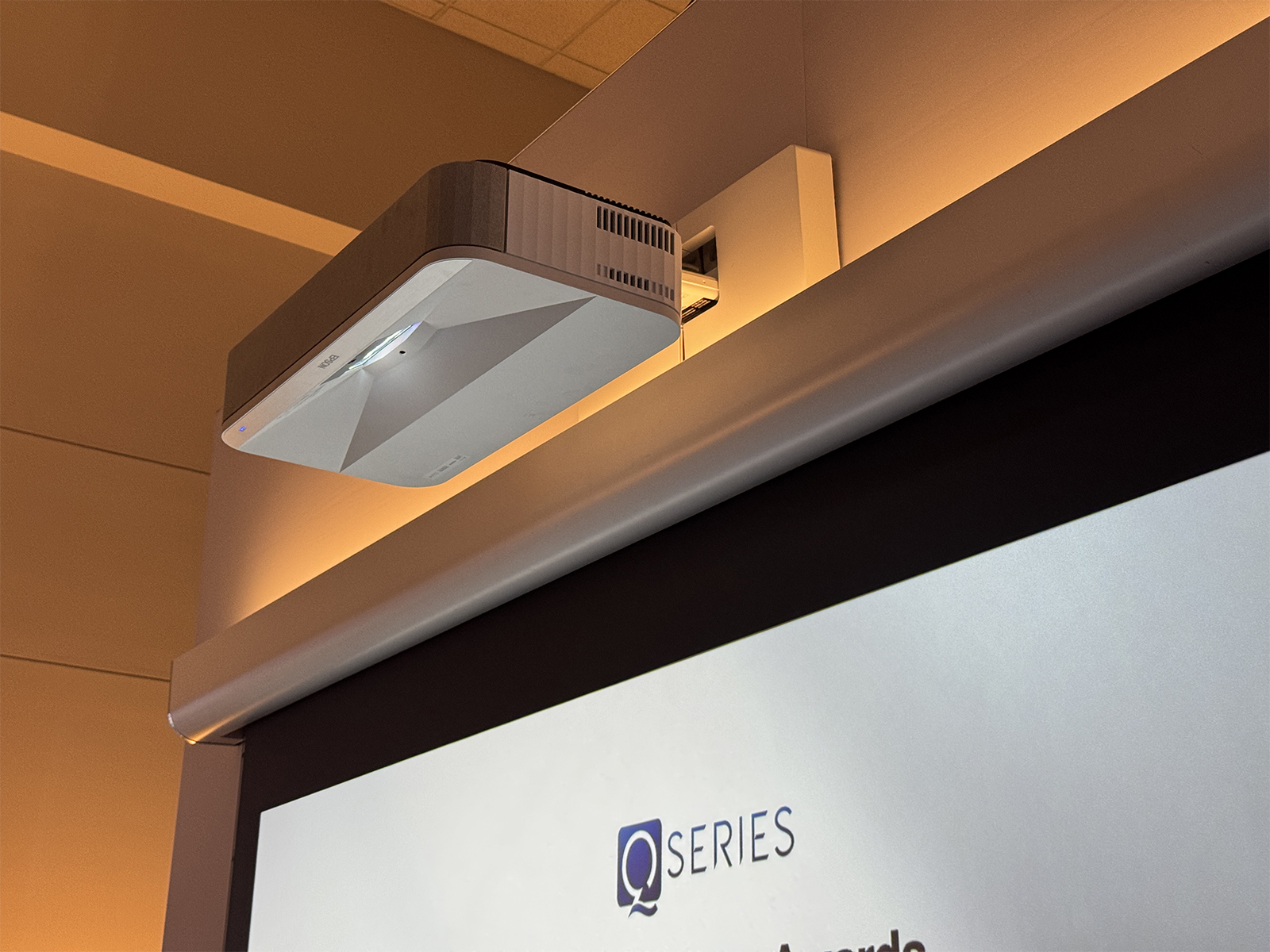
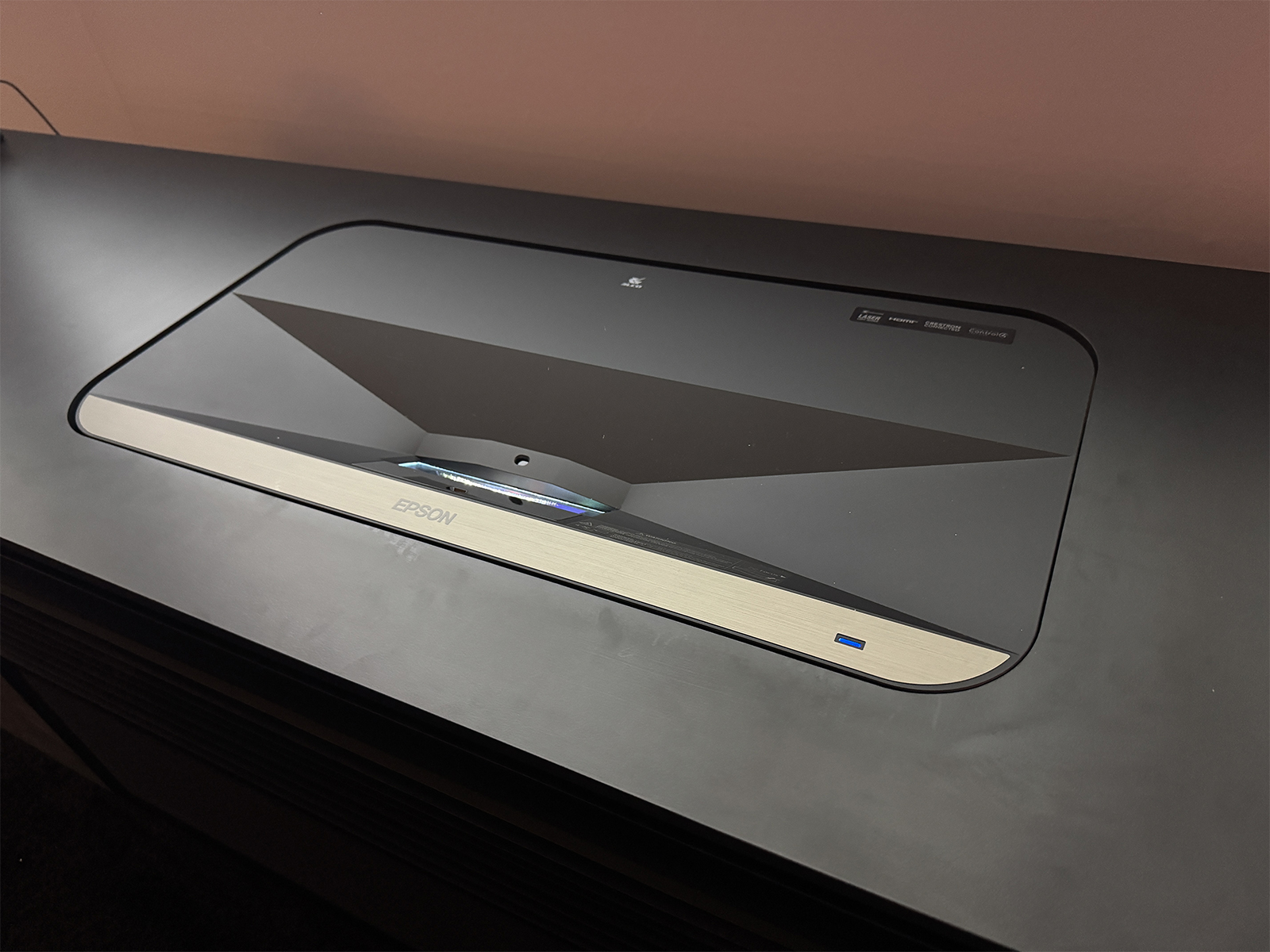 The other had it housed in a custom cabinet from Salamander Designs, projecting upwards onto a 135-inch WallScreen UST MicroPerf screen also from Stewart.
The other had it housed in a custom cabinet from Salamander Designs, projecting upwards onto a 135-inch WallScreen UST MicroPerf screen also from Stewart.
Paradigm
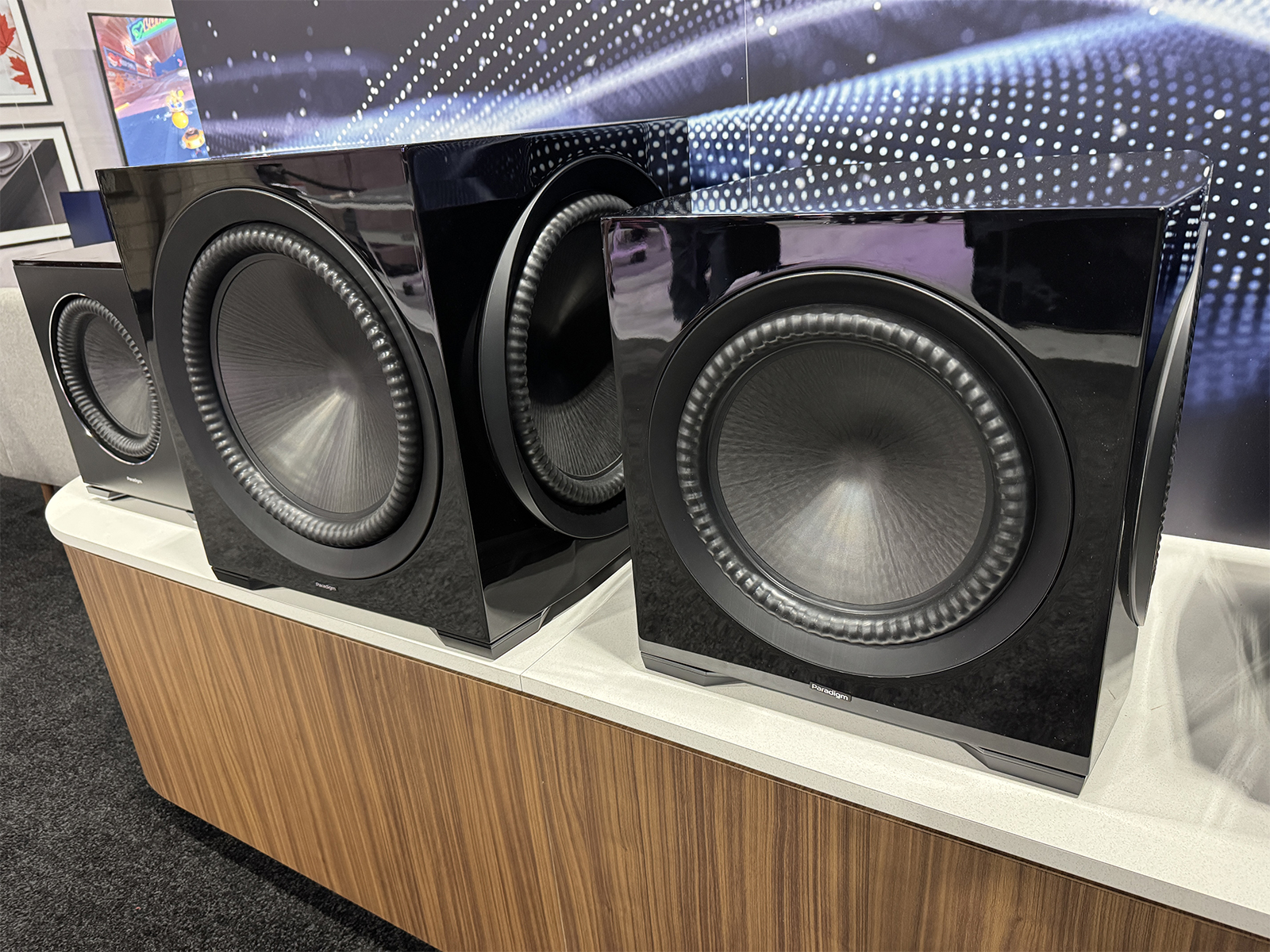 Paradigm was teasing a couple of brand-new subwoofers at CEDIA 2025. They were called the Seismic 315 and the Seismic 312. As the names imply, the 315 features one 15-inch high excursion active driver flanked by two 15-inch passive radiators. The Seismic 312 riffs off the same idea but uses a 12-inch active driver and two 12-inch passive radiators. Besides these two featured models, the Seismic line will have both 10-inch and 8-inch driver versions following shortly thereafter.
Paradigm was teasing a couple of brand-new subwoofers at CEDIA 2025. They were called the Seismic 315 and the Seismic 312. As the names imply, the 315 features one 15-inch high excursion active driver flanked by two 15-inch passive radiators. The Seismic 312 riffs off the same idea but uses a 12-inch active driver and two 12-inch passive radiators. Besides these two featured models, the Seismic line will have both 10-inch and 8-inch driver versions following shortly thereafter. 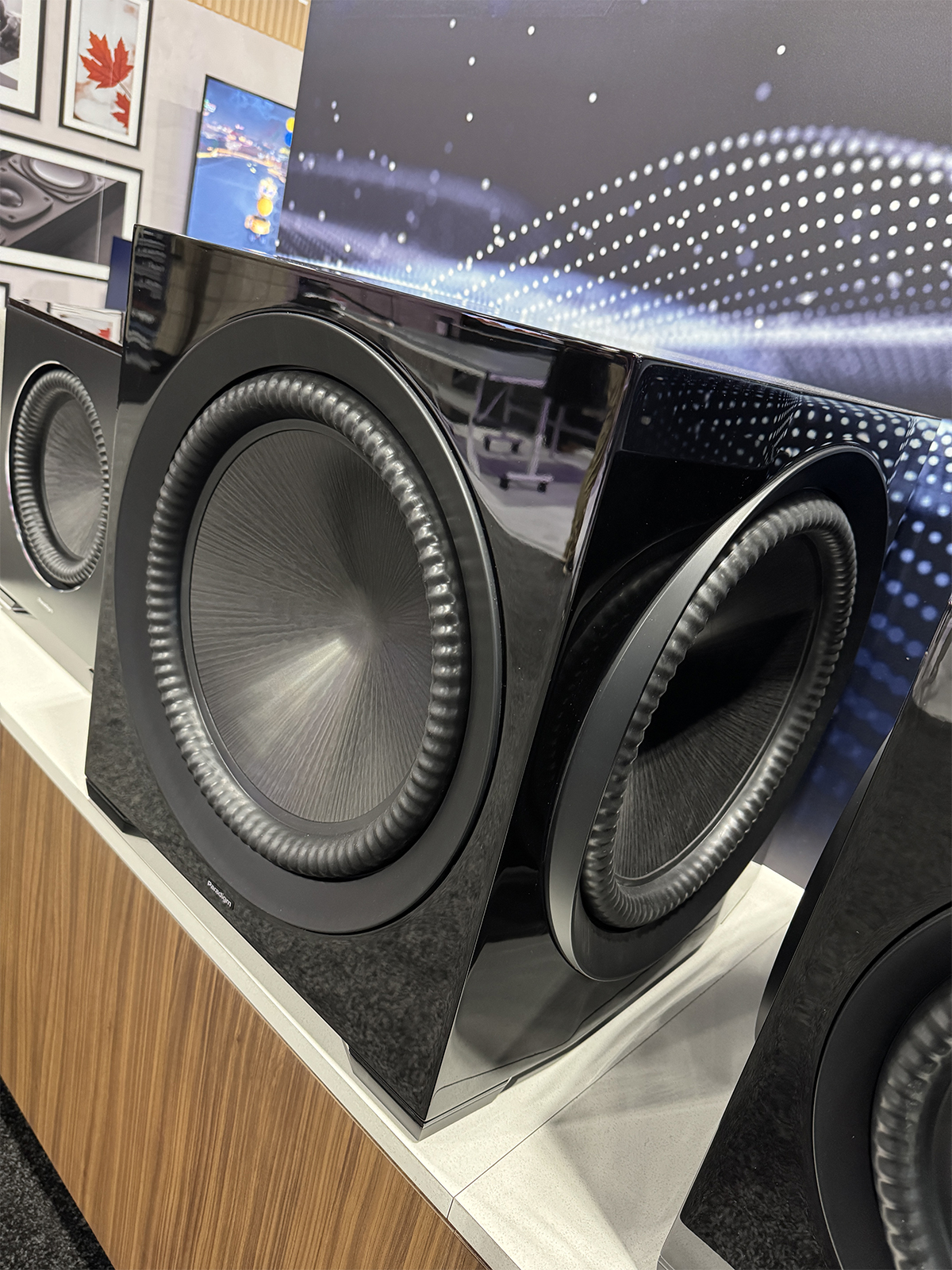
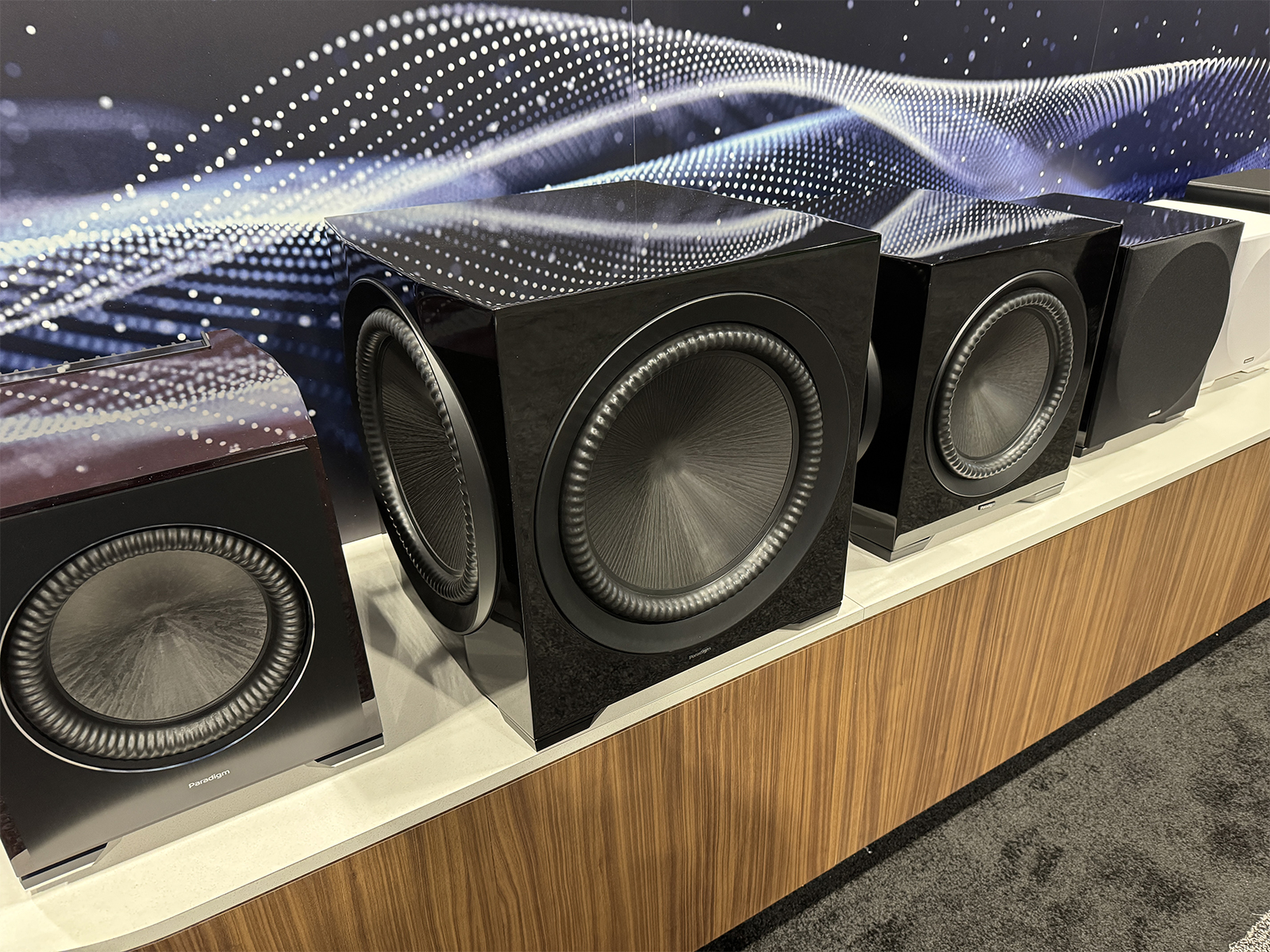 Both subs feature a 1000-watt RMS power amplifier, Paradigm’s Active Ridge Technology driver surrounds, built-in wireless connectivity, and built-in Anthem ARC Genesis room correction. These will slot in right between the Defiance XR line and the Defiance S line of subwoofers. Price and availability are currently being finalized, but I expect the subwoofer gods won’t be making us wait too long for these beasts to arrive!
Both subs feature a 1000-watt RMS power amplifier, Paradigm’s Active Ridge Technology driver surrounds, built-in wireless connectivity, and built-in Anthem ARC Genesis room correction. These will slot in right between the Defiance XR line and the Defiance S line of subwoofers. Price and availability are currently being finalized, but I expect the subwoofer gods won’t be making us wait too long for these beasts to arrive!
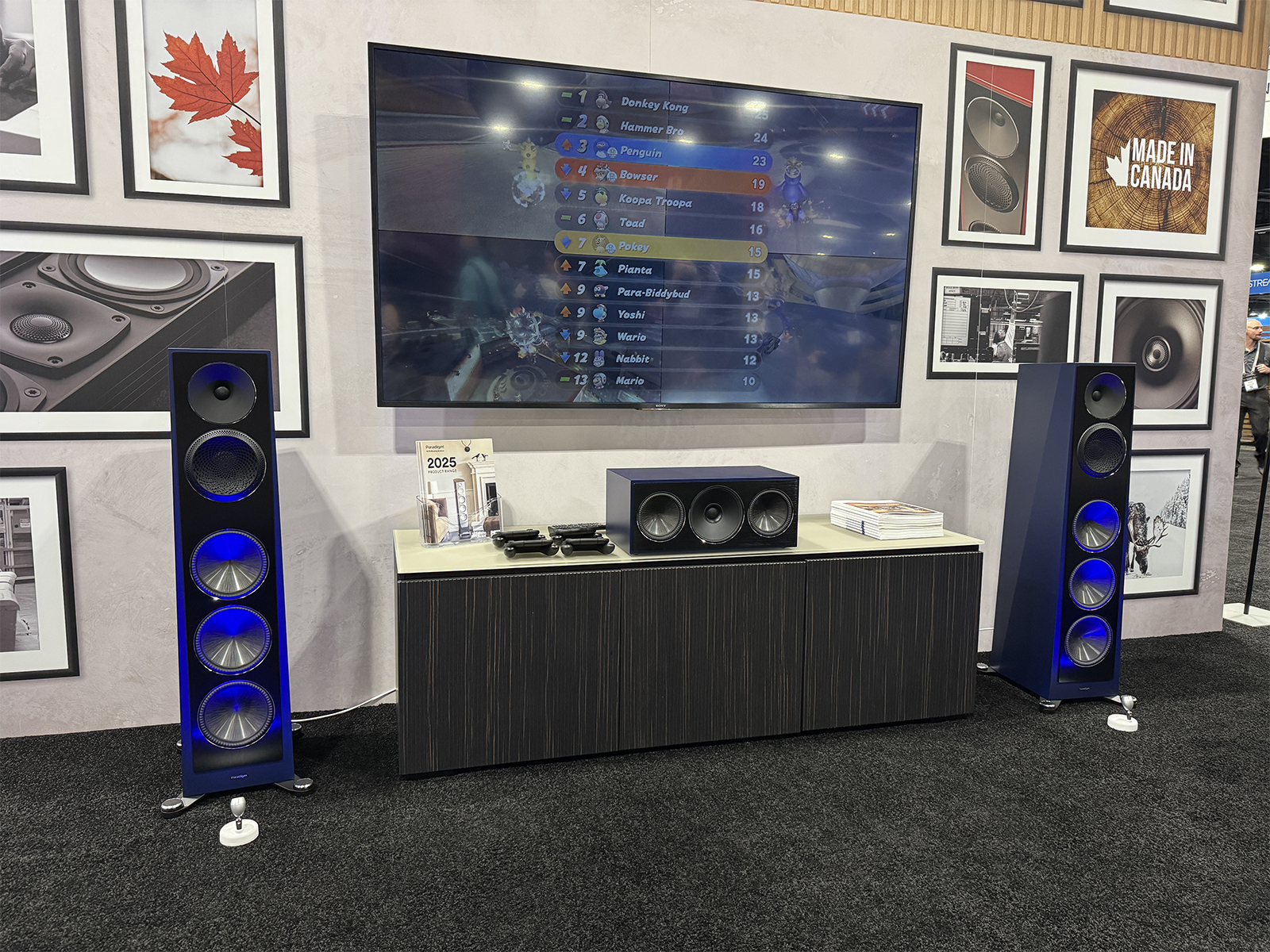
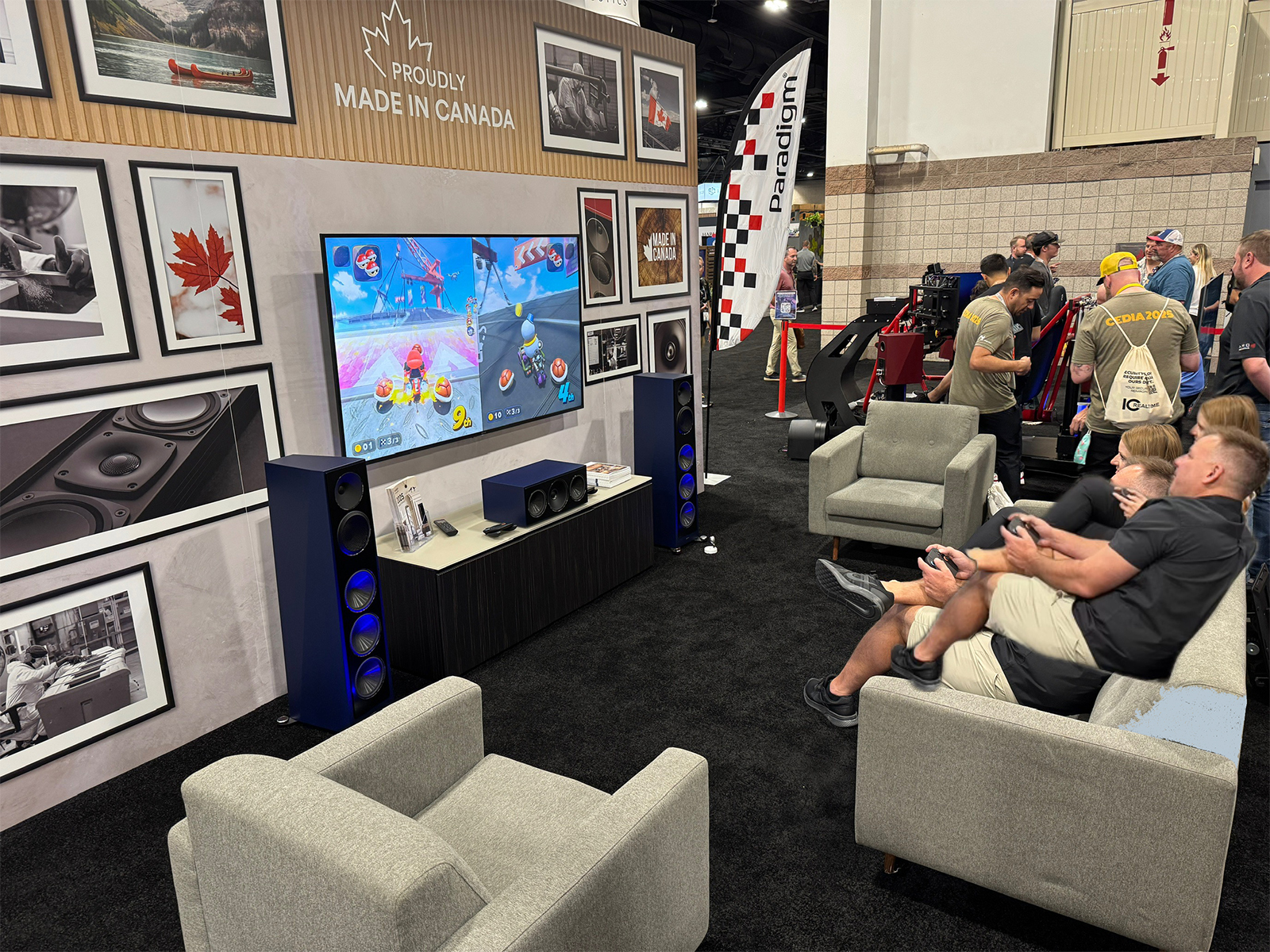 Also at the Paradigm booth was a Founder series-based surround gaming system running Mario Kart for plenty a willing show goers to immerse themselves in.
Also at the Paradigm booth was a Founder series-based surround gaming system running Mario Kart for plenty a willing show goers to immerse themselves in.
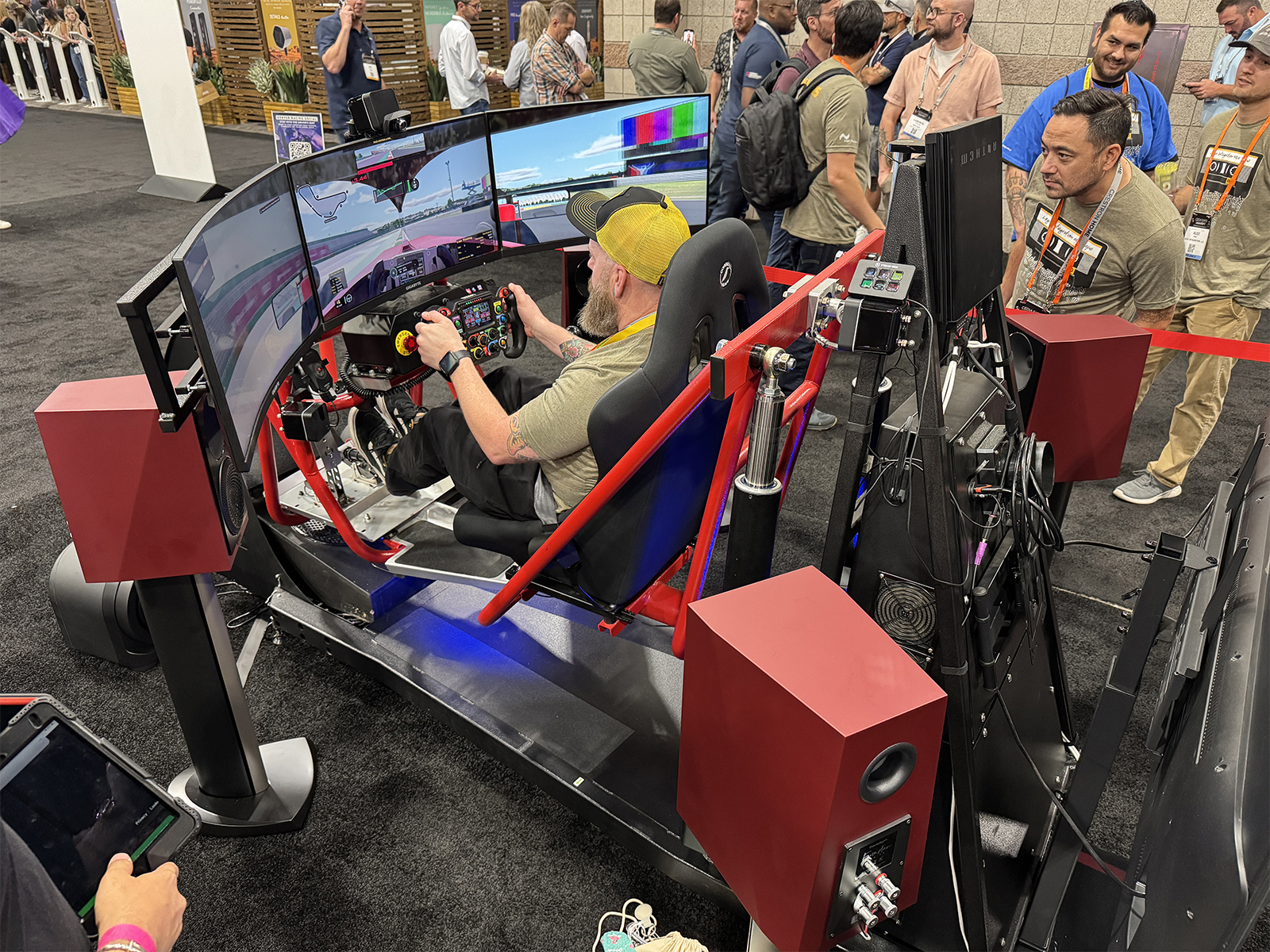
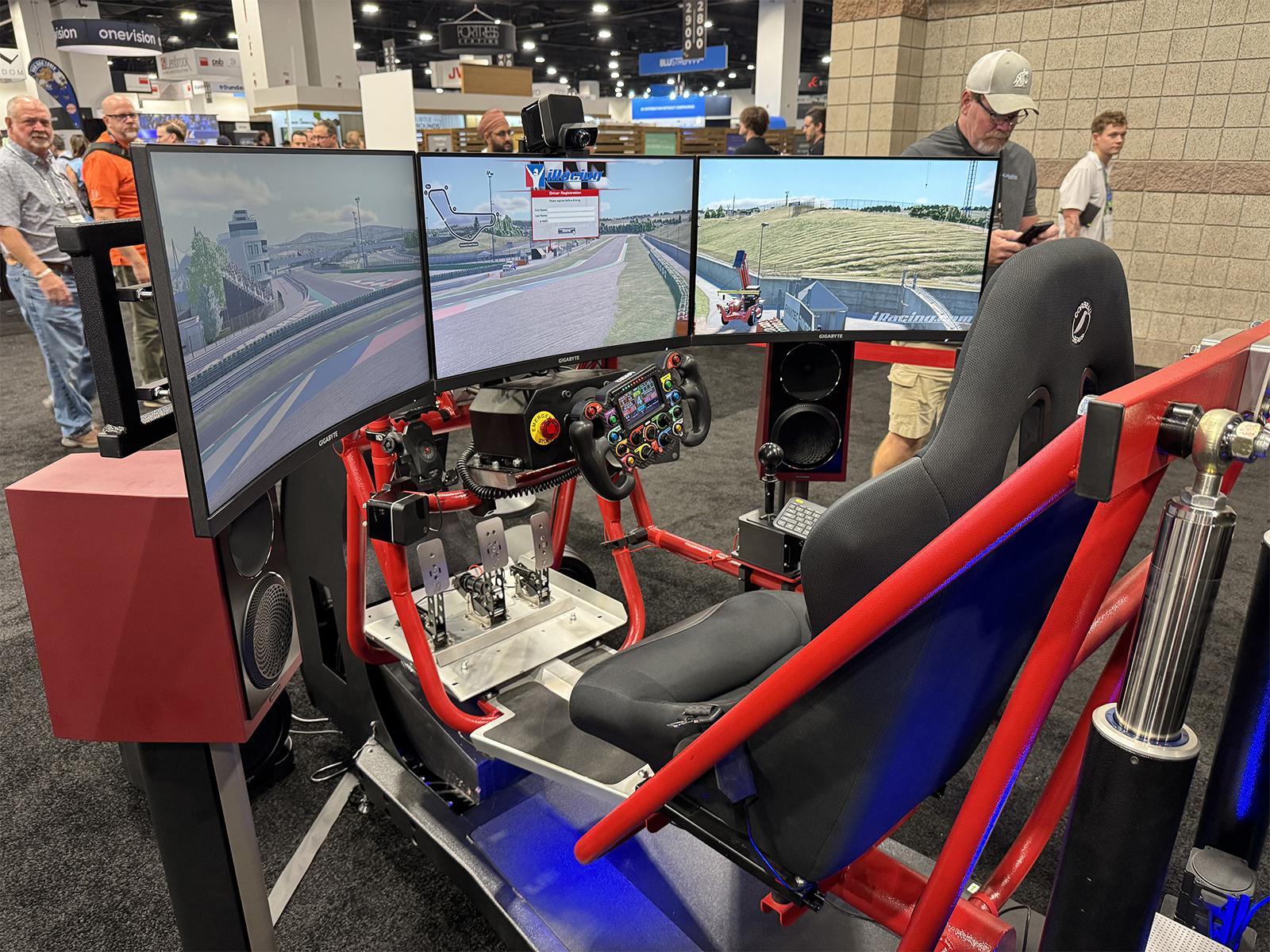 There was also a full-on racing simulator with expansive curved screens and another Paradigm Founder-based surround system to enhance the experience. It was interesting to see more companies like Paradigm integrate gaming into their CEDIA displays this year.
There was also a full-on racing simulator with expansive curved screens and another Paradigm Founder-based surround system to enhance the experience. It was interesting to see more companies like Paradigm integrate gaming into their CEDIA displays this year.
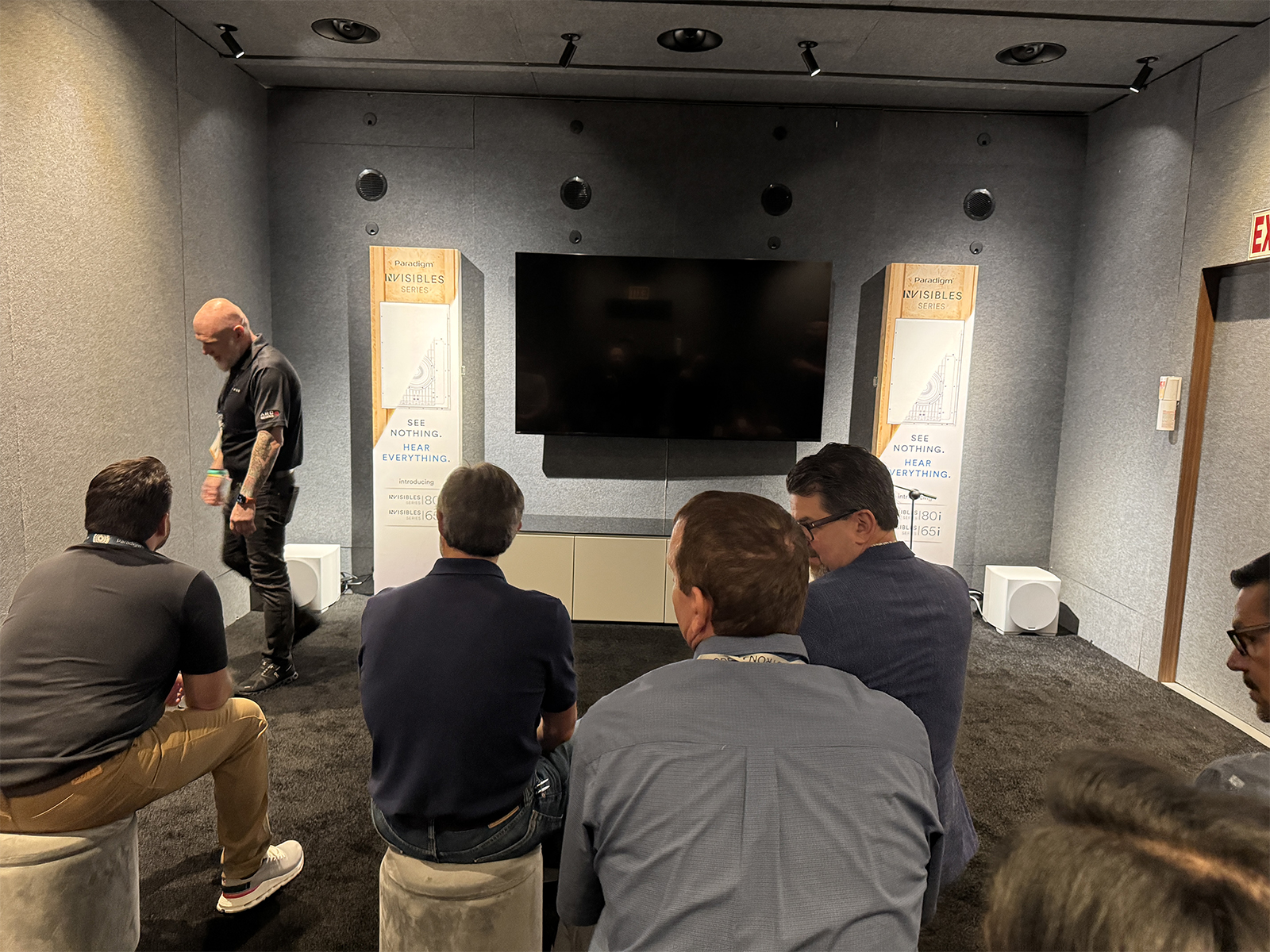 And lastly, Paradigm was featuring a truly “stealth” 4.4.4 channel home theater demo with their new “Invisibles” series of in-wall speakers. Soon available in two models, the 65i (6-inch mid-bass driver)and 80i (8-inch mid-bass driver), these are the kinds of in-wall speakers that, once installed, can be completely mudded over, sanded, and painted for a truly seamless and invisible look. The four 80i Invisibles speakers in the demo room were augmented by four SFC 12 SW in-wall subwoofers and four 8-inch in-ceiling speakers.
And lastly, Paradigm was featuring a truly “stealth” 4.4.4 channel home theater demo with their new “Invisibles” series of in-wall speakers. Soon available in two models, the 65i (6-inch mid-bass driver)and 80i (8-inch mid-bass driver), these are the kinds of in-wall speakers that, once installed, can be completely mudded over, sanded, and painted for a truly seamless and invisible look. The four 80i Invisibles speakers in the demo room were augmented by four SFC 12 SW in-wall subwoofers and four 8-inch in-ceiling speakers.
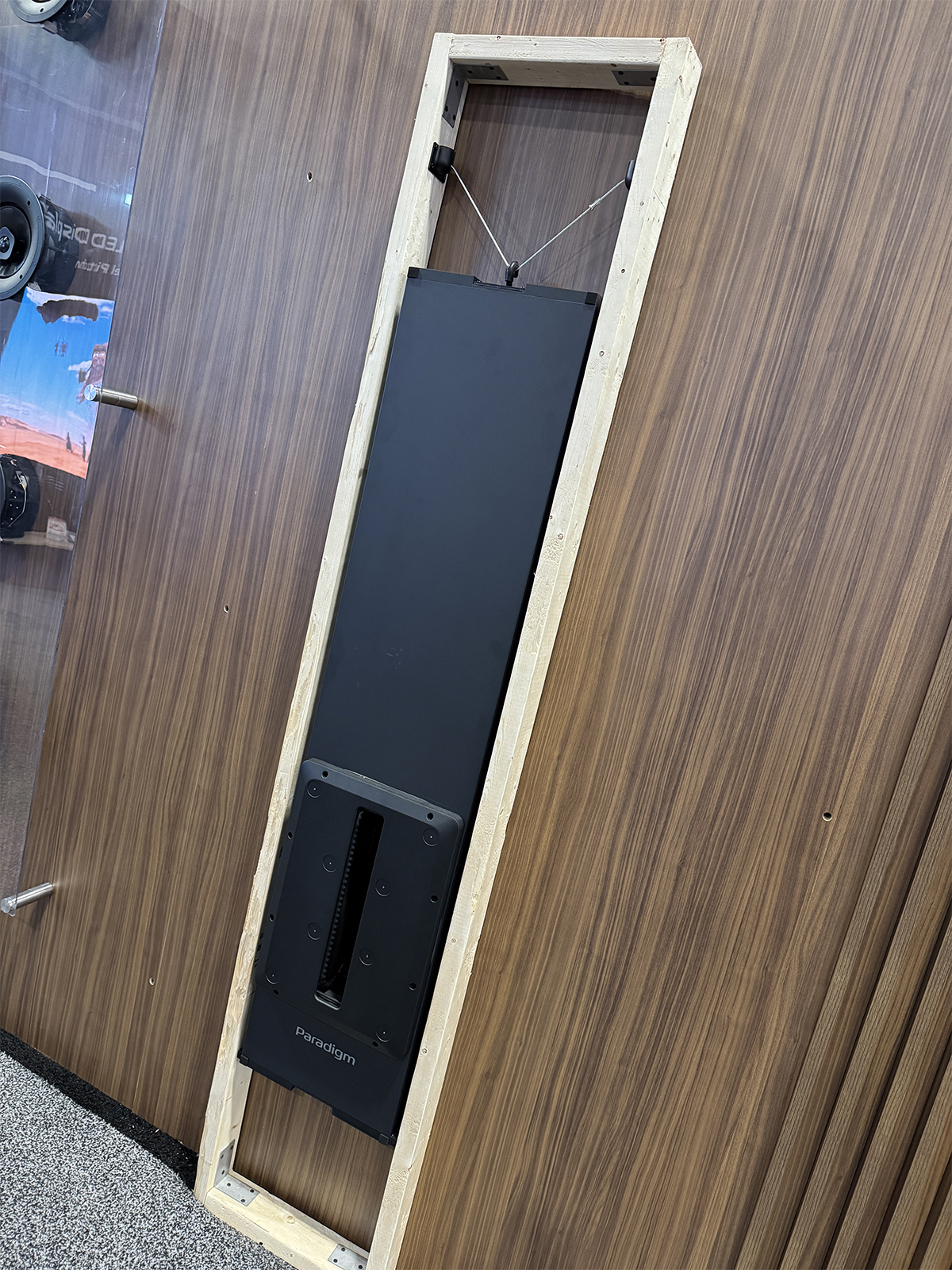
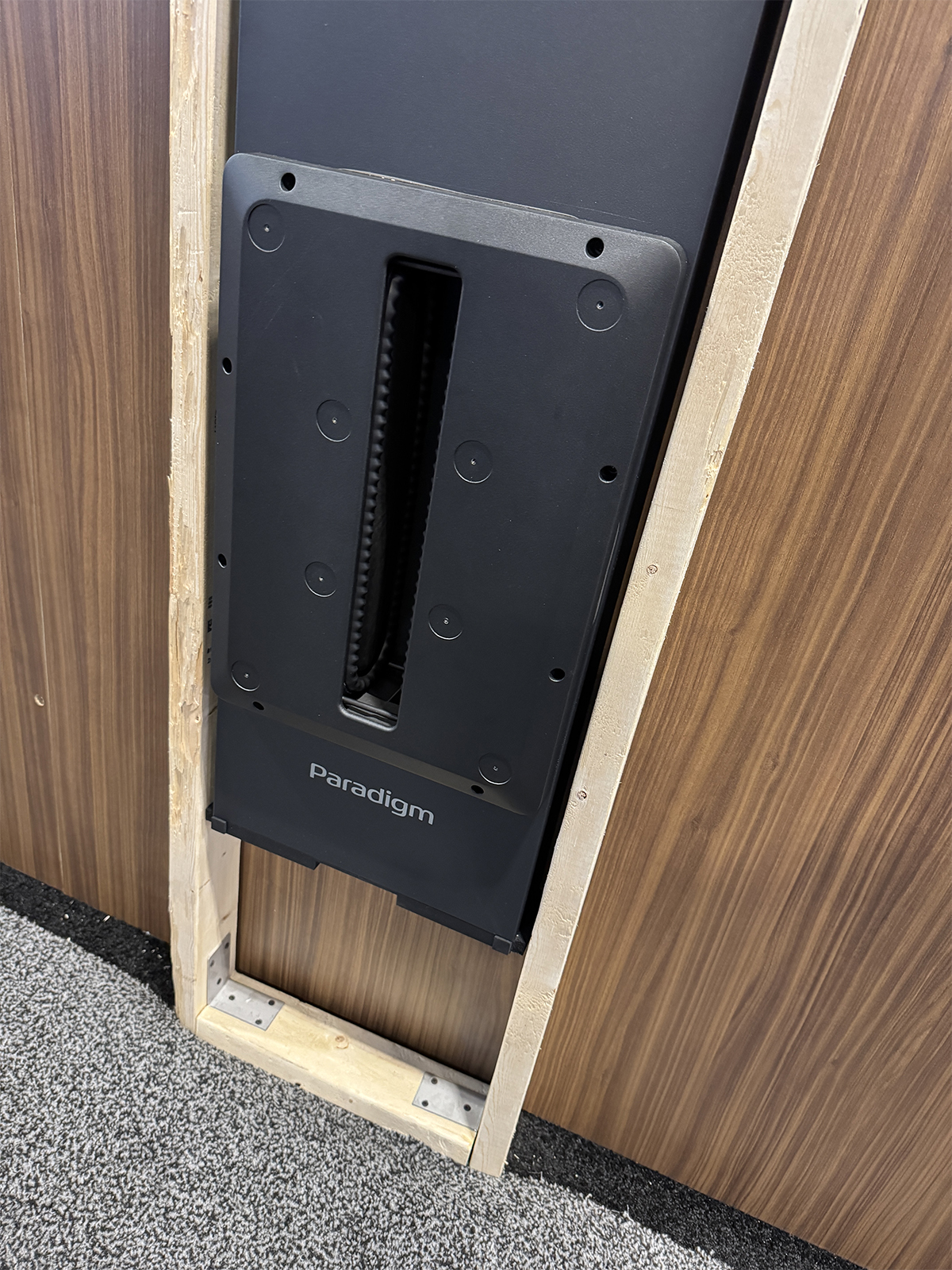 The system was generating a phantom center channel image and was controlled and powered by an Anthem MRX 1140 Receiver. It was truly a great-sounding system and a cool option for those who really do not want to see speakers of any sort.
The system was generating a phantom center channel image and was controlled and powered by an Anthem MRX 1140 Receiver. It was truly a great-sounding system and a cool option for those who really do not want to see speakers of any sort.
Trinnov
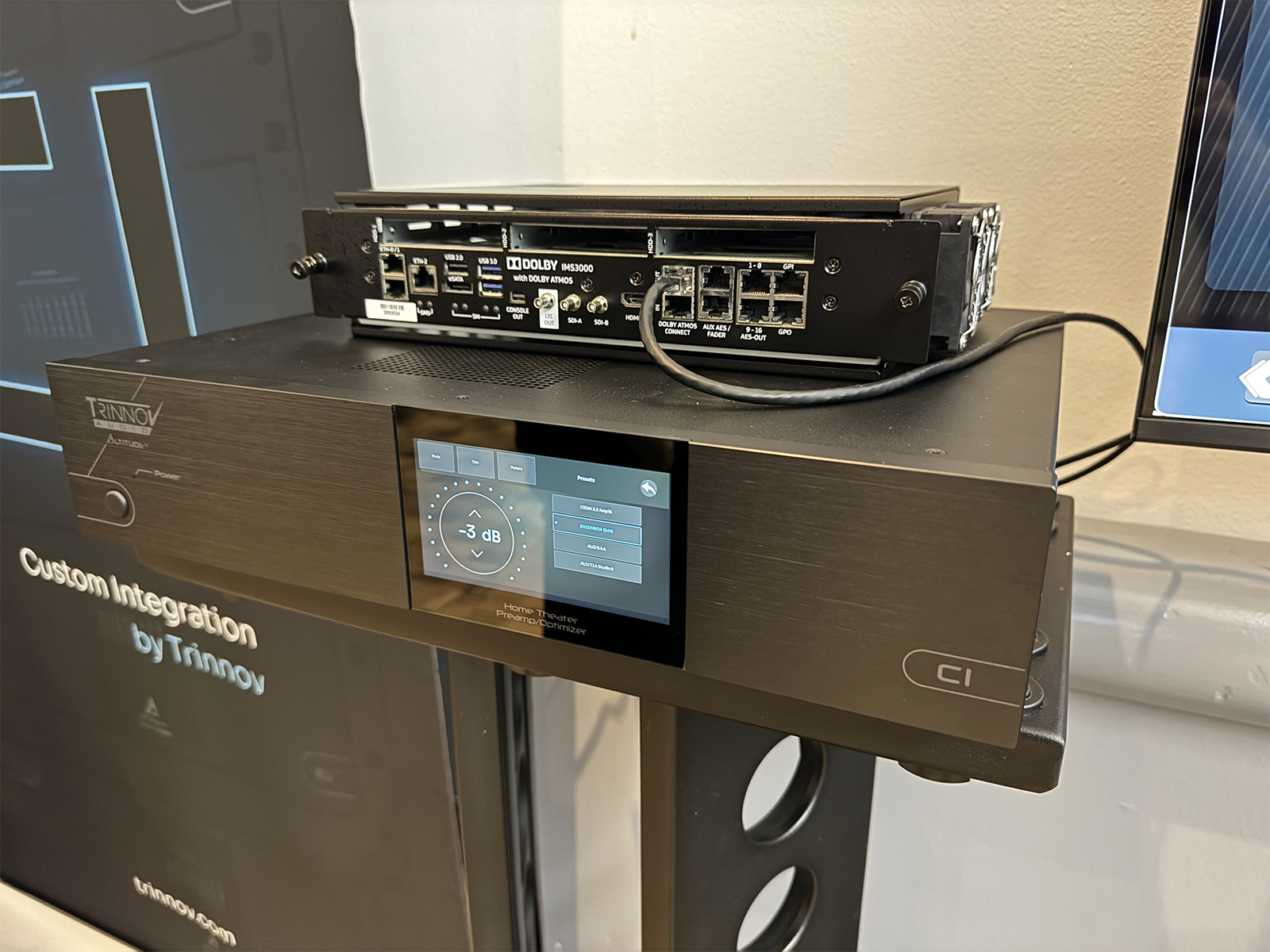 The fine folks at Trinnov had a couple of interesting things that they were premiering at CEDIA this year. First was the new Altitude CI processor, which is an updated “full-fat” Altitude processor but streamlined into a 2RU-sized chassis favored by custom installers. Some new tricks that have been added to the Altitude CI are 3 independently configurable Ethernet ports for more robust control and Audio over IP. Then there is support for a custom-designed DANTE card made for the Amplitude 16 amplifier.
The fine folks at Trinnov had a couple of interesting things that they were premiering at CEDIA this year. First was the new Altitude CI processor, which is an updated “full-fat” Altitude processor but streamlined into a 2RU-sized chassis favored by custom installers. Some new tricks that have been added to the Altitude CI are 3 independently configurable Ethernet ports for more robust control and Audio over IP. Then there is support for a custom-designed DANTE card made for the Amplitude 16 amplifier.
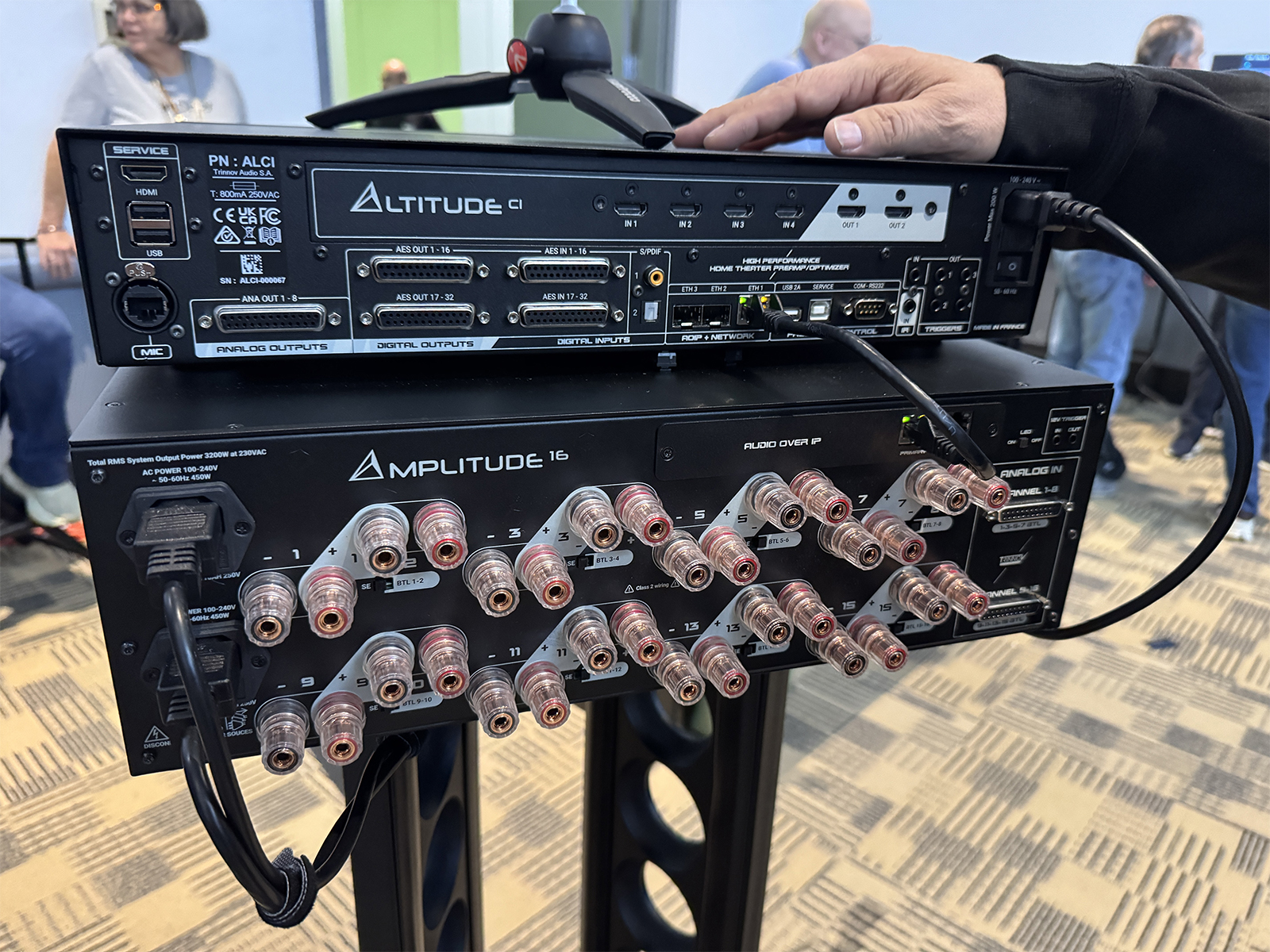 The card uses the exact same DAC architecture as found in the Altitude CI for seamless audio integration. The neat thing about this is that if one combines the Altitude CI with a DANTE-enabled Trinnov Amplitude 16 multi-channel amp, all you need is one Ethernet cable connection to carry all the audio channels from the processor to the amplifier. No more “rat’s nest” of XLR cables. Another neat trick that the new Altitude CI can do is that it can be expanded from 8 to 16 to 32 channels, all within the same chassis, via software updating. No more sending in the processor for hardware updates to expand the channel count in the future.
The card uses the exact same DAC architecture as found in the Altitude CI for seamless audio integration. The neat thing about this is that if one combines the Altitude CI with a DANTE-enabled Trinnov Amplitude 16 multi-channel amp, all you need is one Ethernet cable connection to carry all the audio channels from the processor to the amplifier. No more “rat’s nest” of XLR cables. Another neat trick that the new Altitude CI can do is that it can be expanded from 8 to 16 to 32 channels, all within the same chassis, via software updating. No more sending in the processor for hardware updates to expand the channel count in the future.
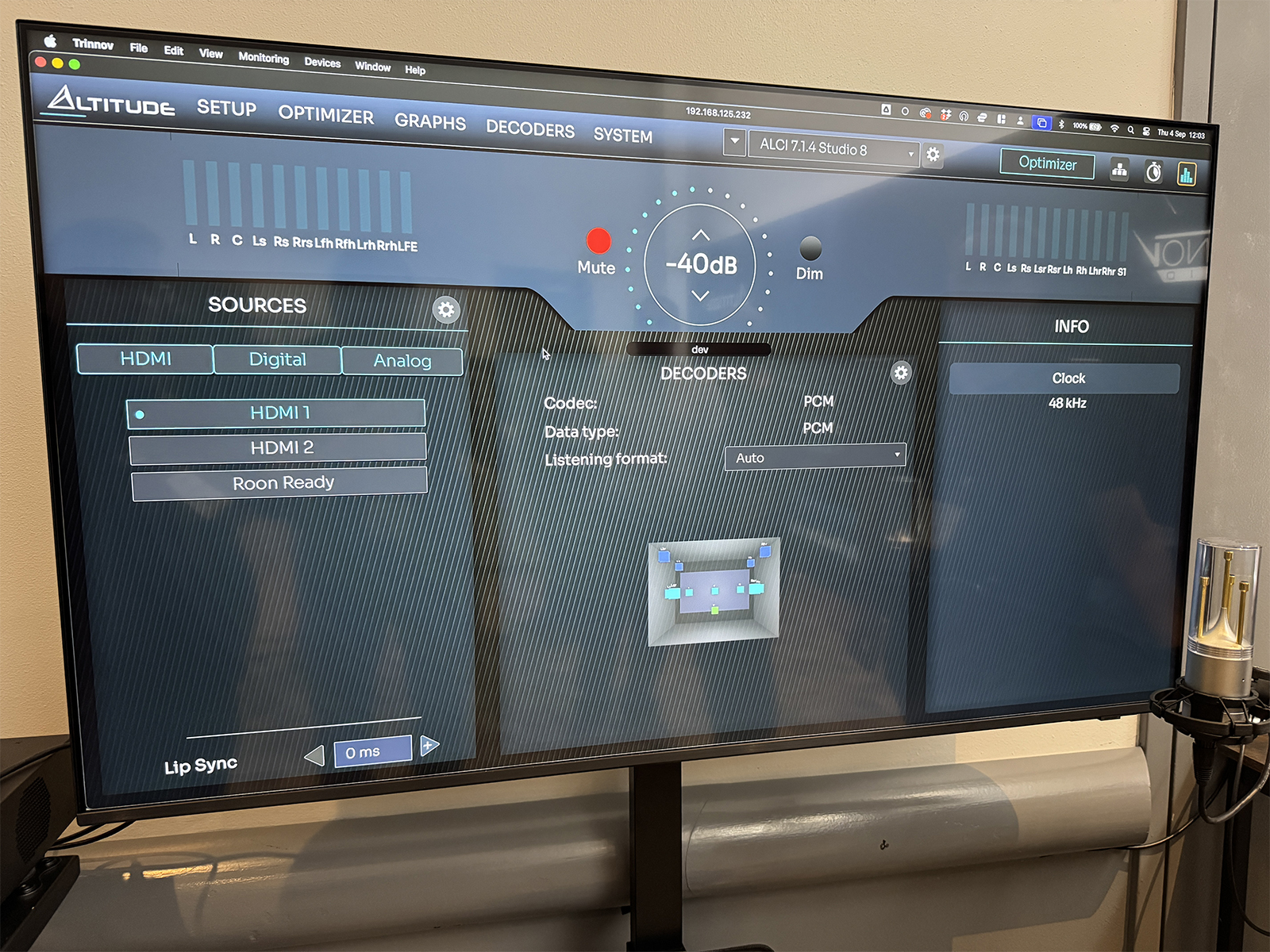
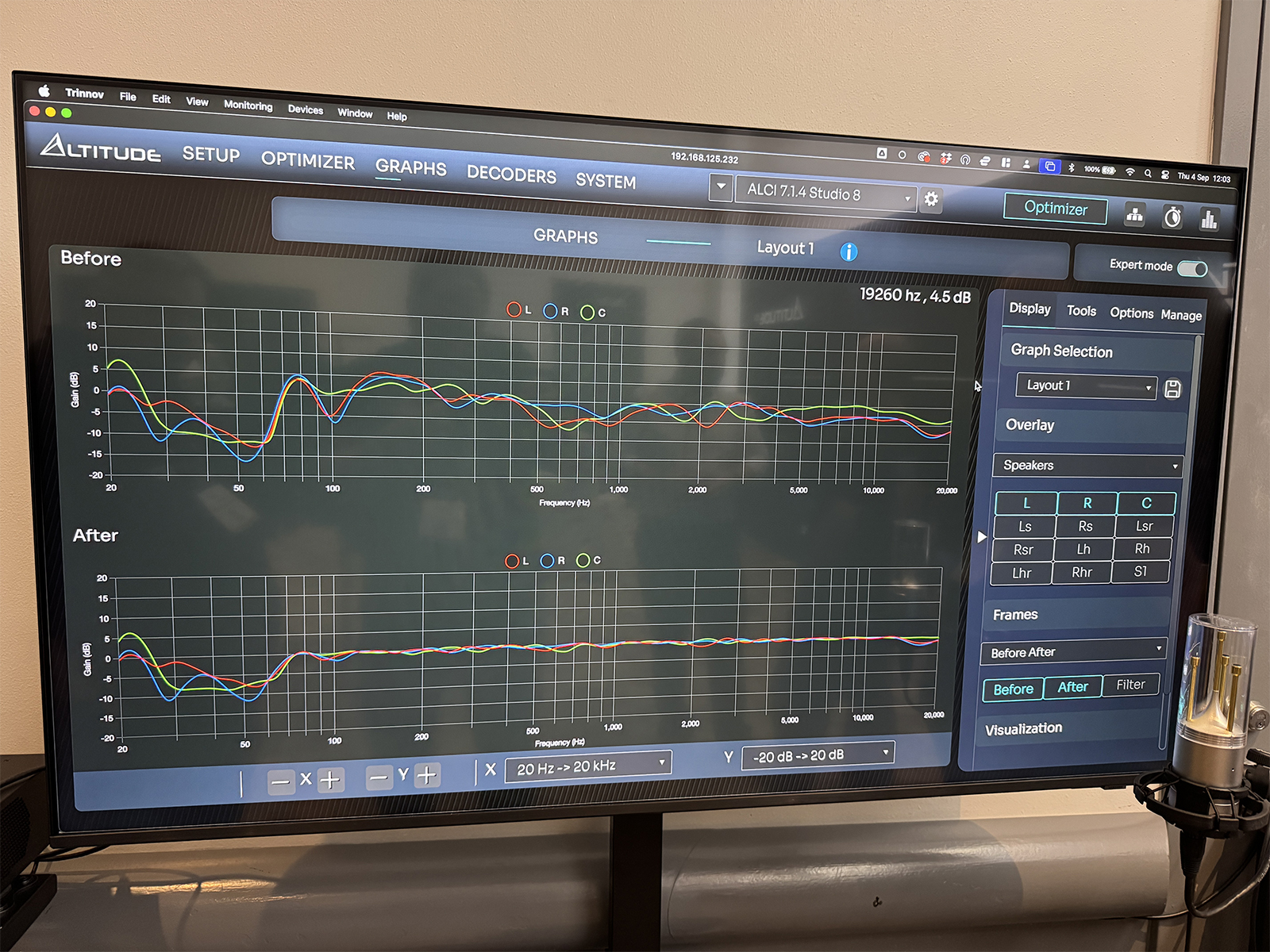
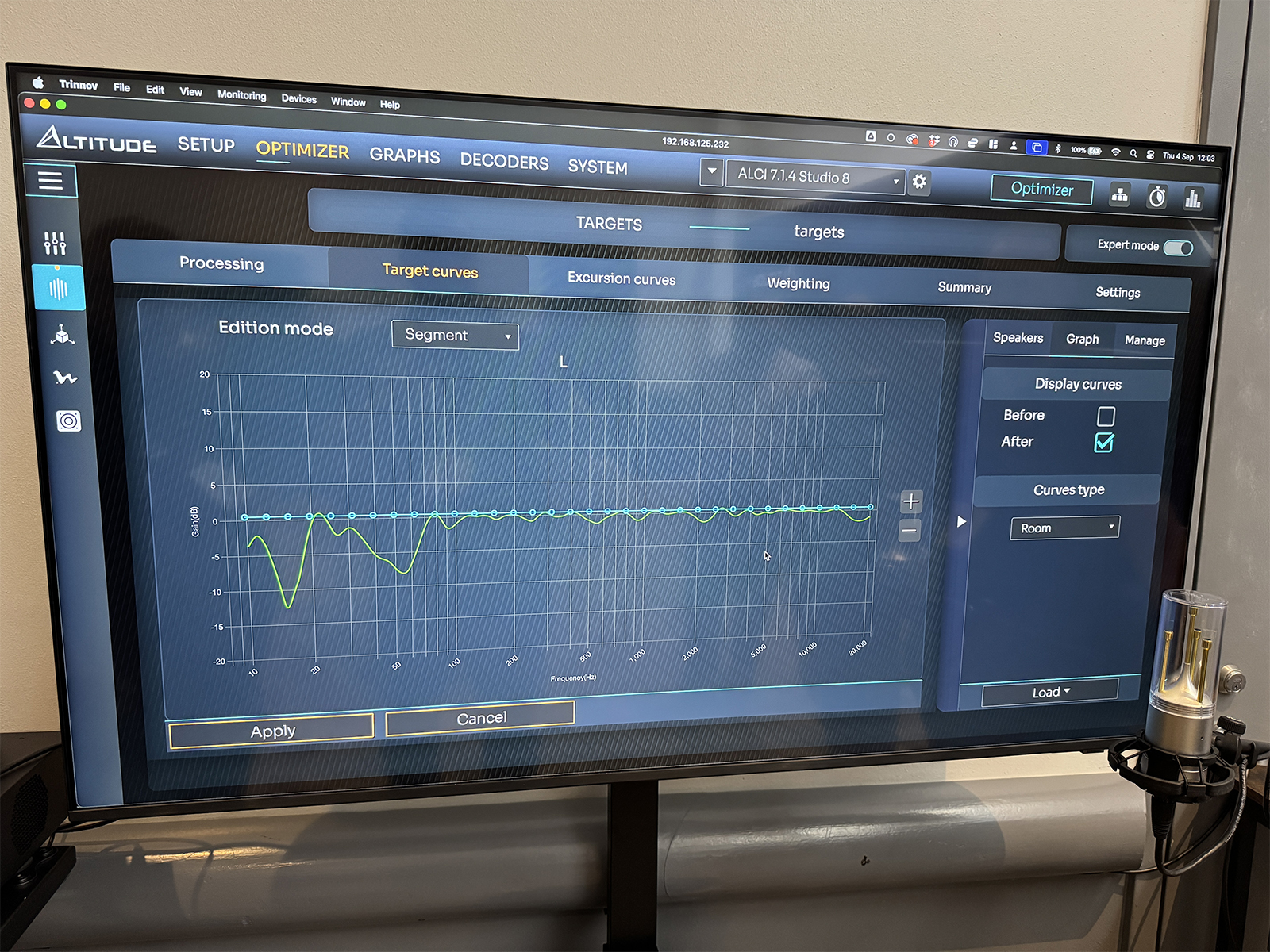
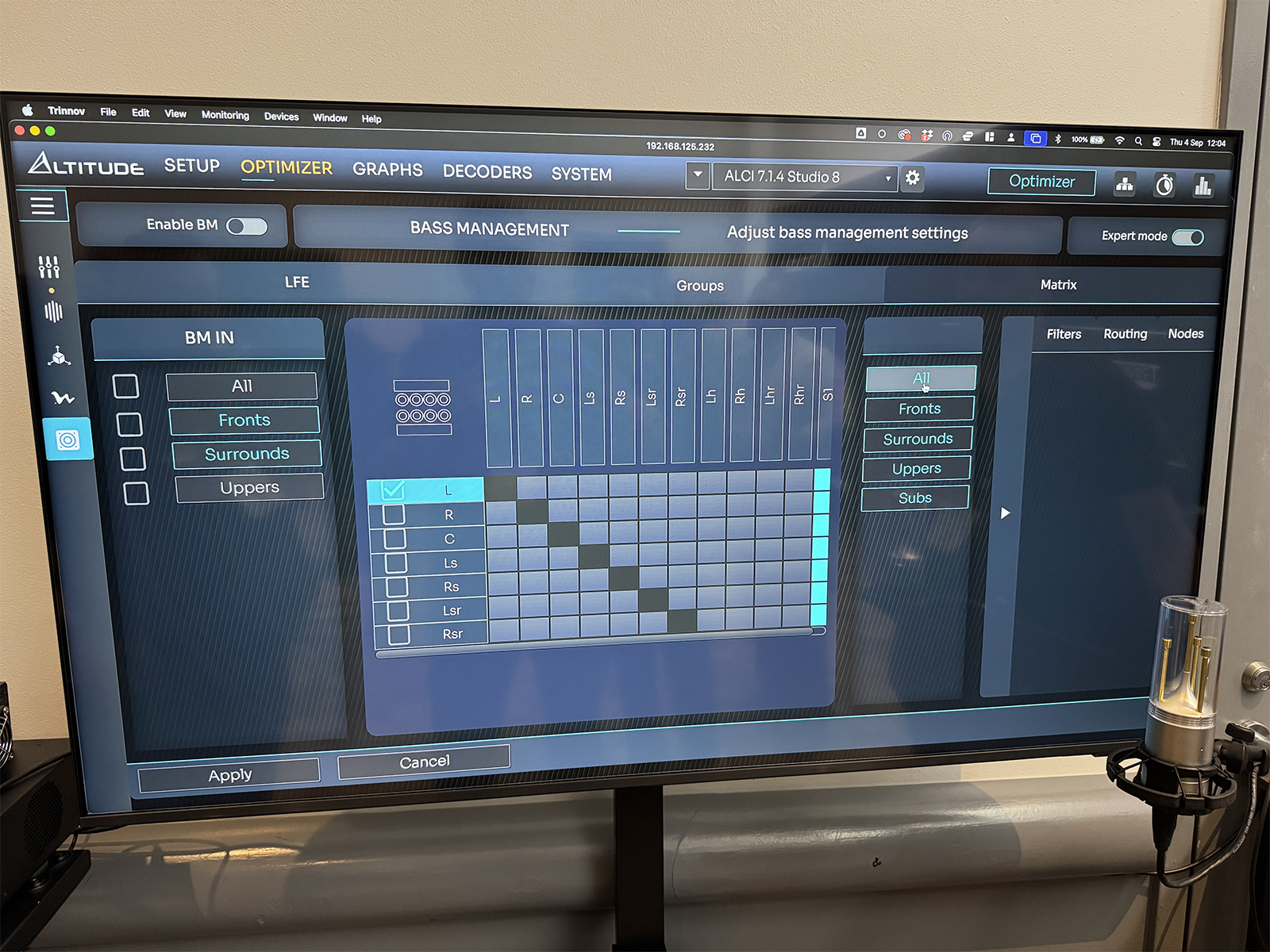
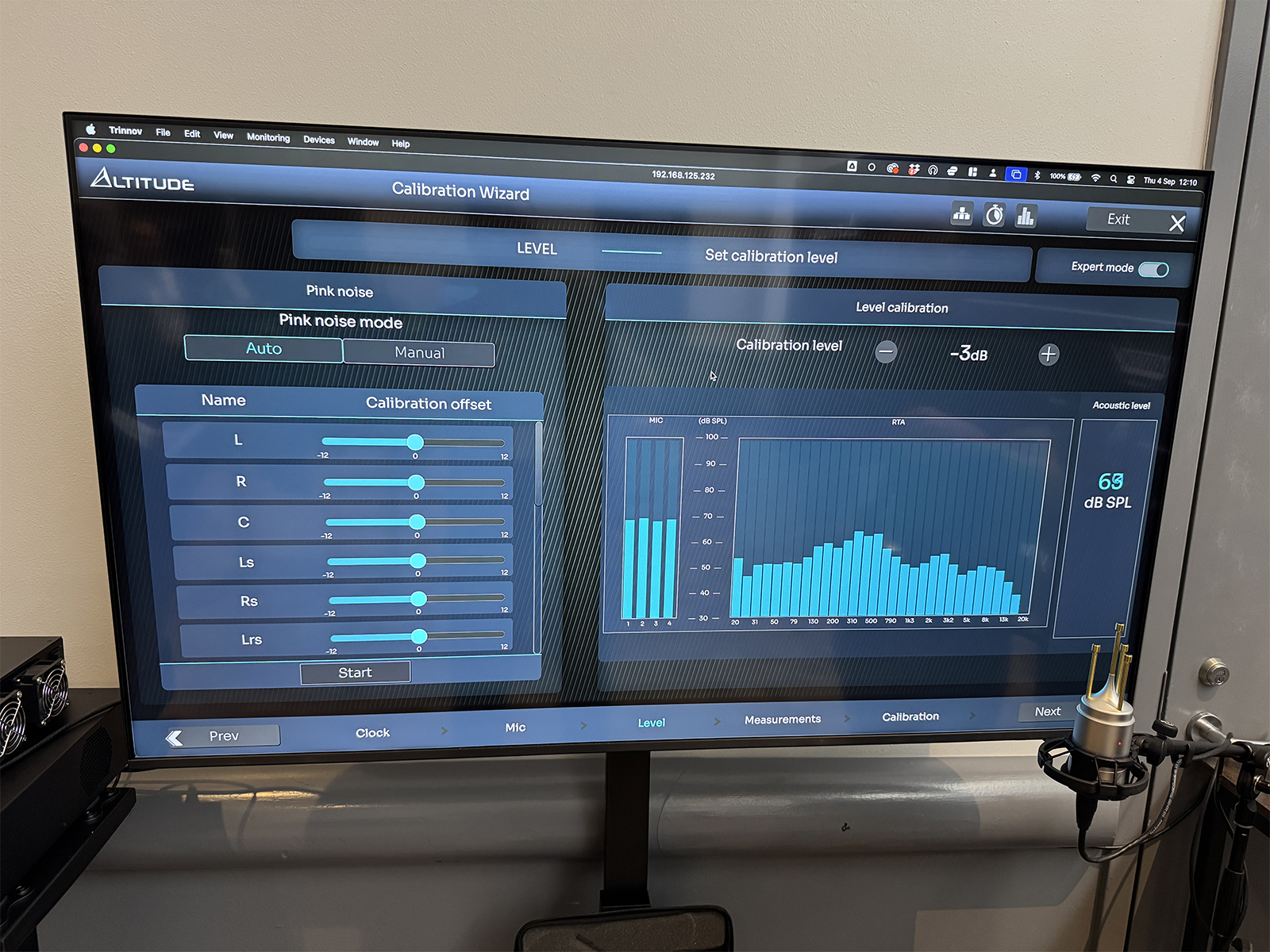 The other interesting update from the company is that they were walking show attendees through the new Trinnov OS and graphic user interface, which was completely redesigned and refreshed. Having been under development for quite some time, the new graphics are far cleaner and more user-friendly than the current ones and should be a welcome update for integrators and end-users alike. There will also be included decoding updates for Dolby ATMOS, DTS:X Pro, and AURO 3D. The update is set to be rolled out progressively, starting later this year and going into 2026. A customer/end-user will require a new calibration to be done after their systems receive the update.
The other interesting update from the company is that they were walking show attendees through the new Trinnov OS and graphic user interface, which was completely redesigned and refreshed. Having been under development for quite some time, the new graphics are far cleaner and more user-friendly than the current ones and should be a welcome update for integrators and end-users alike. There will also be included decoding updates for Dolby ATMOS, DTS:X Pro, and AURO 3D. The update is set to be rolled out progressively, starting later this year and going into 2026. A customer/end-user will require a new calibration to be done after their systems receive the update.
SVS
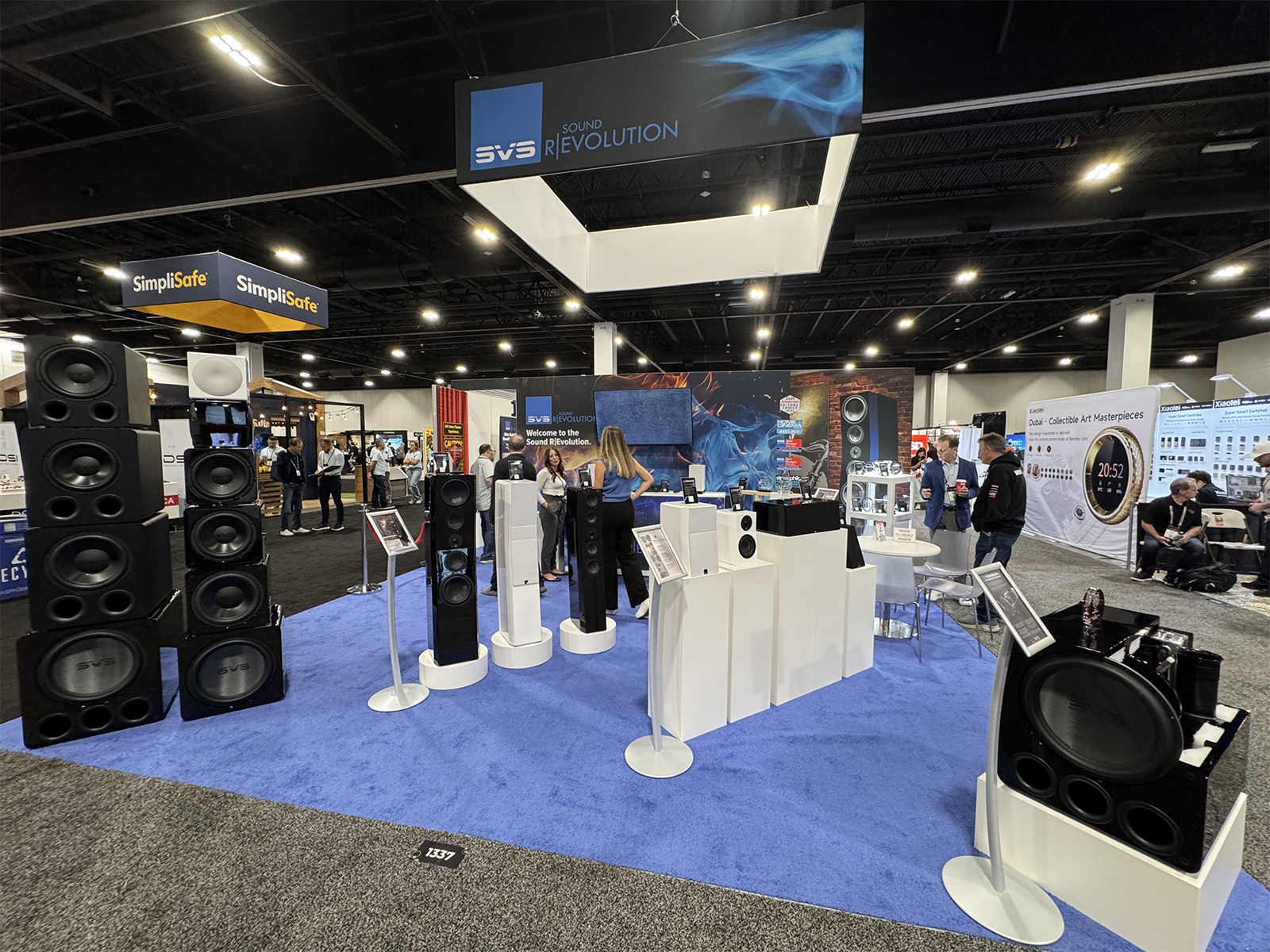
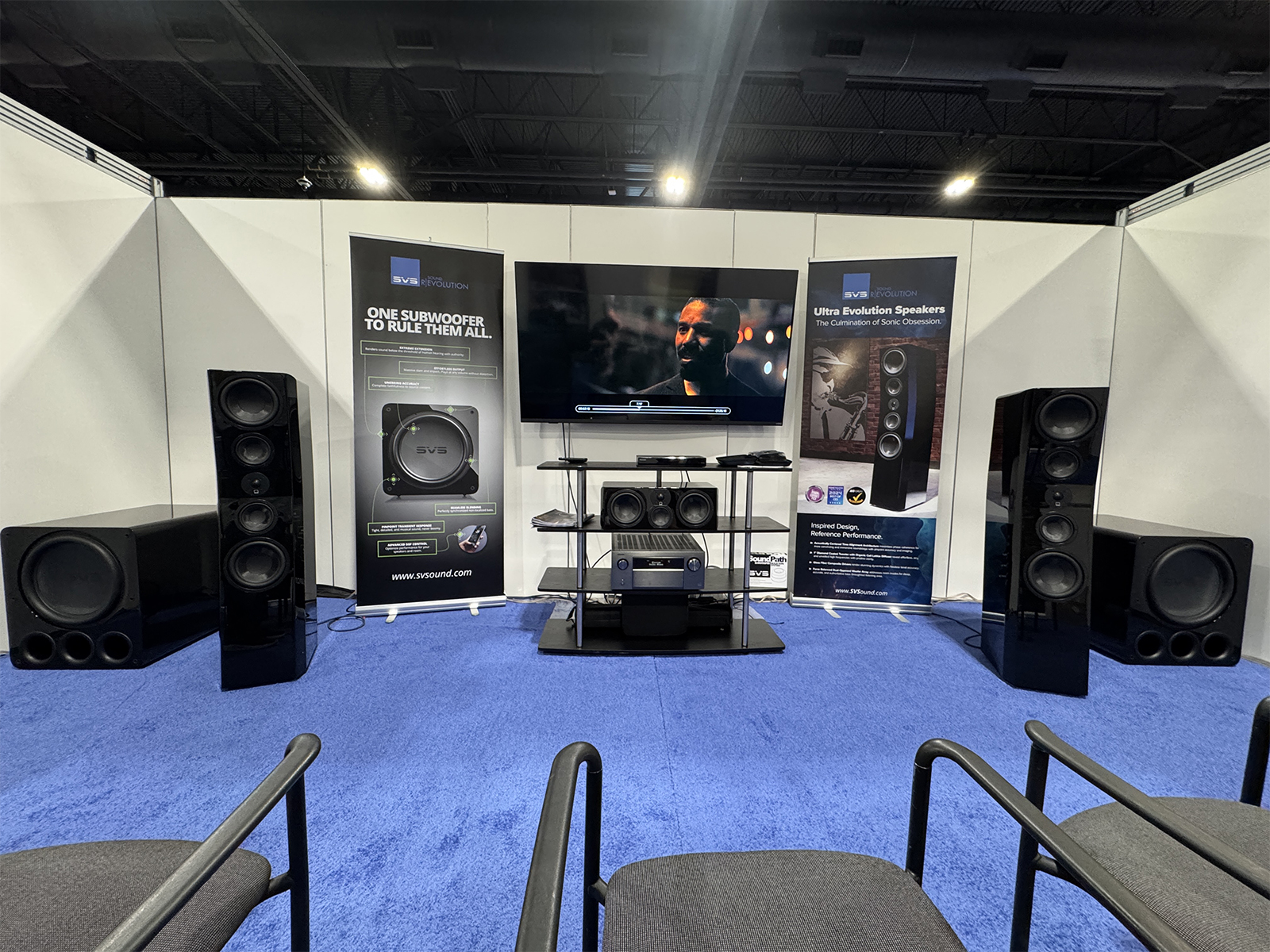 As fun as all the high-dollar and megabuck systems that clamor for the lion’s share of attention at CEDIA are, it’s nice to walk into a great-sounding, down-to-earth demo room stocked with solid equipment I can actually afford.
As fun as all the high-dollar and megabuck systems that clamor for the lion’s share of attention at CEDIA are, it’s nice to walk into a great-sounding, down-to-earth demo room stocked with solid equipment I can actually afford.
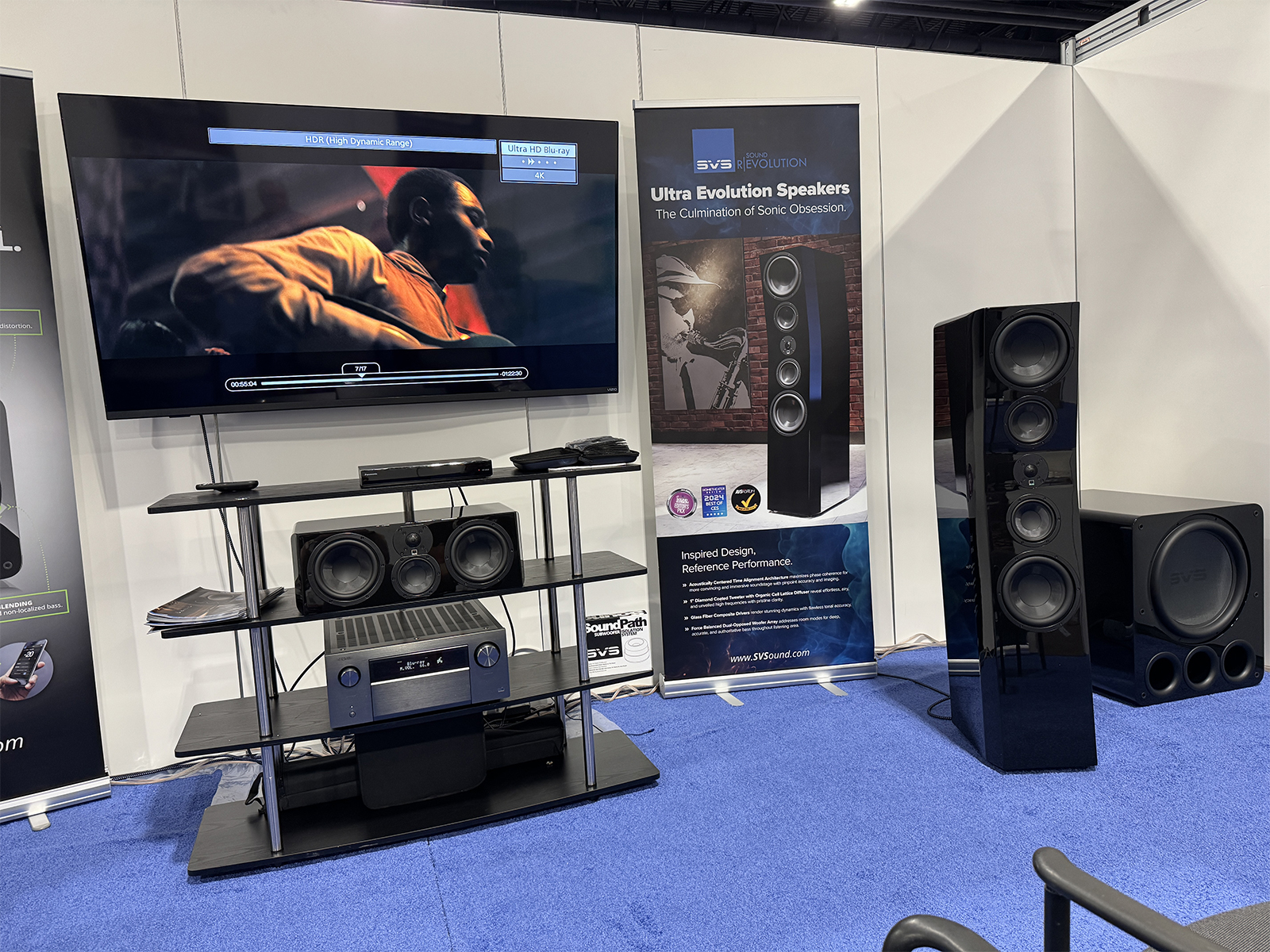
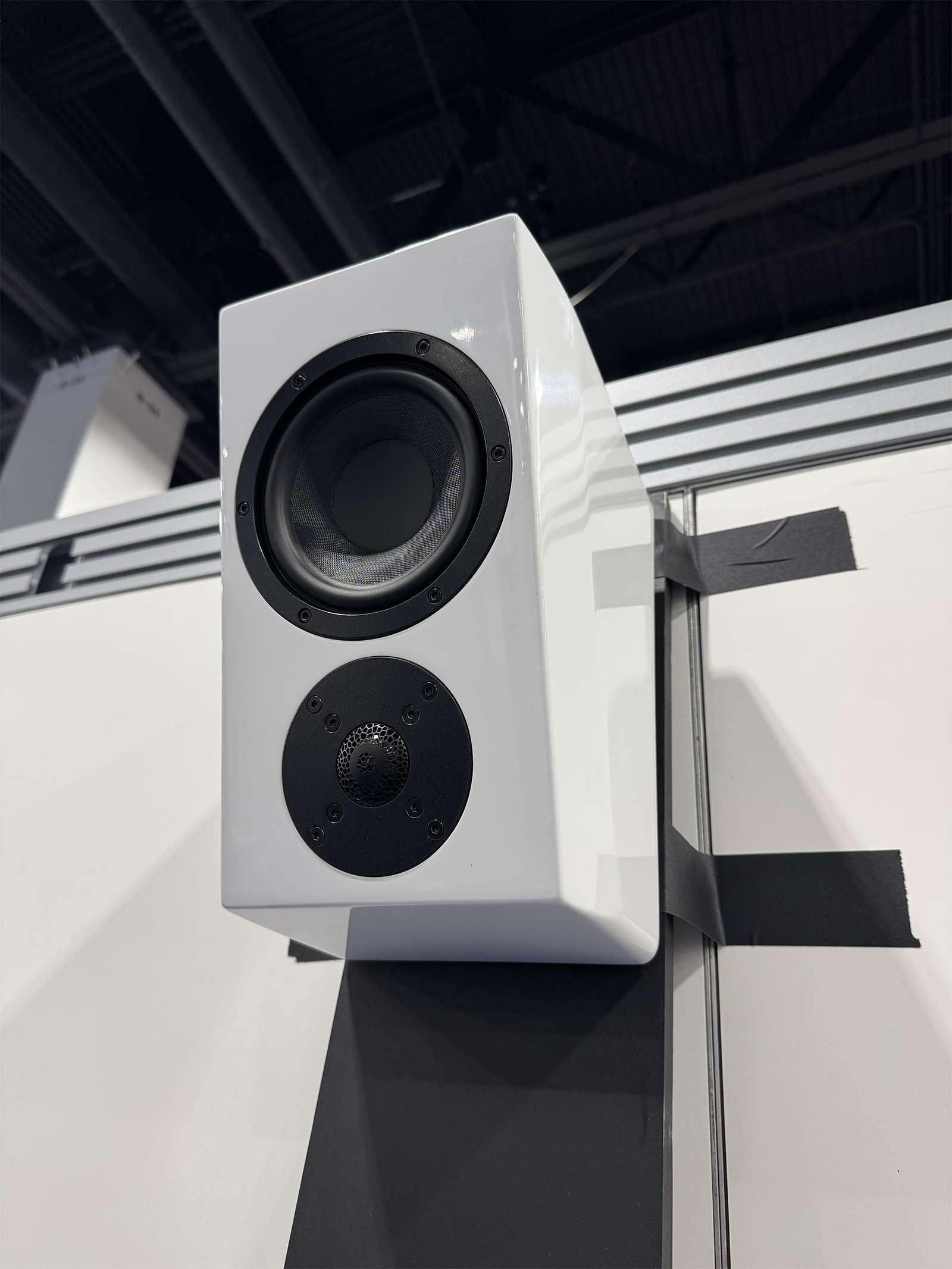
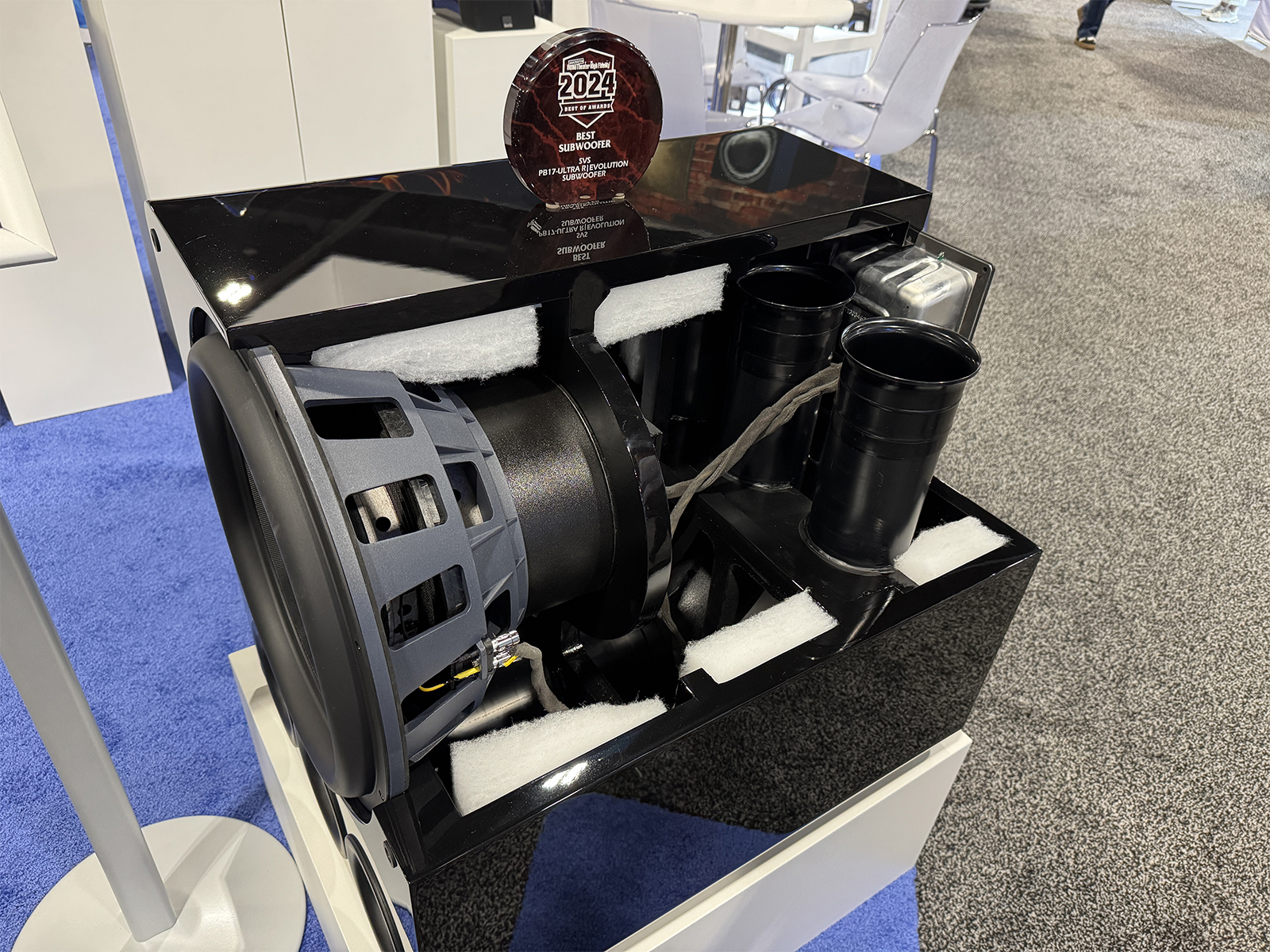 This was the case with SVS and their 5.2.4 channel Ultra Evolution-based surround system. Great sound that held its own in far more expensive company, for people with real-world budgets. There was an outstanding sounding demo clip from the movie “Sinners’ that was a particular standout.
This was the case with SVS and their 5.2.4 channel Ultra Evolution-based surround system. Great sound that held its own in far more expensive company, for people with real-world budgets. There was an outstanding sounding demo clip from the movie “Sinners’ that was a particular standout.
Magnetar
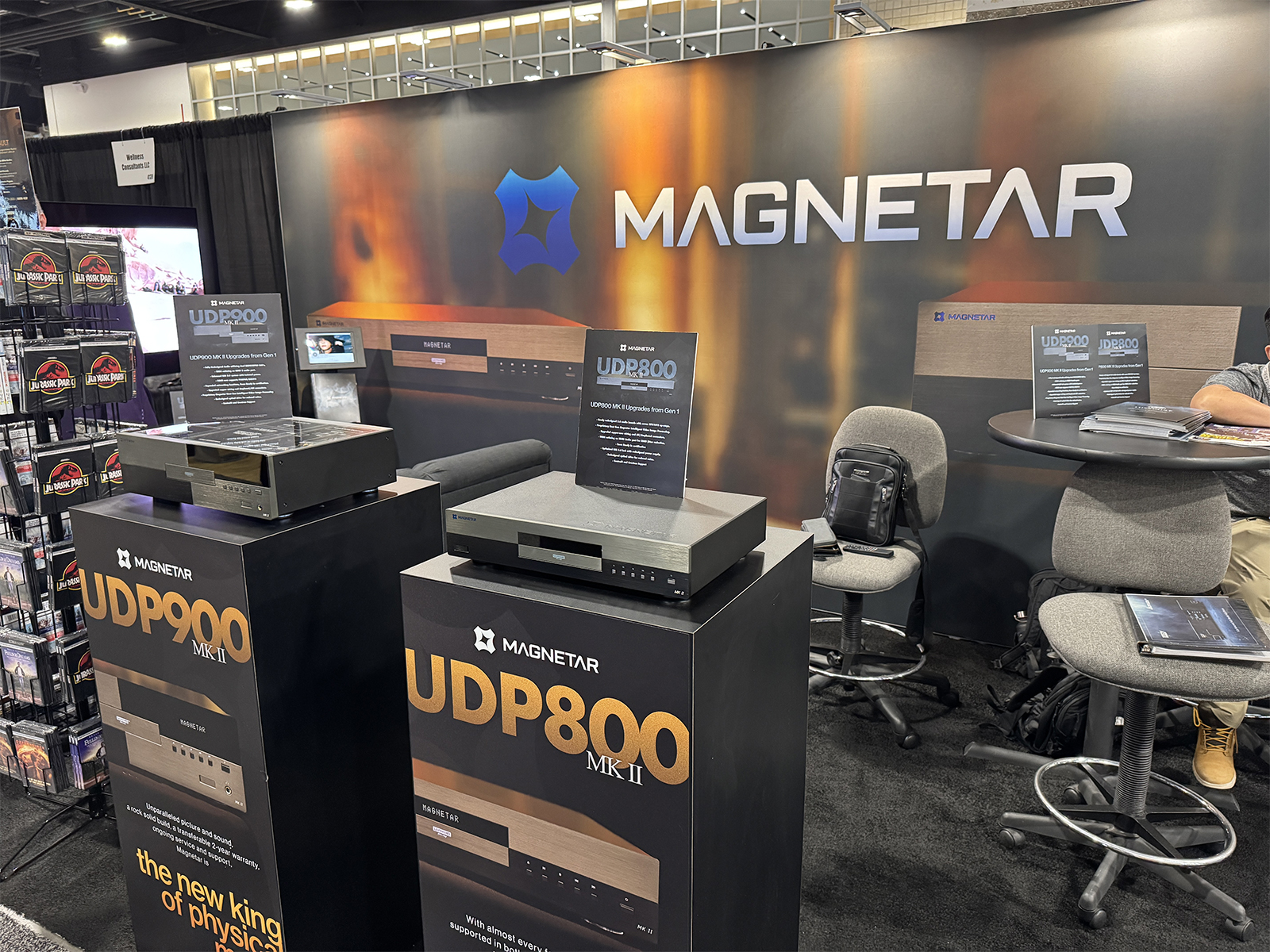 In this increasingly digital streaming and cloud-based world, the team at Magnetar has been doing the Lord’s work in keeping physical media players, namely the universal disc player type, alive. And for people like me who have significant disc collections and are stubbornly determined to keep purchasing physical media, that is a big deal. At CEDIA, the company was showing the final production versions of their second-generation universal disc players, the UDP800 Mk II and the UDP900 Mk II.
In this increasingly digital streaming and cloud-based world, the team at Magnetar has been doing the Lord’s work in keeping physical media players, namely the universal disc player type, alive. And for people like me who have significant disc collections and are stubbornly determined to keep purchasing physical media, that is a big deal. At CEDIA, the company was showing the final production versions of their second-generation universal disc players, the UDP800 Mk II and the UDP900 Mk II.
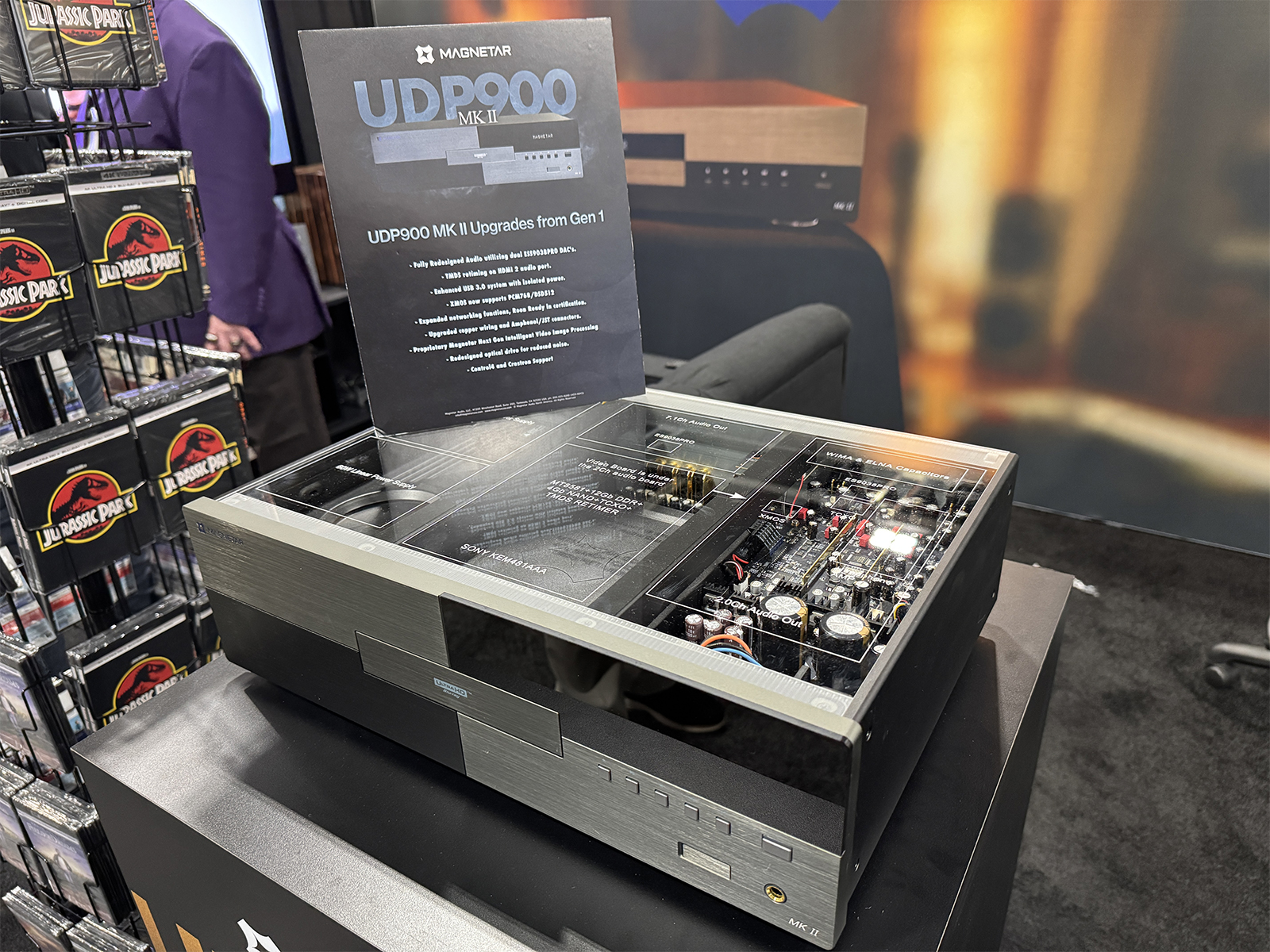
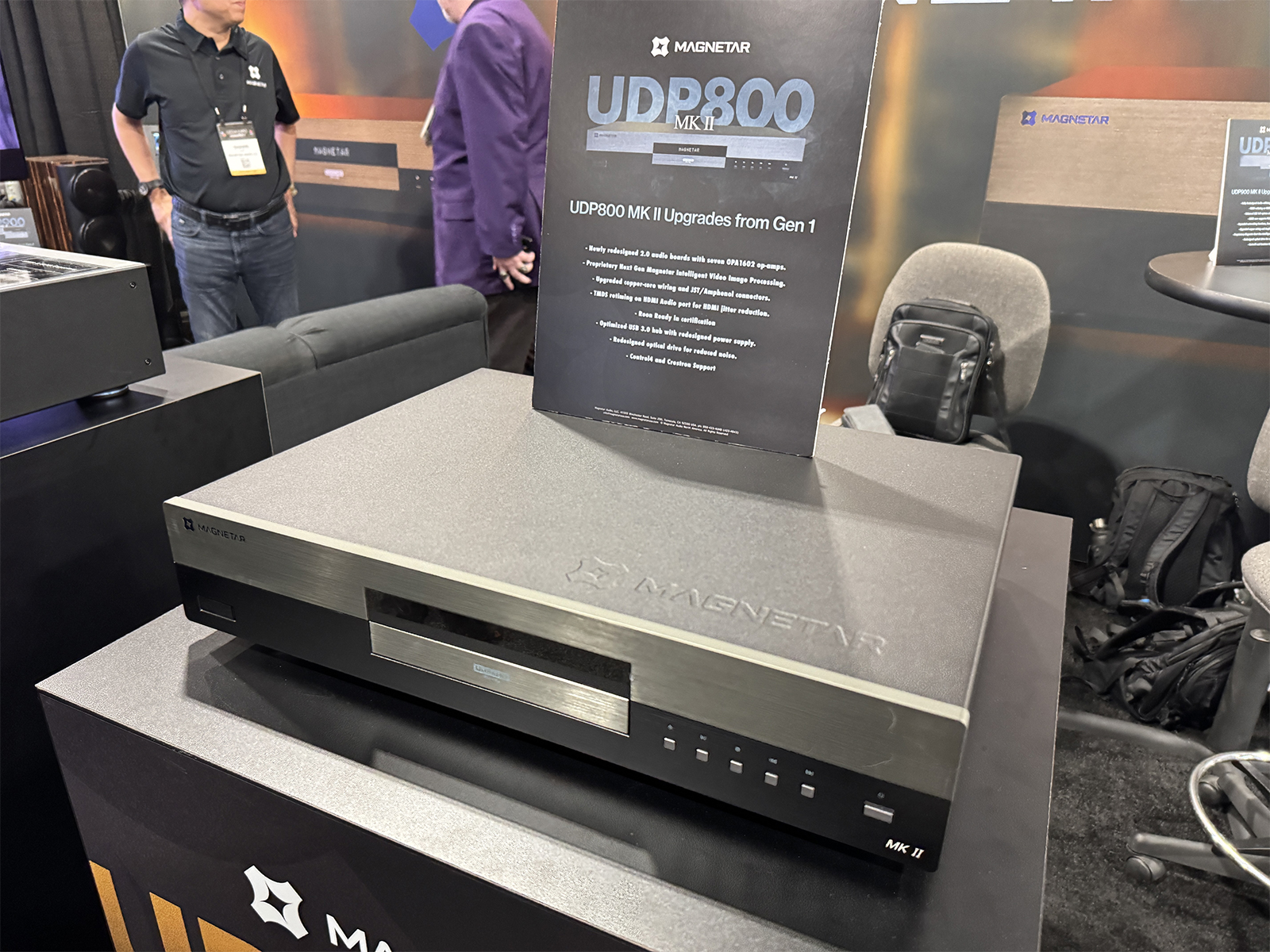 While the exteriors look very much the same as the first-gen units, Magnetar engineers have spent plenty of time “under the hood” of both players, making updates and refinements. These include redesigning the audio boards with upgraded op-amps and DACs, improved clocking and jitter reduction over HDMI, redesigned USB audio sections, upgraded disc drive mechanism, updated video processing algorithms, Roon Ready certification, Control4 and Crestron home automation system support, etc. I have also been assured that the analog XLR distortion issue we discovered when bench testing the first-gen UDP900 has been specifically addressed.
While the exteriors look very much the same as the first-gen units, Magnetar engineers have spent plenty of time “under the hood” of both players, making updates and refinements. These include redesigning the audio boards with upgraded op-amps and DACs, improved clocking and jitter reduction over HDMI, redesigned USB audio sections, upgraded disc drive mechanism, updated video processing algorithms, Roon Ready certification, Control4 and Crestron home automation system support, etc. I have also been assured that the analog XLR distortion issue we discovered when bench testing the first-gen UDP900 has been specifically addressed.
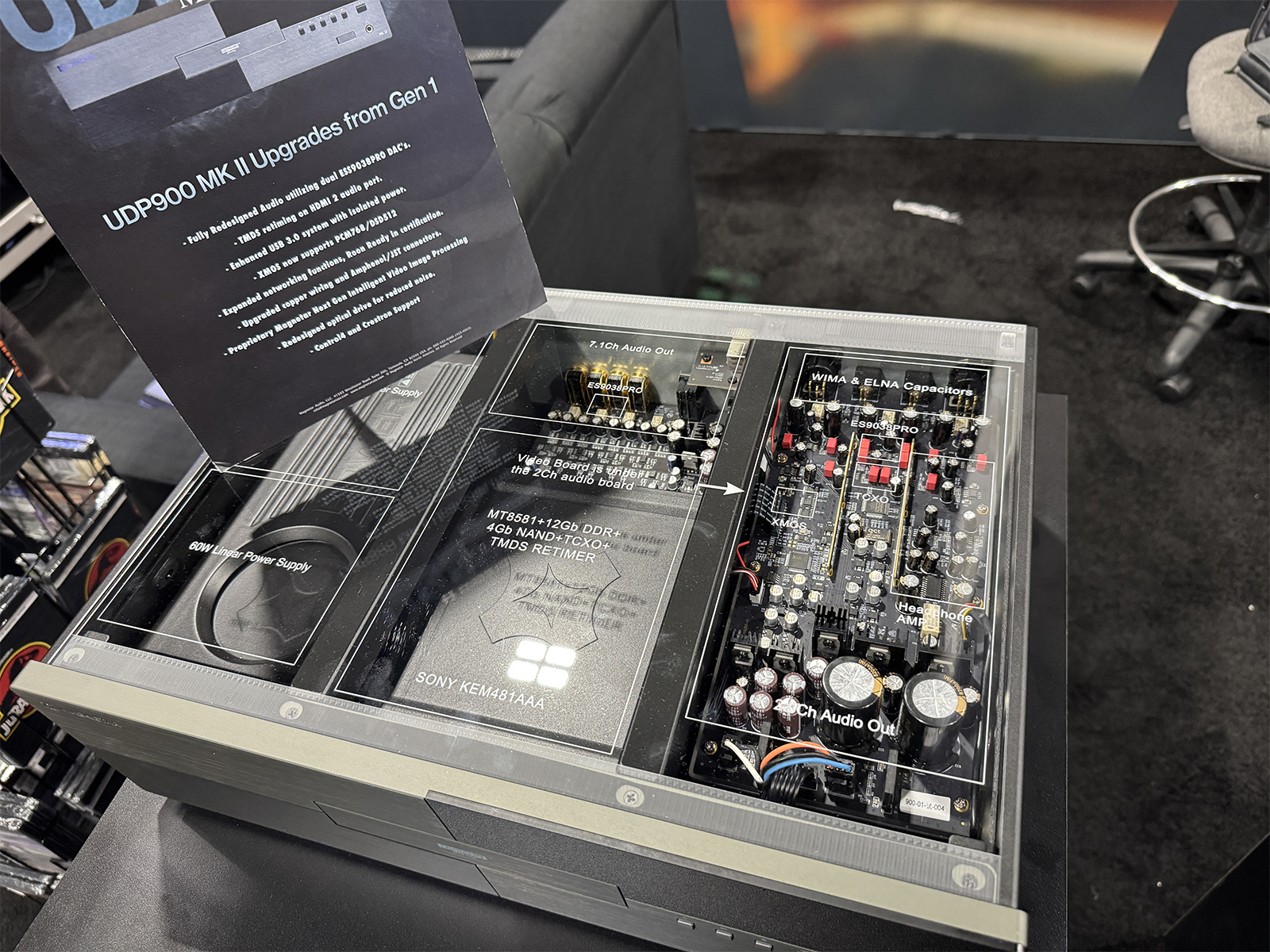 As the original players did, these new ones will continue to play any form of 5-inch silver platter you can feed them, whether stereo or multichannel (yes, even DVD-Audio). Audio and video file support from attached drives and USB sticks is robust, especially for those of you who like your MKV, DSF, and DFF files served up without a hitch. Availability for both players will be Q4 of this year, with pricing expected at $3,299 for the UDP900 Mk II and $1,799 for the UDP800 Mk II. I wonder if Magnetar would ever be interested in bringing back the LaserDisc player? Just a thought…
As the original players did, these new ones will continue to play any form of 5-inch silver platter you can feed them, whether stereo or multichannel (yes, even DVD-Audio). Audio and video file support from attached drives and USB sticks is robust, especially for those of you who like your MKV, DSF, and DFF files served up without a hitch. Availability for both players will be Q4 of this year, with pricing expected at $3,299 for the UDP900 Mk II and $1,799 for the UDP800 Mk II. I wonder if Magnetar would ever be interested in bringing back the LaserDisc player? Just a thought…
Playback Distribution
Playback Distribution had a significant footprint at CEDIA this year, spotlighting several brands both at their booth and in some of the show’s dedicated sound rooms.
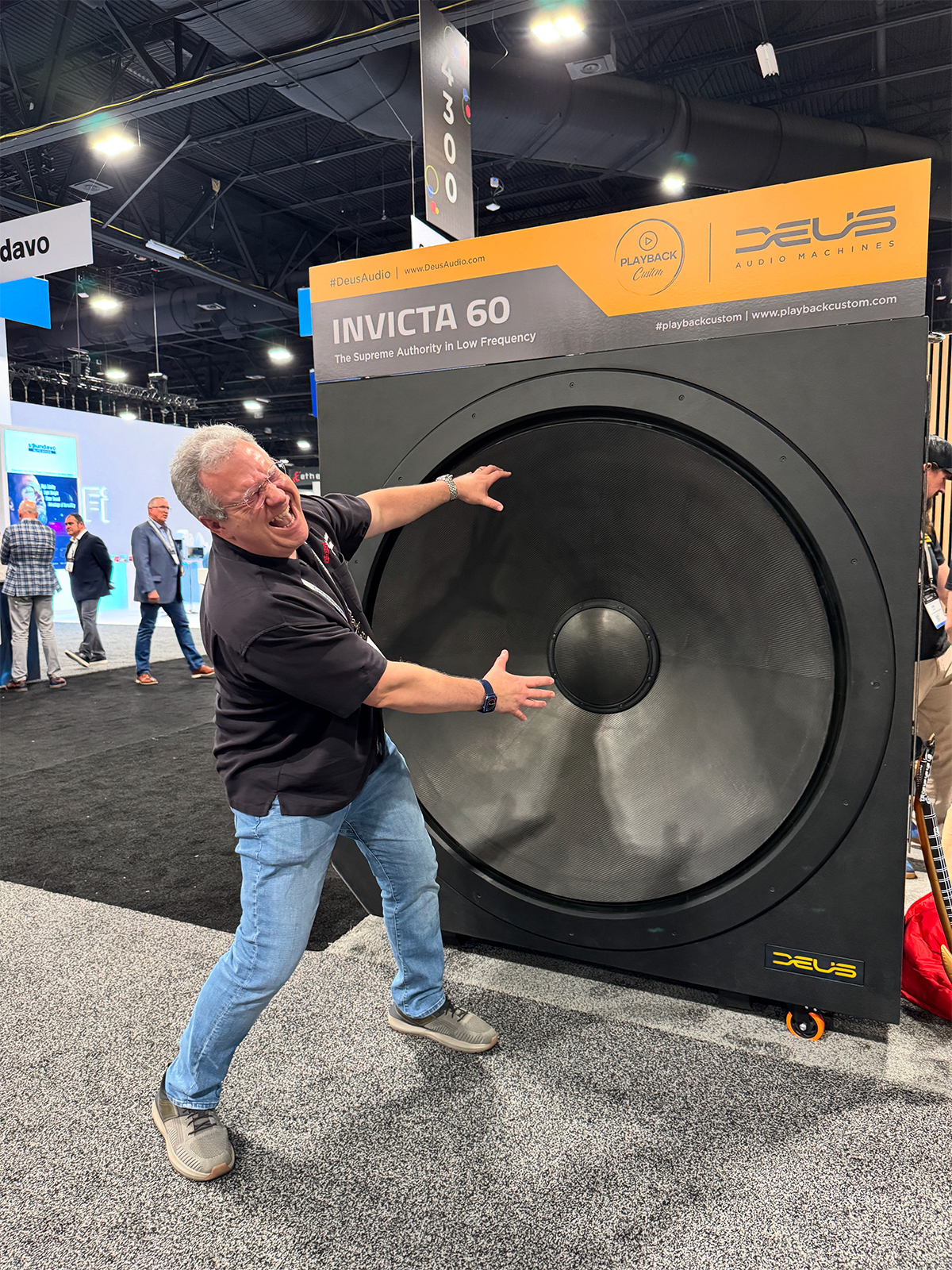 These included Krix Audio, PMC, Velodyne Acoustics, Advance Paris, MC2, DEUS Audio Machines, Cornered Audio, Silent Angel, and AudioSolutions.
These included Krix Audio, PMC, Velodyne Acoustics, Advance Paris, MC2, DEUS Audio Machines, Cornered Audio, Silent Angel, and AudioSolutions.
Krix Audio
Based out of Adelaide, Australia, Krix Audio has been designing and building loudspeakers for the commercial and HiFi markets for over 50 years.
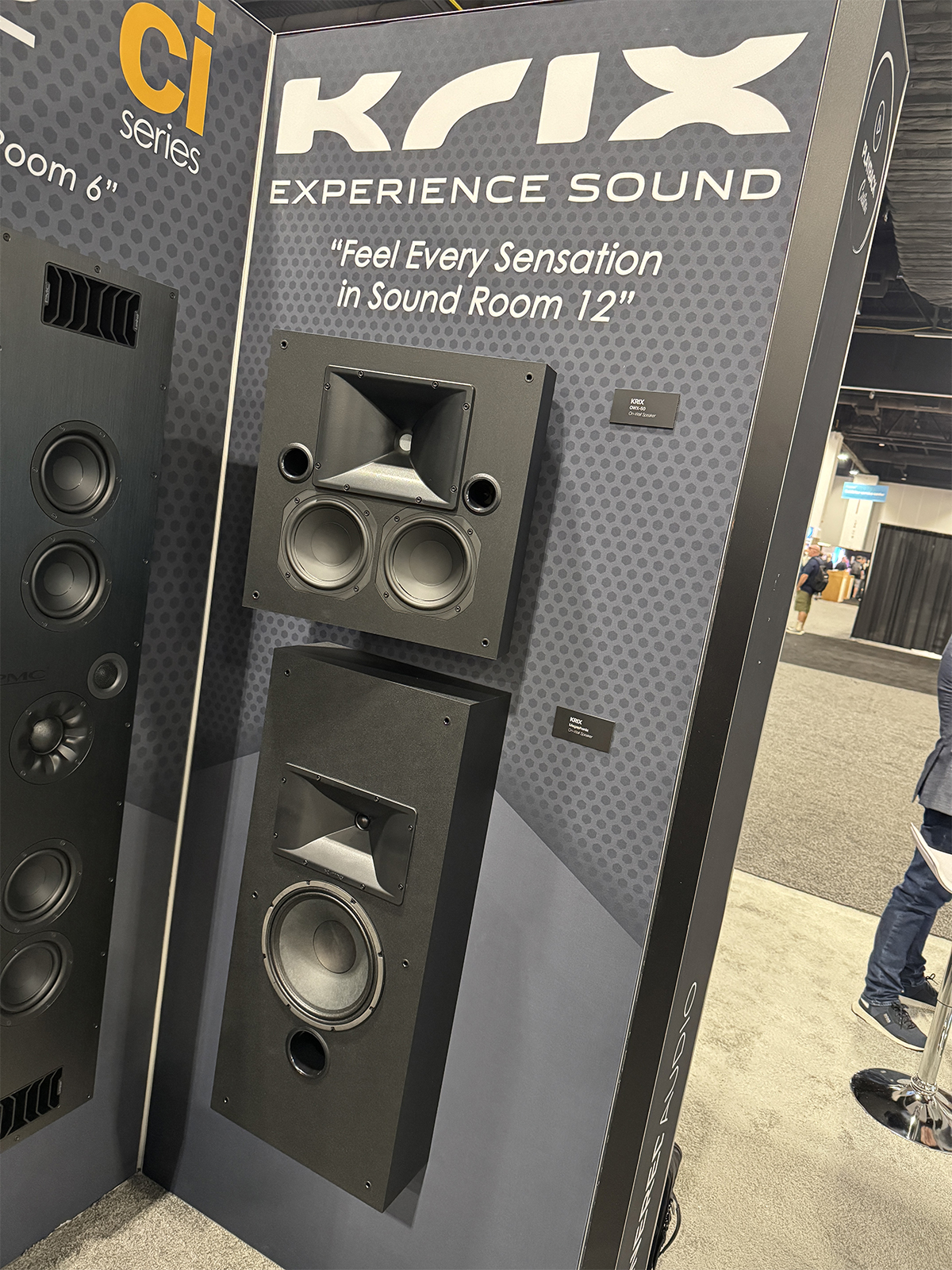
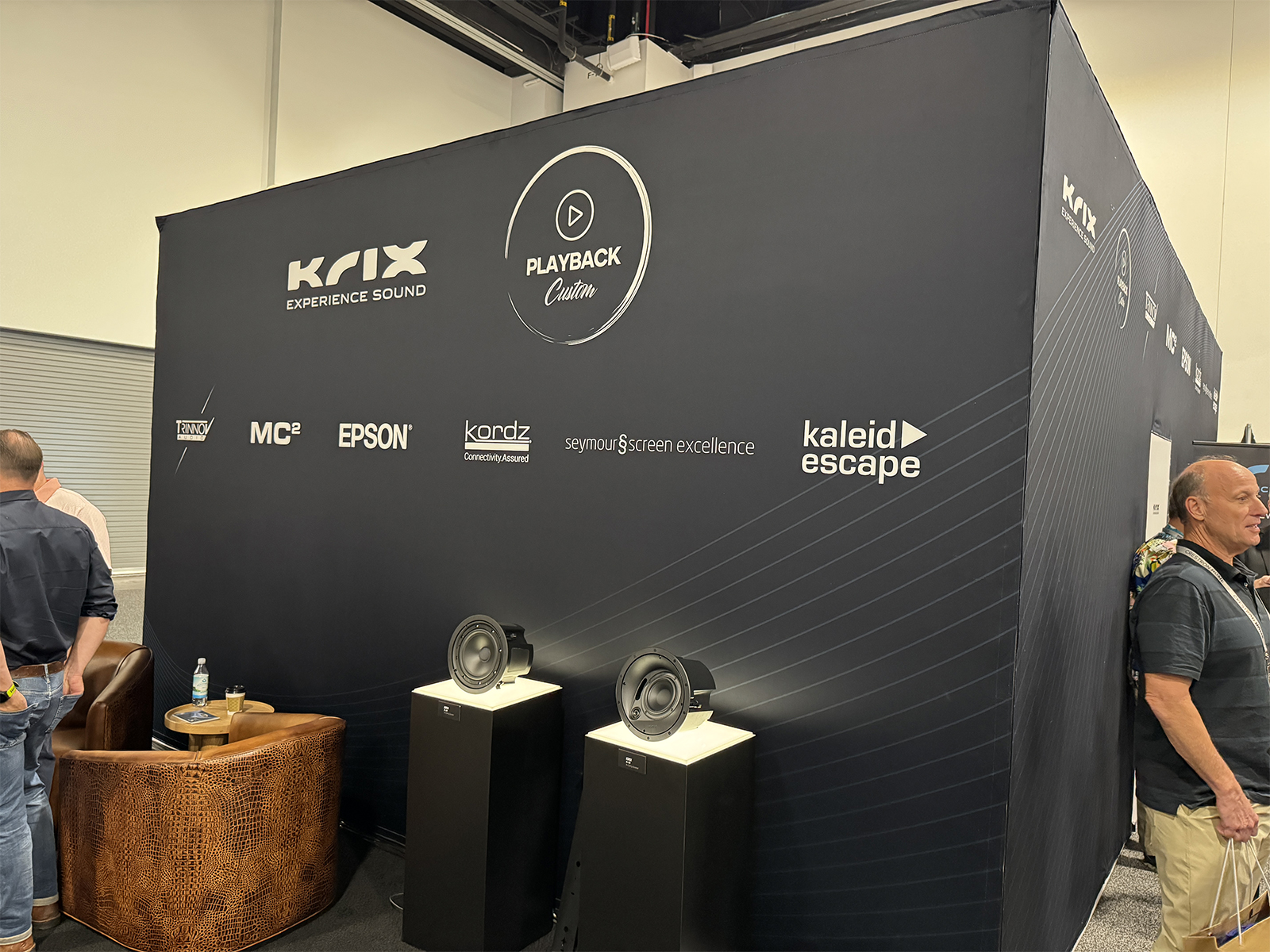 The company featured a high-quality 11.6.6 channel speaker system in one of the dedicated sound rooms. It consisted of three Krix MX-30i 2-way speakers for the front L/C/R channels, eight Krix Hyperphonix 45 Cinema 2-way speakers spread across the sides and rear of the room, six more Hyperphonix 45 for the height channels, and six Krix Infrasonic 18-inch subwoofers (four in front and two in back).
The company featured a high-quality 11.6.6 channel speaker system in one of the dedicated sound rooms. It consisted of three Krix MX-30i 2-way speakers for the front L/C/R channels, eight Krix Hyperphonix 45 Cinema 2-way speakers spread across the sides and rear of the room, six more Hyperphonix 45 for the height channels, and six Krix Infrasonic 18-inch subwoofers (four in front and two in back).
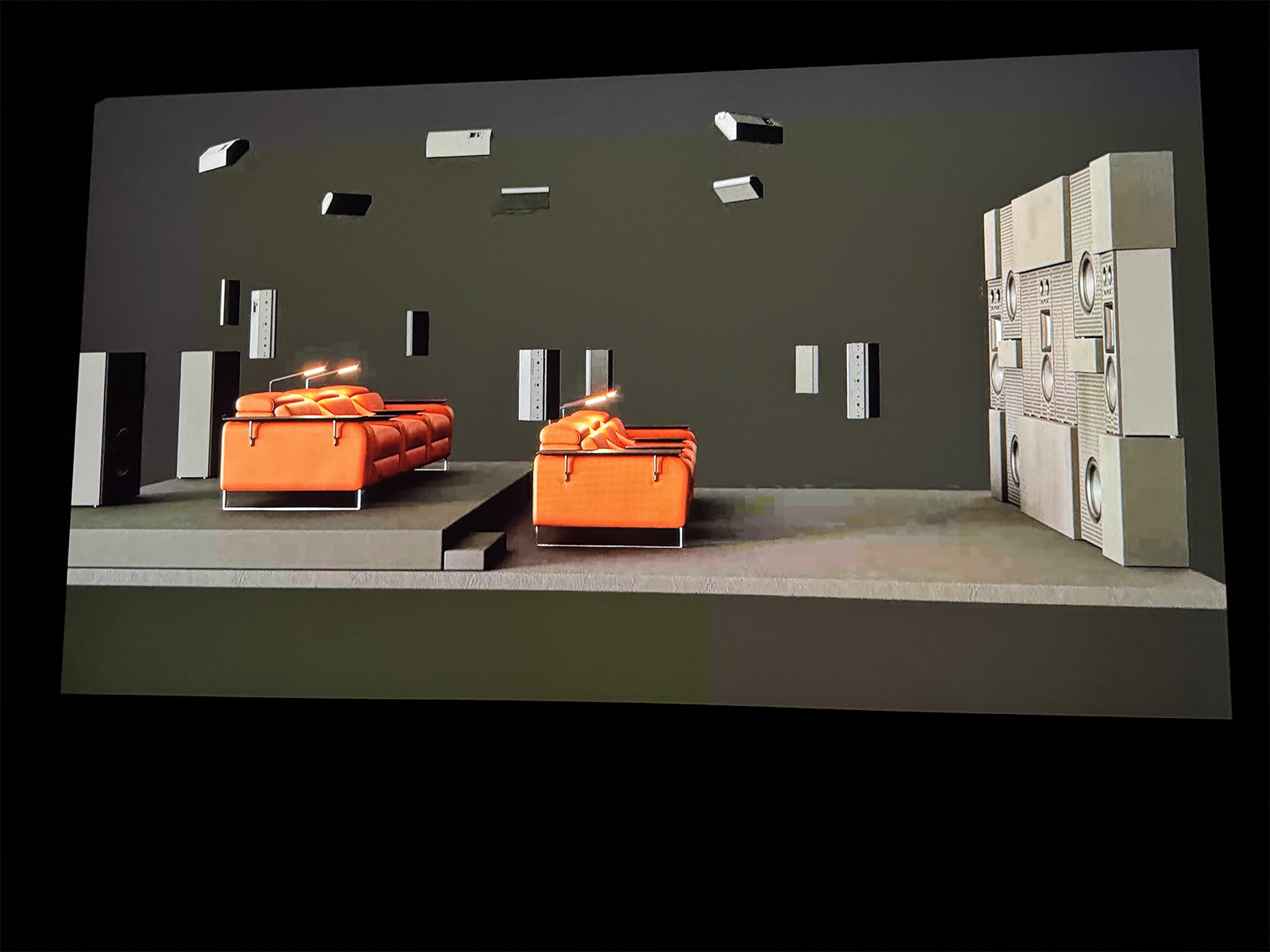
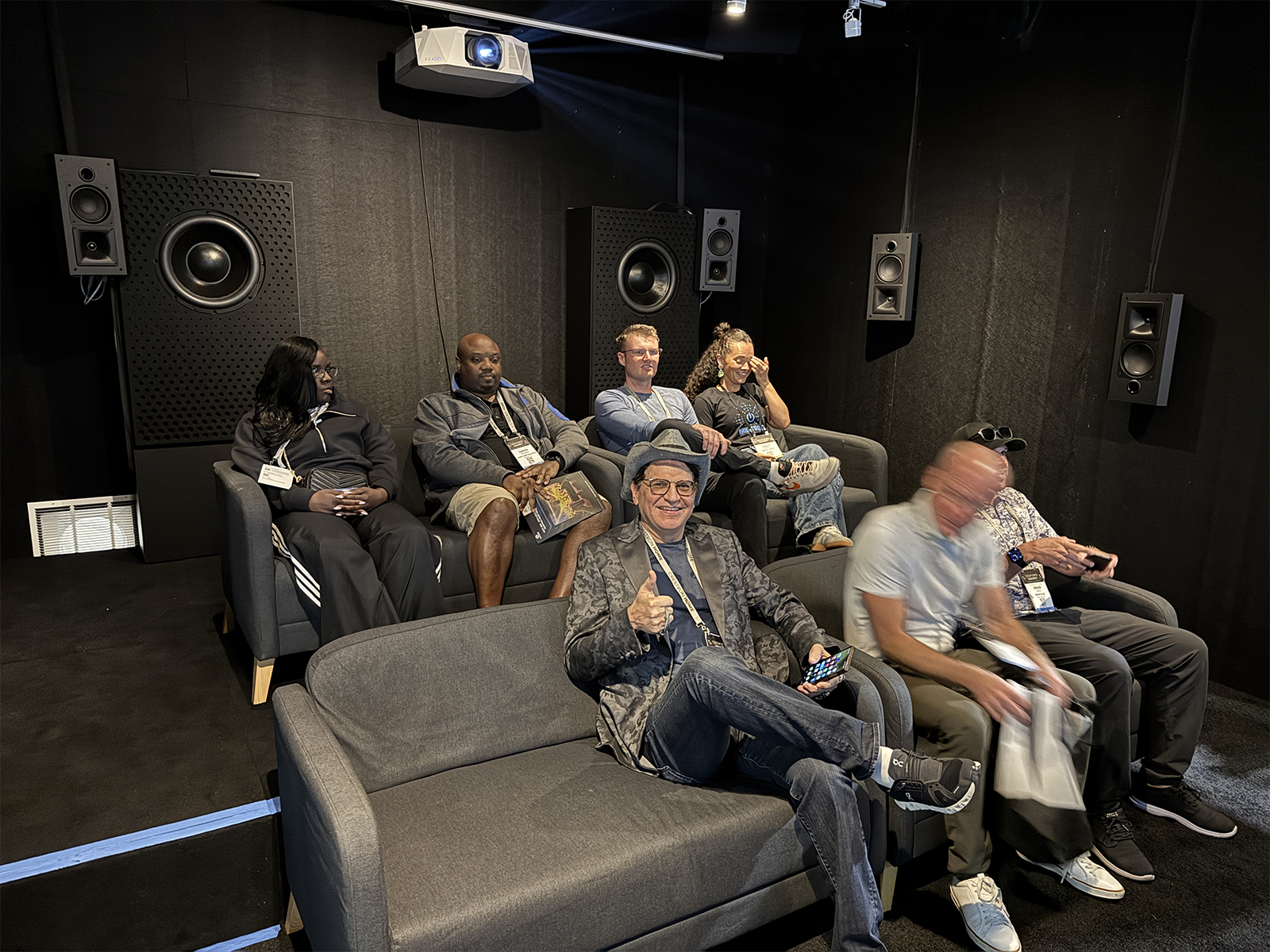
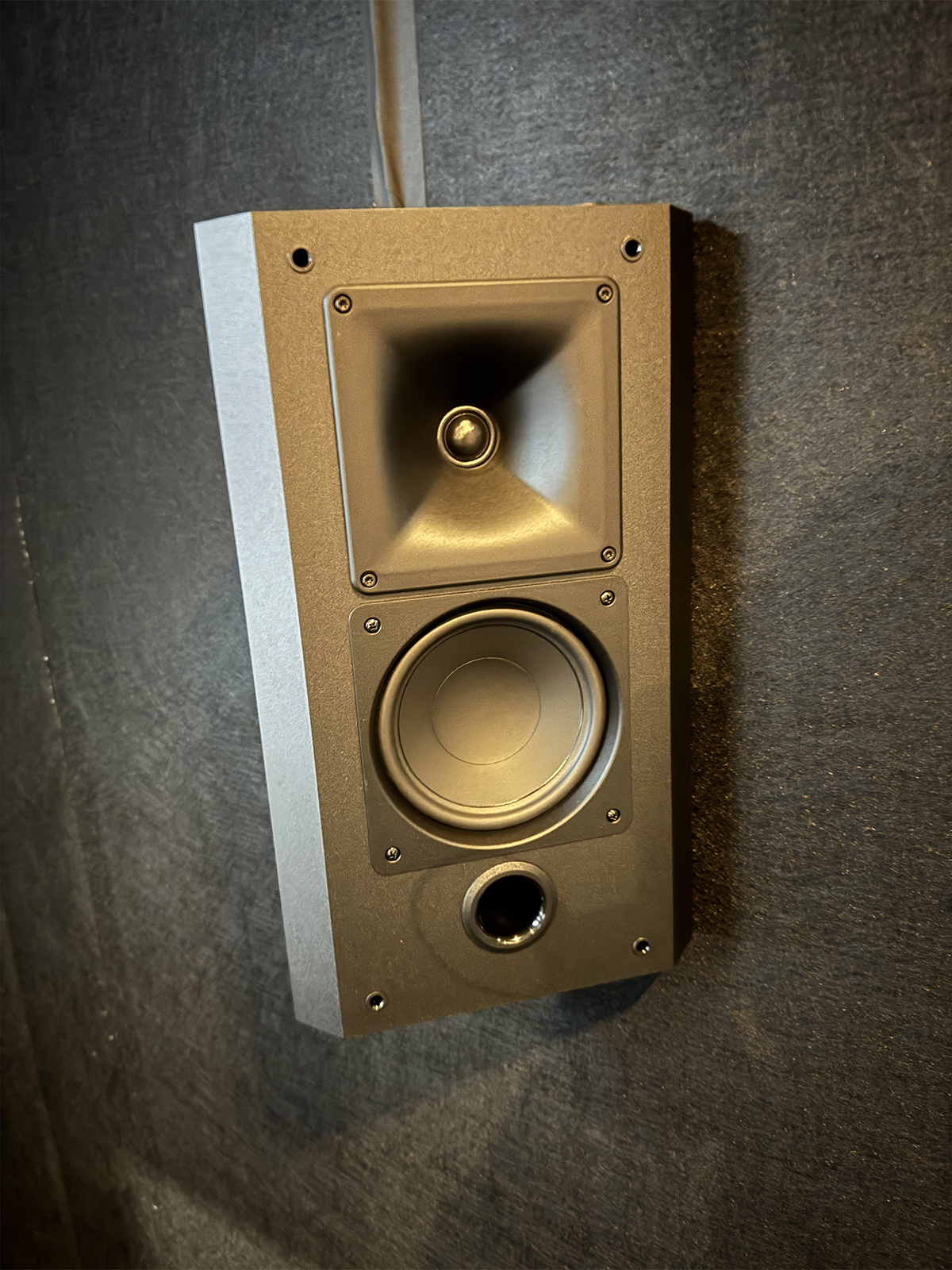 System control and processing was provided by a Trinnov Altitude 32 processor with amplification courtesy of MC2 Audio’s Delta and Install line of power amps. An EPSON QL3000 laser projector and a 175-inch Seymour Screen Excellence Enlightor Neo screen rounded out the system. It was a very cohesive, balanced, and overall excellent-sounding experience with each of the demo clips.
System control and processing was provided by a Trinnov Altitude 32 processor with amplification courtesy of MC2 Audio’s Delta and Install line of power amps. An EPSON QL3000 laser projector and a 175-inch Seymour Screen Excellence Enlightor Neo screen rounded out the system. It was a very cohesive, balanced, and overall excellent-sounding experience with each of the demo clips.
PMC
Stepping up in both price and complexity over the aforementioned Krix system, PMC (or Professional Monitor Company) brought its “A-game” to its dedicated sound rooms.
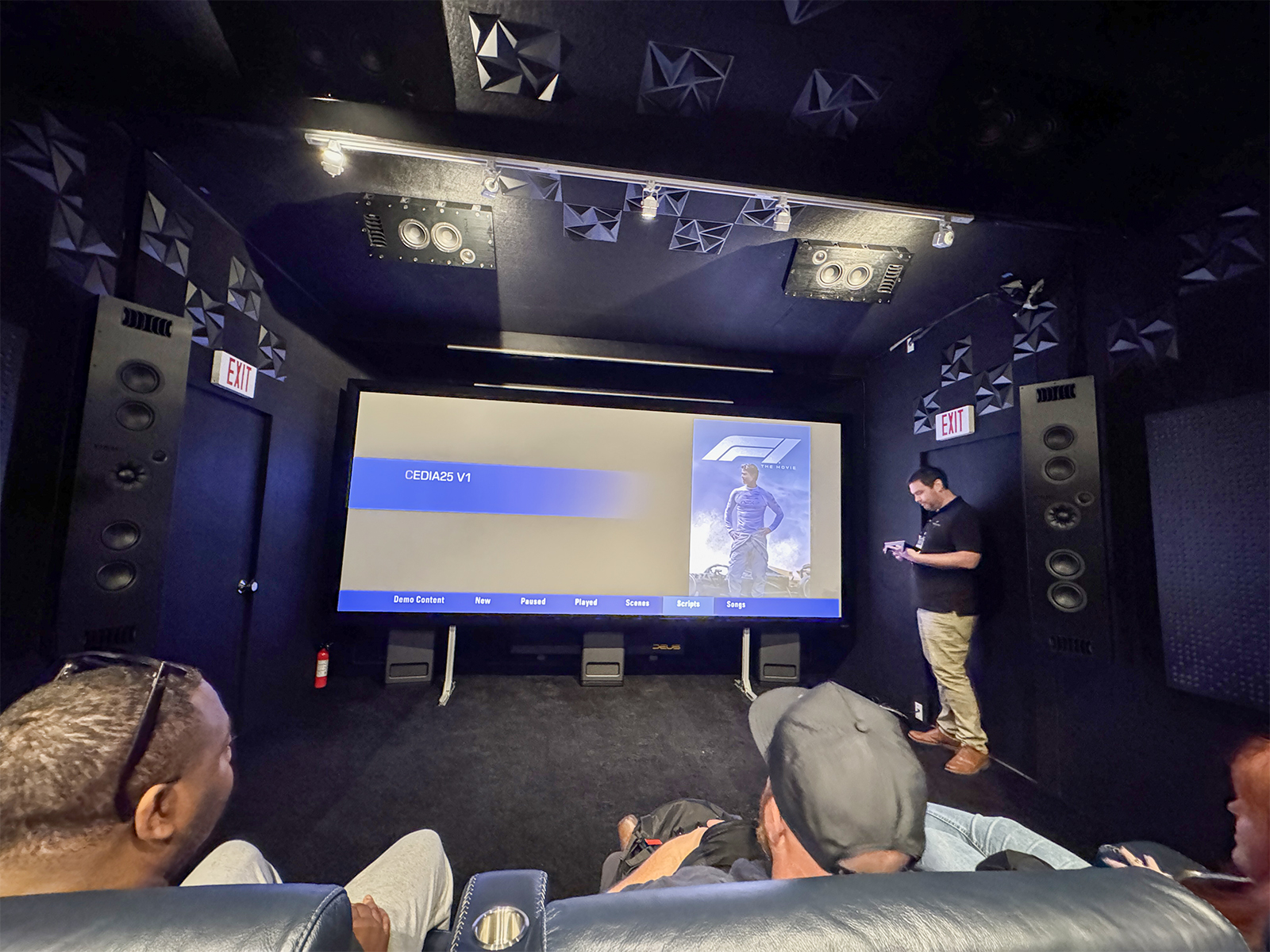
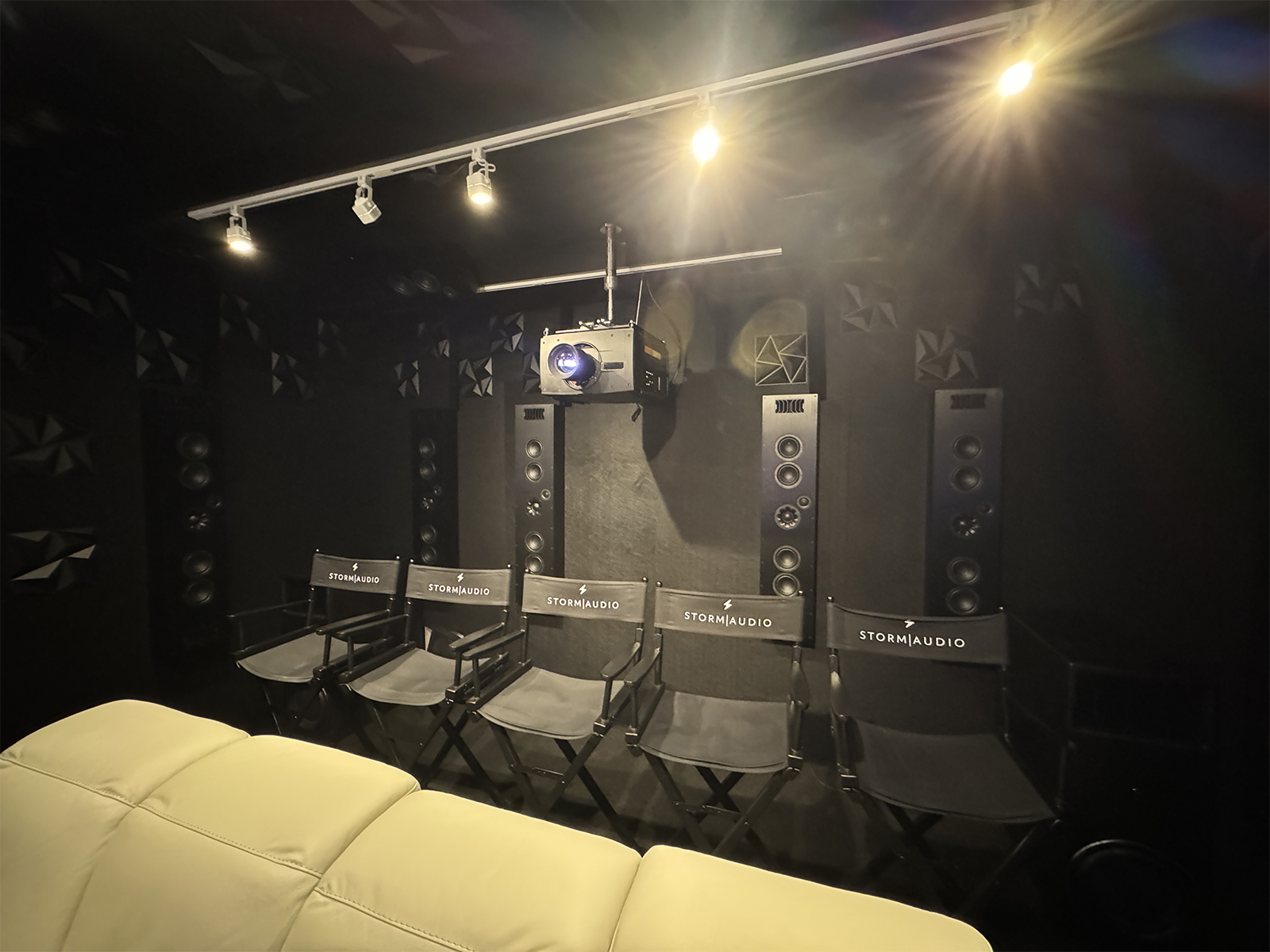 Here we had a 15.6(+).8-channel system consisting of three PMC MB2-XBD pro speakers for the L/C/R channels, twelve PMC ci140 on-wall speakers for the sides and rear channels, eight PMC ci65 speakers for the height channels, and six of PMC’s newest 15-inch BST subwoofers (two in front and four in the back of the room). The subs were augmented by the mammoth DEUS Invicta 60-inch infrasonic subwoofer placed in the front of the room (hence the “+” in the subwoofer channel count). System control and processing was provided by a StormAudio ISP32 Elite processor with amplification courtesy of MC2 Audio (a D100DSP amp and a D100ND amp) and Storm Audio (six PA8 amplifiers). A Barco Heimdal+ CS laser projector with a madVR Labs Envy Extreme Mk II video processor and a 175-inch Seymour Screen Excellence Enlightor Neo screen completed the picture. The comfy seating was provided by Elenor Rigby Home.
Here we had a 15.6(+).8-channel system consisting of three PMC MB2-XBD pro speakers for the L/C/R channels, twelve PMC ci140 on-wall speakers for the sides and rear channels, eight PMC ci65 speakers for the height channels, and six of PMC’s newest 15-inch BST subwoofers (two in front and four in the back of the room). The subs were augmented by the mammoth DEUS Invicta 60-inch infrasonic subwoofer placed in the front of the room (hence the “+” in the subwoofer channel count). System control and processing was provided by a StormAudio ISP32 Elite processor with amplification courtesy of MC2 Audio (a D100DSP amp and a D100ND amp) and Storm Audio (six PA8 amplifiers). A Barco Heimdal+ CS laser projector with a madVR Labs Envy Extreme Mk II video processor and a 175-inch Seymour Screen Excellence Enlightor Neo screen completed the picture. The comfy seating was provided by Elenor Rigby Home.
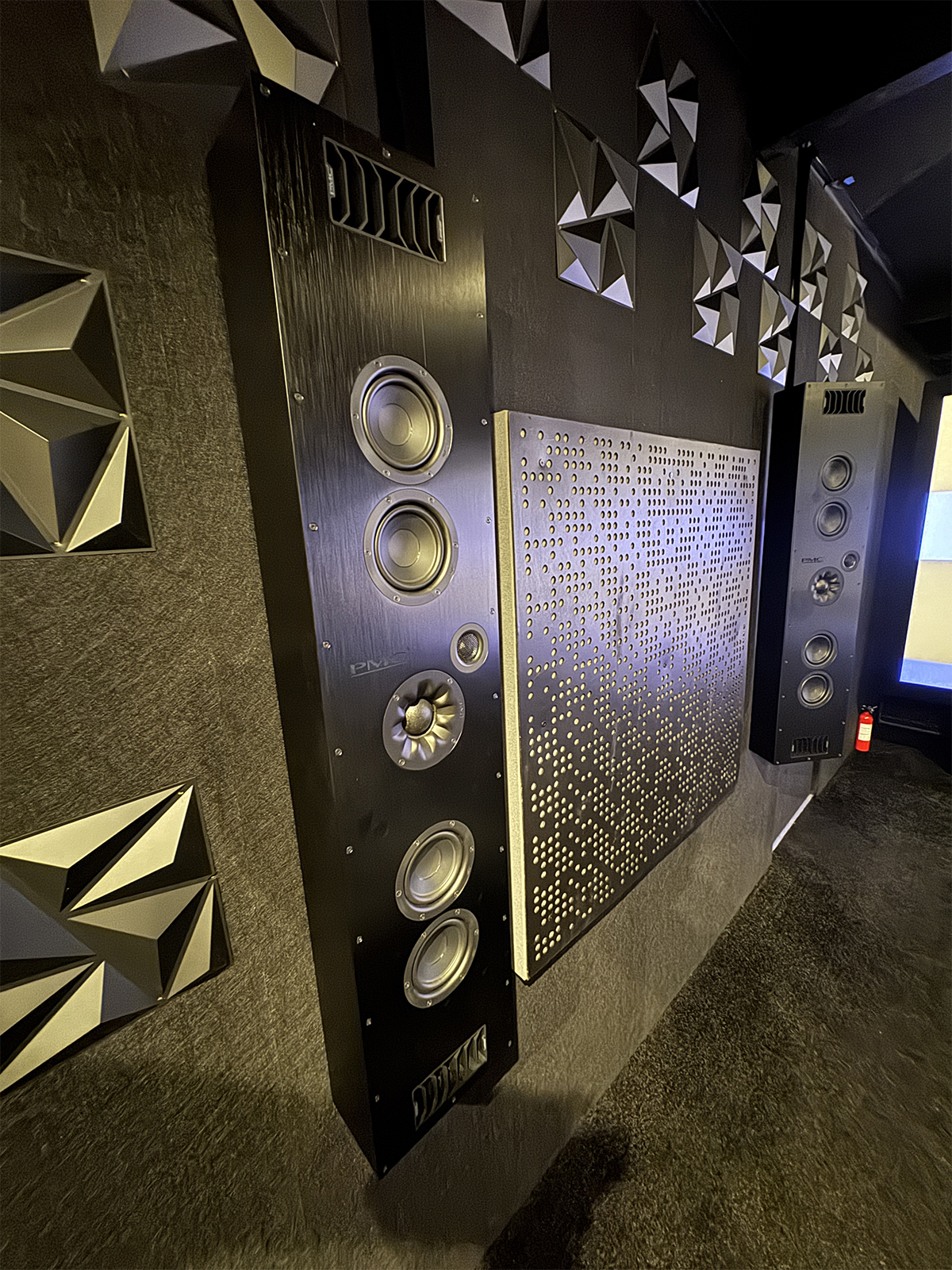
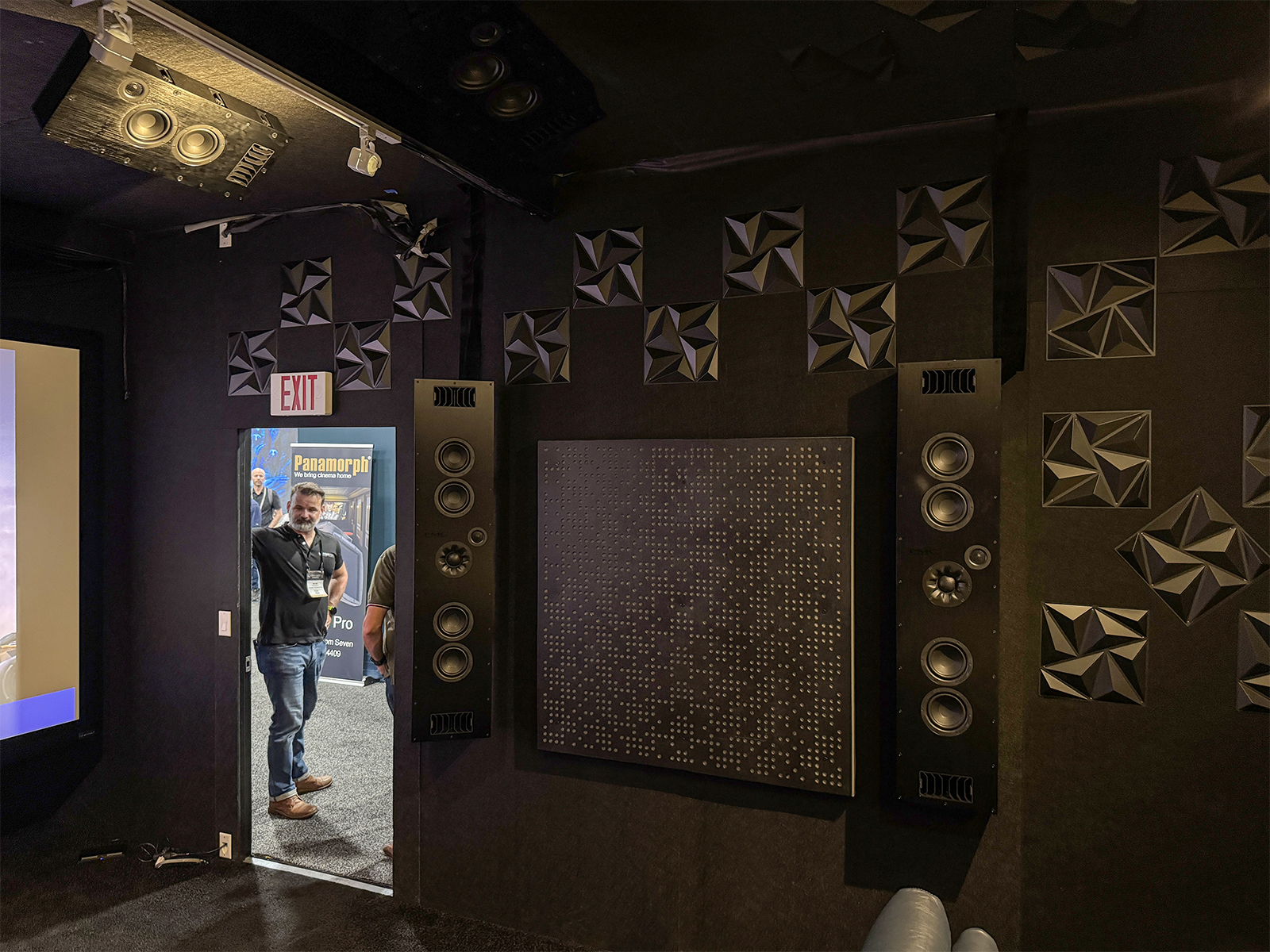 While each of the sound rooms and demonstrations I attended at CEDIA was very enjoyable (with some having individual aspects that were superb), for whatever it’s worth, this one stood out as my personal favorite. Every detail of it, from the sound quality, the overall sense of immersion, and the picture, was flawless. I could have stayed all day in this one.
While each of the sound rooms and demonstrations I attended at CEDIA was very enjoyable (with some having individual aspects that were superb), for whatever it’s worth, this one stood out as my personal favorite. Every detail of it, from the sound quality, the overall sense of immersion, and the picture, was flawless. I could have stayed all day in this one.
I also had a lovely chat with PMC Co-CEO Ollie Thomas, where he gave me a little more insight into PMC and what they do.
Velodyne Acoustics
It is great to see Velodyne back and well represented at CEDIA.
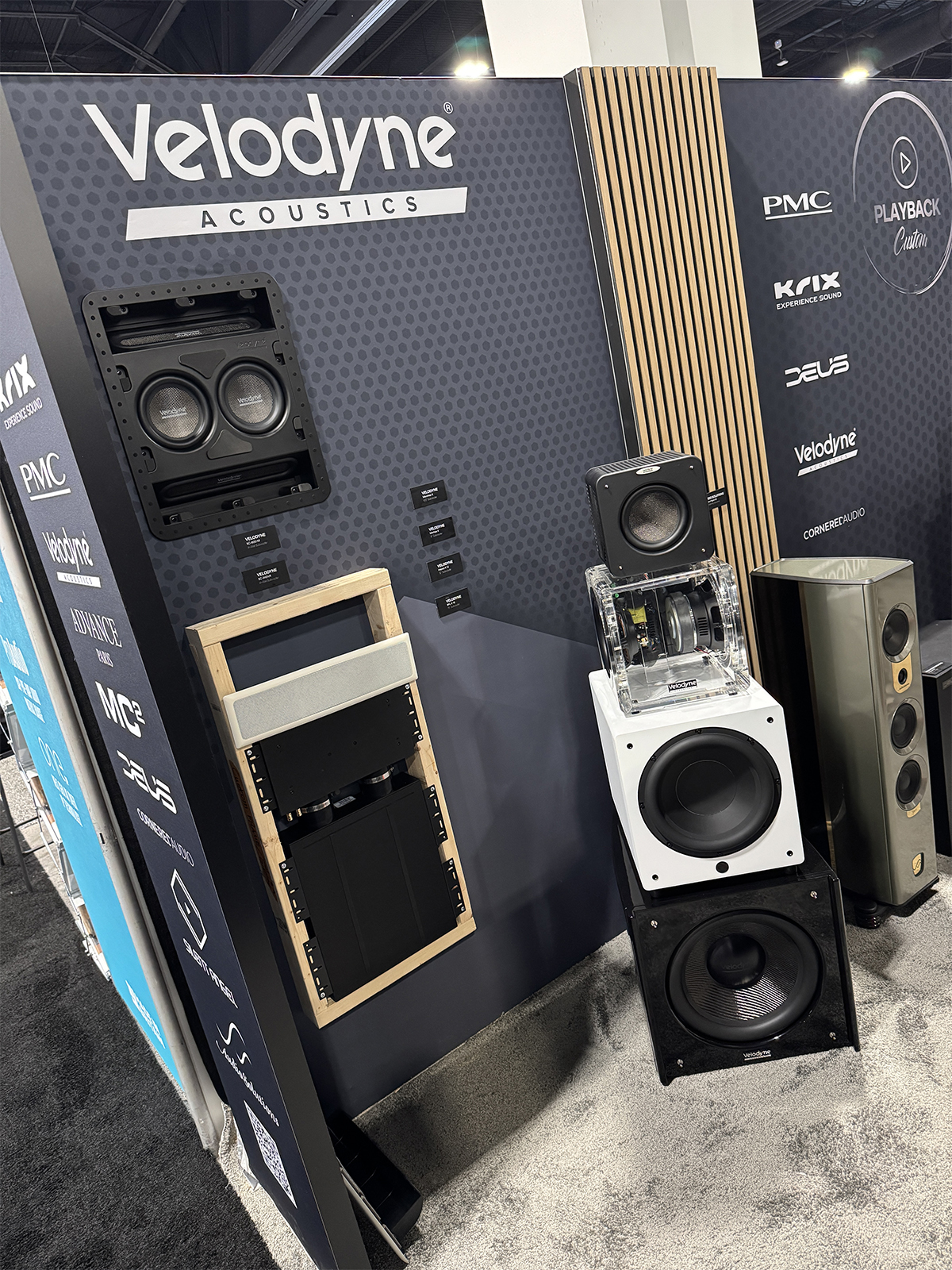
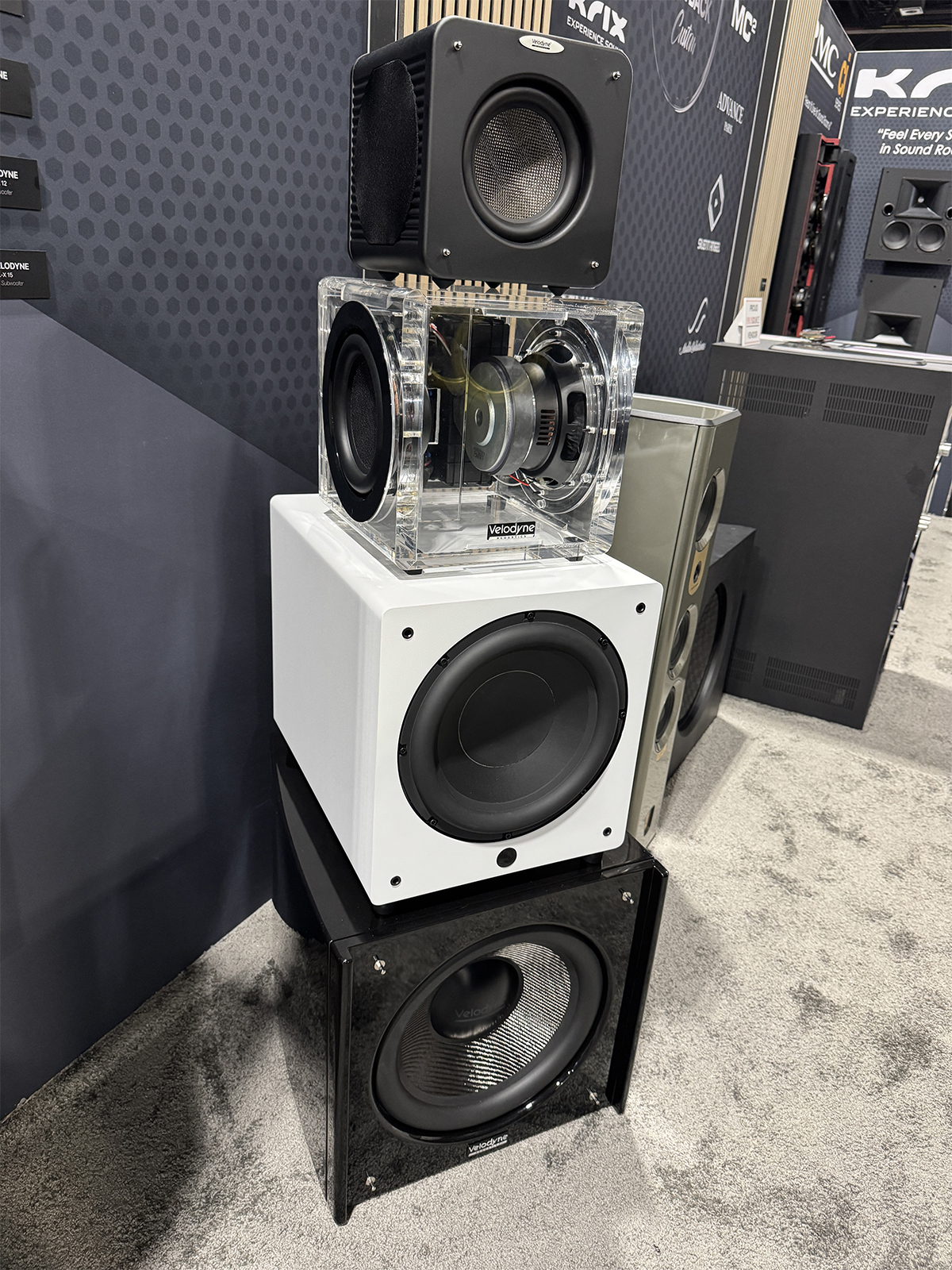 In the display booth they had brought (from top to bottom) the MicroVee X with a 6.5-inch driver and two matching passive radiators (300 watts RMS amp), the MiniVee X with an 8-inch driver and a single matching passive radiator (350 watts RMS amp), the Impact X 12 with a 12-inch driver (300 watts RMS amp), and the brand new SPL-X 15 with a (you guessed it) 15-inch driver (1500-watts RMS amp)!
In the display booth they had brought (from top to bottom) the MicroVee X with a 6.5-inch driver and two matching passive radiators (300 watts RMS amp), the MiniVee X with an 8-inch driver and a single matching passive radiator (350 watts RMS amp), the Impact X 12 with a 12-inch driver (300 watts RMS amp), and the brand new SPL-X 15 with a (you guessed it) 15-inch driver (1500-watts RMS amp)!
Advance Paris
Advance Paris was represented at the show with the A12 Classic integrated amp and the new A-I 130 integrated amp from their new Nova Line.
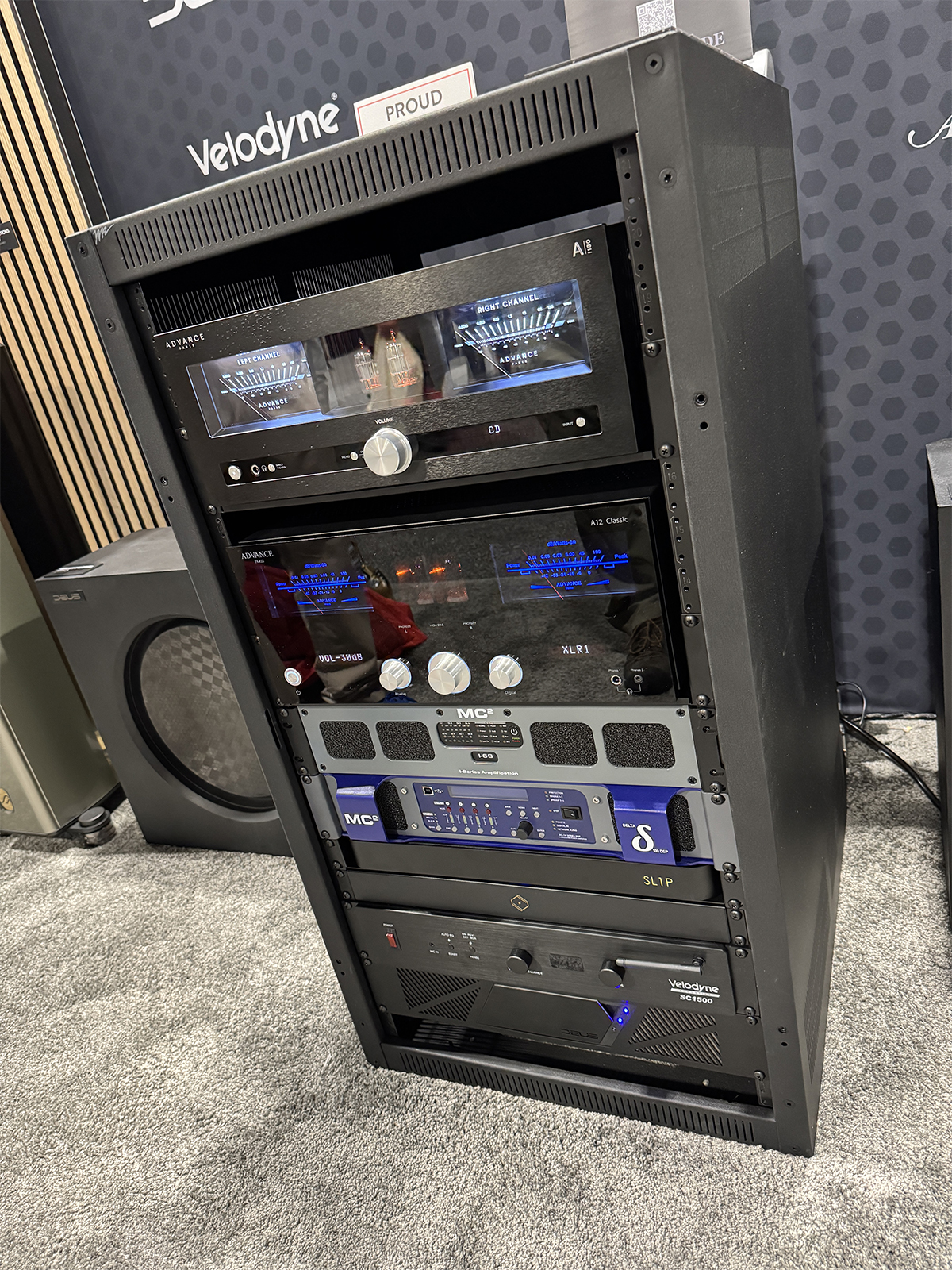 Both units have more connectivity options than you can shake a stick at, along with their signature tube input stage and solid-state Class AB power amplification. The A-12 Classic is rated at 190 watts into 8 ohms, while the new A-I 130 is rated at 130 watts per channel into 8 ohms. The A-I 120 will see availability at the beginning of 2026.
Both units have more connectivity options than you can shake a stick at, along with their signature tube input stage and solid-state Class AB power amplification. The A-12 Classic is rated at 190 watts into 8 ohms, while the new A-I 130 is rated at 130 watts per channel into 8 ohms. The A-I 120 will see availability at the beginning of 2026.
MC2 Audio
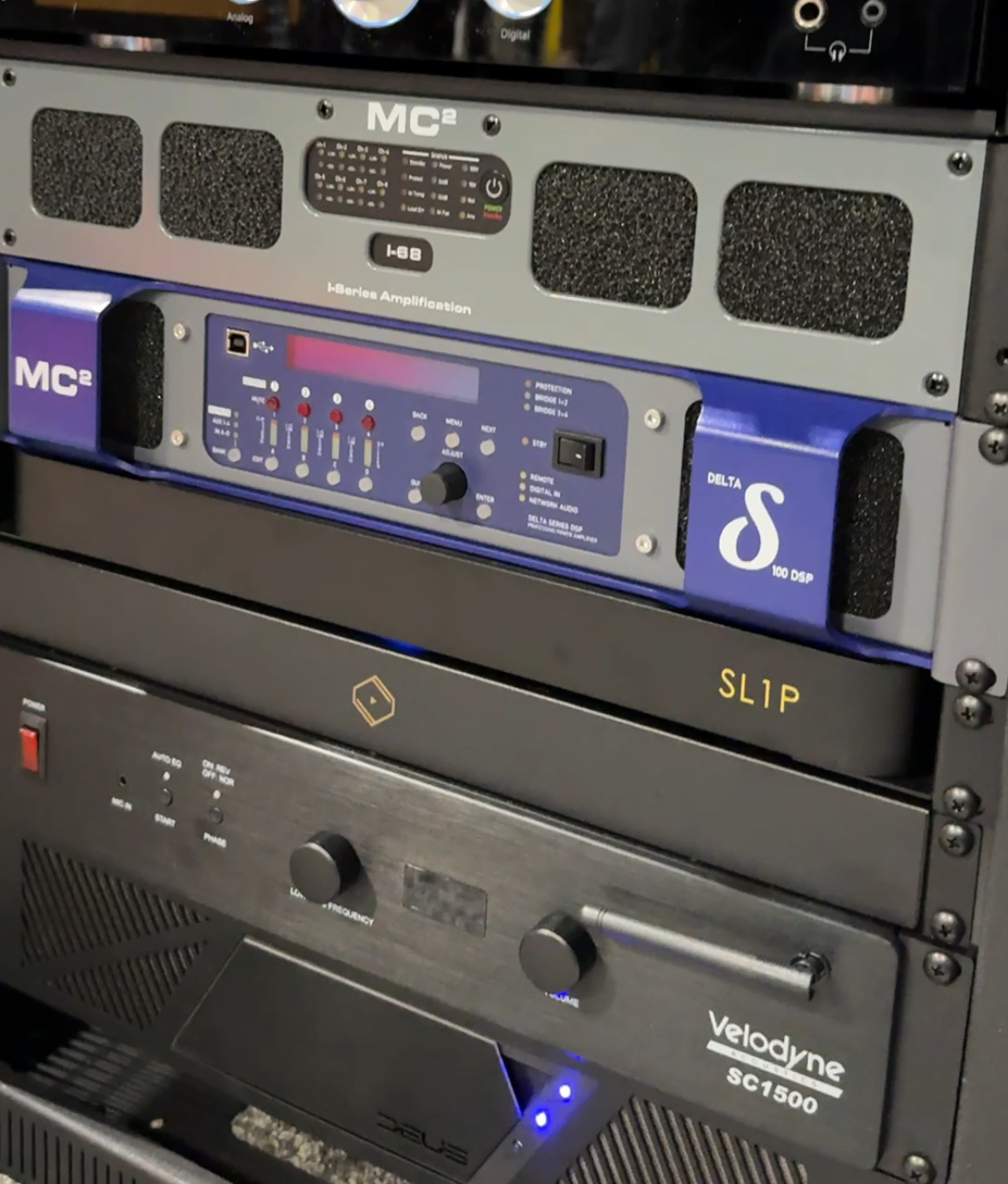 MC2 Audio hails from the UK and produces stereo and multichannel professional-style power amplifiers. Many feature extensive DSP and networking resources, making them well-suited for demanding high-power home theater applications. The Delta DSP100 features four channels of 1400 watts into 8-ohms with the ability to bridge channels into mono. The Delta DSP100 has a full suite of DSP signal processing, EQ, and filtering resources on board, along with networking capabilities and Dante support. The MC2 I-68 is an 8-channel Class D power amplifier with 325 watts per channel into 8-ohms with the ability to bridge pairs of channels for higher power. It is also network-enabled and Dante support is an available option. Both amplifiers are stable into 2-ohm loads.
MC2 Audio hails from the UK and produces stereo and multichannel professional-style power amplifiers. Many feature extensive DSP and networking resources, making them well-suited for demanding high-power home theater applications. The Delta DSP100 features four channels of 1400 watts into 8-ohms with the ability to bridge channels into mono. The Delta DSP100 has a full suite of DSP signal processing, EQ, and filtering resources on board, along with networking capabilities and Dante support. The MC2 I-68 is an 8-channel Class D power amplifier with 325 watts per channel into 8-ohms with the ability to bridge pairs of channels for higher power. It is also network-enabled and Dante support is an available option. Both amplifiers are stable into 2-ohm loads.
DEUS Audio Machines
Based out of Salt Lake City, Utah, DEUS Audio Machines makes extraordinarily powerful, low-distortion subwoofers for high-end home and cinema usage.
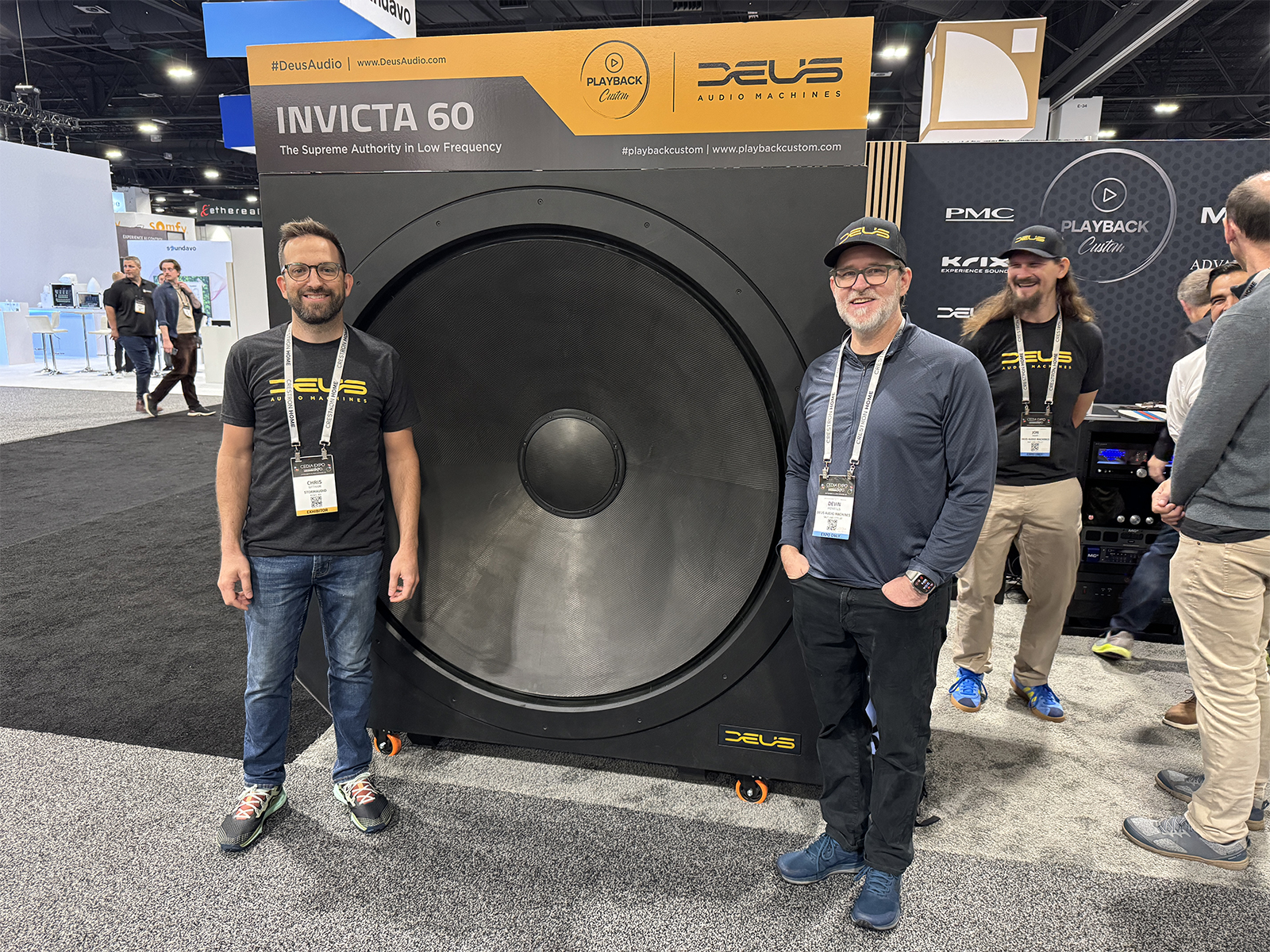 Both the Vera 18 subwoofer and ginormous Invicta 60 infrasonic subwoofer are completely designed and manufactured in-house, and that includes the driver and motor systems. The shallow depth Vera 18 comes with a custom external 2500-watt Hypex Ncore-based power amplifier with integrated DSP and Linkwitz Transform circuit.
Both the Vera 18 subwoofer and ginormous Invicta 60 infrasonic subwoofer are completely designed and manufactured in-house, and that includes the driver and motor systems. The shallow depth Vera 18 comes with a custom external 2500-watt Hypex Ncore-based power amplifier with integrated DSP and Linkwitz Transform circuit.
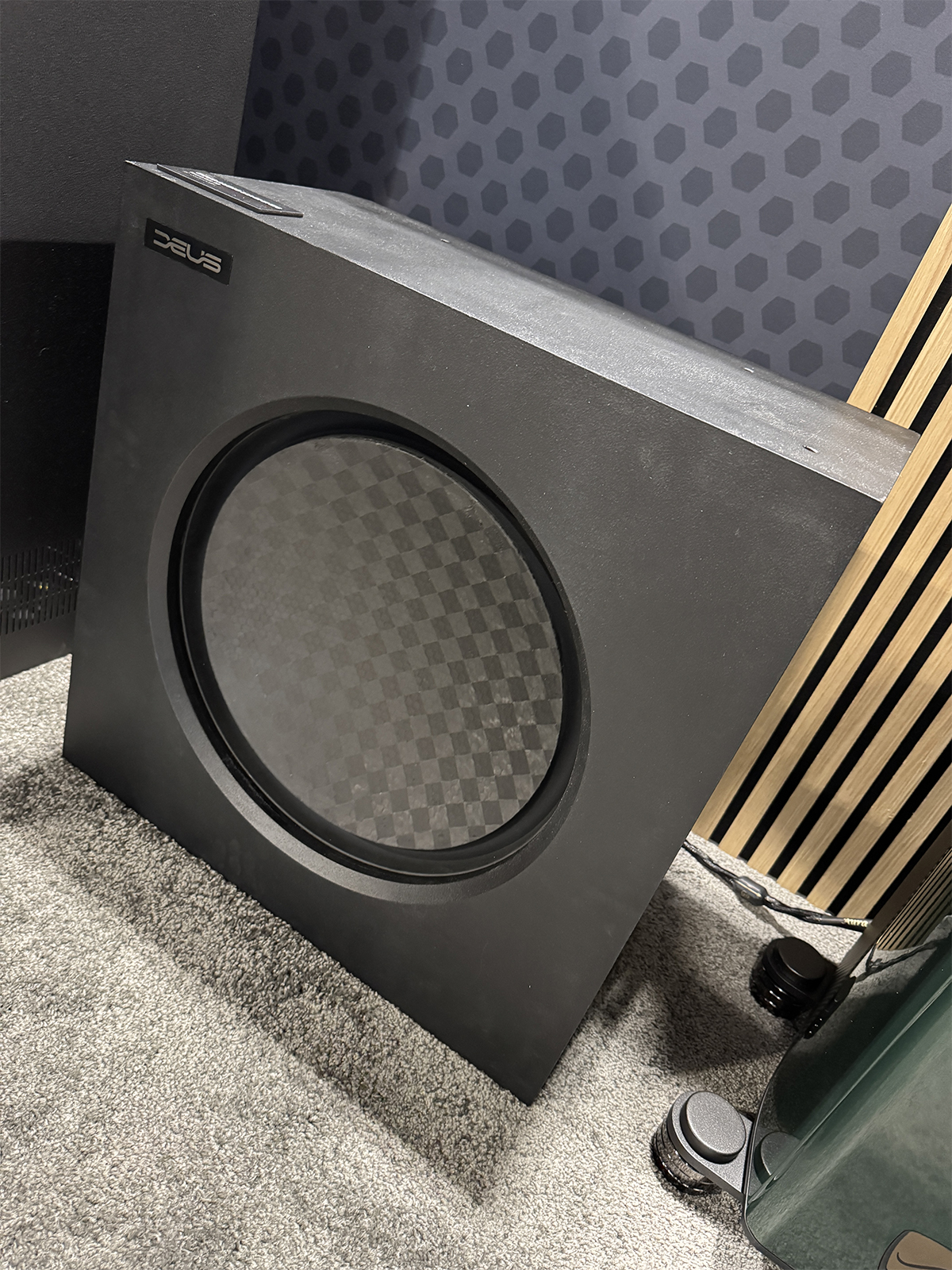
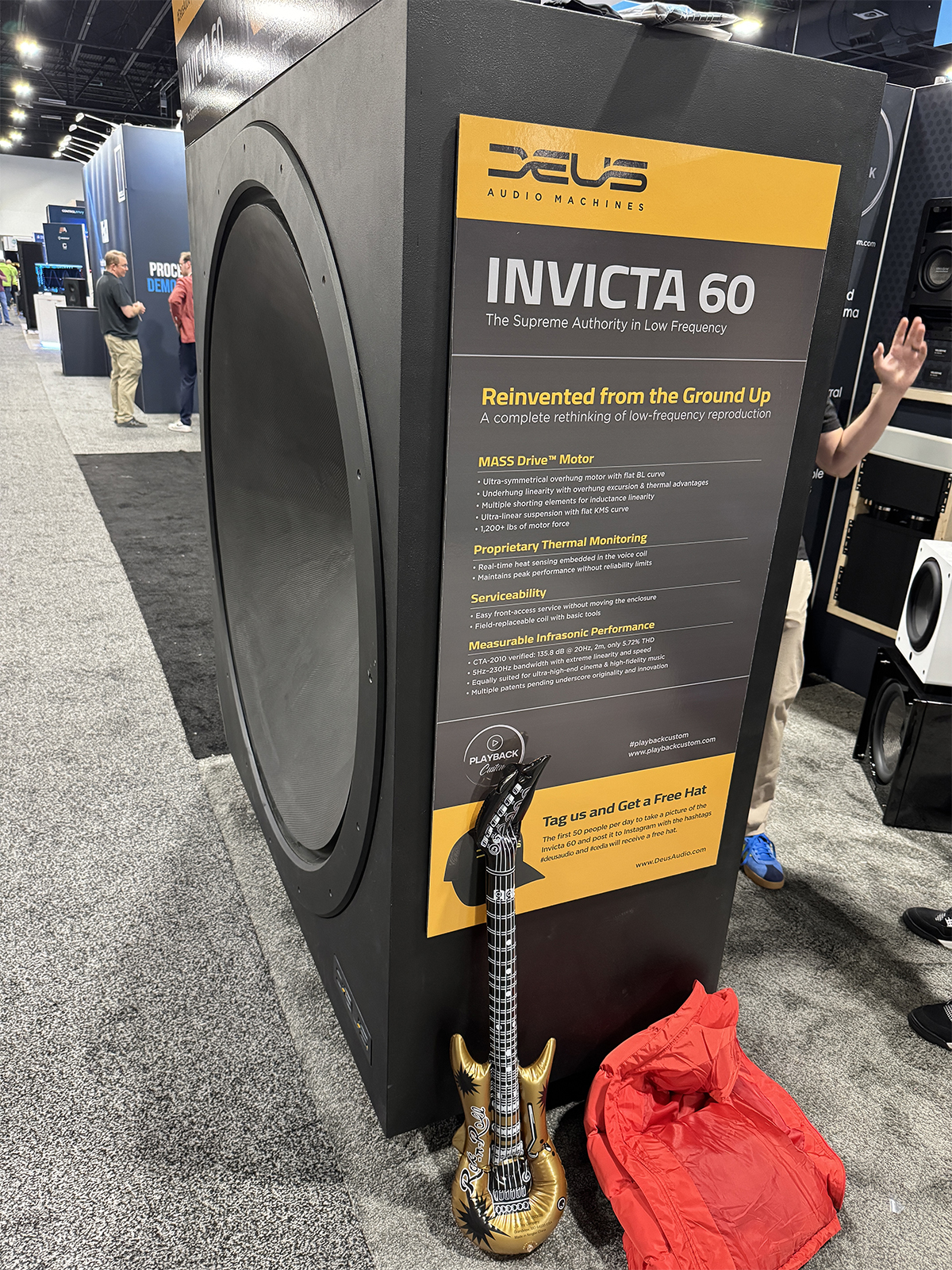 The Invicta 60 comes with a 20,000-watt Class-D external amplifier with user-adjustable DSP and real-time thermal and power monitoring. Having experienced the Invicta 60 as part of the PMC/Storm Audio demo, I can confirm that it delivered the goods!
The Invicta 60 comes with a 20,000-watt Class-D external amplifier with user-adjustable DSP and real-time thermal and power monitoring. Having experienced the Invicta 60 as part of the PMC/Storm Audio demo, I can confirm that it delivered the goods!
Cornered Audio
This Danish speaker company specializes in smaller speakers that are designed to be mounted in room corners.
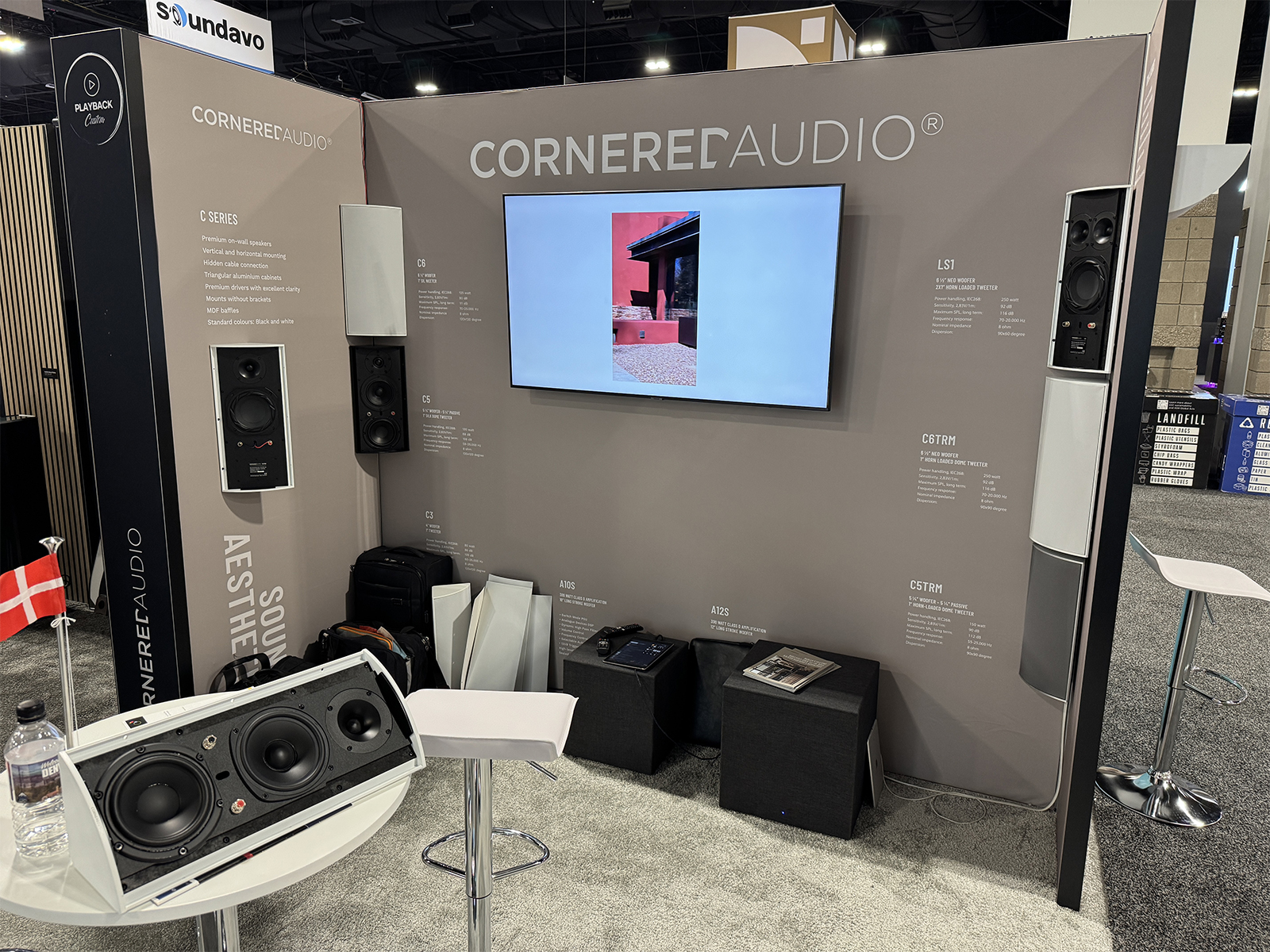 This makes for aesthetically pleasing, unobtrusive speaker installations that take advantage of room corner loading to sound bigger than one might expect. The company produces the C-Series, the TRM-Series, and the LS-Series of speakers, along with 10-inch and 12-inch subwoofers.
This makes for aesthetically pleasing, unobtrusive speaker installations that take advantage of room corner loading to sound bigger than one might expect. The company produces the C-Series, the TRM-Series, and the LS-Series of speakers, along with 10-inch and 12-inch subwoofers.
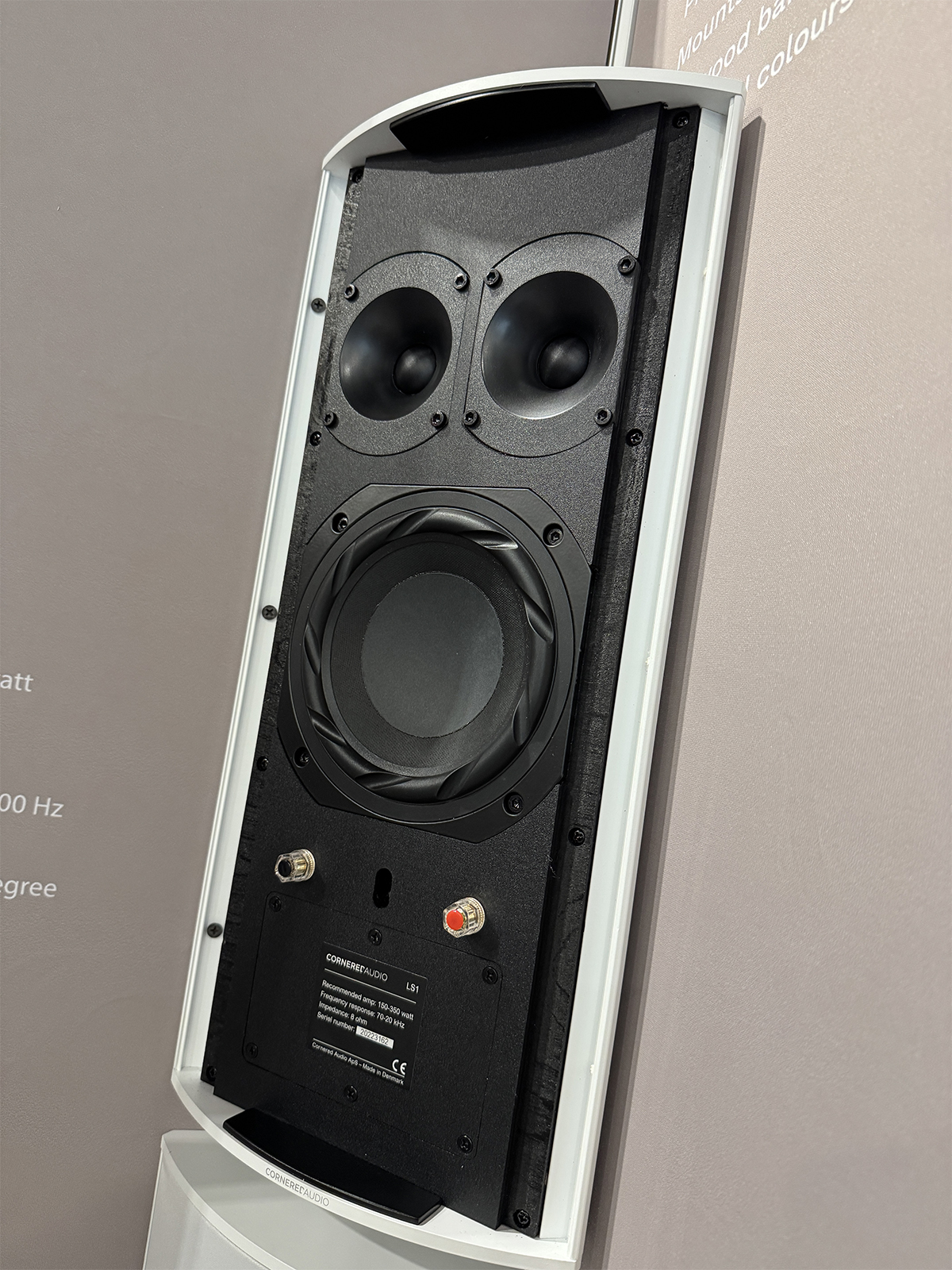 According to Cornered Audio CEO, Hans Madsen, the C-Series speakers are designed to be especially suited for music listening, whereas the TRM and LS may be more dynamically suited for home theater applications.
According to Cornered Audio CEO, Hans Madsen, the C-Series speakers are designed to be especially suited for music listening, whereas the TRM and LS may be more dynamically suited for home theater applications.
Silent Angel
Network and streaming specialists Silent Angel have developed a solid reputation and following for the quality and performance of their digital products.
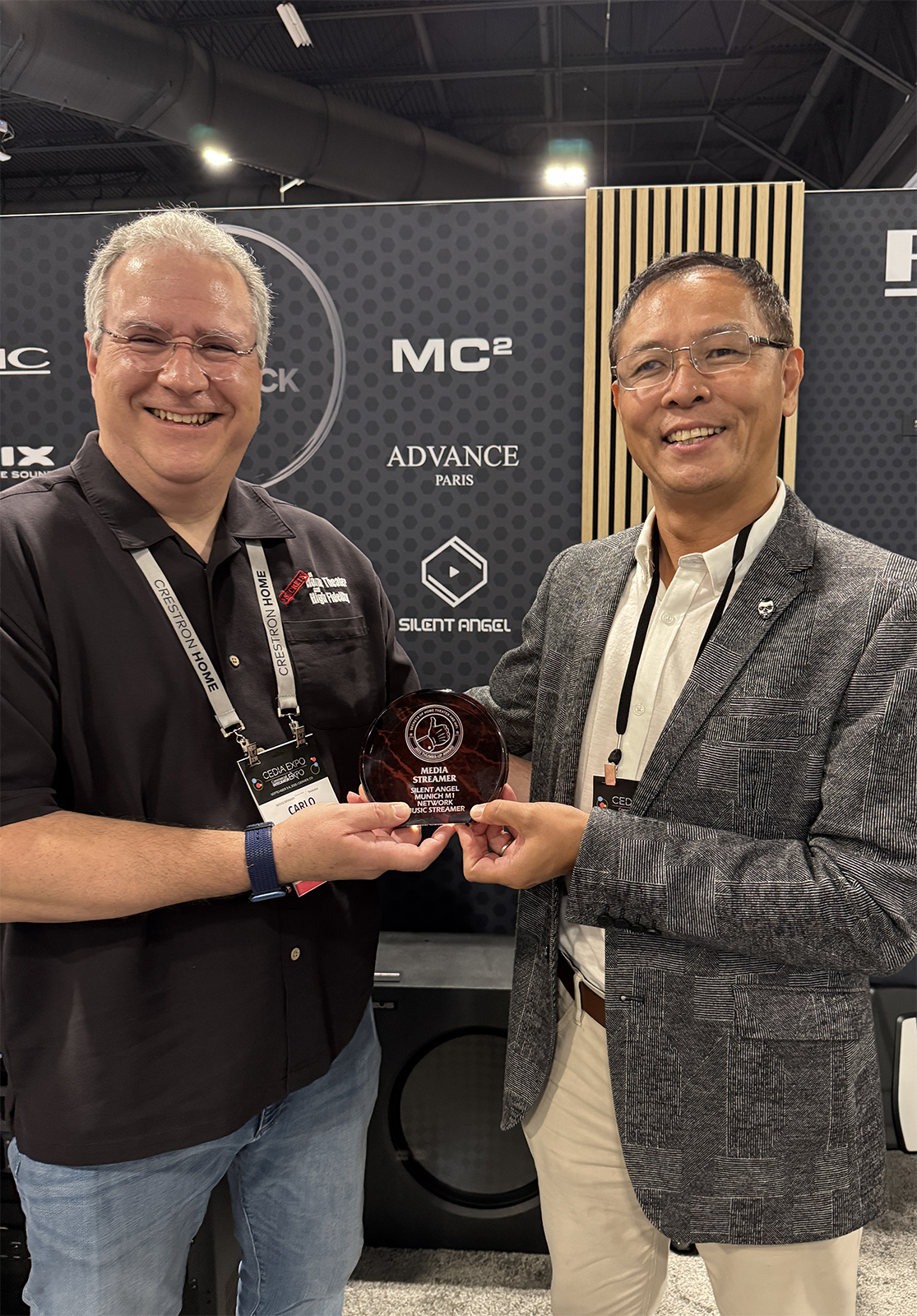 They were well represented at CEDIA with their Breman SL1P HiFi Streaming Player and the Bonn NPro 8 HiFi Network Switch. Each unit can fit in a 1RU chassis slot, making them perfect choices for custom integrators. I also enjoyed getting to meet Silent Angel CEO Eric Huang and finally be able to present the award we gave Silent Angel in 2023 for their Munich M1 Streamer in person!
They were well represented at CEDIA with their Breman SL1P HiFi Streaming Player and the Bonn NPro 8 HiFi Network Switch. Each unit can fit in a 1RU chassis slot, making them perfect choices for custom integrators. I also enjoyed getting to meet Silent Angel CEO Eric Huang and finally be able to present the award we gave Silent Angel in 2023 for their Munich M1 Streamer in person!
AudioSolutions
Lithuanian speaker manufacturer AudioSolutions supplied their unique Figaro S2 speakers for the Playback Distribution CEDIA display. Available in an array of standard and bespoke finishes, they can also be ordered in almost any color or finish you desire through the company’s custom online configurator tool.
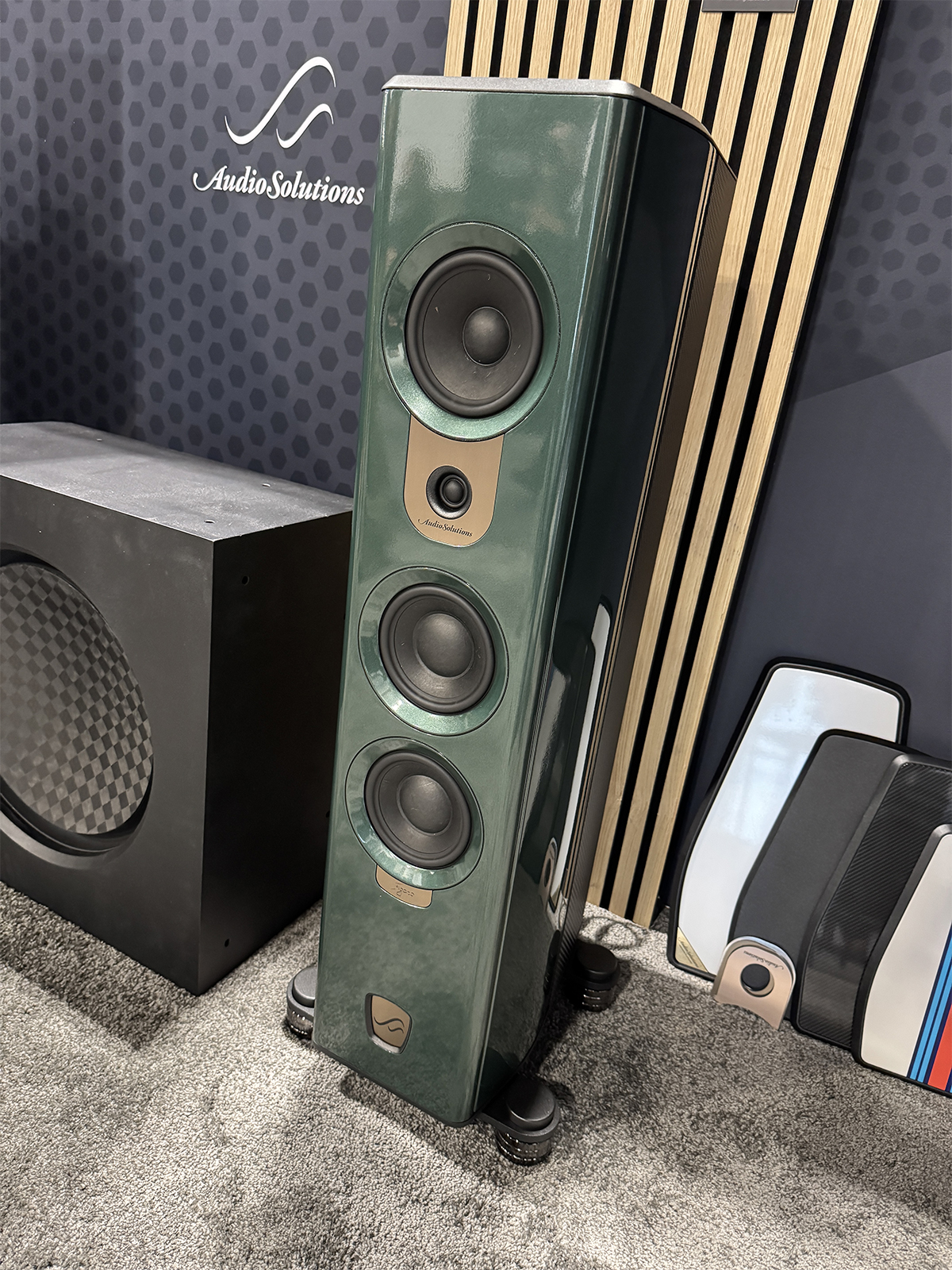 But beyond simply being a thoroughly stylish or decor-friendly speaker, they also incorporate some serious acoustical engineering with their “cabinet-within-a-cabinet” construction, incorporating constrained layer dampening to control resonances, for example. They also claim technologies such as what they call “Mini-Horn” loading for the tweeter in place of a more traditional waveguide and an “Extended Band Midrange” design, which avoids crossover points in the acoustically sensitive 1 kHz – 2 kHz range. AudioSolutions manufactures its speaker cabinets in-house in Vilnius, Lithuania, and sources its drivers from the likes of SEAS, Scan-Speak, and SB Acoustics. The company’s designs and methodology look intriguing, and we hope to get review samples in to check out soon.
But beyond simply being a thoroughly stylish or decor-friendly speaker, they also incorporate some serious acoustical engineering with their “cabinet-within-a-cabinet” construction, incorporating constrained layer dampening to control resonances, for example. They also claim technologies such as what they call “Mini-Horn” loading for the tweeter in place of a more traditional waveguide and an “Extended Band Midrange” design, which avoids crossover points in the acoustically sensitive 1 kHz – 2 kHz range. AudioSolutions manufactures its speaker cabinets in-house in Vilnius, Lithuania, and sources its drivers from the likes of SEAS, Scan-Speak, and SB Acoustics. The company’s designs and methodology look intriguing, and we hope to get review samples in to check out soon.
ARCAM
At CEDIA this year, ARCAM refreshed its Radia line of components with three updated integrated amplifier models.
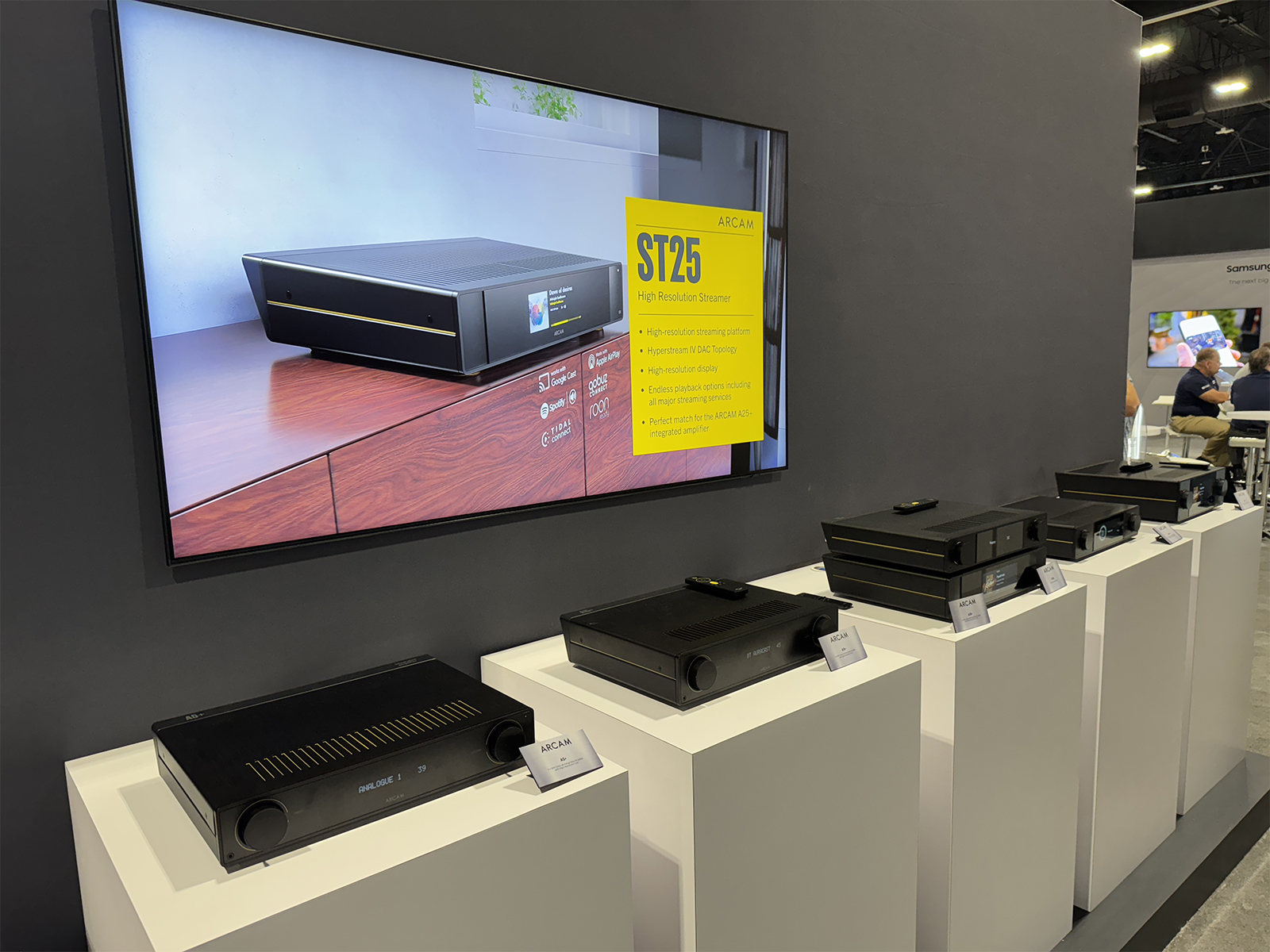 The new A5+, A15+, and A25+ highlight improved features and capabilities over the original models. The A5+ ($1,199.95) is rated at 50 watts per channel stereo into 8-ohms with a Class-AB amplifier section. Improvements have been made in the power supply, along with adding Auracast, and Bluetooth has been upgraded to version 5.4 specs. The A15+ ($1,499.00) bumps the Class-AB amp section to 80 watts per channel stereo into 8-ohms, and HDMI eARC is available, along with adding the same wireless updates as the A5+.
The new A5+, A15+, and A25+ highlight improved features and capabilities over the original models. The A5+ ($1,199.95) is rated at 50 watts per channel stereo into 8-ohms with a Class-AB amplifier section. Improvements have been made in the power supply, along with adding Auracast, and Bluetooth has been upgraded to version 5.4 specs. The A15+ ($1,499.00) bumps the Class-AB amp section to 80 watts per channel stereo into 8-ohms, and HDMI eARC is available, along with adding the same wireless updates as the A5+.
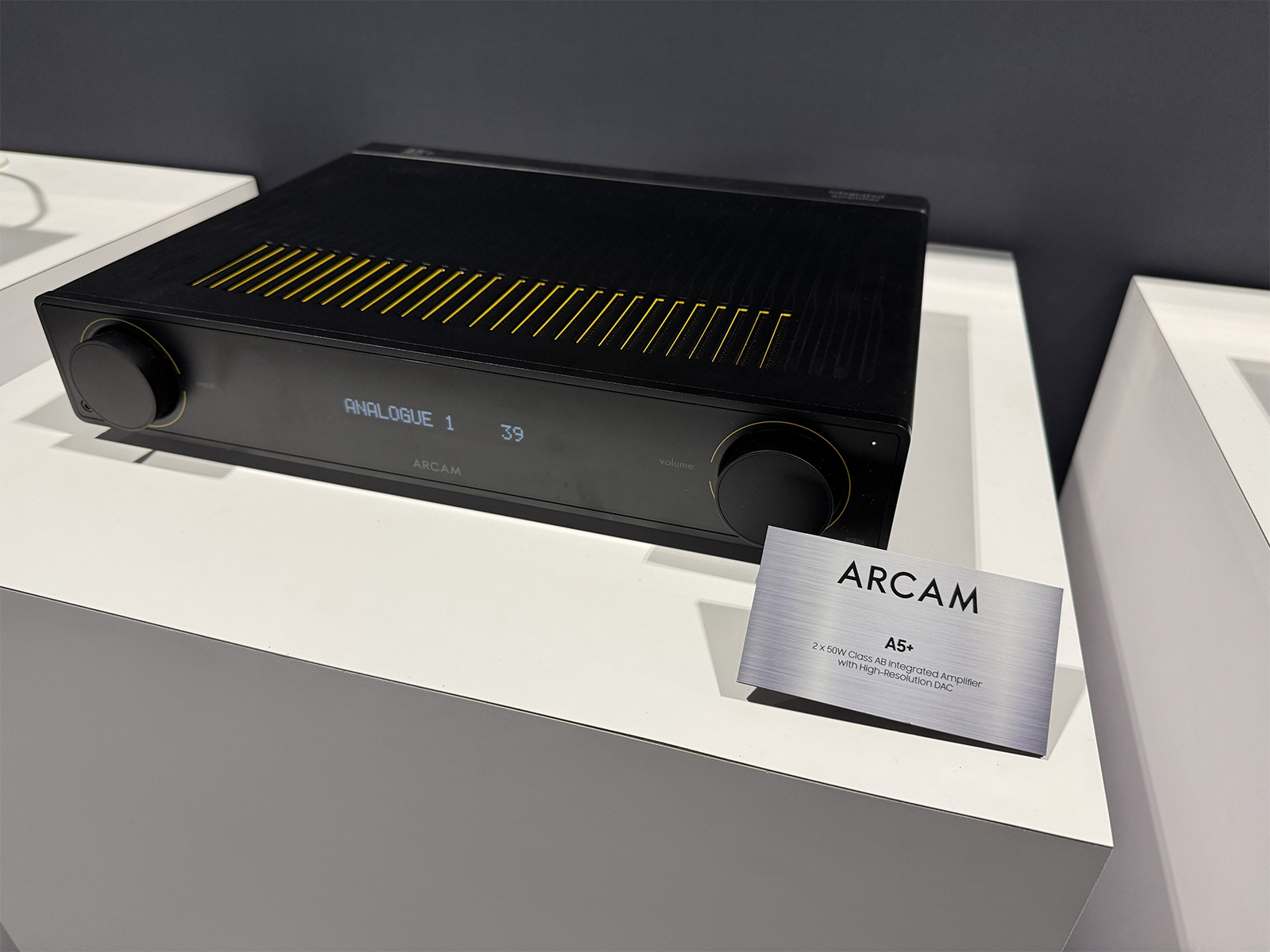
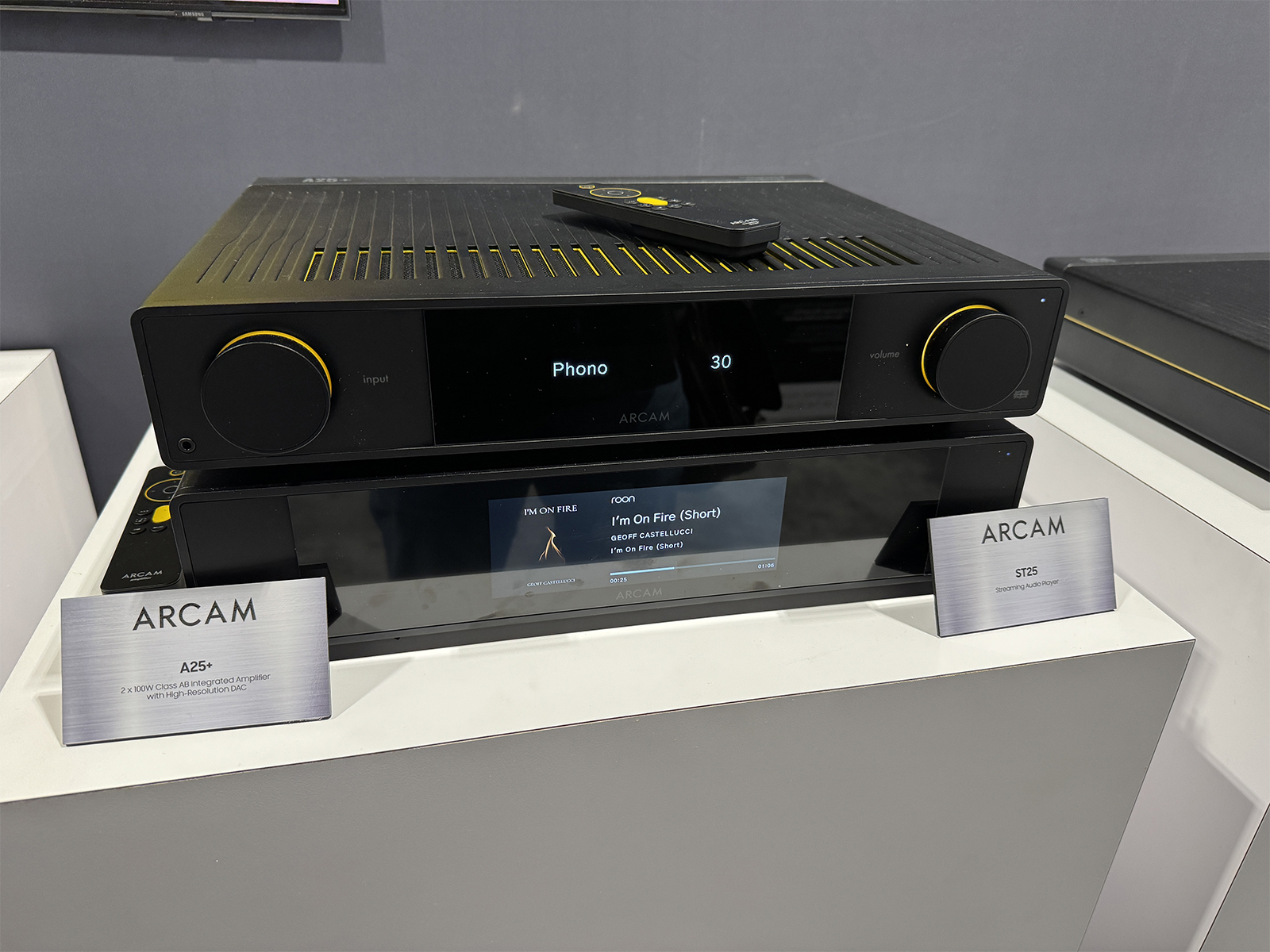 The A25+ ($1,999.95) changes the amplifier architecture to Class-G, and power goes up to a healthy 100 watts per channel stereo into 8-ohms. It has all the feature upgrades of the A15+, along with adding a USB-C input, an additional DAC for the SPDIF inputs, and a snazzy OLED display behind a glass face for a higher-end look. All the units have an MM phono stage and Bluetooth transmitting for wireless headphone listening. These updated Radia components will start shipping in Q4 of this year.
The A25+ ($1,999.95) changes the amplifier architecture to Class-G, and power goes up to a healthy 100 watts per channel stereo into 8-ohms. It has all the feature upgrades of the A15+, along with adding a USB-C input, an additional DAC for the SPDIF inputs, and a snazzy OLED display behind a glass face for a higher-end look. All the units have an MM phono stage and Bluetooth transmitting for wireless headphone listening. These updated Radia components will start shipping in Q4 of this year.
Ascendo, Seymour-Screen Excellence, and Partners
This particular sound room probably had the most buzz going on about it at CEDIA.
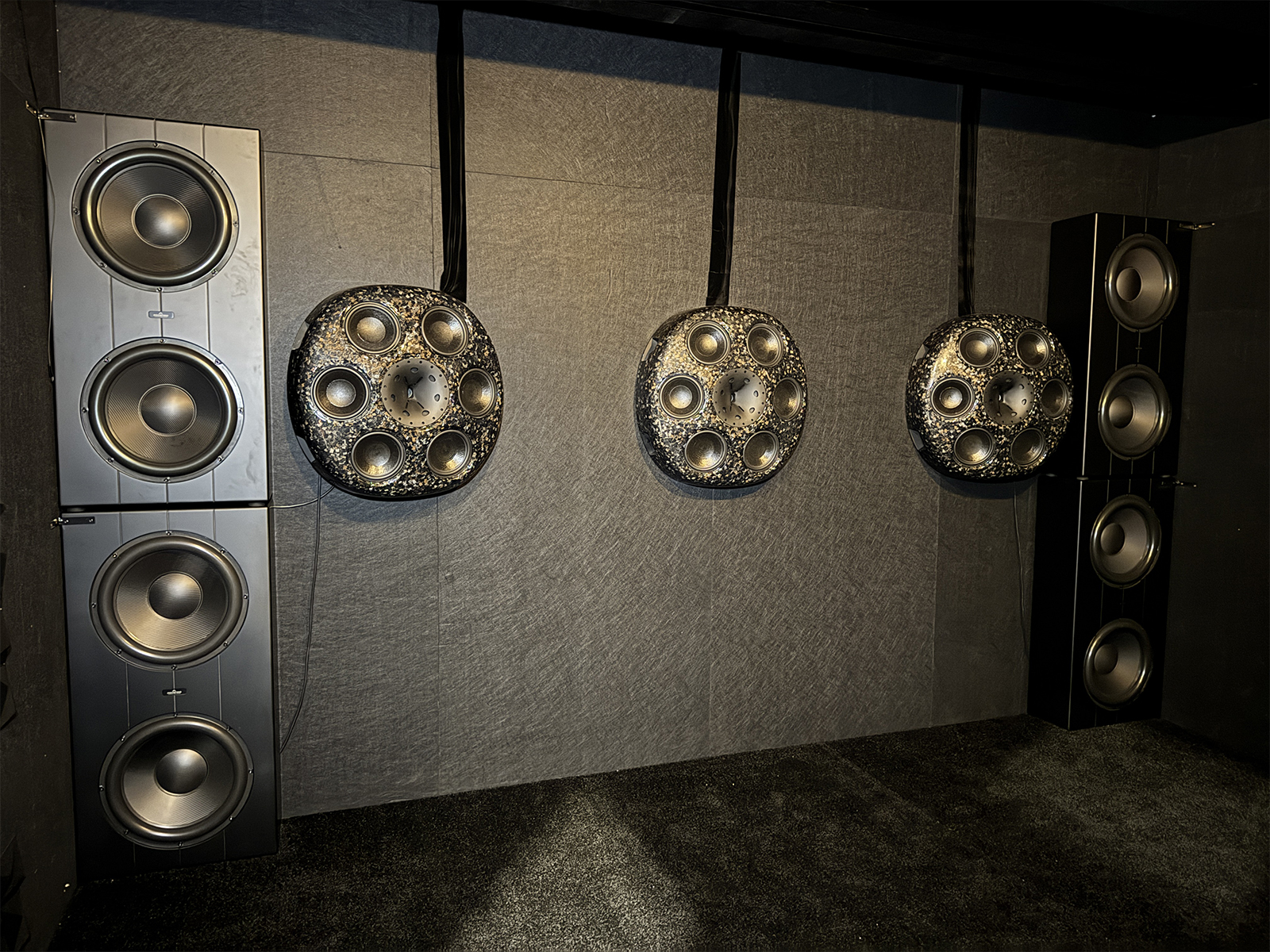 At a total cost of $1.3 million, this 14.18.10 channel theater system certainly consisted of the crème-de-la-crème of gear. Ascendo Immersive Audio provided all the speakers and was debuting their novel HALO coaxial speakers for the front LCR channels, along with two 64-inch infrasonic subwoofers placed at the rear of the room.
At a total cost of $1.3 million, this 14.18.10 channel theater system certainly consisted of the crème-de-la-crème of gear. Ascendo Immersive Audio provided all the speakers and was debuting their novel HALO coaxial speakers for the front LCR channels, along with two 64-inch infrasonic subwoofers placed at the rear of the room.
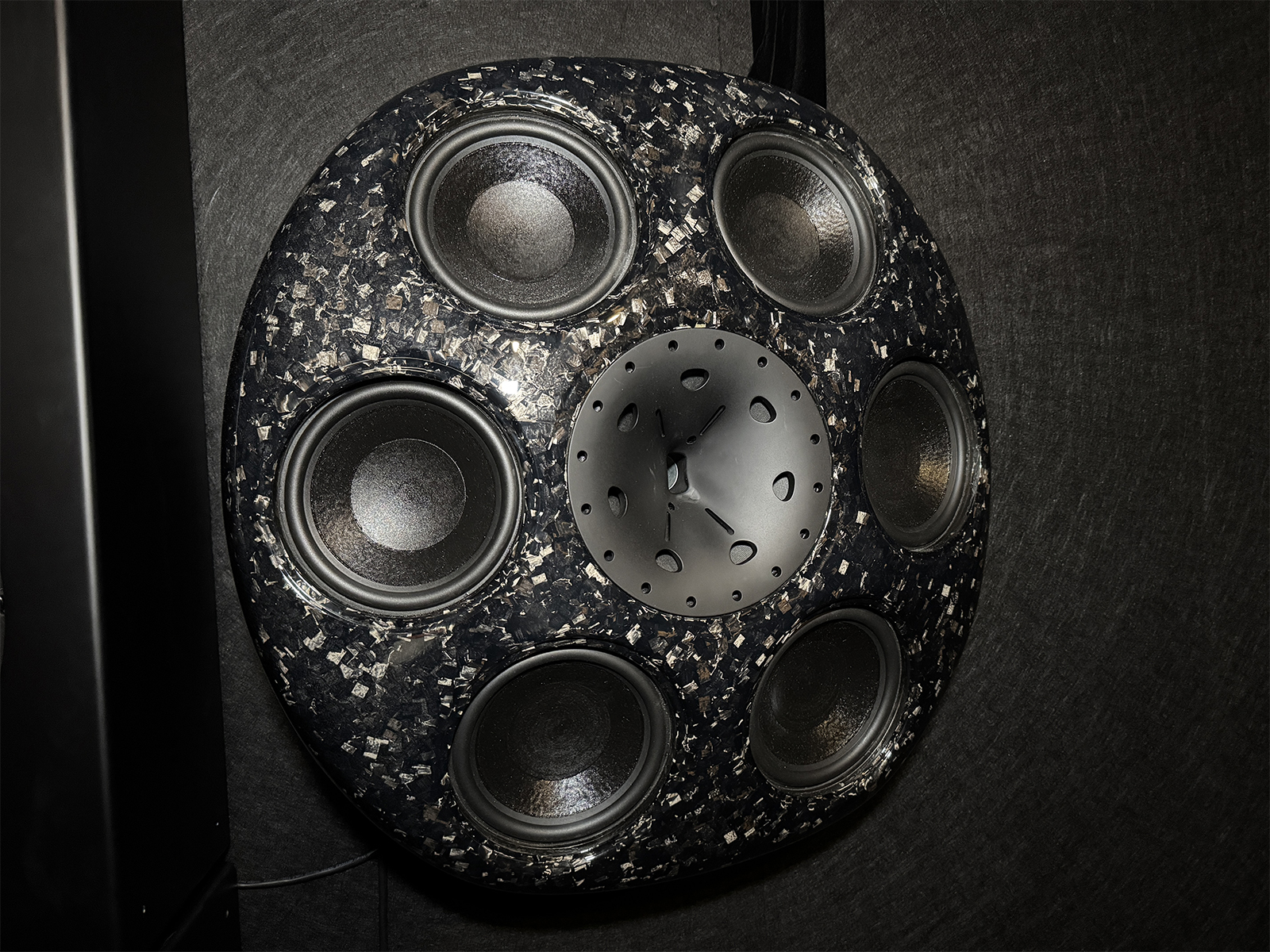
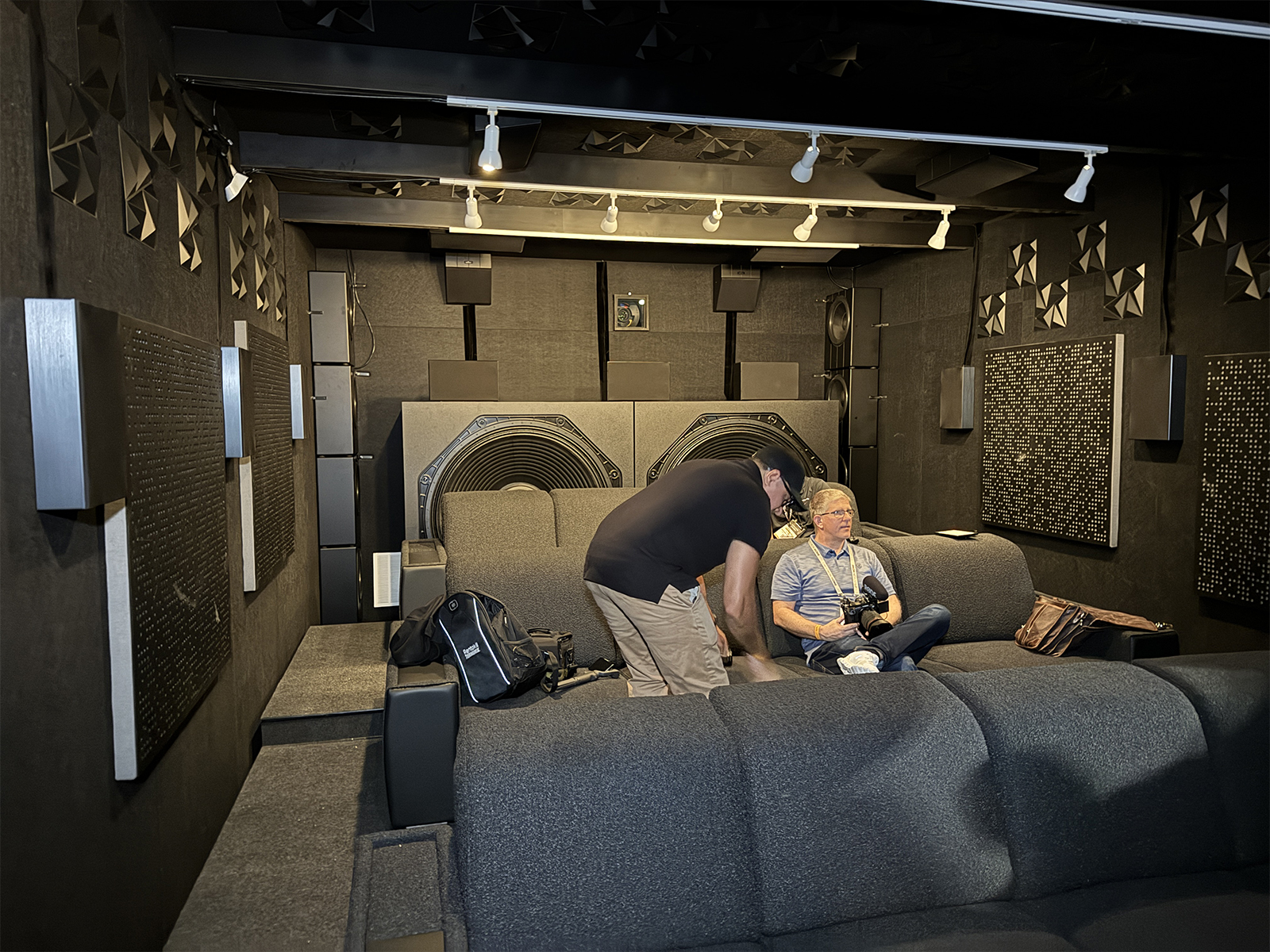
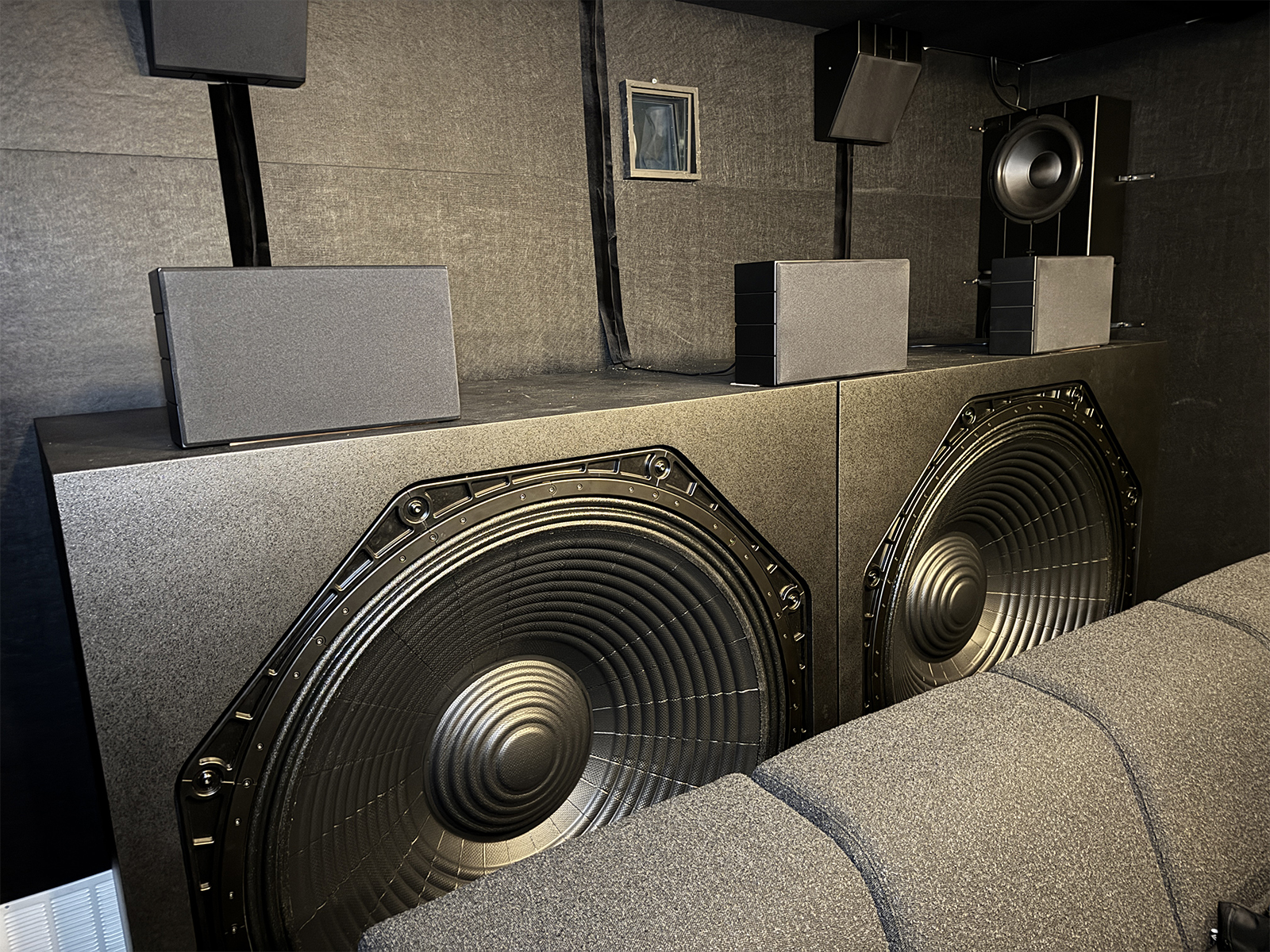 Control was courtesy of StormAudio’s Elite 32 processor using DIRAC ART (Active Room Treatment). Christie provided their massive Eclipse G3 projector along with a Panamorph Alpha Pro Anamorphic lens to generate the visuals. The system practically had its own dedicated HVAC system to keep it running cool.
Control was courtesy of StormAudio’s Elite 32 processor using DIRAC ART (Active Room Treatment). Christie provided their massive Eclipse G3 projector along with a Panamorph Alpha Pro Anamorphic lens to generate the visuals. The system practically had its own dedicated HVAC system to keep it running cool.
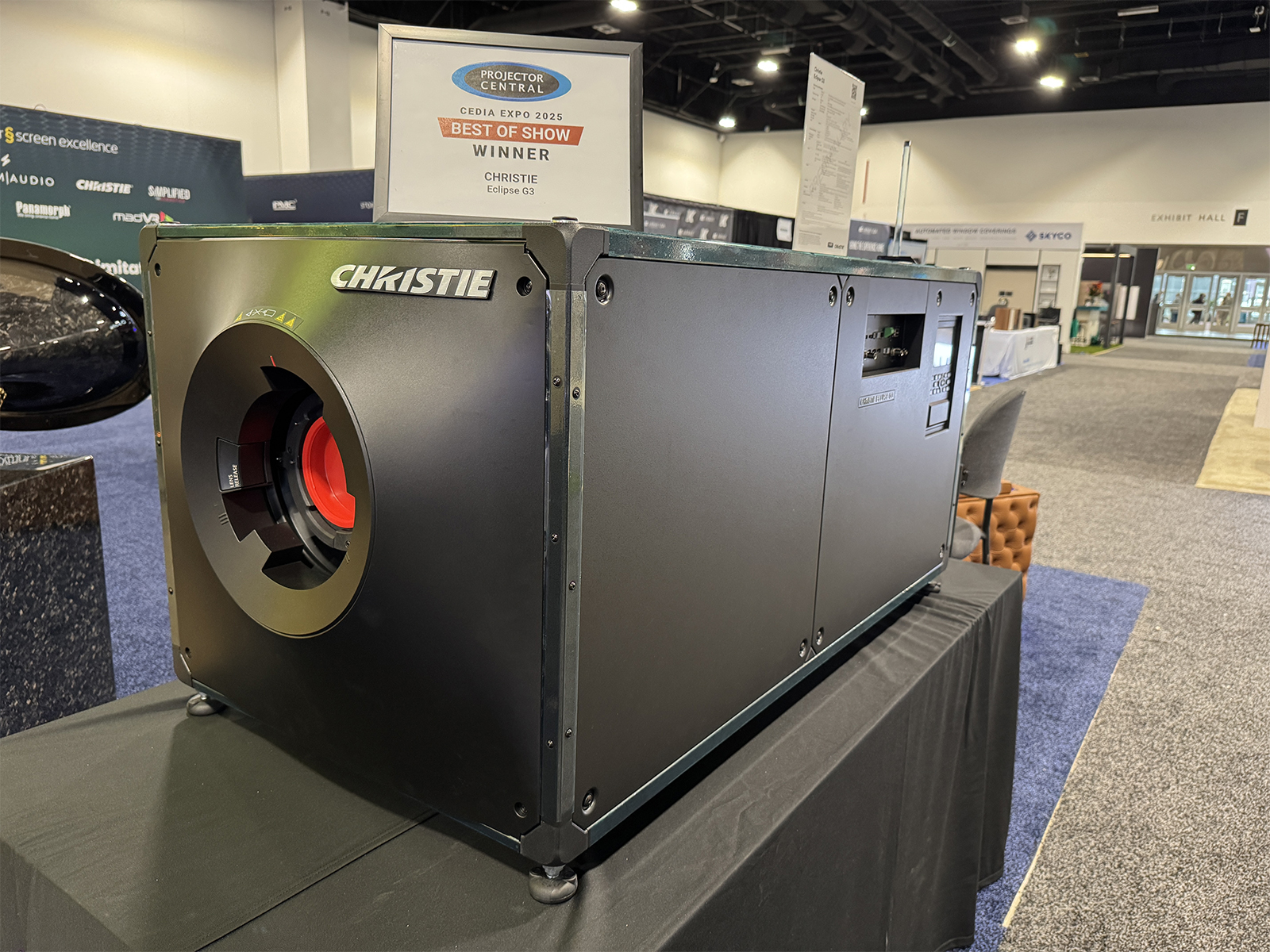
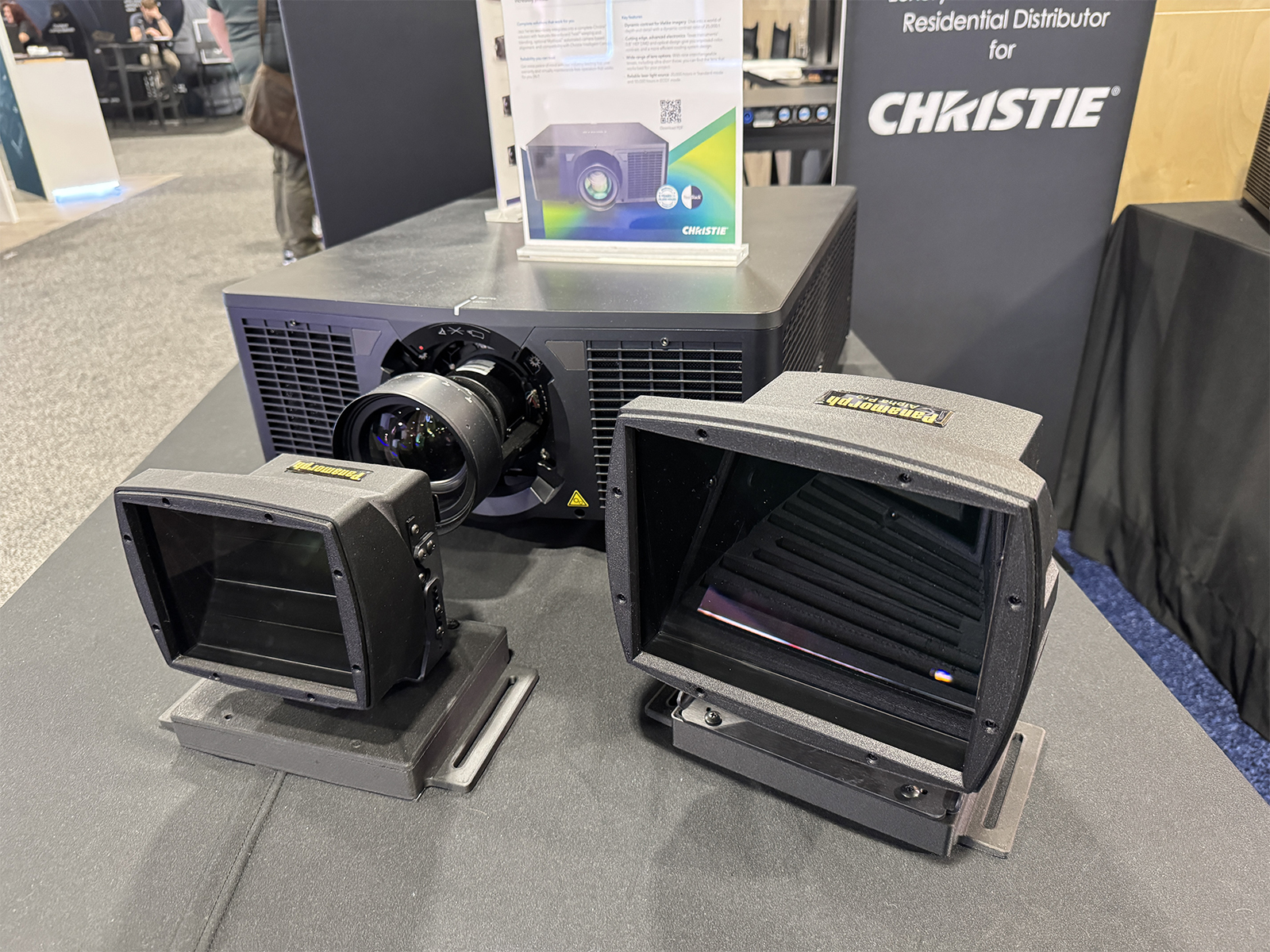 Video processing was courtesy of madVR Labs’ Envy Extreme 8 video processor. Seymour-Screen Excellence supplied its retractable MFR screen using its Enlightor-NEO screen material. Simplified Acoustics provided all the acoustic room treatments, and German firm Moovia provided the extremely comfortable seating. So, what does a $1.3 million dollar theater installation sound like? Pretty darn effortless! For those who believe that there is no such thing as overkill, this room is for you!
Video processing was courtesy of madVR Labs’ Envy Extreme 8 video processor. Seymour-Screen Excellence supplied its retractable MFR screen using its Enlightor-NEO screen material. Simplified Acoustics provided all the acoustic room treatments, and German firm Moovia provided the extremely comfortable seating. So, what does a $1.3 million dollar theater installation sound like? Pretty darn effortless! For those who believe that there is no such thing as overkill, this room is for you!
Ascendo Immersive Audio
And speaking of Ascendo, outside of the million-dollar theater sound room, they had this gorgeous-looking 2.2 channel audio setup with a pair of their Black Swan Pro Active EXT loudspeakers and a pair of THE28 Sub Squared infrasonic subwoofers.
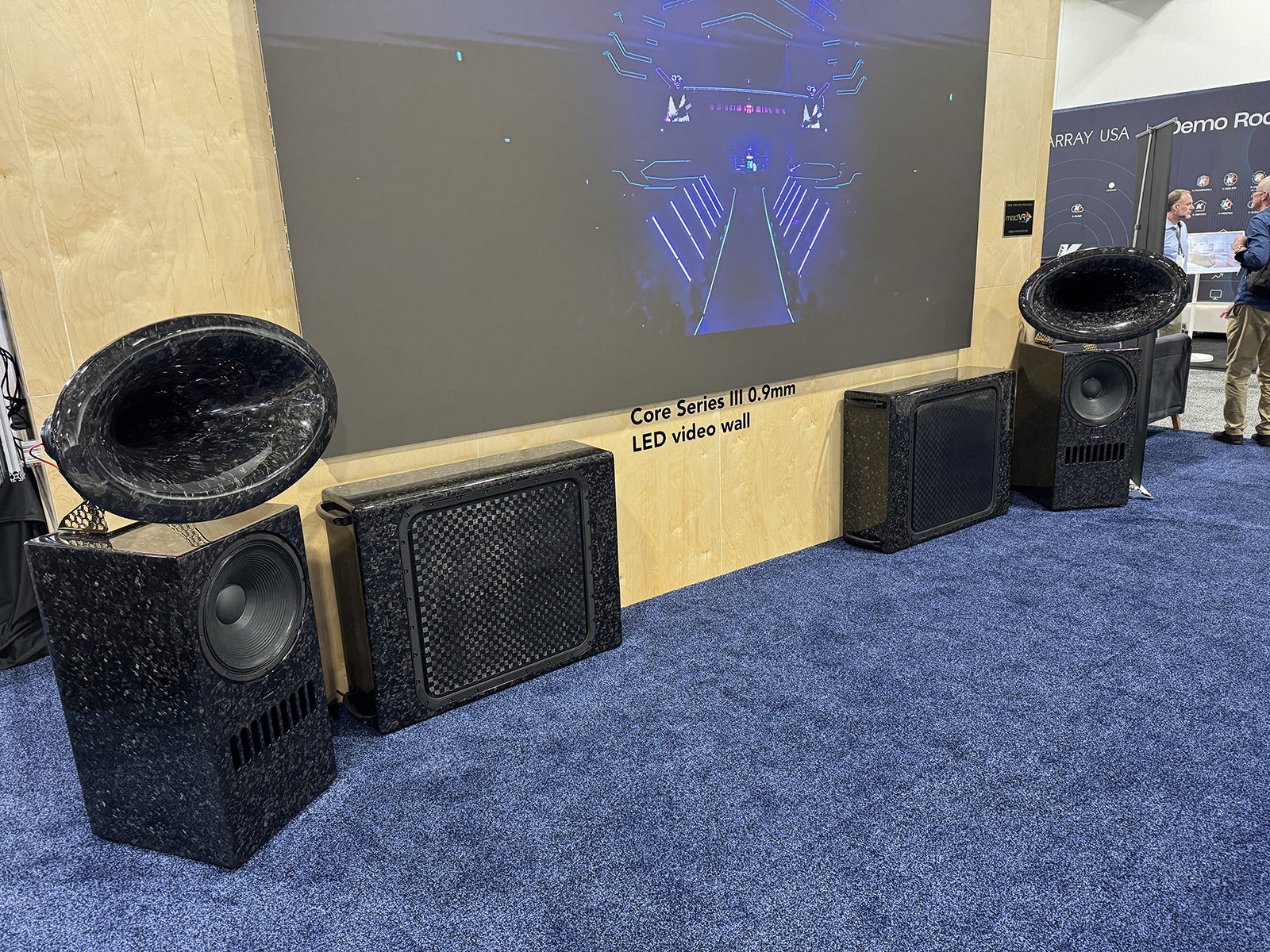
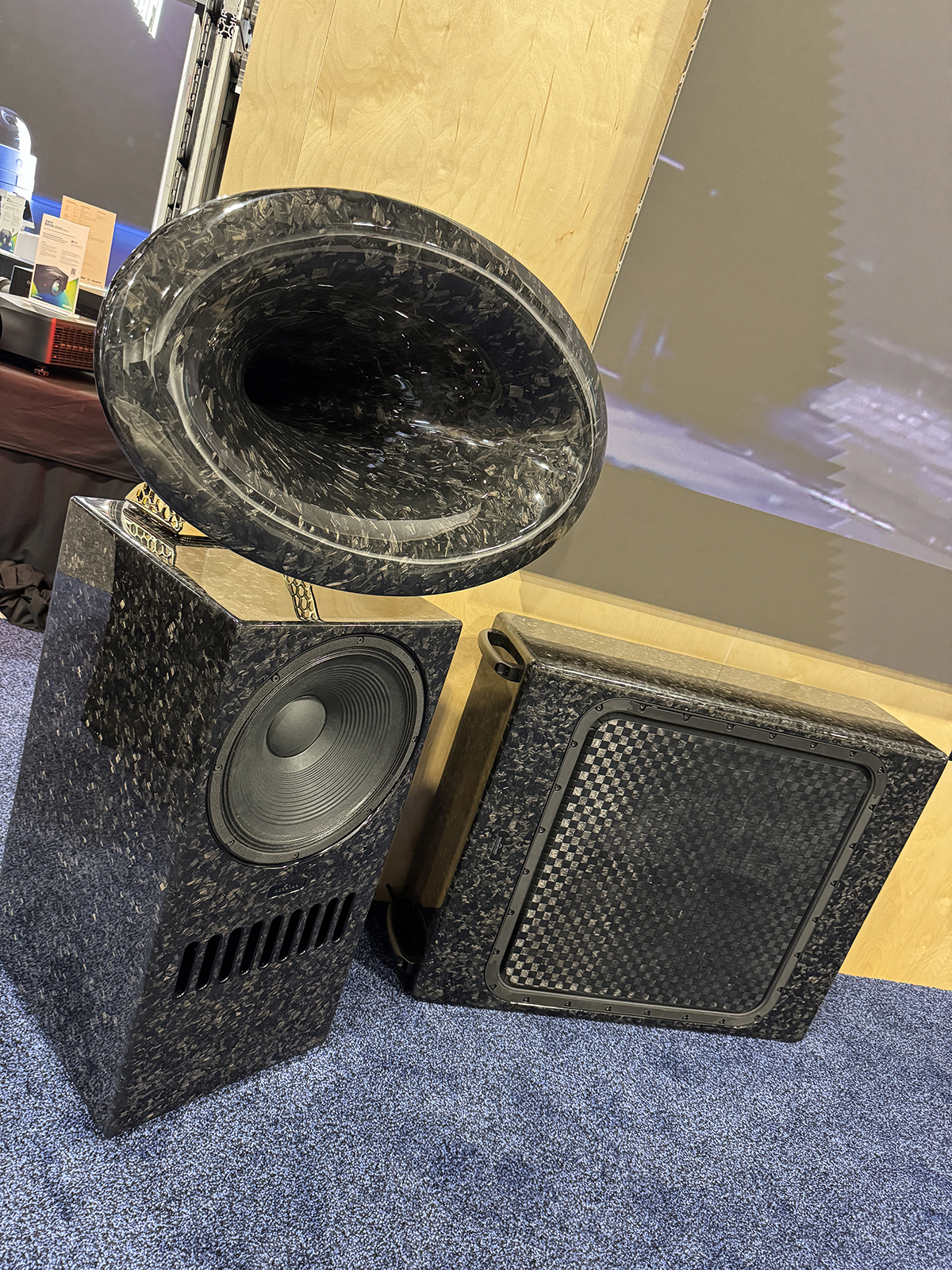
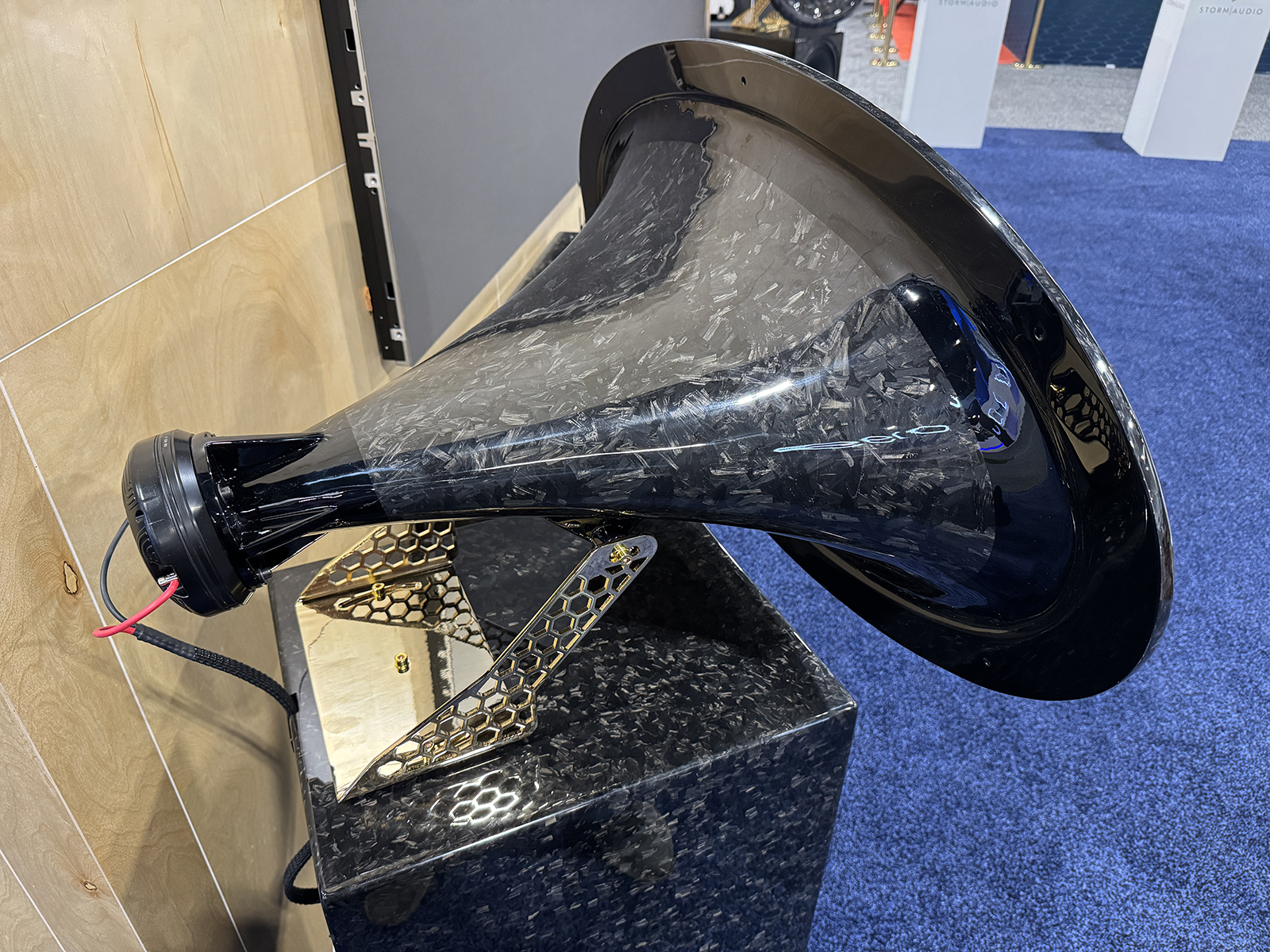
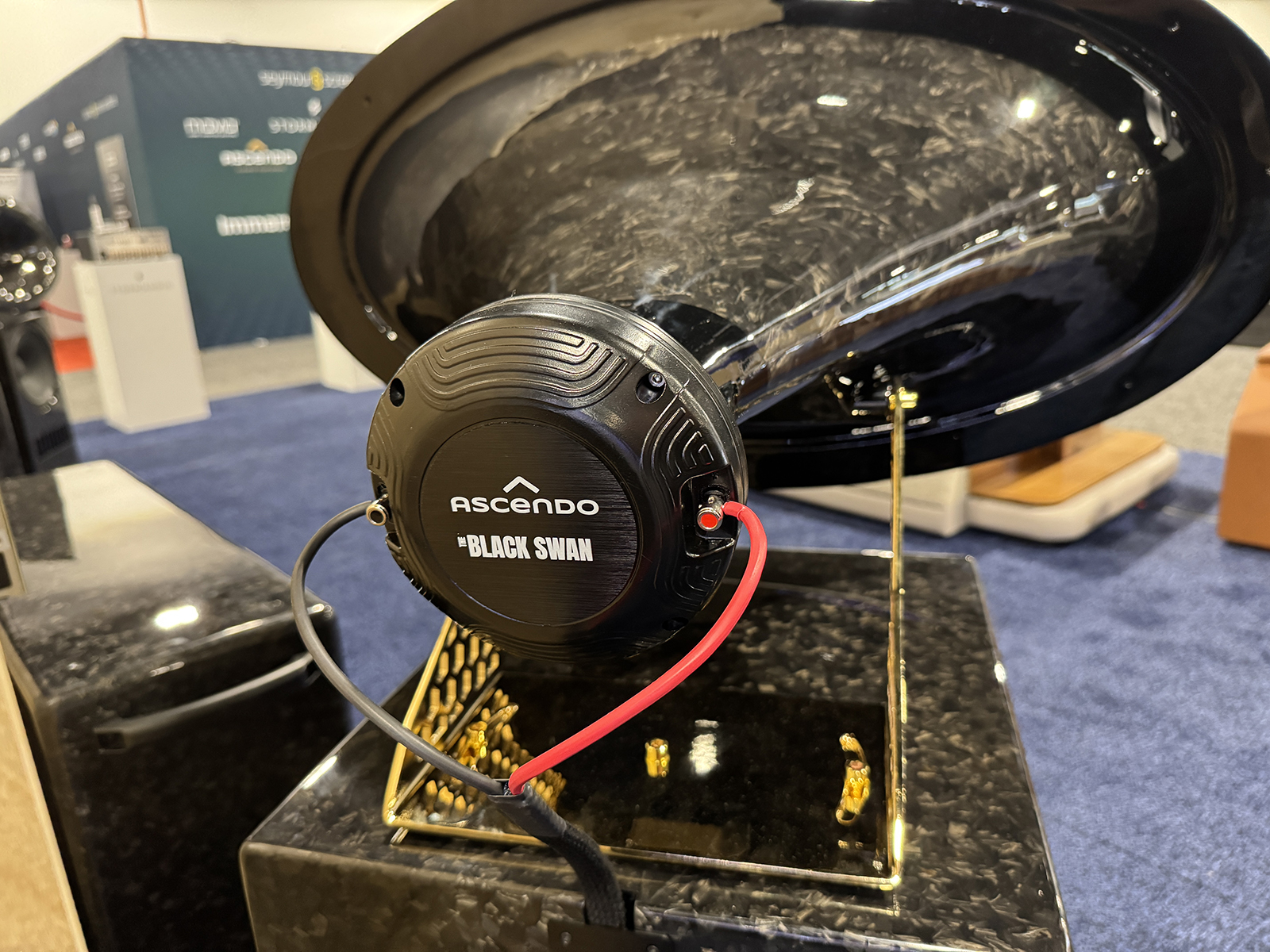 All of the speakers were showing off a stunning, polished carbon fiber finish.
All of the speakers were showing off a stunning, polished carbon fiber finish.
Perlisten
The Perlisten team had established itself at an offsite location from the Denver Convention Center. It was a decidedly stylish loft space that had a rather tasty 2.2-channel audio setup to be sampled by lucky people like me. 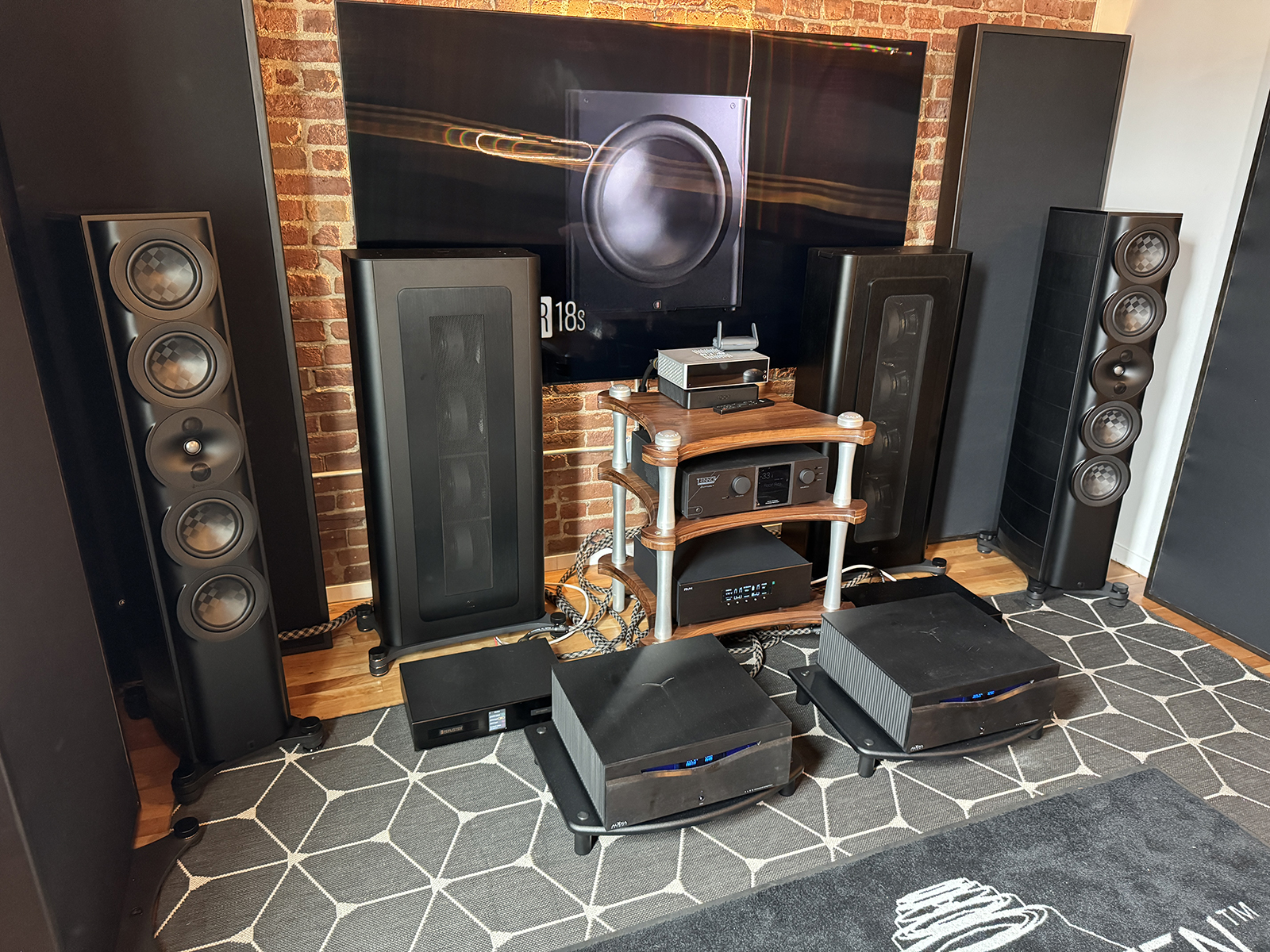 It consisted of a pair of Perlisten S7t Black Edition speakers and a pair of the new D8is subwoofers. The system was controlled by a Trinnov Altitude 16 processor, and a pair of Audia Flight FLS8 monoblock amplifiers powered the speakers.
It consisted of a pair of Perlisten S7t Black Edition speakers and a pair of the new D8is subwoofers. The system was controlled by a Trinnov Altitude 16 processor, and a pair of Audia Flight FLS8 monoblock amplifiers powered the speakers.
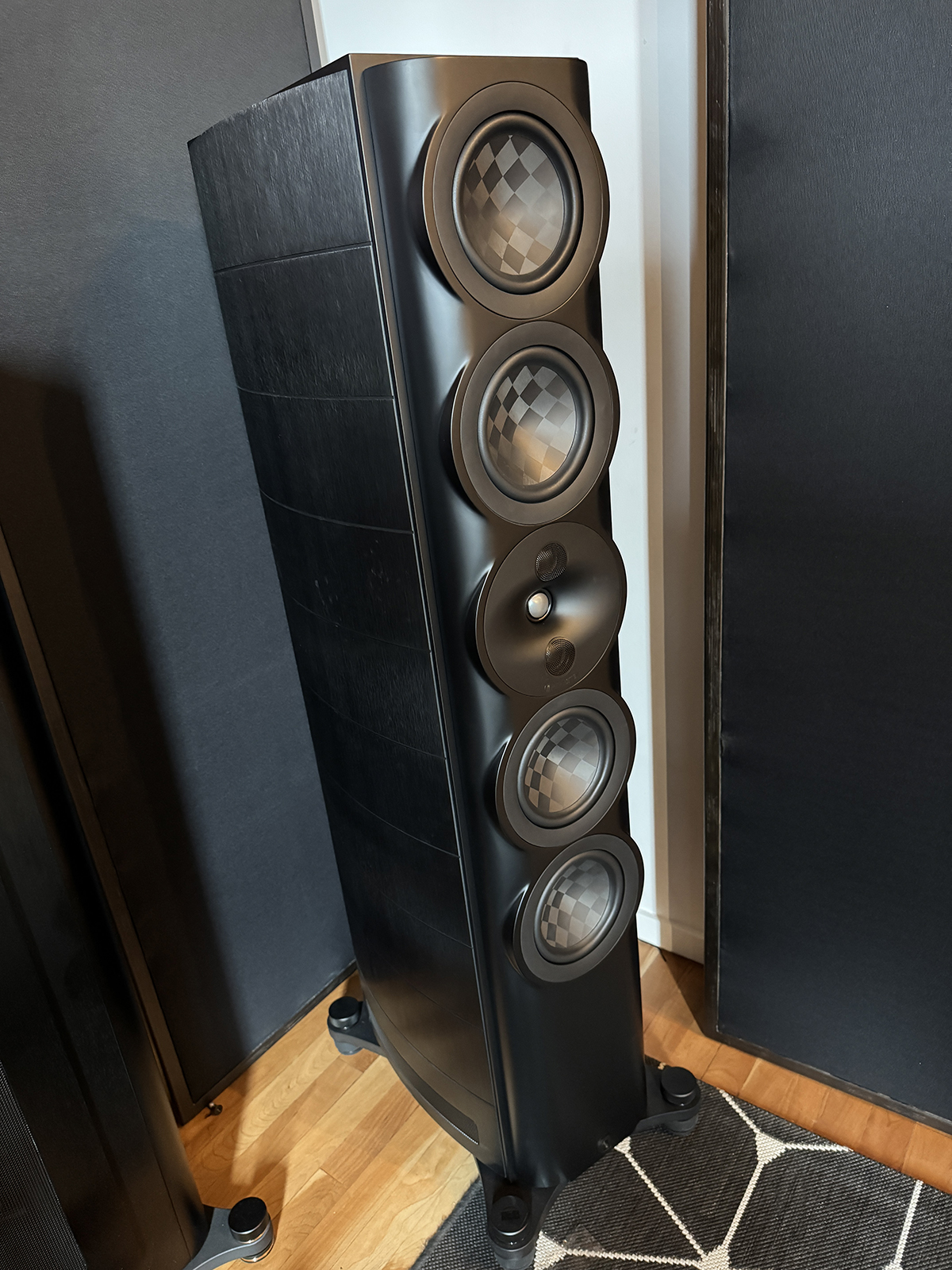
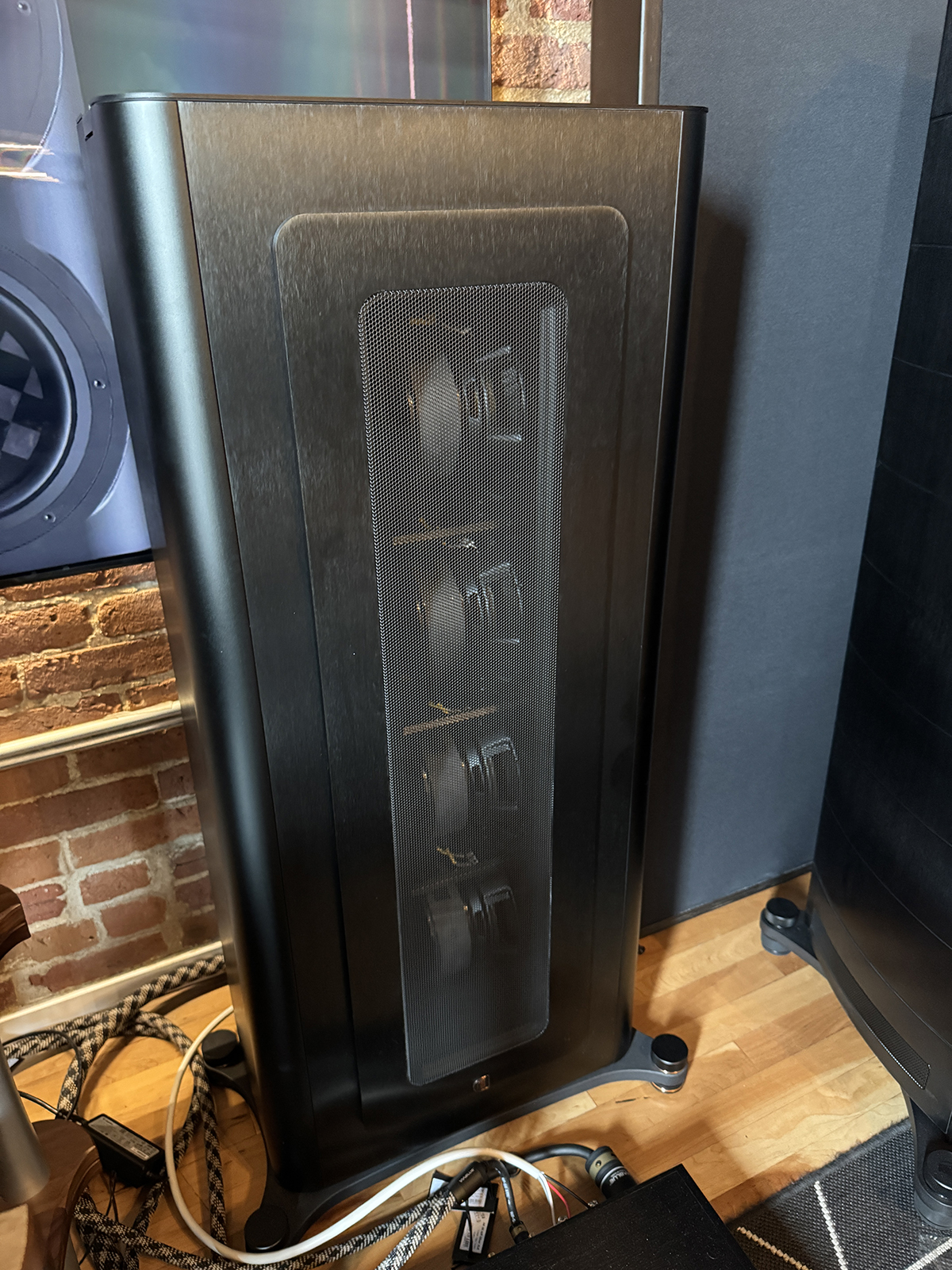 The subwoofers had their own bespoke external DSP and amplification. For those that don’t know, the S7t Black Edition benefits from several of the technical improvements and lessons learned in the development of the S7t Limited Edition, which are applied throughout the speaker. The CNC-milled and anodized aluminum side panels look striking and provide additional mass and rigidity to an already well-damped cabinet. The D8is Subwoofers were configured with their pedestals so they could be positioned as traditional subs, but with their vertically arrayed eight visible push-pull drivers, the D8i looked especially menacing. Power conditioning was provided by AVM, and cabling was courtesy of Viablue.
The subwoofers had their own bespoke external DSP and amplification. For those that don’t know, the S7t Black Edition benefits from several of the technical improvements and lessons learned in the development of the S7t Limited Edition, which are applied throughout the speaker. The CNC-milled and anodized aluminum side panels look striking and provide additional mass and rigidity to an already well-damped cabinet. The D8is Subwoofers were configured with their pedestals so they could be positioned as traditional subs, but with their vertically arrayed eight visible push-pull drivers, the D8i looked especially menacing. Power conditioning was provided by AVM, and cabling was courtesy of Viablue.
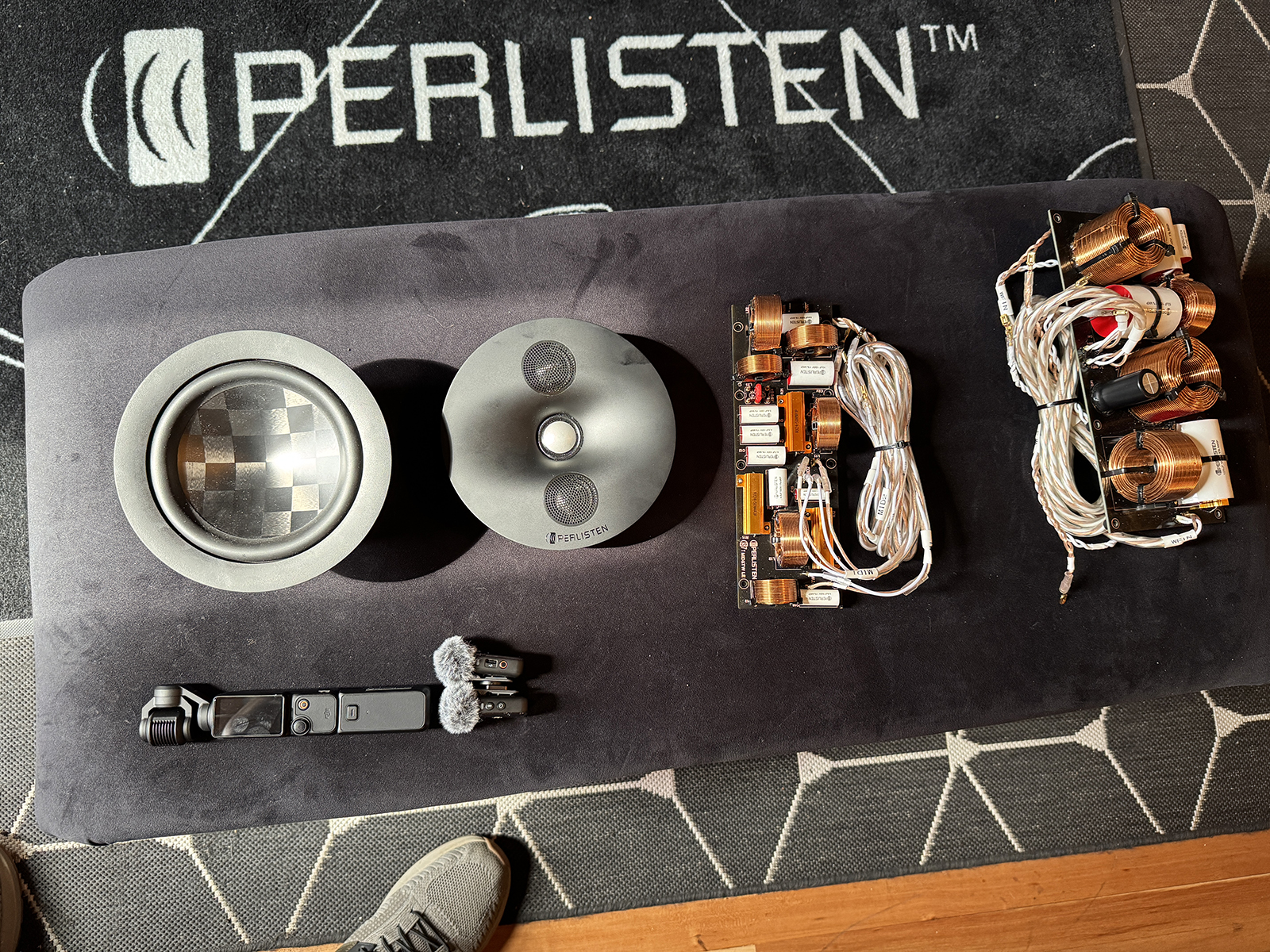
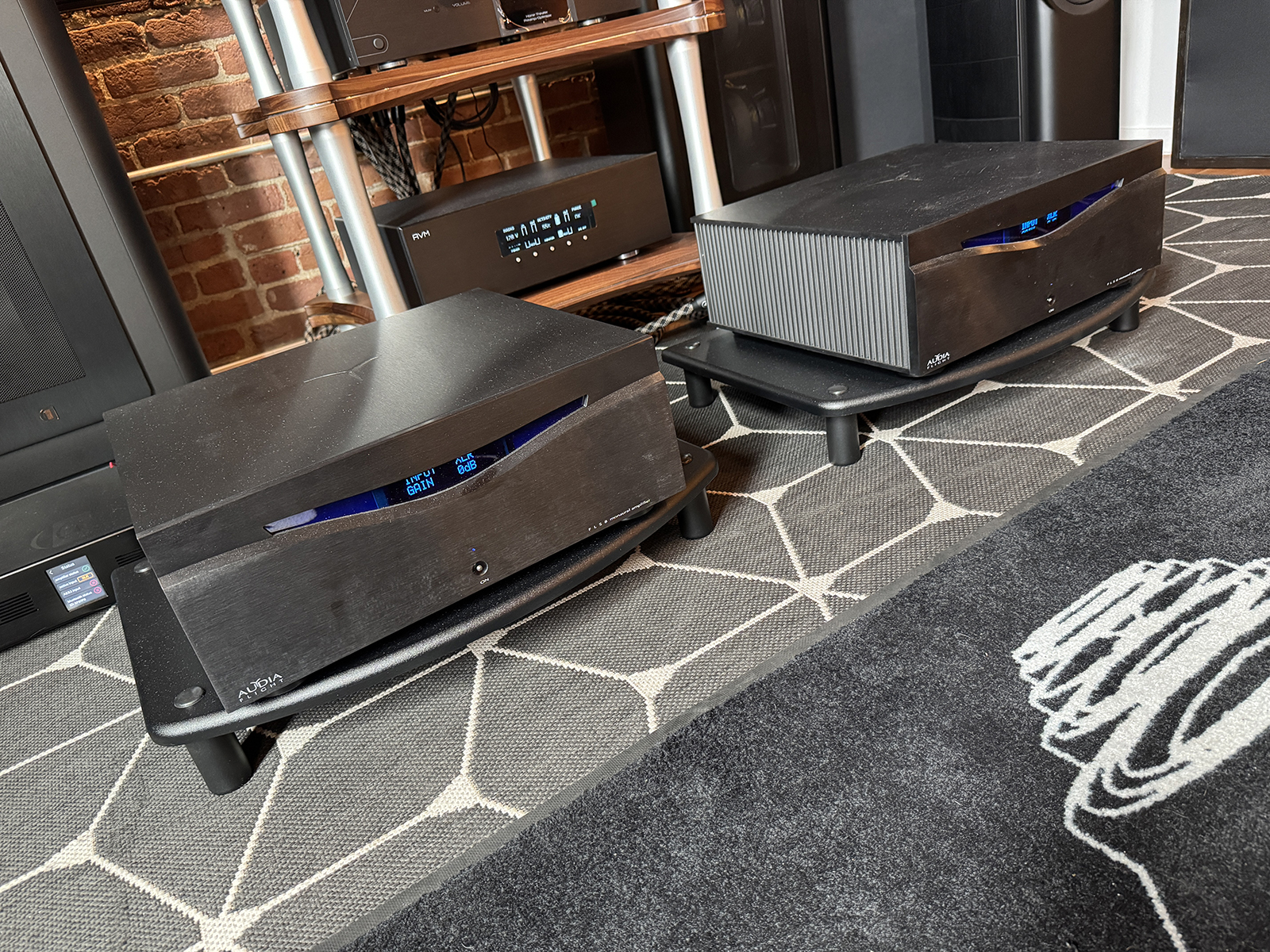 After walking me through the finer details of the system, Perlisten CEO Dan Roemer let me play some familiar tracks to get a sense of the system’s capabilities. The combination just sounded natural and effortless with bass reach and dynamics that went on for days. If it wasn’t for other appointments I had back at the convention center, I could have spent the rest of the day parked right there!
After walking me through the finer details of the system, Perlisten CEO Dan Roemer let me play some familiar tracks to get a sense of the system’s capabilities. The combination just sounded natural and effortless with bass reach and dynamics that went on for days. If it wasn’t for other appointments I had back at the convention center, I could have spent the rest of the day parked right there!
Bowers & Wilkins/Marantz
One of the hottest looking (and frankly sounding) things at CEDIA this year was these Bowers & Wilkins Nautilus speakers finished in legit Ferrari Red paint.
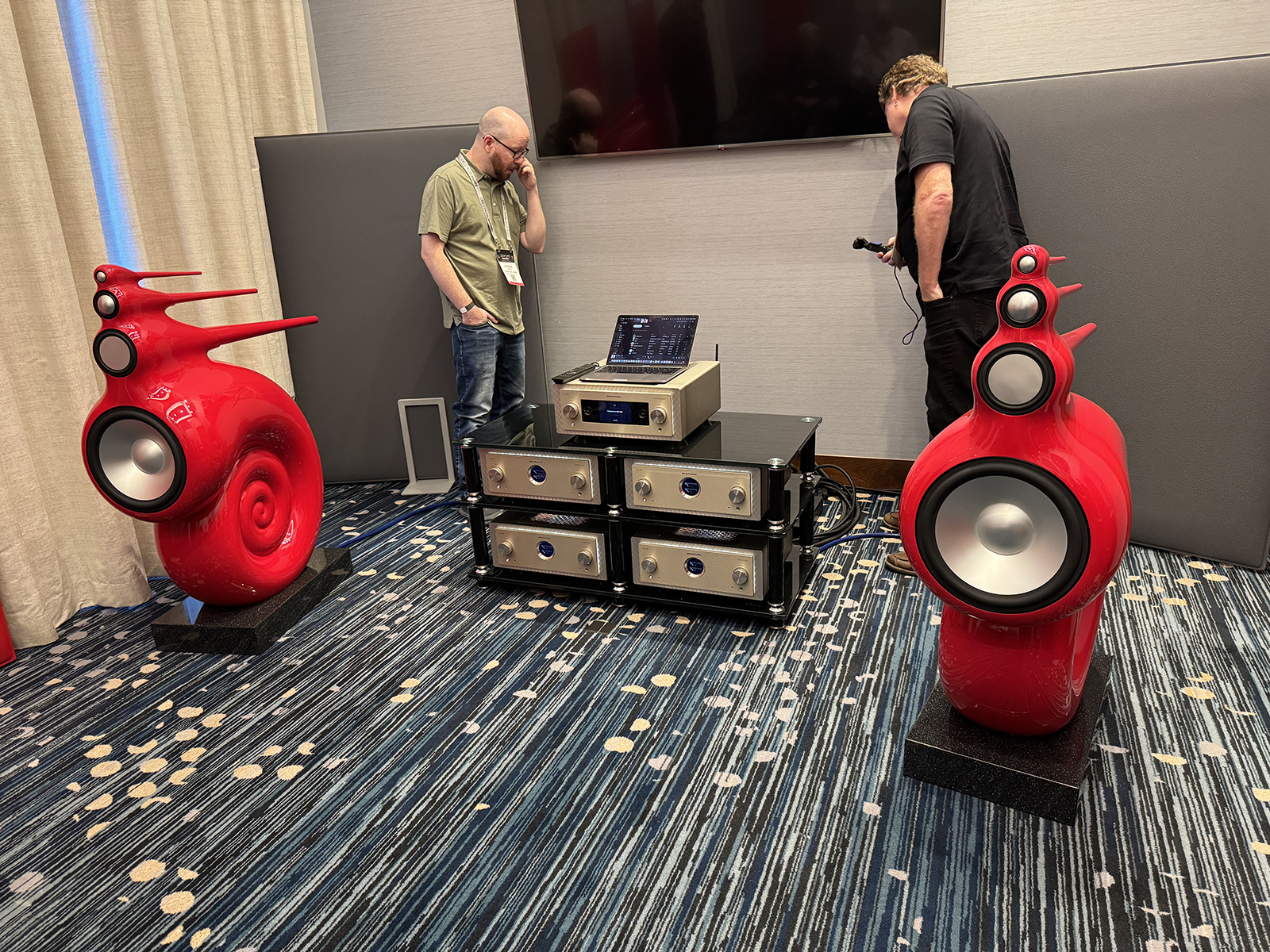
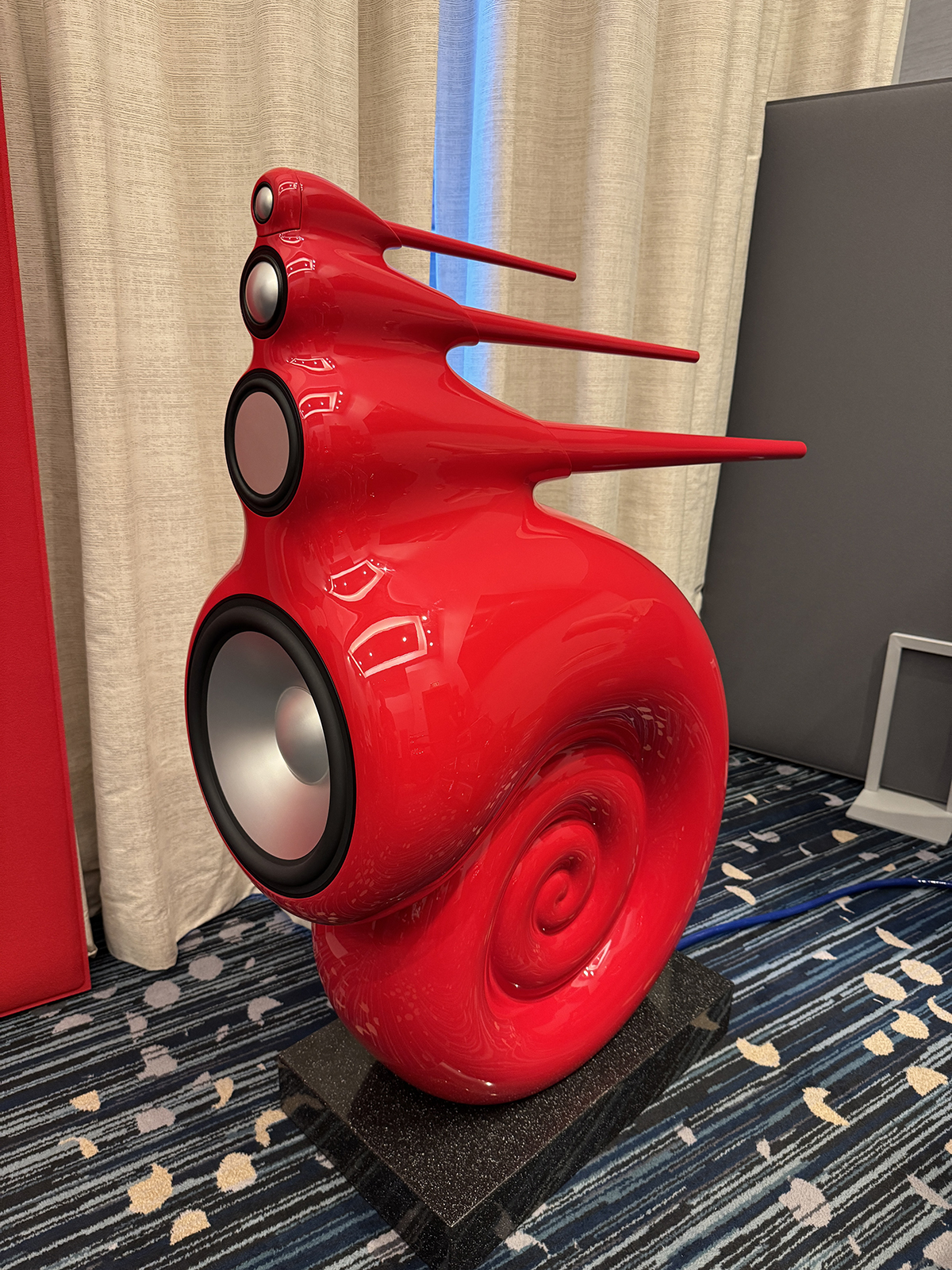
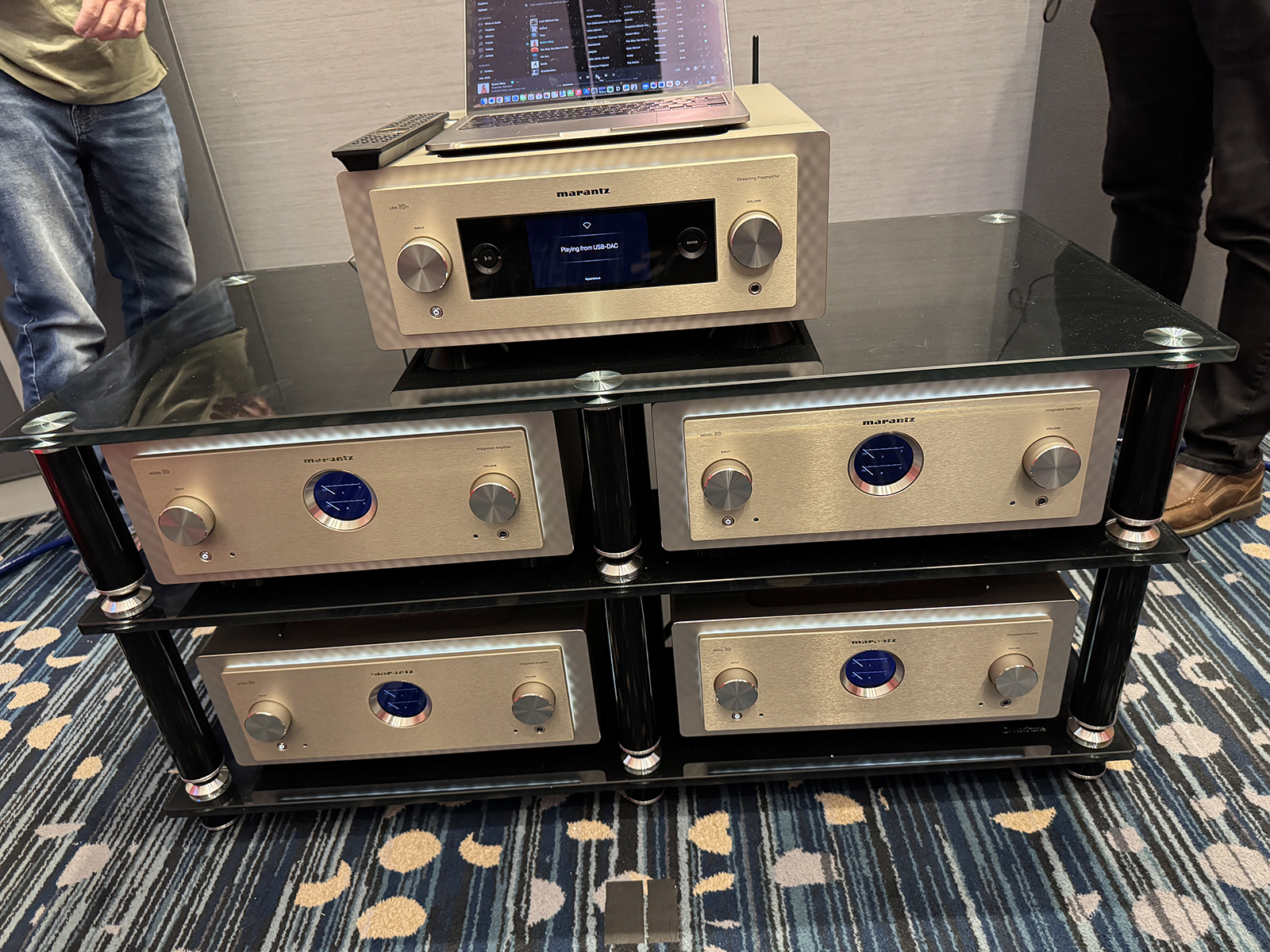
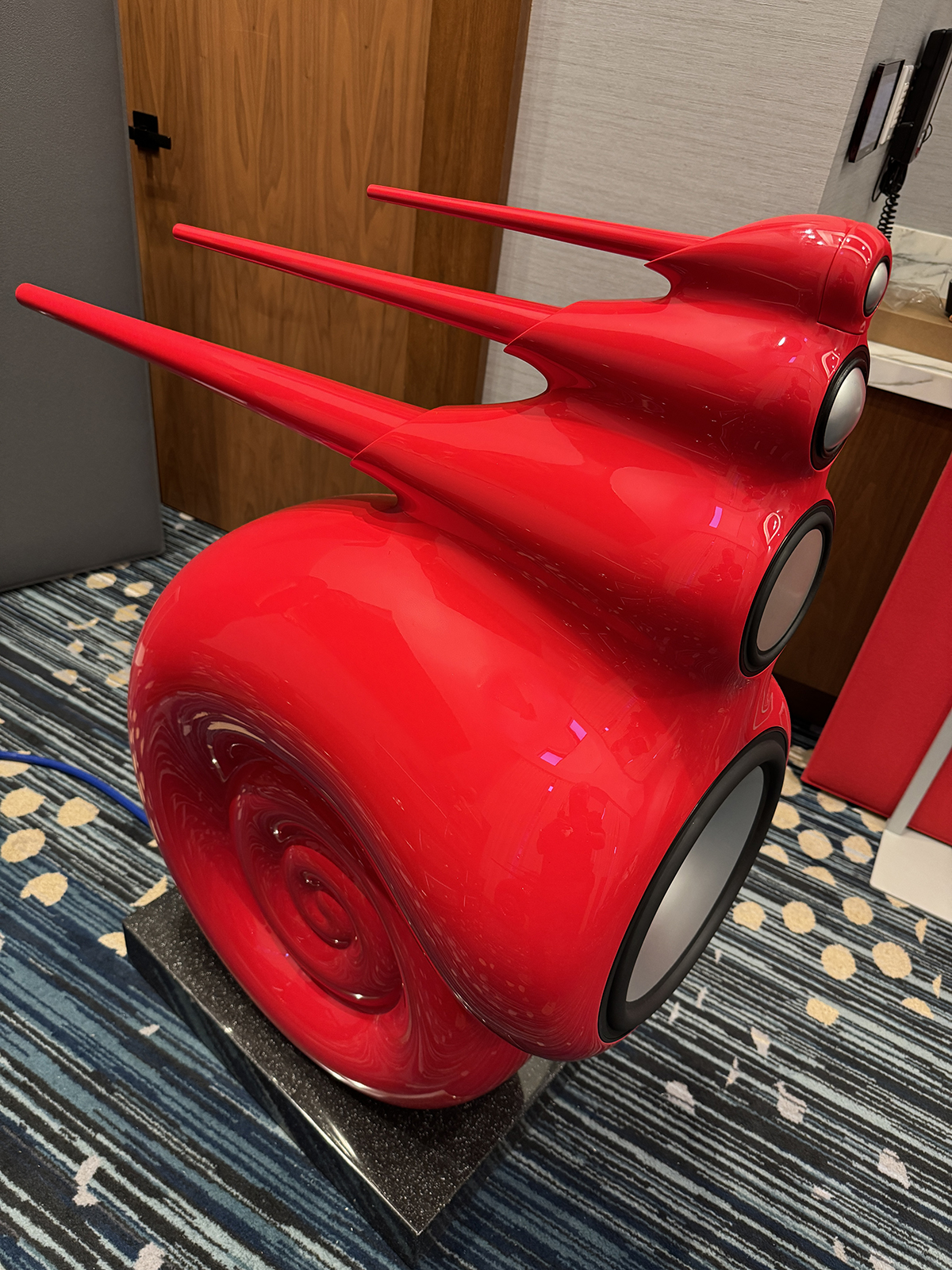
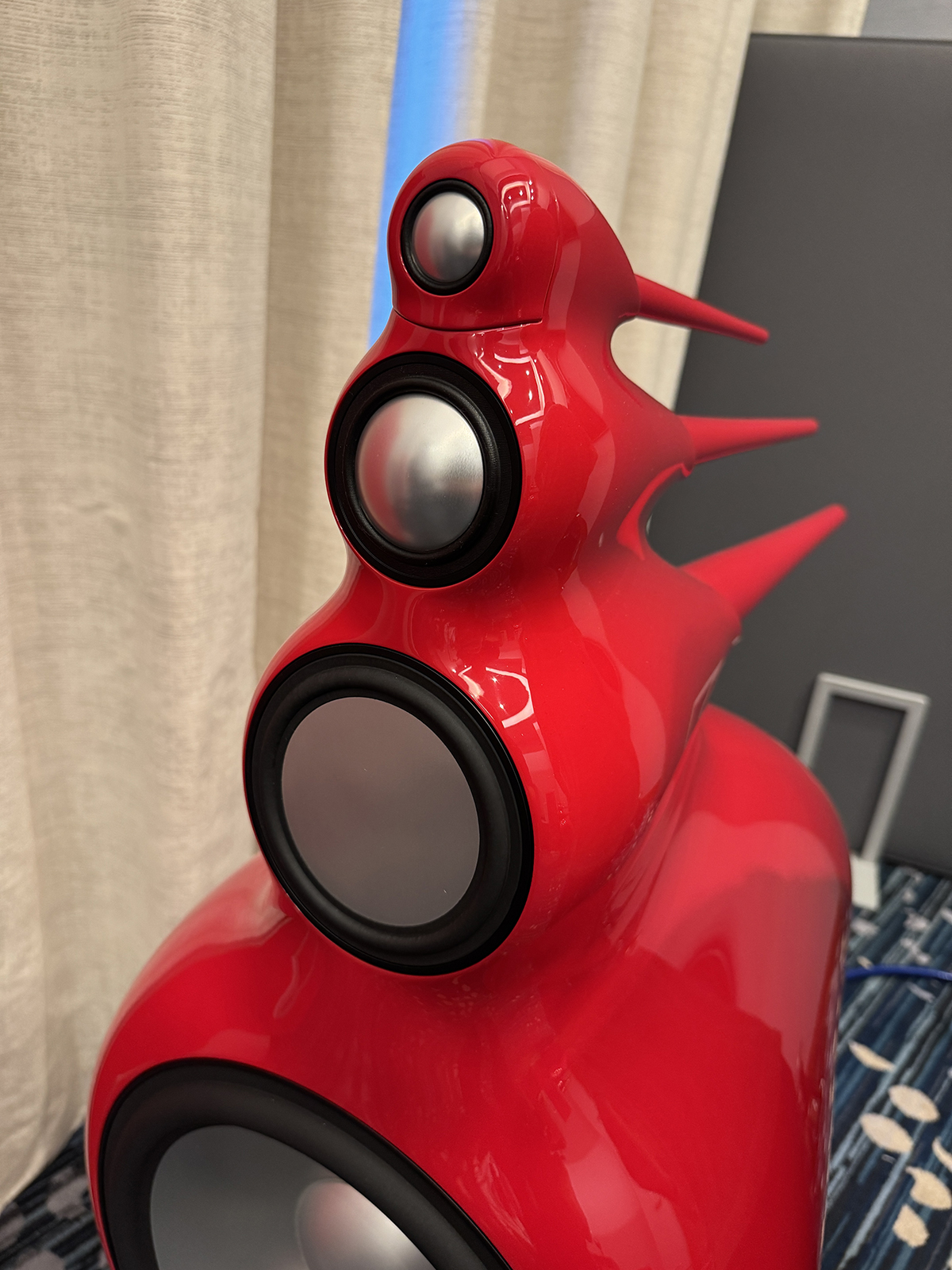
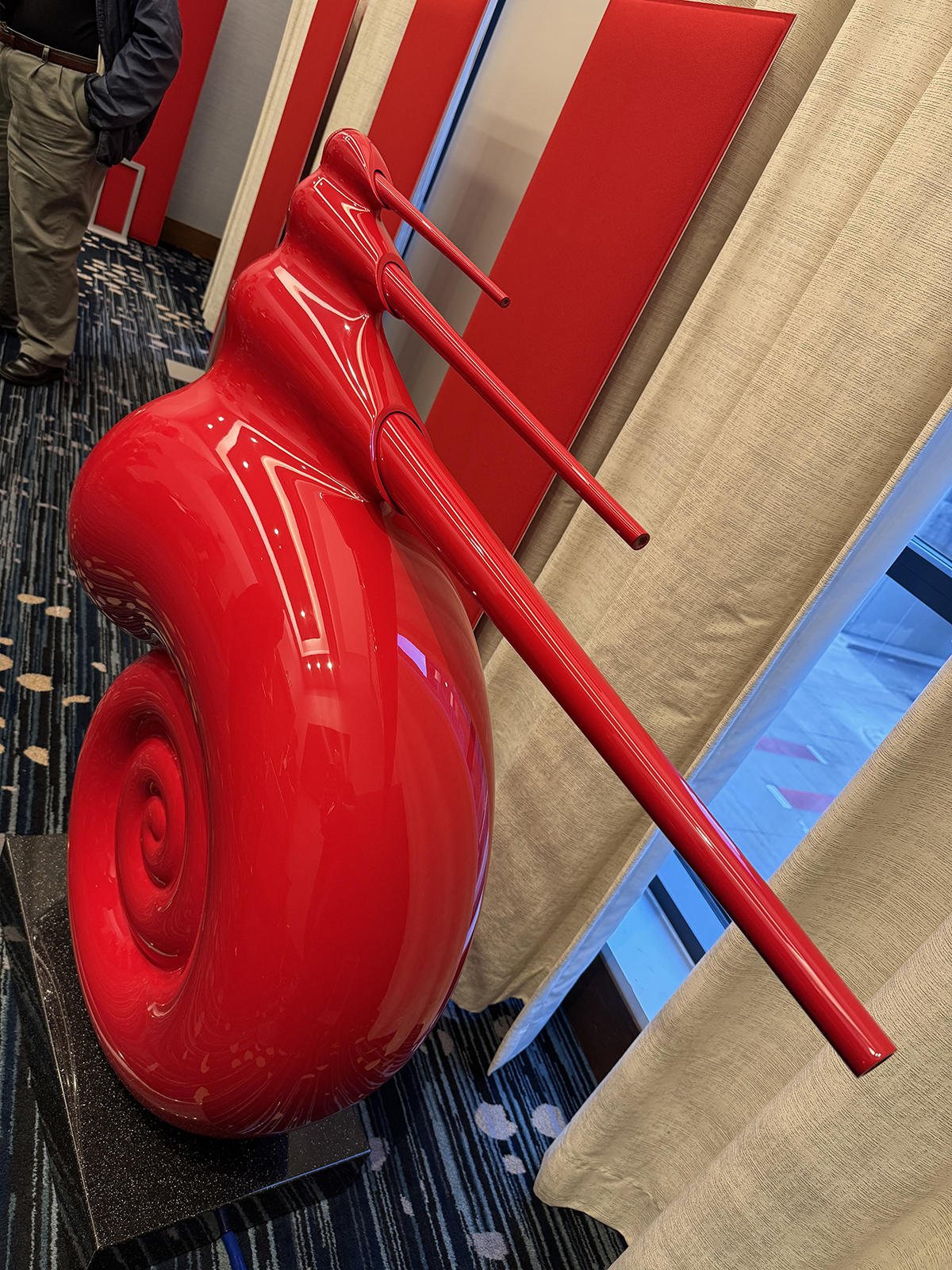 Gorgeous looking from any angle in this hue. Driven by a multitude of Marantz Model 10 Series components, the audio was just as striking as the visuals. The Marantz Model 10 Integrated amps were running as amplifier channels, with control and sourcing duties being performed by the Marantz Link 10 streamer/preamp.
Gorgeous looking from any angle in this hue. Driven by a multitude of Marantz Model 10 Series components, the audio was just as striking as the visuals. The Marantz Model 10 Integrated amps were running as amplifier channels, with control and sourcing duties being performed by the Marantz Link 10 streamer/preamp.
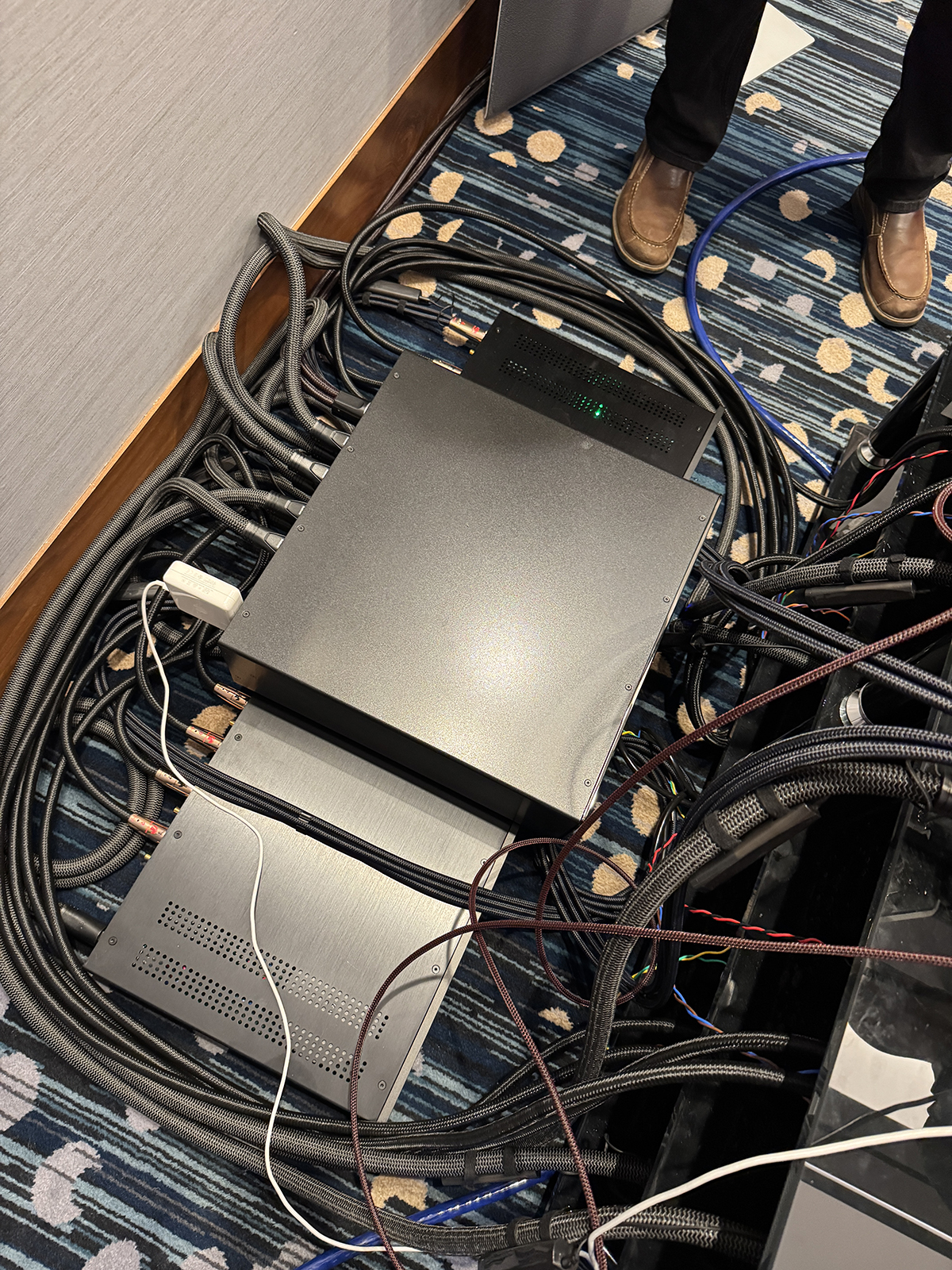 So the signal chain was from the Link 10 to the Nautilus’ external electronic crossovers, then to the amps, and finally to the speaker drivers.
So the signal chain was from the Link 10 to the Nautilus’ external electronic crossovers, then to the amps, and finally to the speaker drivers.
But as they are a speaker pair, should they be referred to as “Nautilii?” Such are the things I ponder…
Klipsch/Onkyo/Integra
Offsite from the convention center at the Teatro Hotel, Klipsch was demonstrating a few new products. First was the new Klipsch Courtyard Series of landscape speakers.
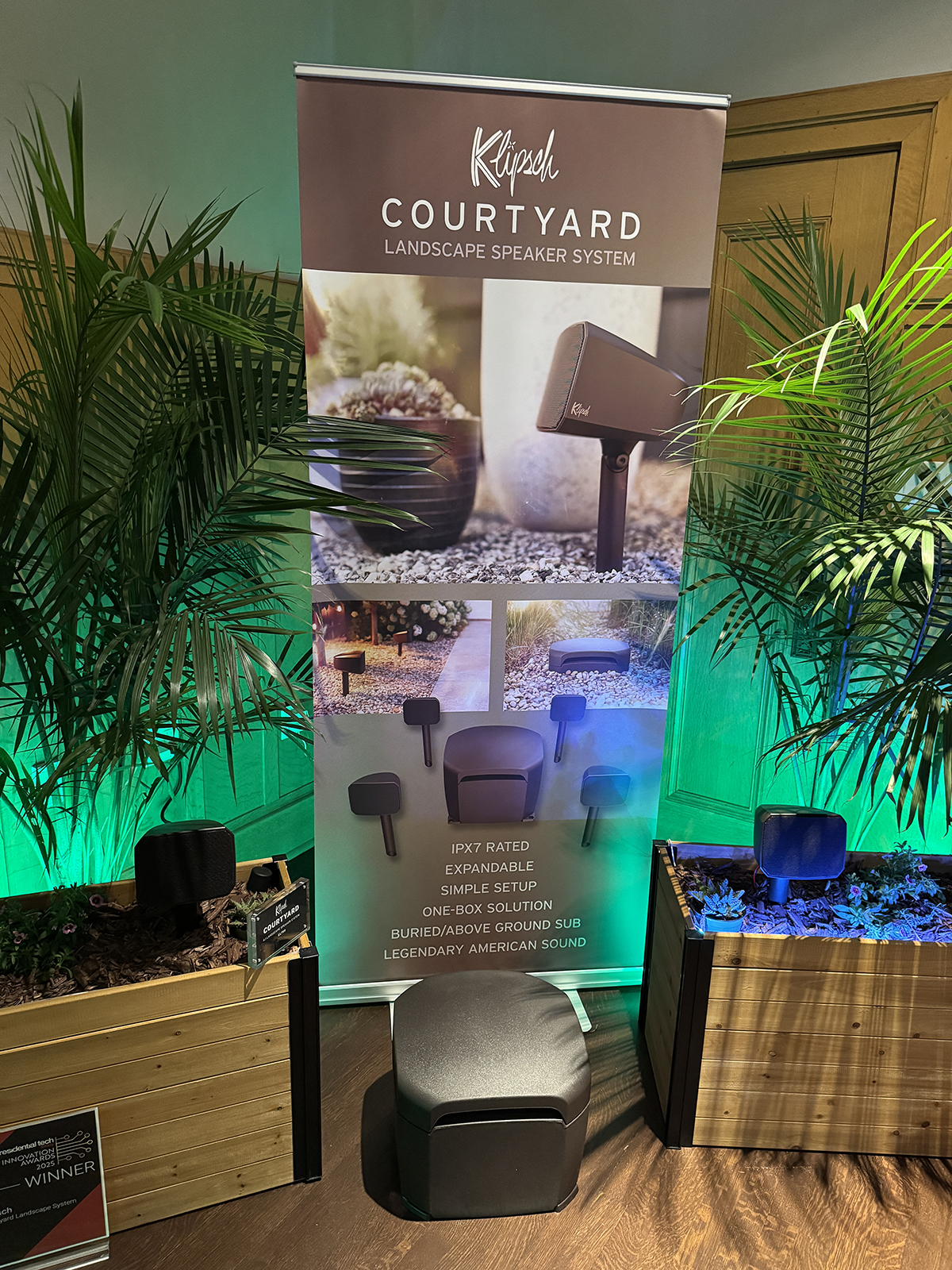 We were able to sample a 4.1 landscape speaker system consisting of four IPX7-rated weatherproof compact speakers and a matching weatherproof outdoor subwoofer. The compact speakers are a two-way design, each with a 4-inch woofer and a 1-inch Tractrix horn-loaded tweeter. The speaker head assemblies can be tilted and locked into place and are mounted on removable landscape spikes.
We were able to sample a 4.1 landscape speaker system consisting of four IPX7-rated weatherproof compact speakers and a matching weatherproof outdoor subwoofer. The compact speakers are a two-way design, each with a 4-inch woofer and a 1-inch Tractrix horn-loaded tweeter. The speaker head assemblies can be tilted and locked into place and are mounted on removable landscape spikes.
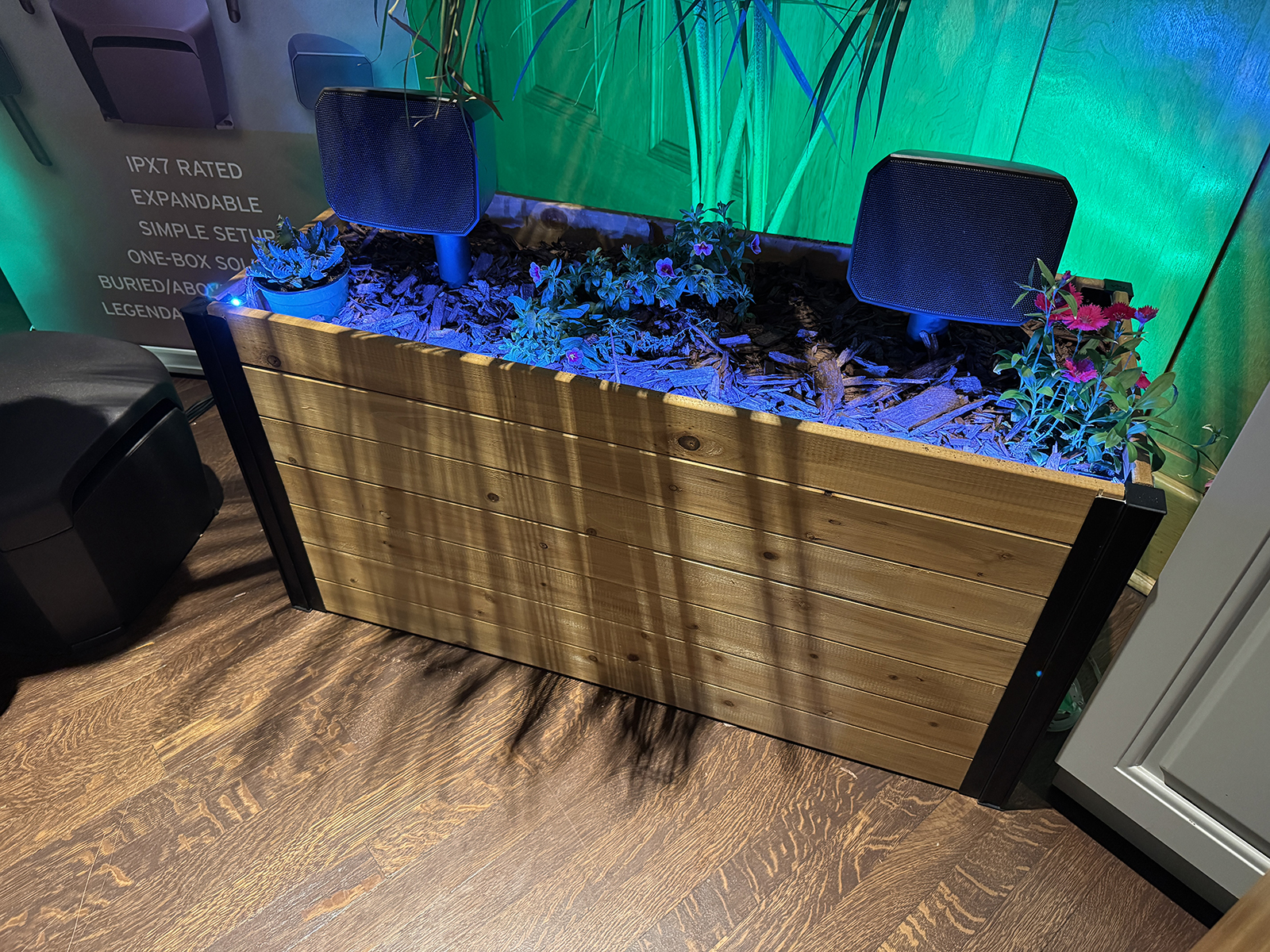
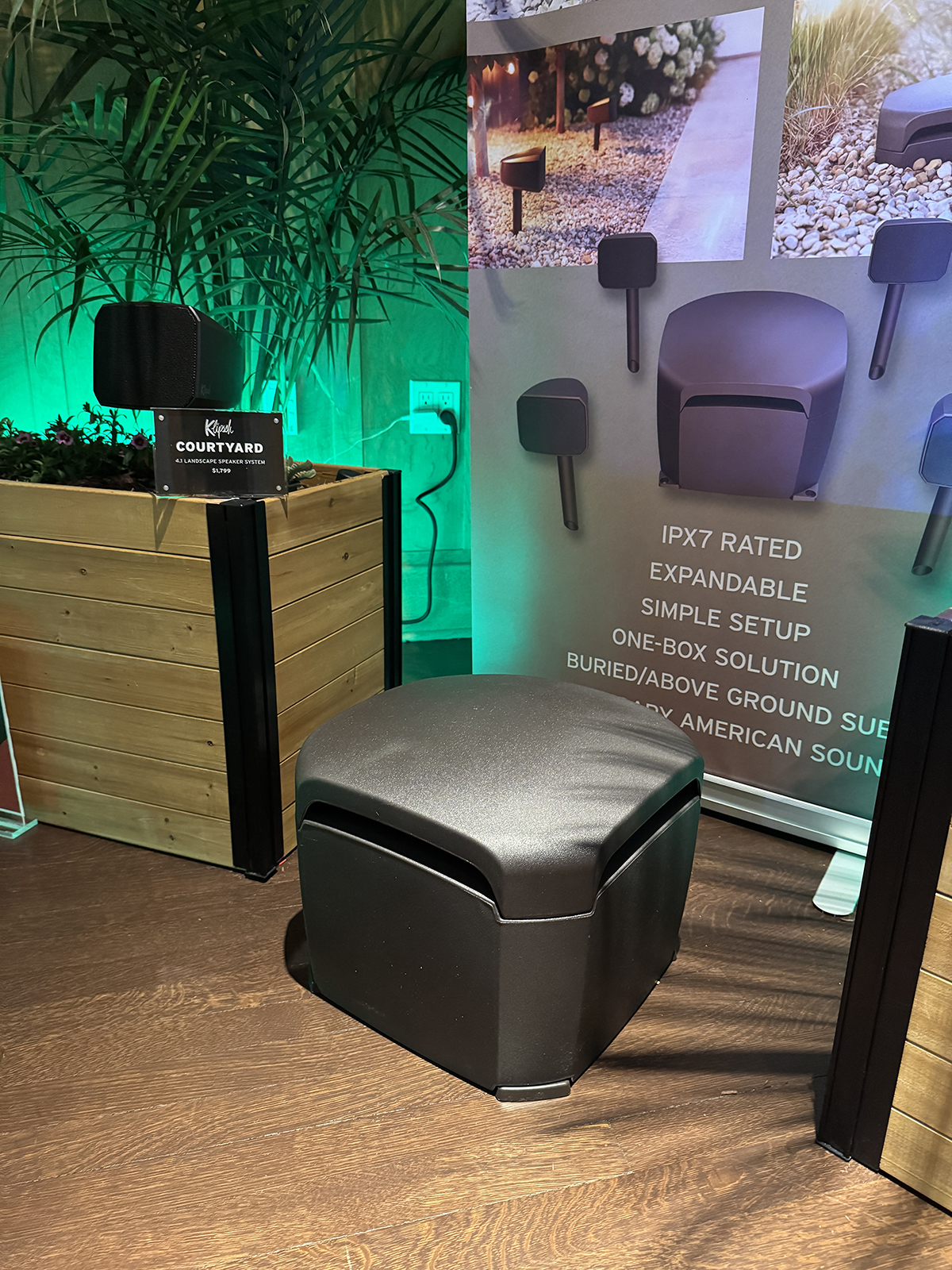 The subwoofer is a low-profile 10-inch design that can be partially buried or sit above ground. The speakers can be powered via the Zone 2 output of a suitable AVR or other external amplification, like the new Integra amps I will detail shortly. The Courtyard 4.1 system will retail for $1,799.99 and be available later this month. A two-speaker expansion pack ($599.99) can also be purchased to expand the system if needed.
The subwoofer is a low-profile 10-inch design that can be partially buried or sit above ground. The speakers can be powered via the Zone 2 output of a suitable AVR or other external amplification, like the new Integra amps I will detail shortly. The Courtyard 4.1 system will retail for $1,799.99 and be available later this month. A two-speaker expansion pack ($599.99) can also be purchased to expand the system if needed.
Onkyo was showing off its Icon P-80 preamplifier ($1,999.99) and Icon M-80 power amplifier ($1,999.99) paired with a very pretty pair of Klipsch Forte IV speakers ($5,499.99/pair).
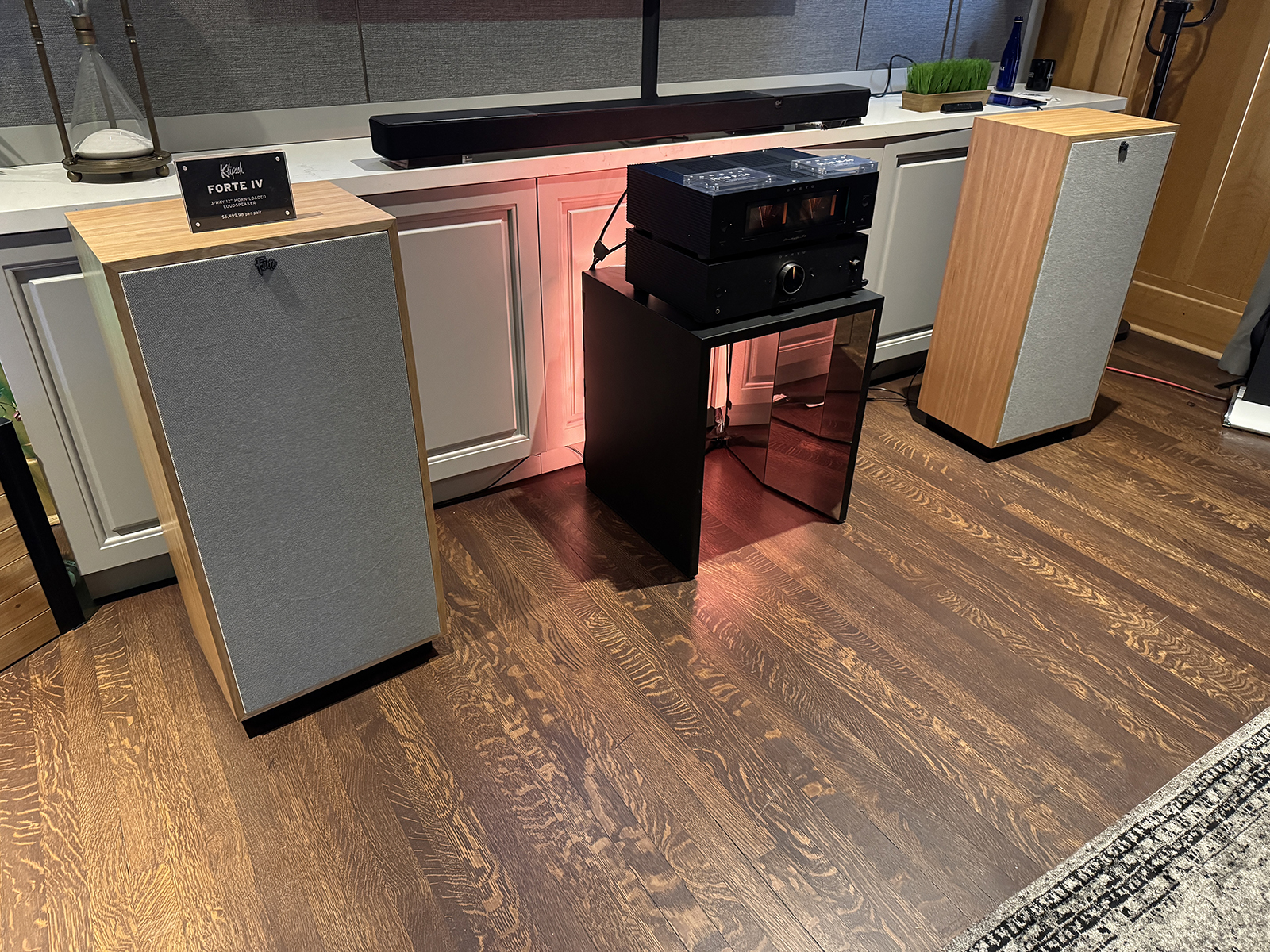
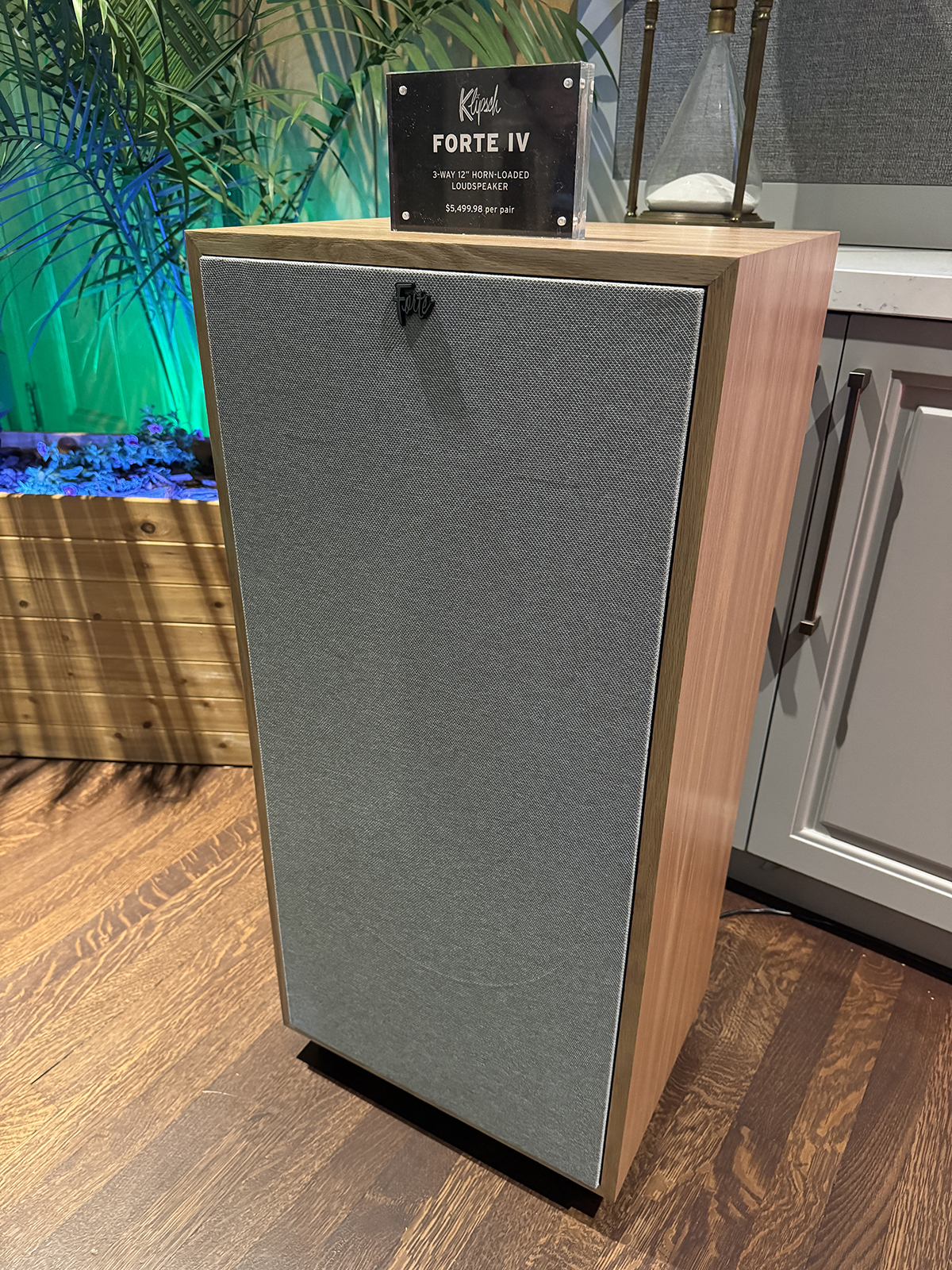 So, for a speck under $10K one could have this very capable system that, with features like DIRAC, streaming functionality, and an MM/MC phono stage, is thoroughly modern in design and yet aesthetically just screams with that classic HiFi vibe all day long.
So, for a speck under $10K one could have this very capable system that, with features like DIRAC, streaming functionality, and an MM/MC phono stage, is thoroughly modern in design and yet aesthetically just screams with that classic HiFi vibe all day long.
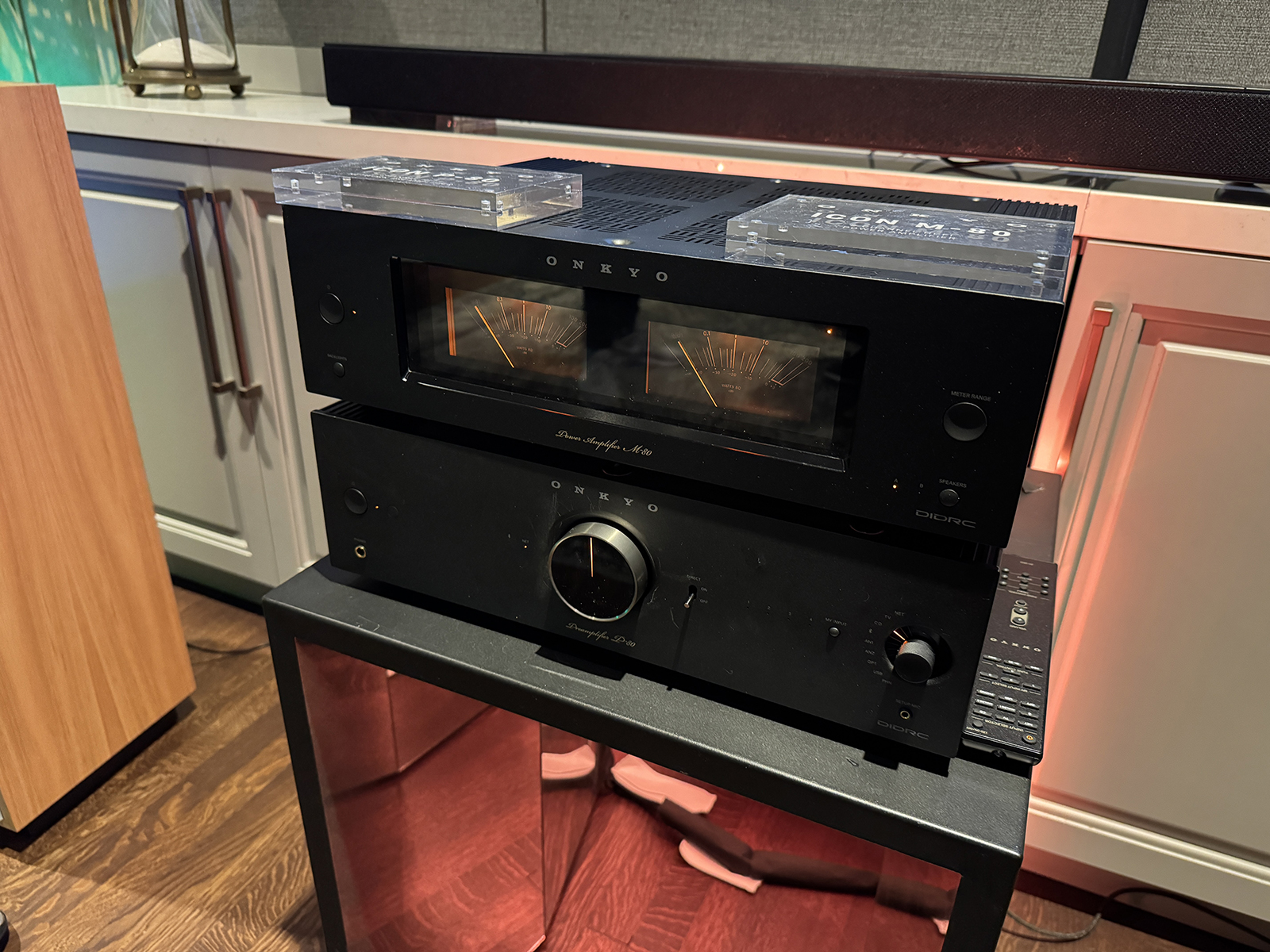
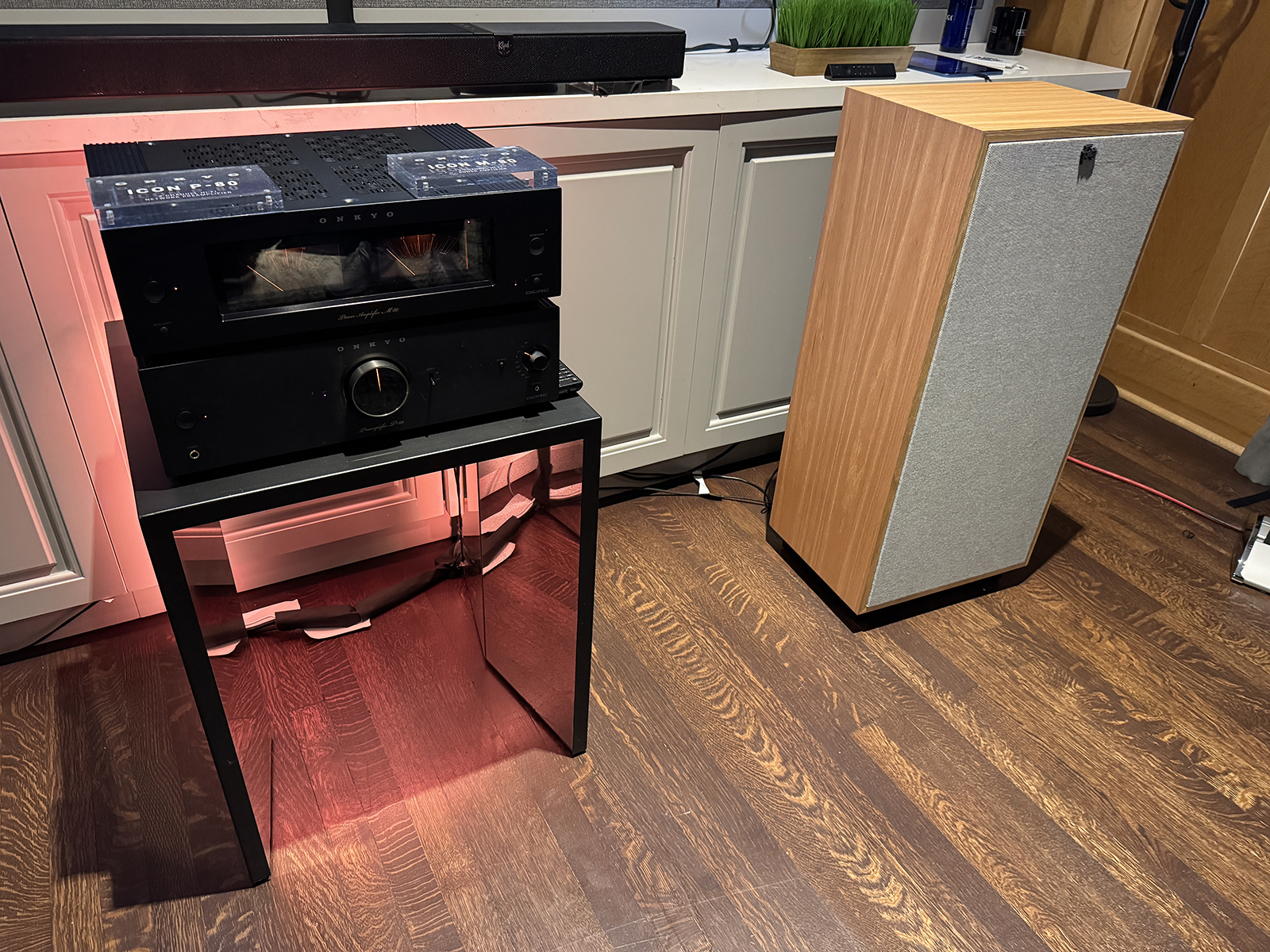 I was begging the reps to bundle the Klipsch Forte IV with a silver Onkyo P-80/M-80 stack with real wood side panels that matched the finish of those speakers. Shut up and take my money!
I was begging the reps to bundle the Klipsch Forte IV with a silver Onkyo P-80/M-80 stack with real wood side panels that matched the finish of those speakers. Shut up and take my money!
Integra just launched a new series of Class-D pro amplifiers made to fit a variety of applications.
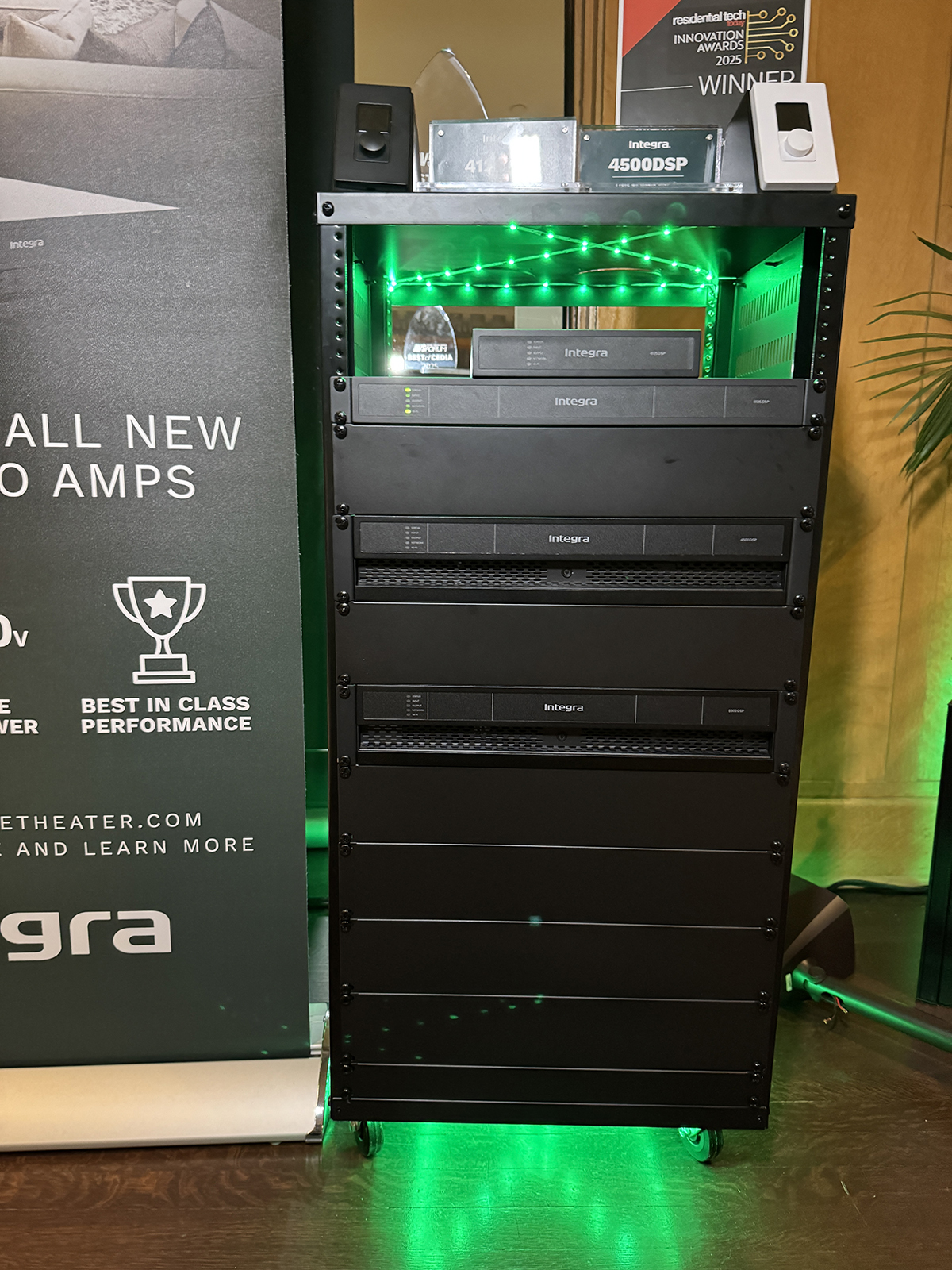 The Integra 4125DSP is a compact, half-rack-width 4-channel amplifier (4 x 125 watts @ 8 ohms). The Integra 4500DSP is a 2RU-height 4-channel amplifier (4 x 250 watts @ 8 ohms) which can be bridged into 2 x 1000 watts. The Integra 8125DSP is a 1RU-height 8-channel amplifier (8 x 125 watts @ 8 ohms). The Integra 8500DSP is a 2RU-height 8-channel amplifier (8 x 250 watts @ 8 ohms) which can be bridged into 4 x 1000 watts.
The Integra 4125DSP is a compact, half-rack-width 4-channel amplifier (4 x 125 watts @ 8 ohms). The Integra 4500DSP is a 2RU-height 4-channel amplifier (4 x 250 watts @ 8 ohms) which can be bridged into 2 x 1000 watts. The Integra 8125DSP is a 1RU-height 8-channel amplifier (8 x 125 watts @ 8 ohms). The Integra 8500DSP is a 2RU-height 8-channel amplifier (8 x 250 watts @ 8 ohms) which can be bridged into 4 x 1000 watts.
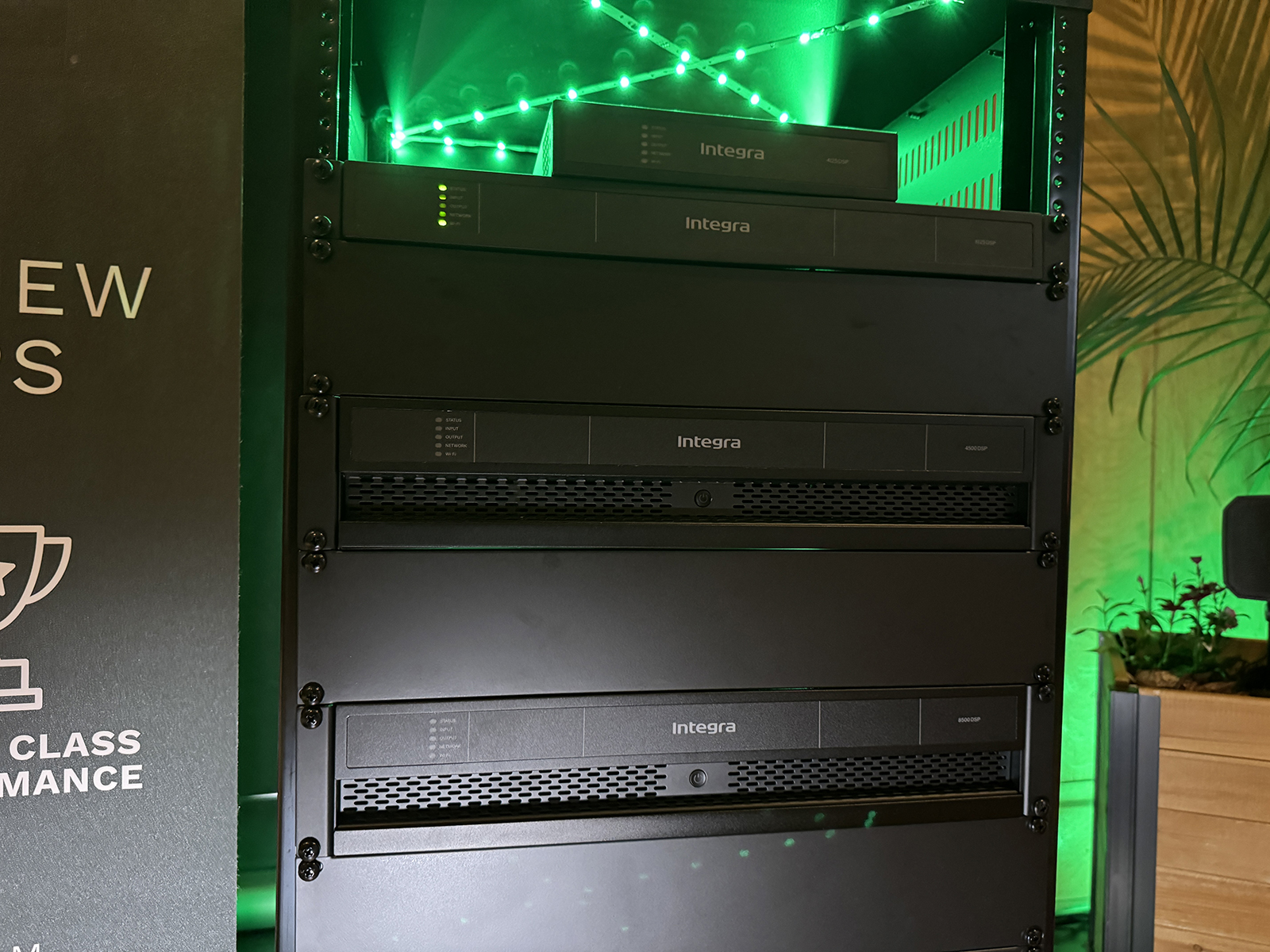
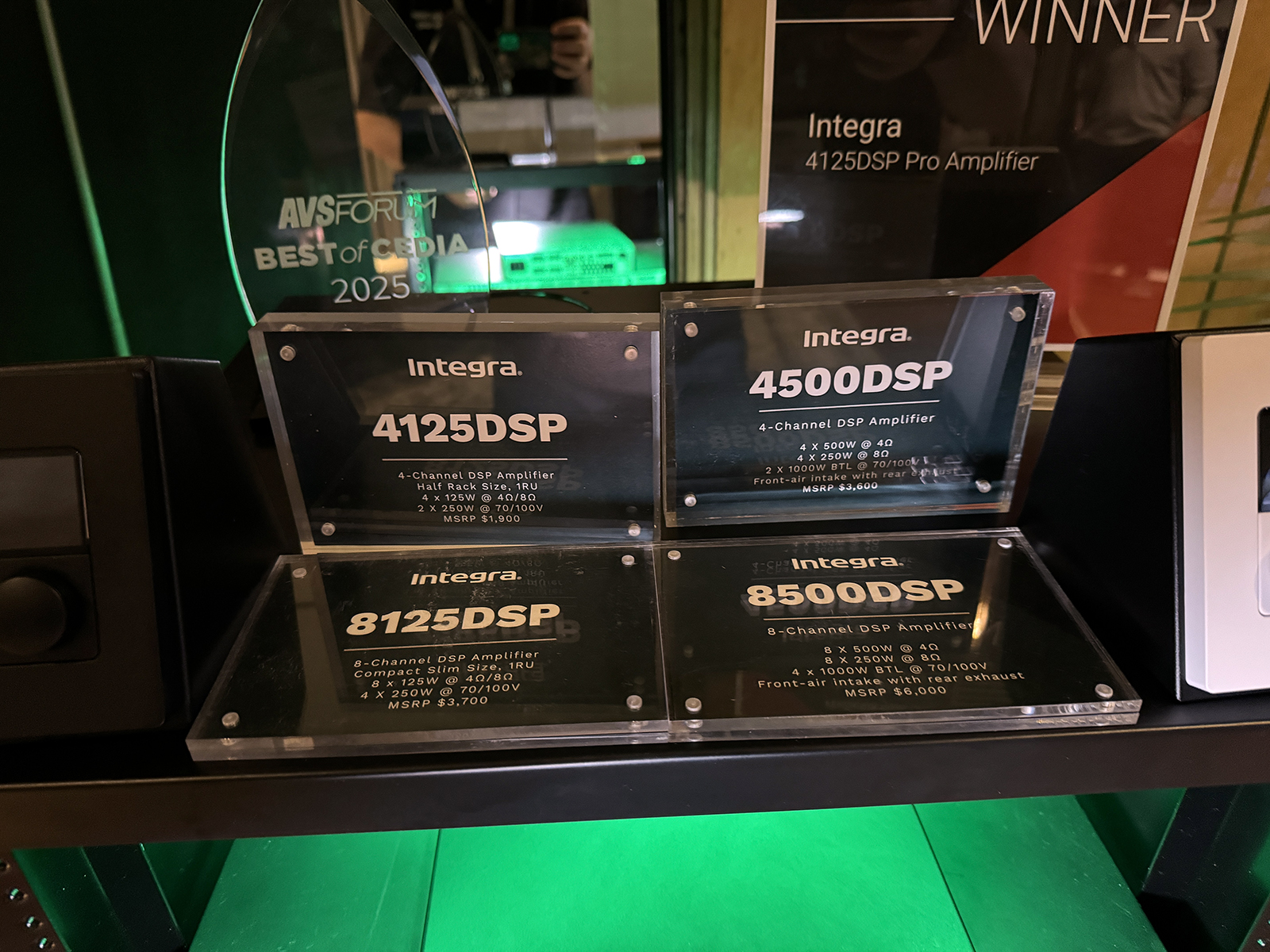 All the amp models come with custom integration and control software, and all have custom Klipsch speaker presets baked in and ready to use.
All the amp models come with custom integration and control software, and all have custom Klipsch speaker presets baked in and ready to use.
Masimo/DIRAC
Across the street from the convention center in the Le Meridian Hotel, Masimo Consumer had their displays of Marantz, B&W, Denon, Polk, and Definitive Technology products. But one of the standout demonstrations of the whole CEDIA show, for me, was also held here. That was DIRAC’s official demonstration of DIRAC ART (Active Room Treatment).
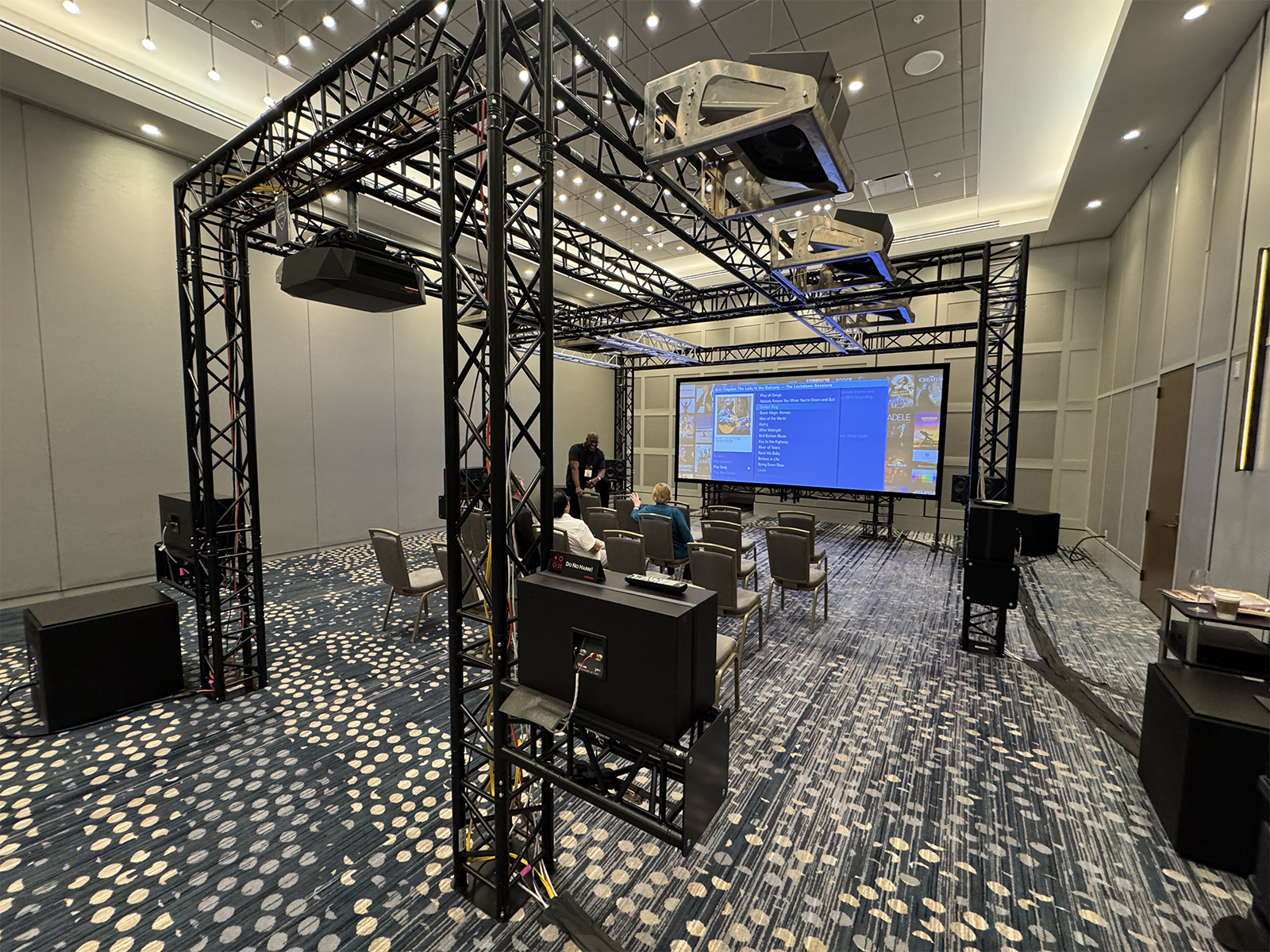 In a very large ballroom, a full 9.4.6 channel home theater system was set up using B&W speakers and subwoofers, Marantz processing, and amplification, along with an Epson projector and movie and music streaming via Kaleidescape.
In a very large ballroom, a full 9.4.6 channel home theater system was set up using B&W speakers and subwoofers, Marantz processing, and amplification, along with an Epson projector and movie and music streaming via Kaleidescape.
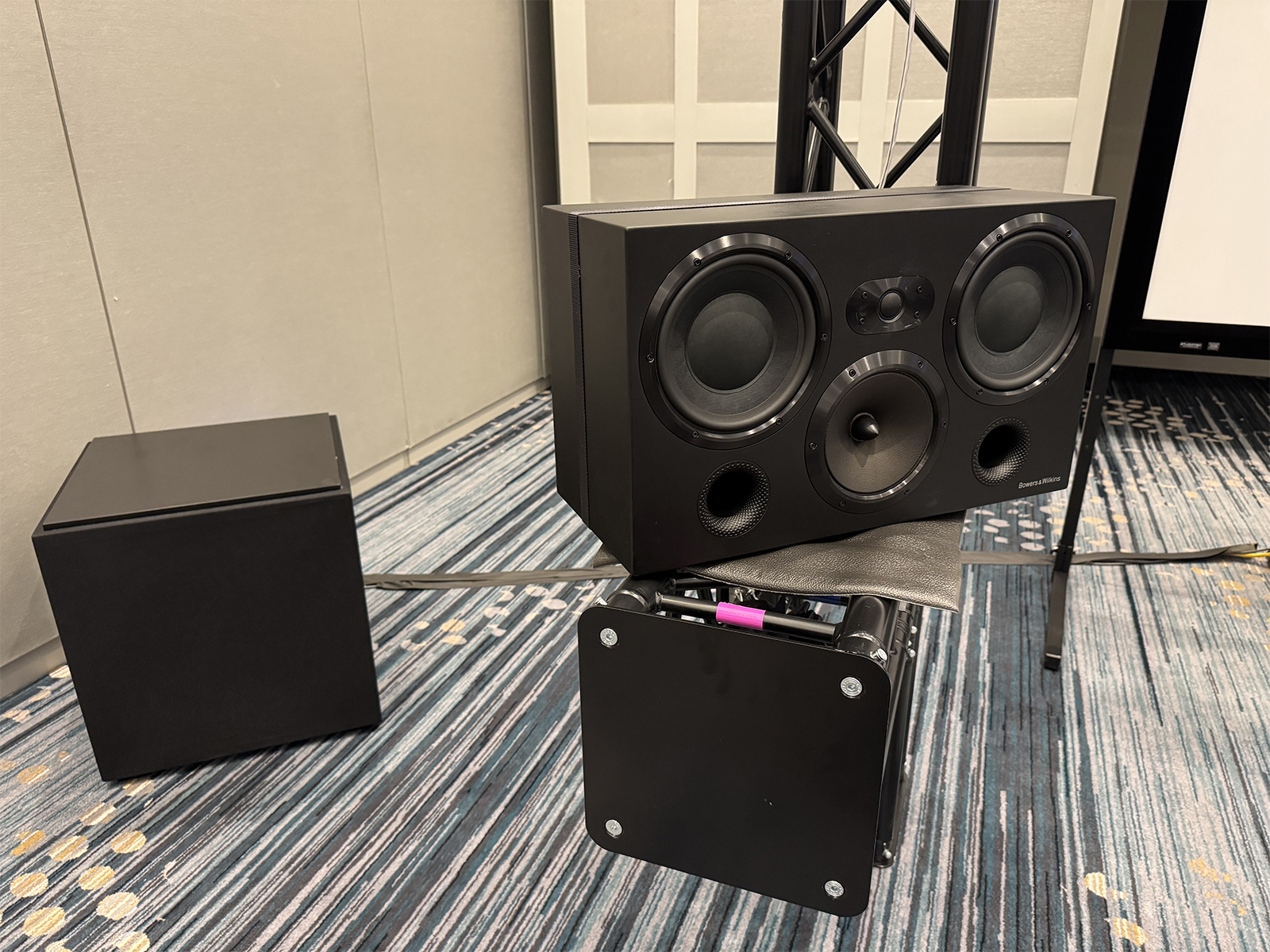
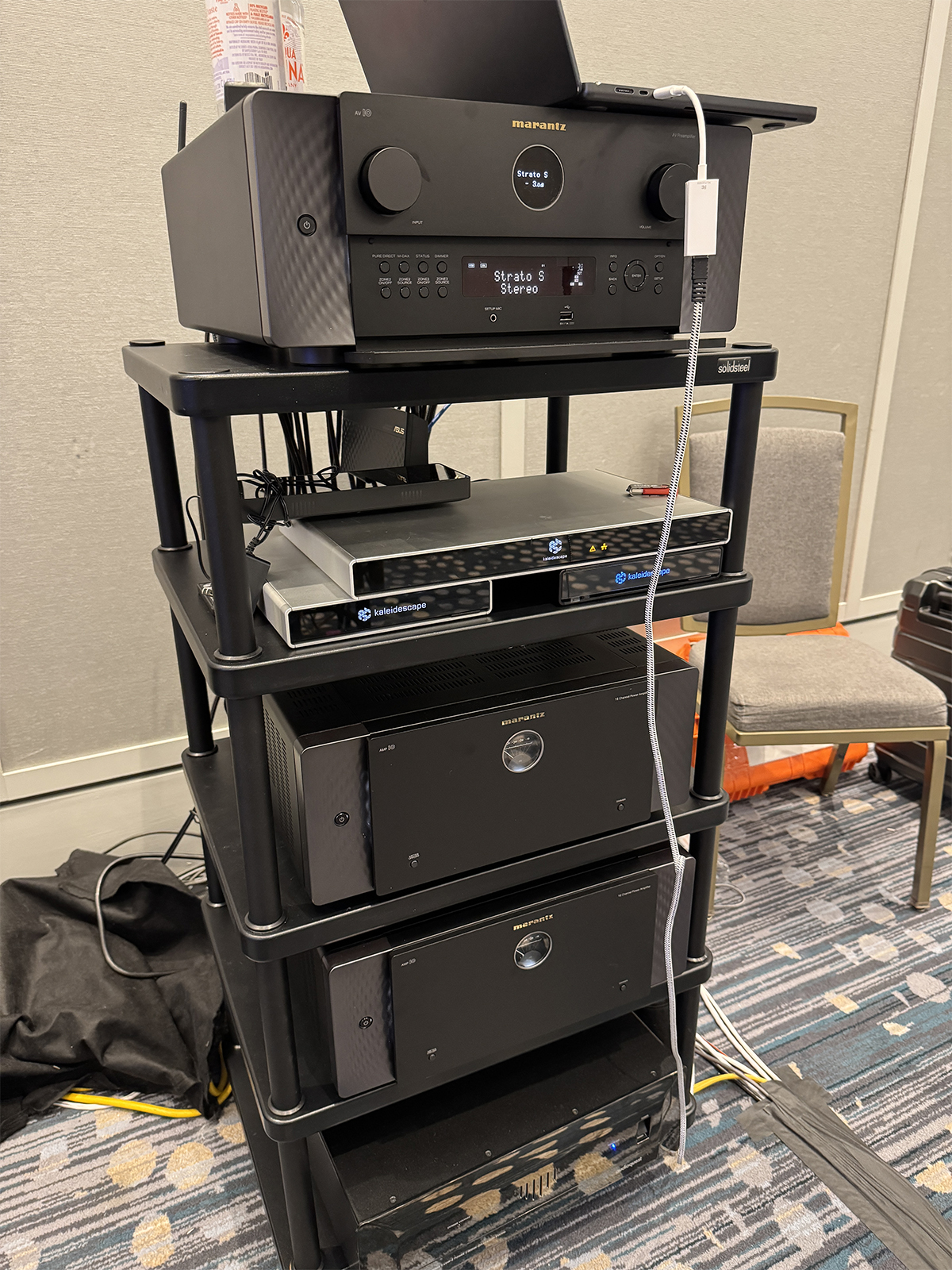 This setup was designed to allow instantaneous on-the-fly switching between a DIRAC with Bass Management preset and a DIRAC ART preset through the Marantz AV10 processor. In a nutshell, what DIRAC ART does is allow the entire grid of speakers in a system to work synergistically, where (due to placement and room characteristics) some better-performing speakers can compensate for the performance deficiencies of other speakers to create a clearer, more uniform overall sonic experience. Switching between the presets during the movie clips, it became very obvious how much DIRAC ART was improving the entire acoustic picture.
This setup was designed to allow instantaneous on-the-fly switching between a DIRAC with Bass Management preset and a DIRAC ART preset through the Marantz AV10 processor. In a nutshell, what DIRAC ART does is allow the entire grid of speakers in a system to work synergistically, where (due to placement and room characteristics) some better-performing speakers can compensate for the performance deficiencies of other speakers to create a clearer, more uniform overall sonic experience. Switching between the presets during the movie clips, it became very obvious how much DIRAC ART was improving the entire acoustic picture.
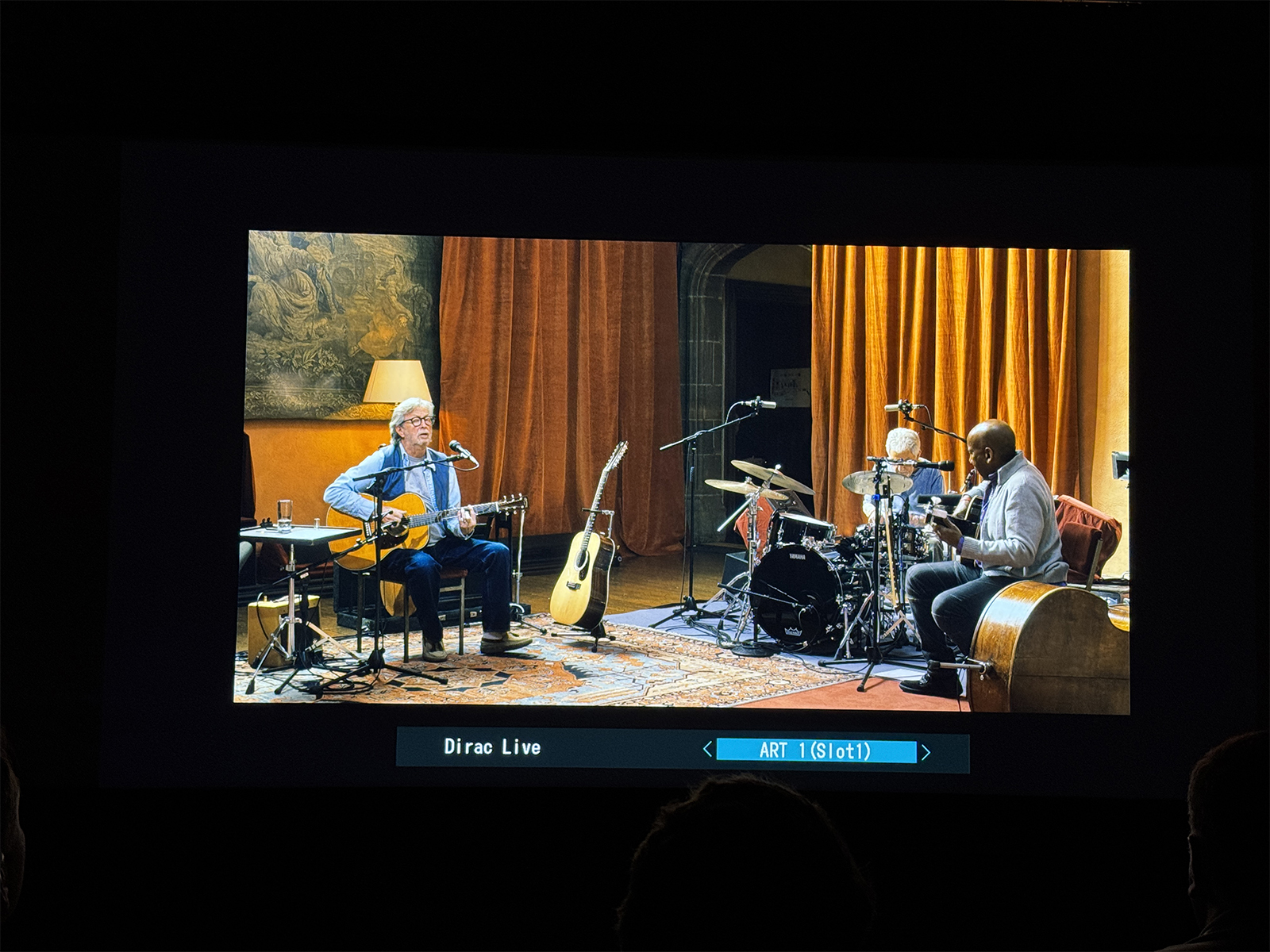 The improvement was especially noticeable on the Eric Clapton The Lady in the Window: Lockdown Session clips. With DIRAC Bass Control, the low-frequency reproduction sounded good, but Eric’s voice sounded like it was coming through a tube, and much of the midrange area had a noticeable bloom to its sound. With ART, the bass evened out further, and the entire image cleared up. Eric’s voice sounded much more evenly balanced and natural. In a word, the difference was impressive.
The improvement was especially noticeable on the Eric Clapton The Lady in the Window: Lockdown Session clips. With DIRAC Bass Control, the low-frequency reproduction sounded good, but Eric’s voice sounded like it was coming through a tube, and much of the midrange area had a noticeable bloom to its sound. With ART, the bass evened out further, and the entire image cleared up. Eric’s voice sounded much more evenly balanced and natural. In a word, the difference was impressive.
Theory Audio Design
I have had the pleasure of attending three Paul Hales/Theory Audio Design presentations, and each time I constantly get flabbergasted by what I’m hearing coming out of speakers that look nothing like what the preconception of audiophile speakers are.
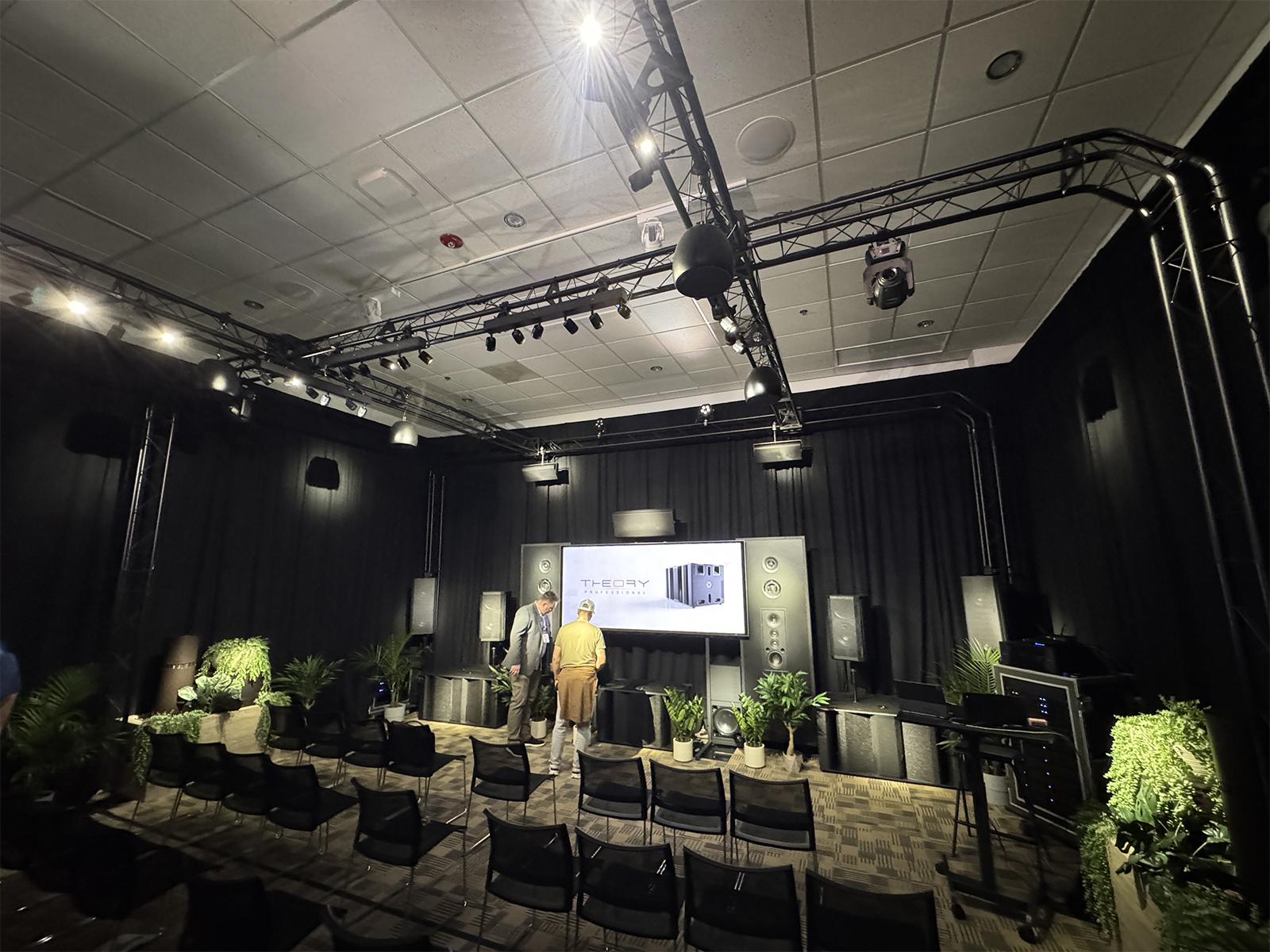
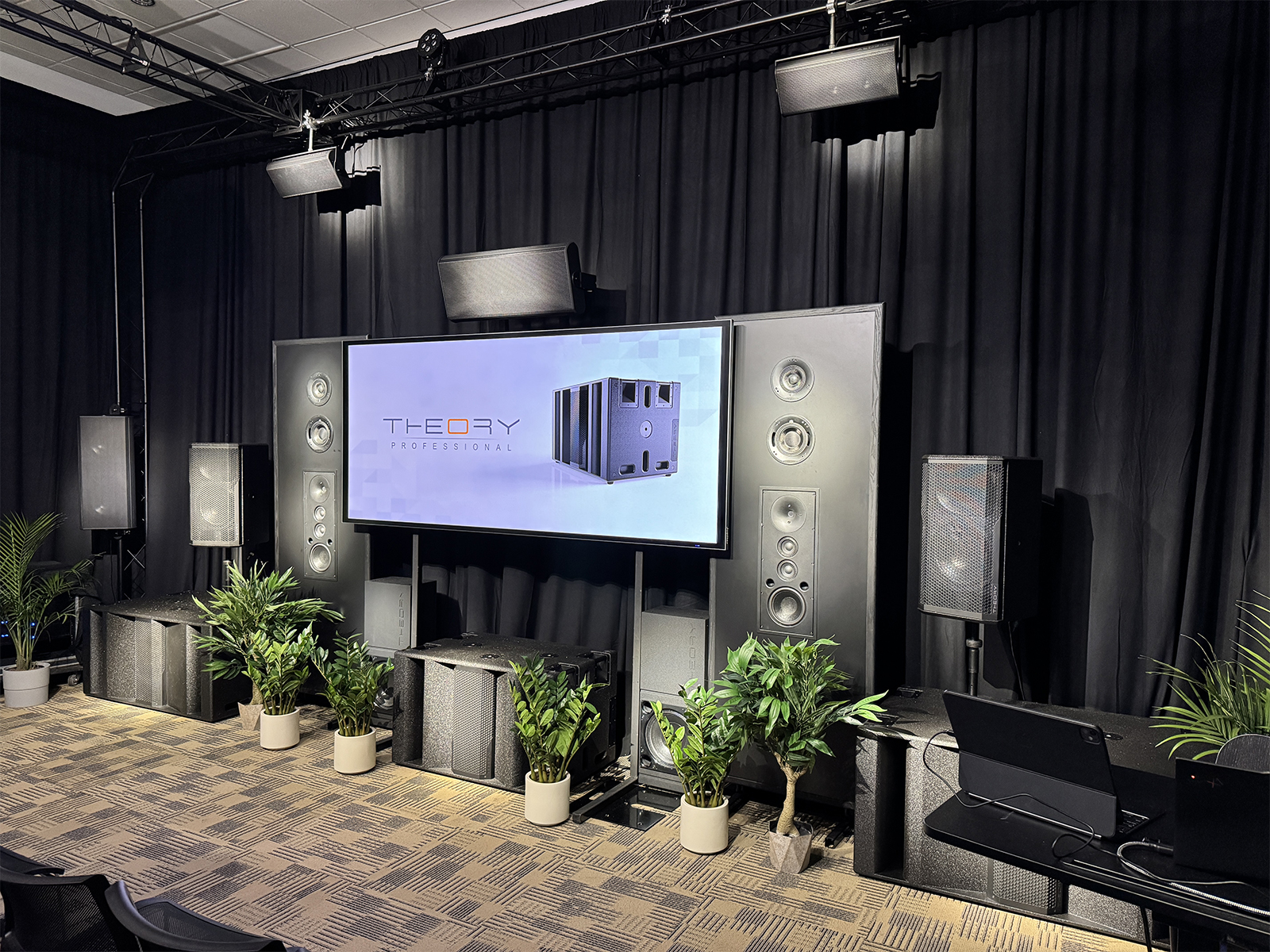 Let’s just say, the results are expletive-worthy. Yet these in-ceiling, pendants, bollards, and pro monitors are legitimate “audiophile” speakers in the best possible sense. Intelligently designed active speakers with bespoke amplification, DSP, and the proper application of physics.
Let’s just say, the results are expletive-worthy. Yet these in-ceiling, pendants, bollards, and pro monitors are legitimate “audiophile” speakers in the best possible sense. Intelligently designed active speakers with bespoke amplification, DSP, and the proper application of physics.
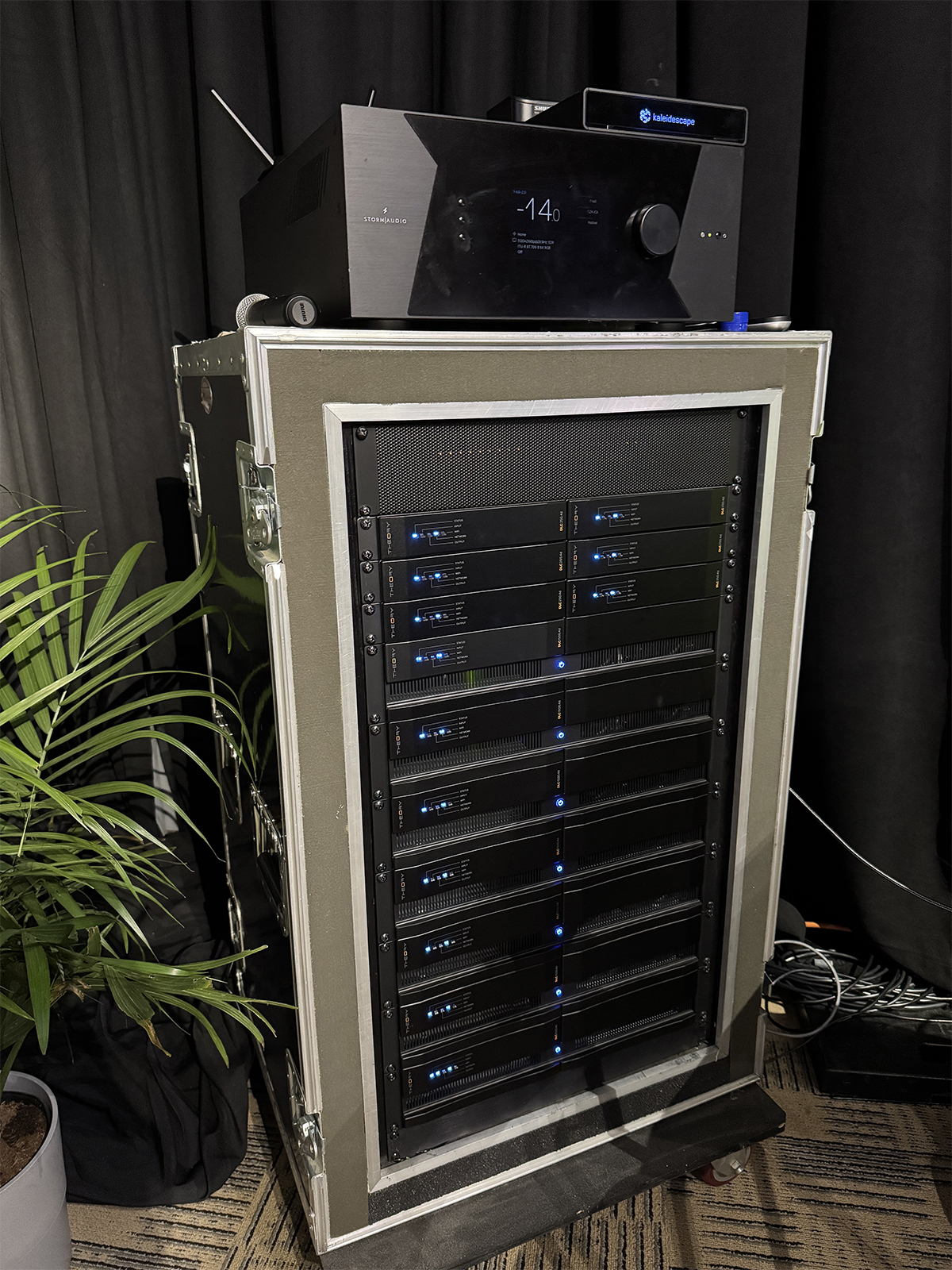
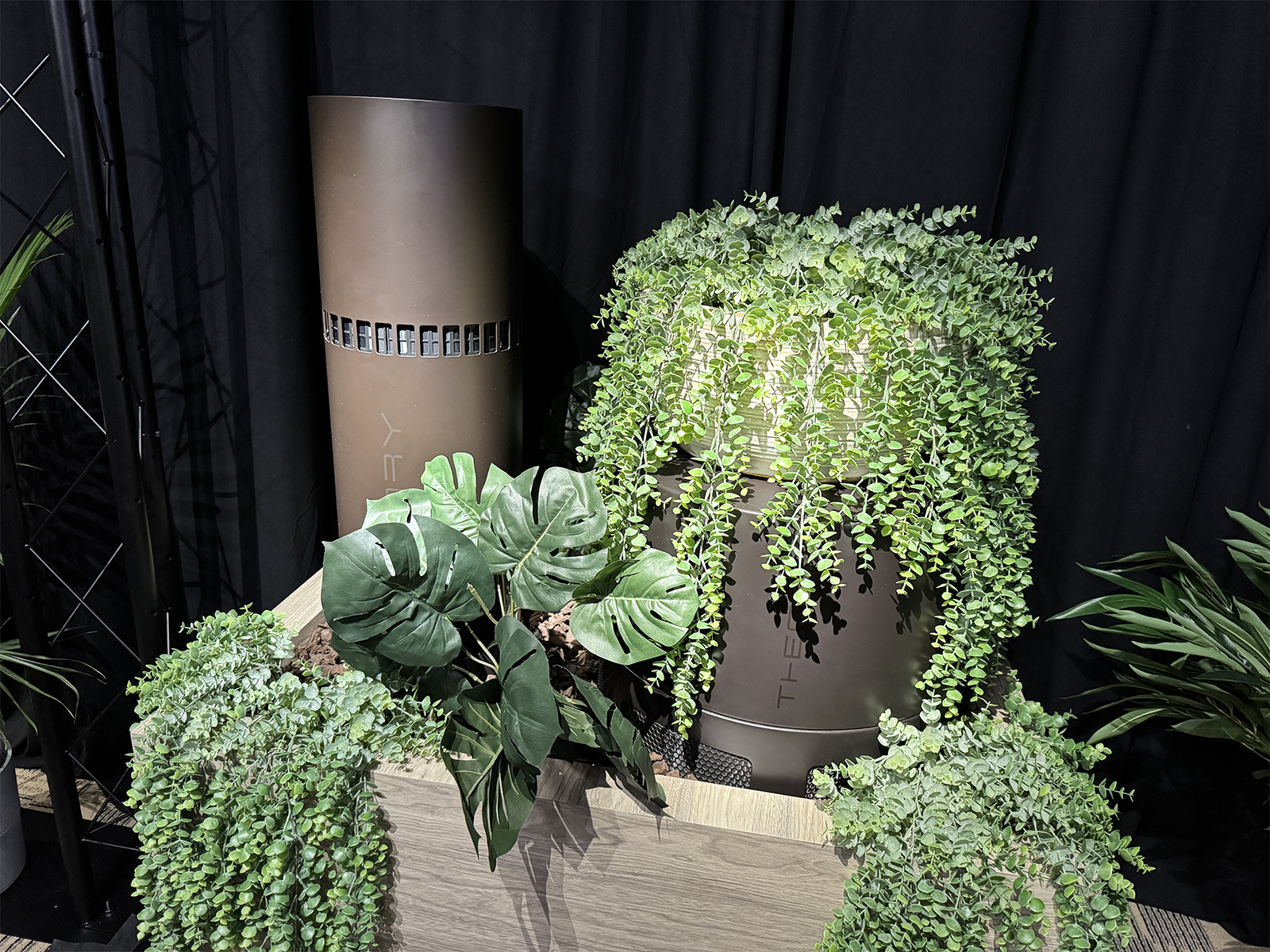 And Paul’s no BS style of presentation is always a refreshing change from the typical audio marketing hype one runs into at a show. A Theory Audio Design system is always worth listening to. And so is Paul.
And Paul’s no BS style of presentation is always a refreshing change from the typical audio marketing hype one runs into at a show. A Theory Audio Design system is always worth listening to. And so is Paul.
Technics
Turntables at CEDIA?! As incongruous as that might sound, Technics was indeed at the show introducing two new sub $1K direct-drive turntables.
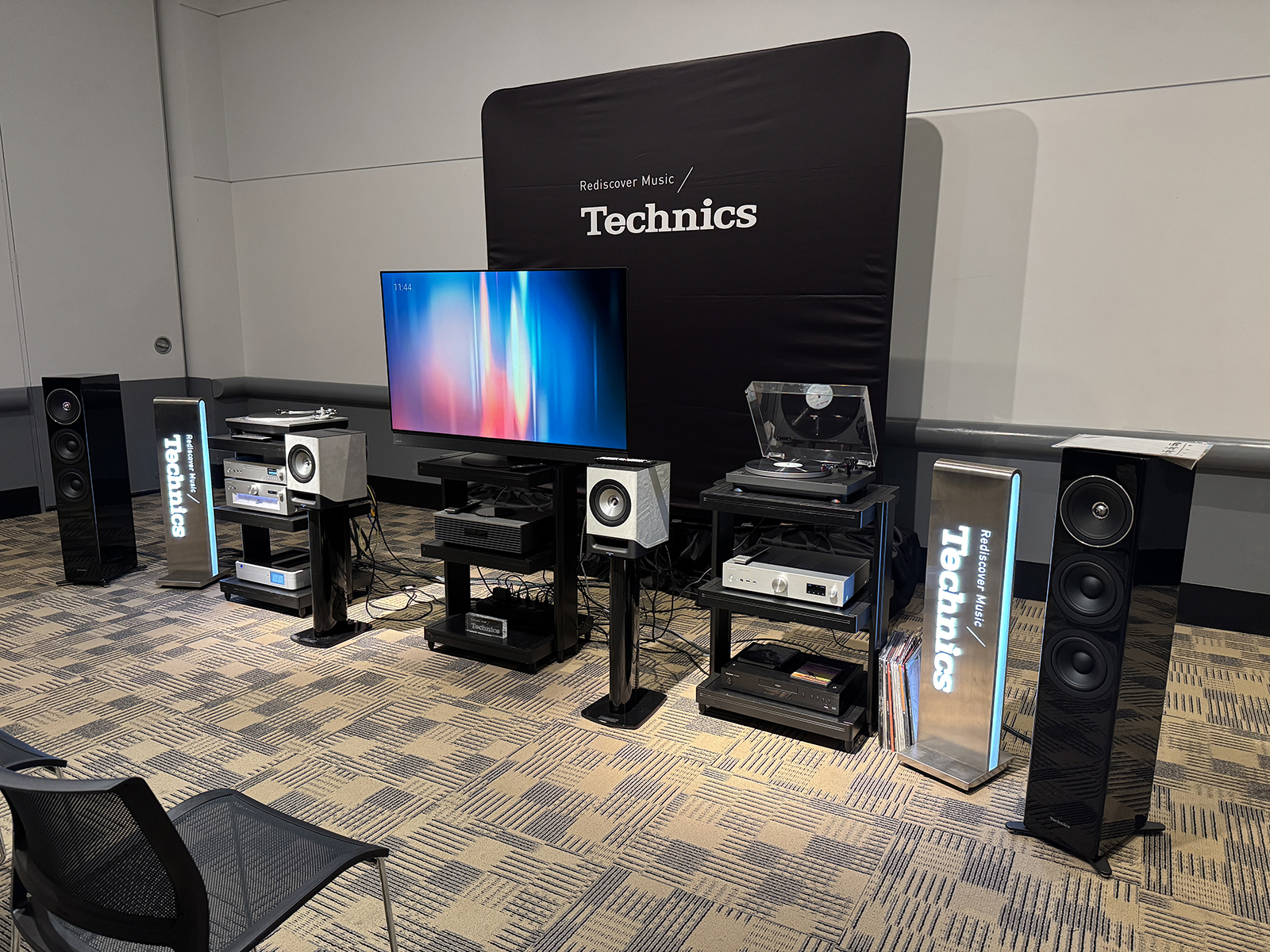
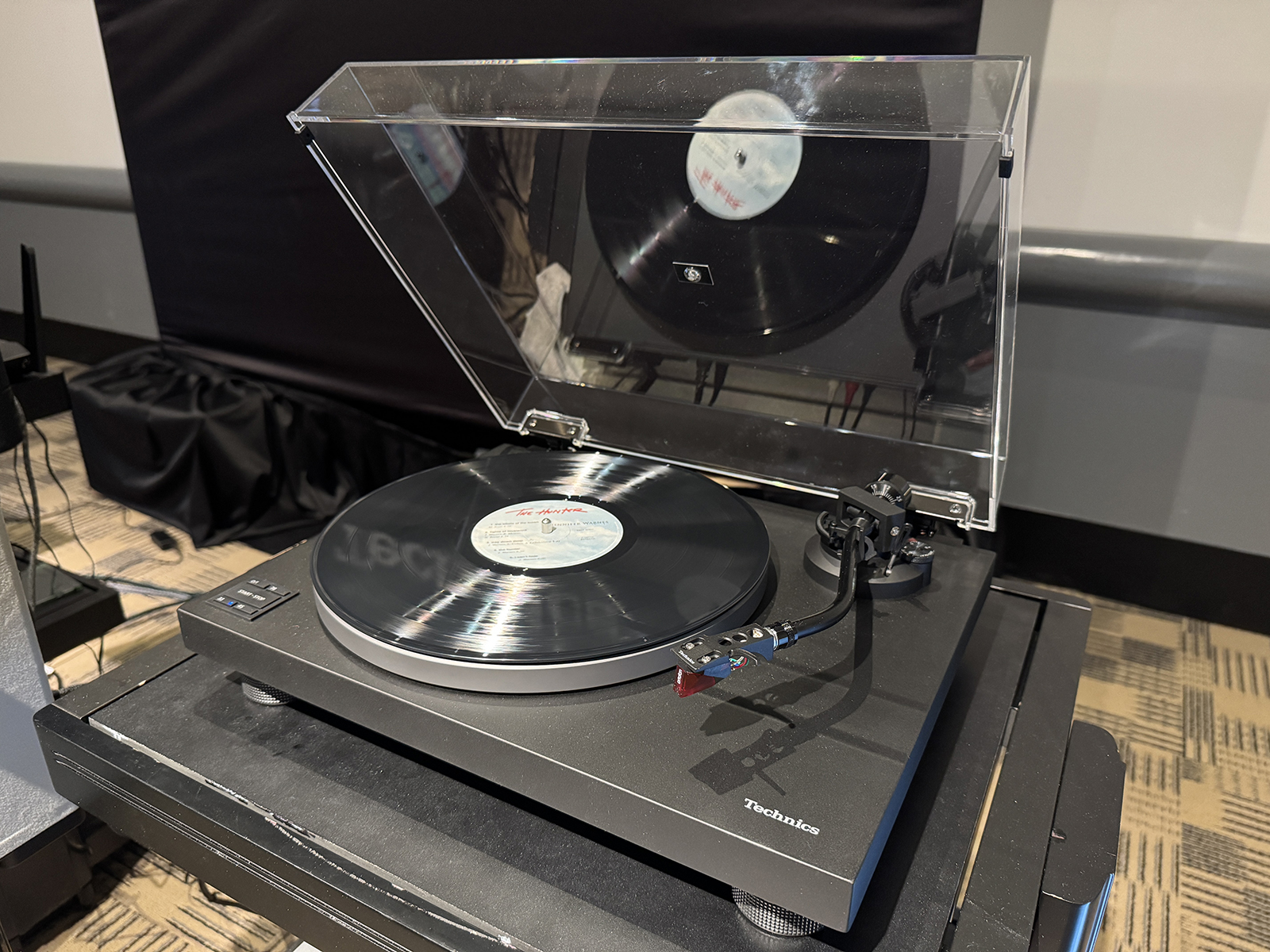
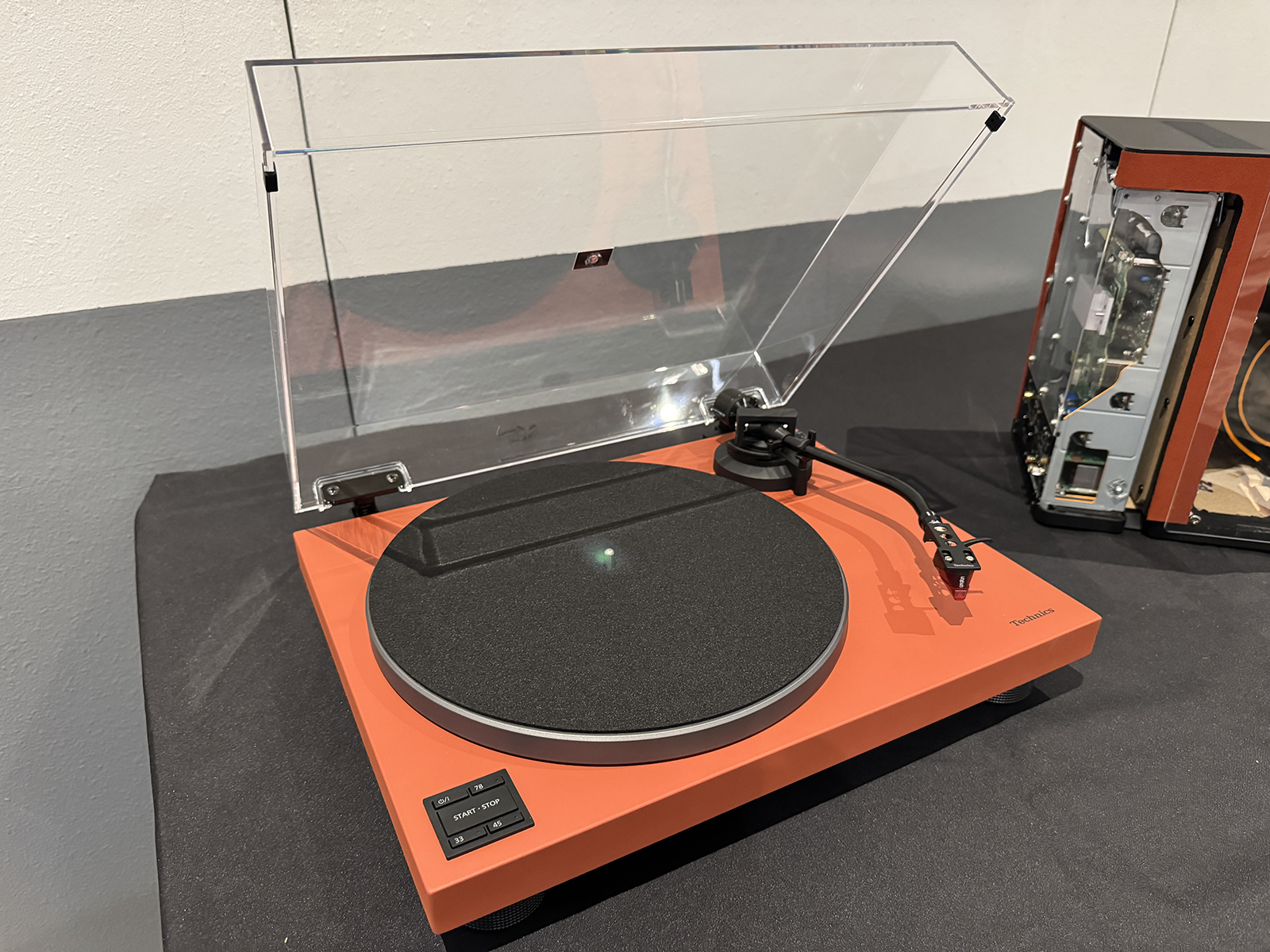 The first is the SL-40CBT-K, which uses the same coreless motor design that is found in the SL-1500C. It has a built-in MM phono stage that can be easily bypassed if desired. Technics designed a new aluminum S-shaped tonearm that uses a simple, plain bearing versus gimbal suspension. And while the tonearm retains the familiar Technics anti-skate dial, there is no tonearm height adjustment available. An Audio-Technica AT-VM95C cartridge is bundled with the turntable. It also features Bluetooth Transmission using either aptX Adaptive or SBC codecs to communicate wirelessly with a suitable Bluetooth-enabled preamp or integrated amp. The plinth is made from MDF, the platter is die-cast aluminum, and the available speeds are 33 and 45 RPM.
The first is the SL-40CBT-K, which uses the same coreless motor design that is found in the SL-1500C. It has a built-in MM phono stage that can be easily bypassed if desired. Technics designed a new aluminum S-shaped tonearm that uses a simple, plain bearing versus gimbal suspension. And while the tonearm retains the familiar Technics anti-skate dial, there is no tonearm height adjustment available. An Audio-Technica AT-VM95C cartridge is bundled with the turntable. It also features Bluetooth Transmission using either aptX Adaptive or SBC codecs to communicate wirelessly with a suitable Bluetooth-enabled preamp or integrated amp. The plinth is made from MDF, the platter is die-cast aluminum, and the available speeds are 33 and 45 RPM.
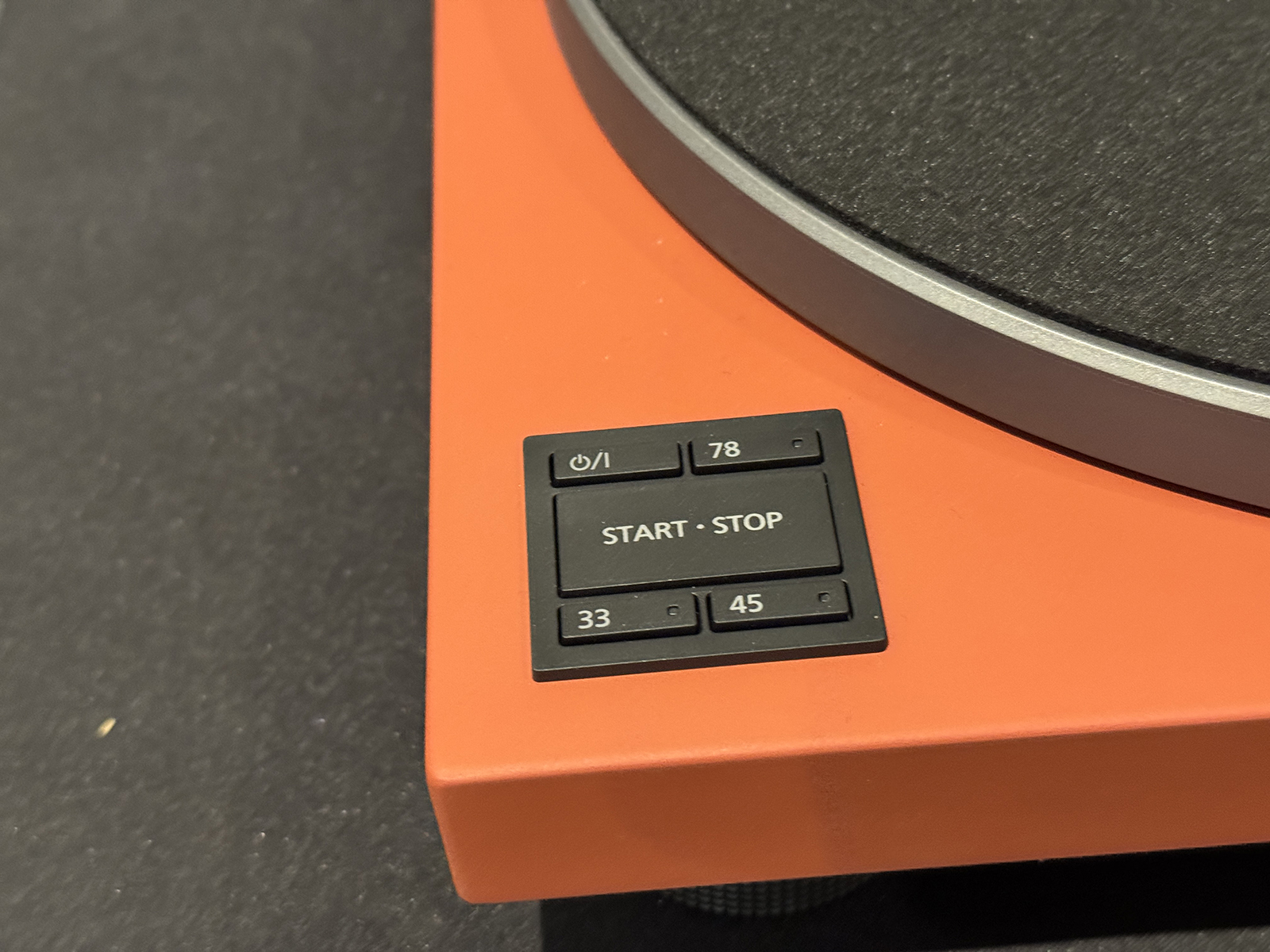
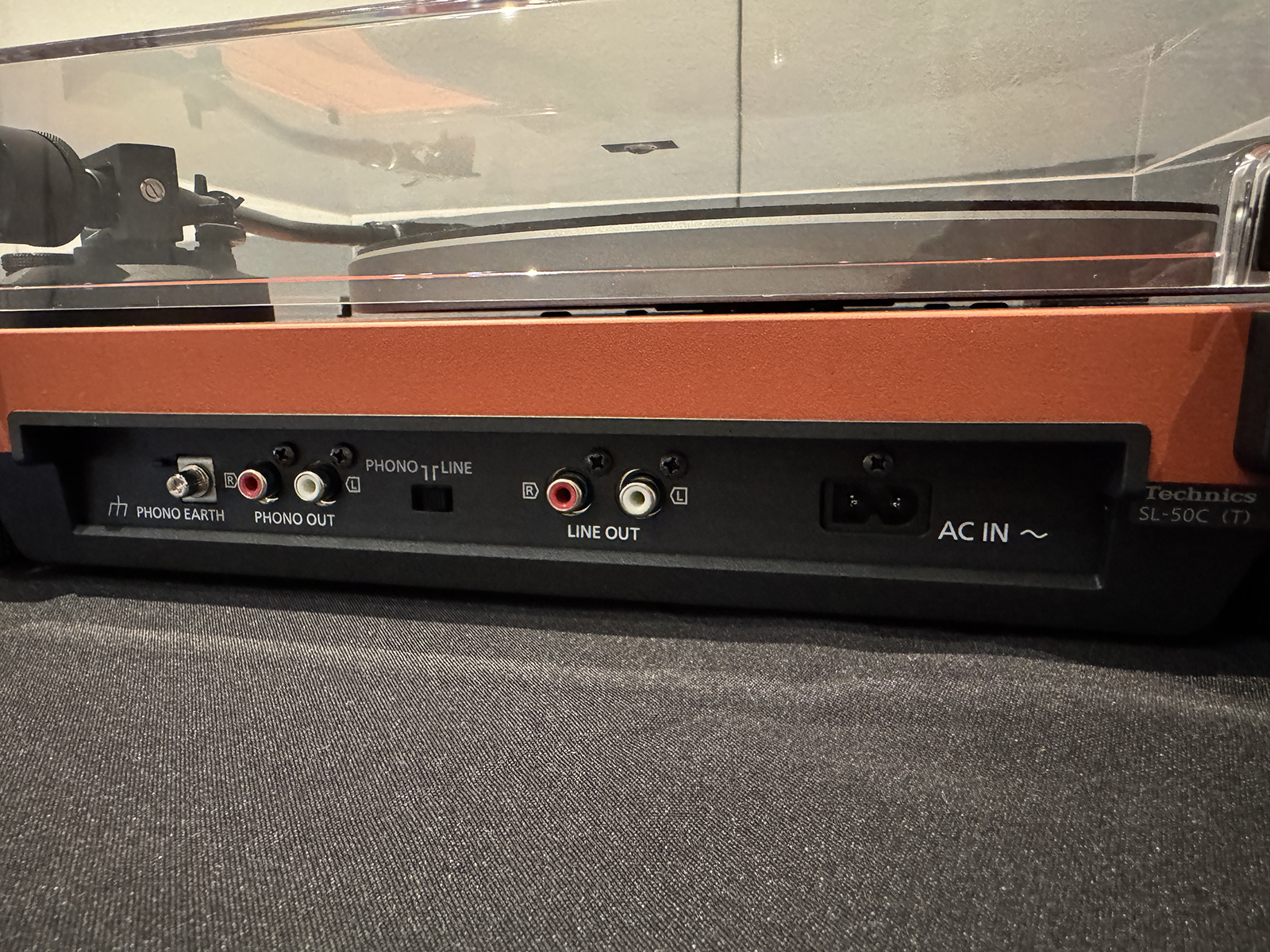
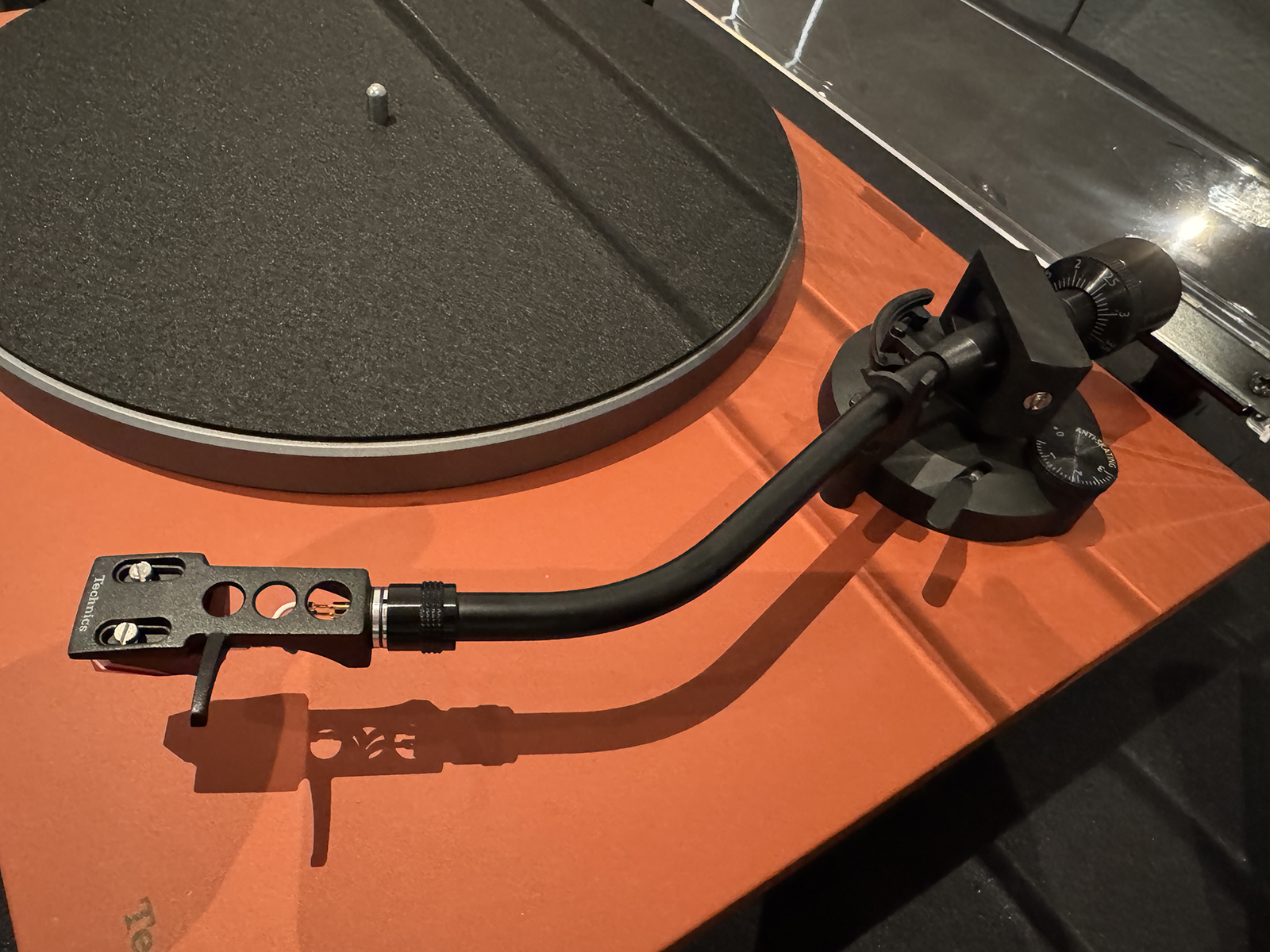
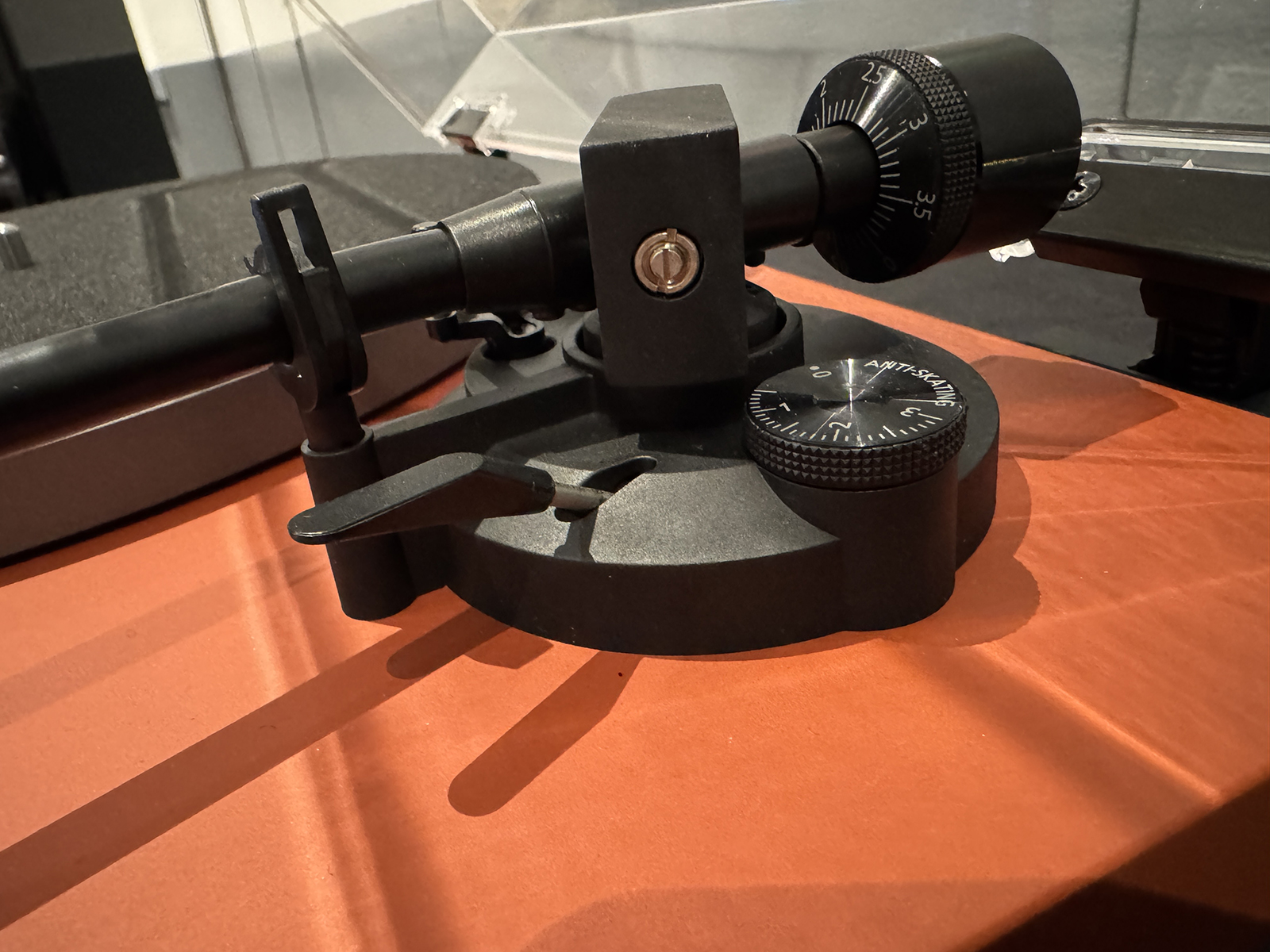 The SL-50C-K is essentially the same as the SL-40CBT-K but substitutes the Bluetooth capability for a 78 RPM speed selection, and the Ortofon 2M Red cartridge is bundled here.
The SL-50C-K is essentially the same as the SL-40CBT-K but substitutes the Bluetooth capability for a 78 RPM speed selection, and the Ortofon 2M Red cartridge is bundled here.
Both turntables are available in Black, Silky Grey, and Terra Cotta finishes, and both will be priced at $899.99. Availability is for late September.
DALI
At CEDIA, I was able to check out the new diminutive DALI KUPID speakers.
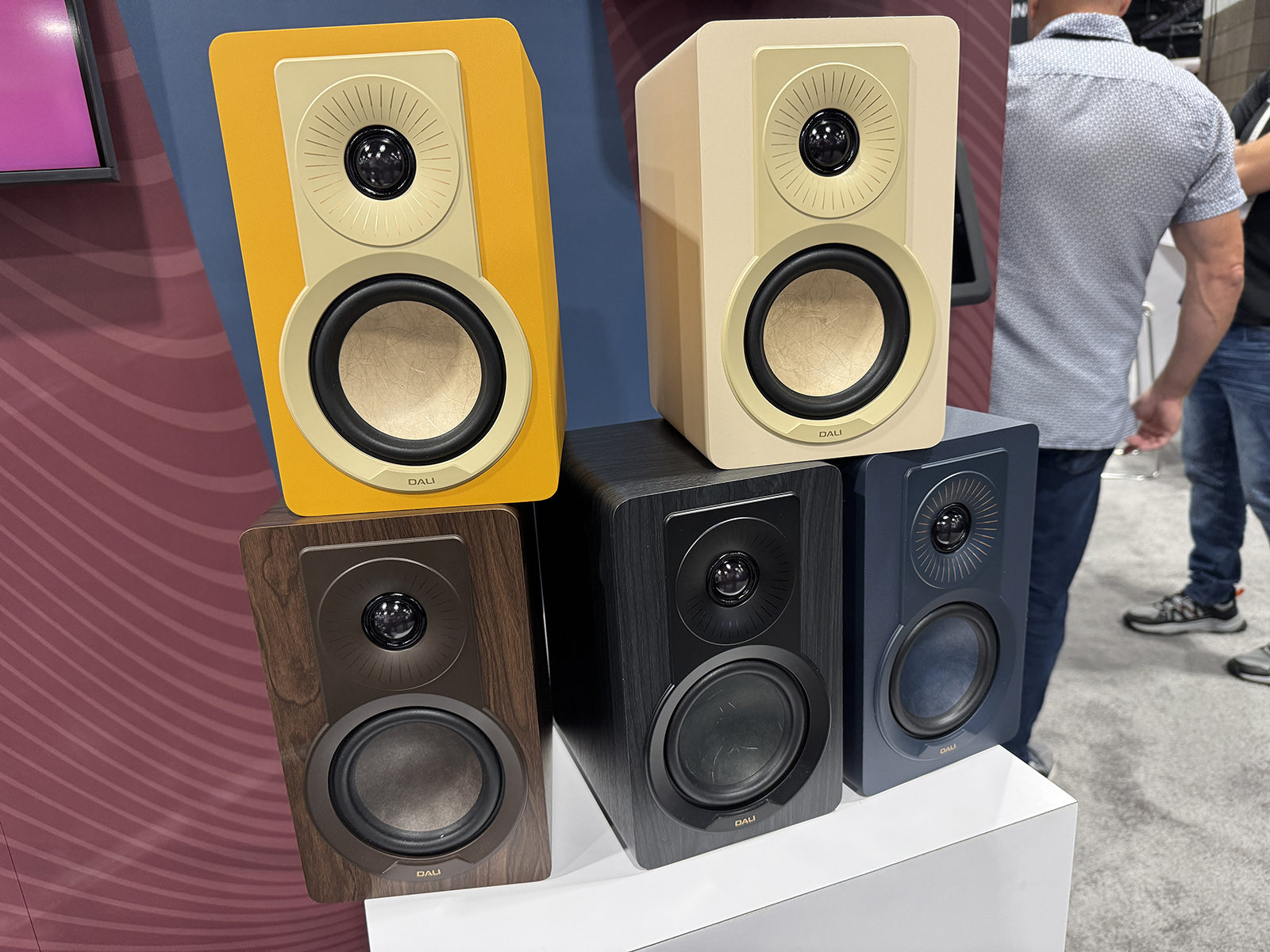 They appear to be a very stylish 2-way design available in five different finishes. Featuring a 1-inch soft dome tweeter and a 4.5-inch paper/wood fiber cone mid-bass driver with a rear firing port.
They appear to be a very stylish 2-way design available in five different finishes. Featuring a 1-inch soft dome tweeter and a 4.5-inch paper/wood fiber cone mid-bass driver with a rear firing port.
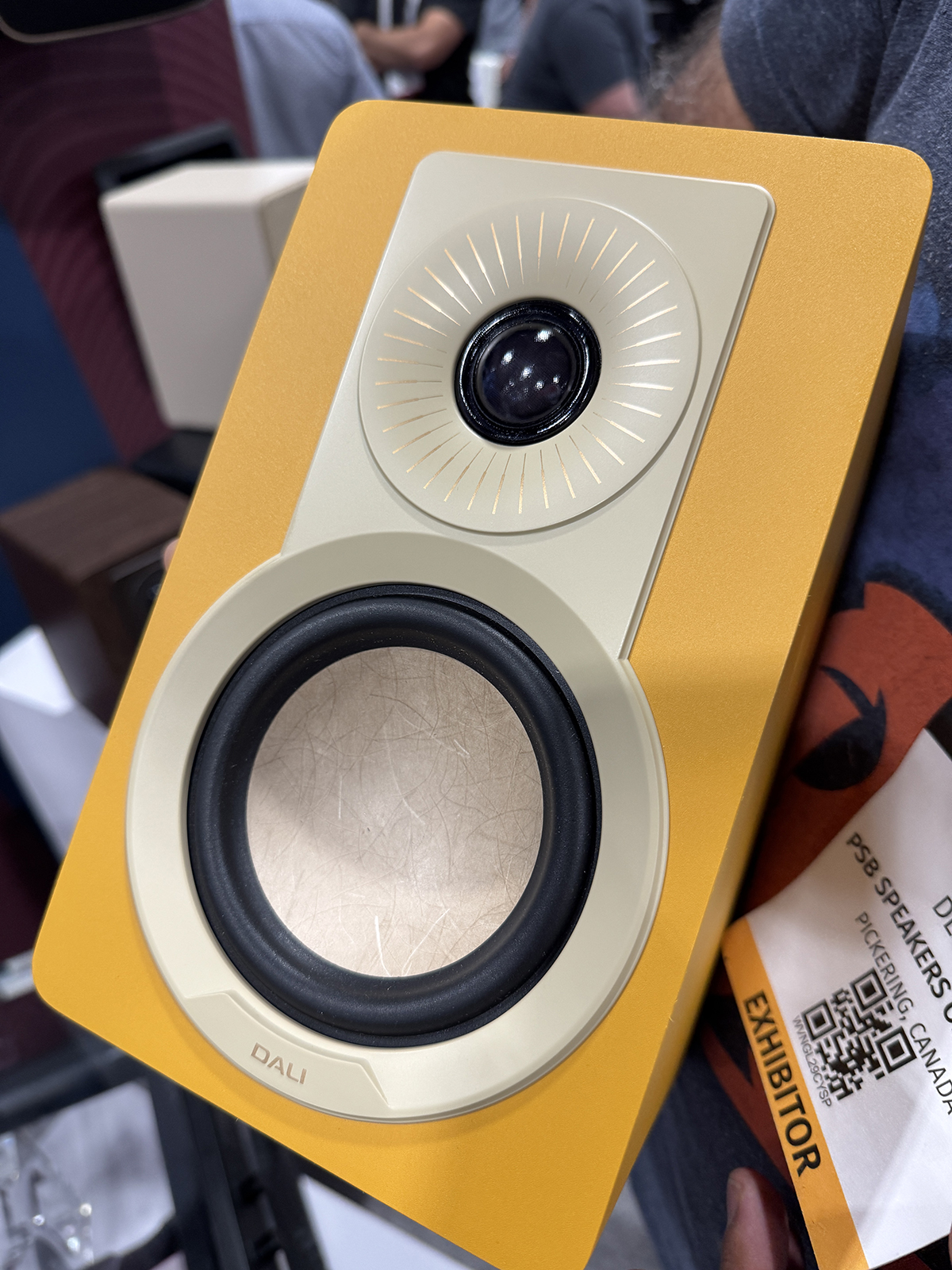
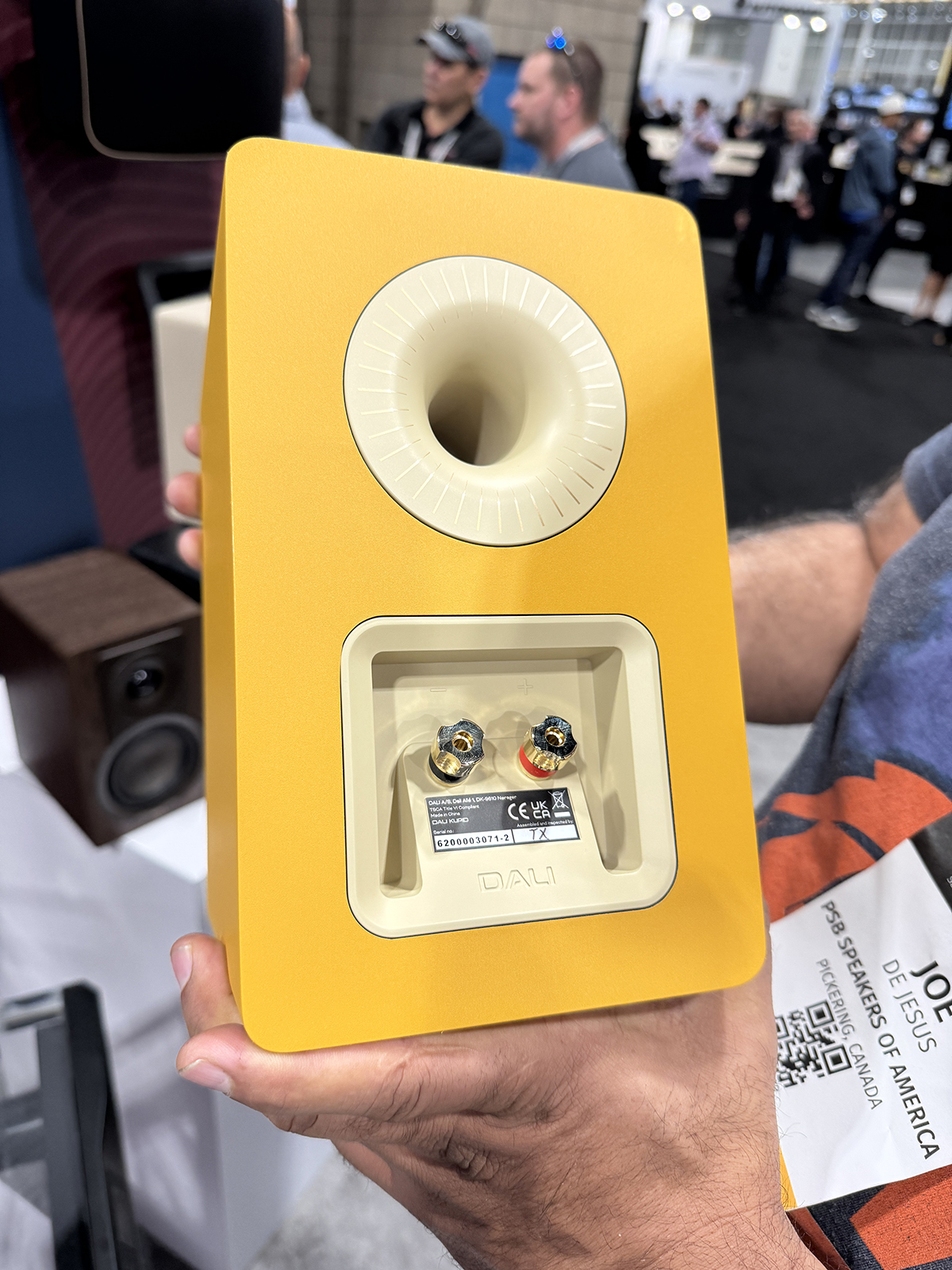 I can immediately see so many applications and uses for these sharp-dressed little guys. They are rated as a 4-ohm load with a sensitivity of 83 dB, so they might require a little bit of power, but I am intrigued to get a listen to them at some point. Nice work, DALI!
I can immediately see so many applications and uses for these sharp-dressed little guys. They are rated as a 4-ohm load with a sensitivity of 83 dB, so they might require a little bit of power, but I am intrigued to get a listen to them at some point. Nice work, DALI!
Yamaha
From the consumer side, Yamaha was introducing their new True X Surround 90A Soundbar.
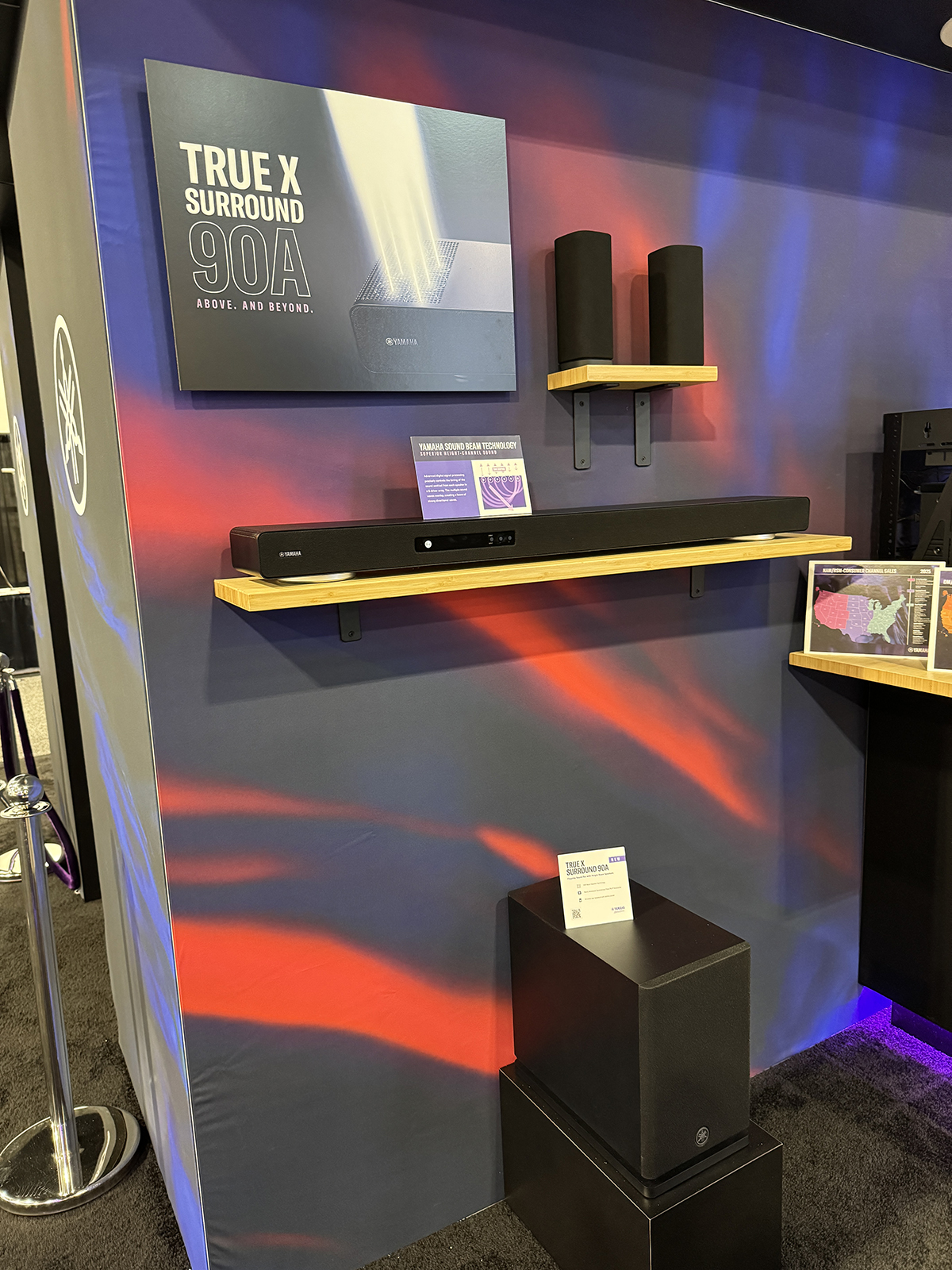 The company is marketing this as a higher-end soundbar solution, as it comes with a pair of wireless surround speakers and a wireless subwoofer to complete the package. The speakers and sub operate on a 5GHz wireless channel.
The company is marketing this as a higher-end soundbar solution, as it comes with a pair of wireless surround speakers and a wireless subwoofer to complete the package. The speakers and sub operate on a 5GHz wireless channel.
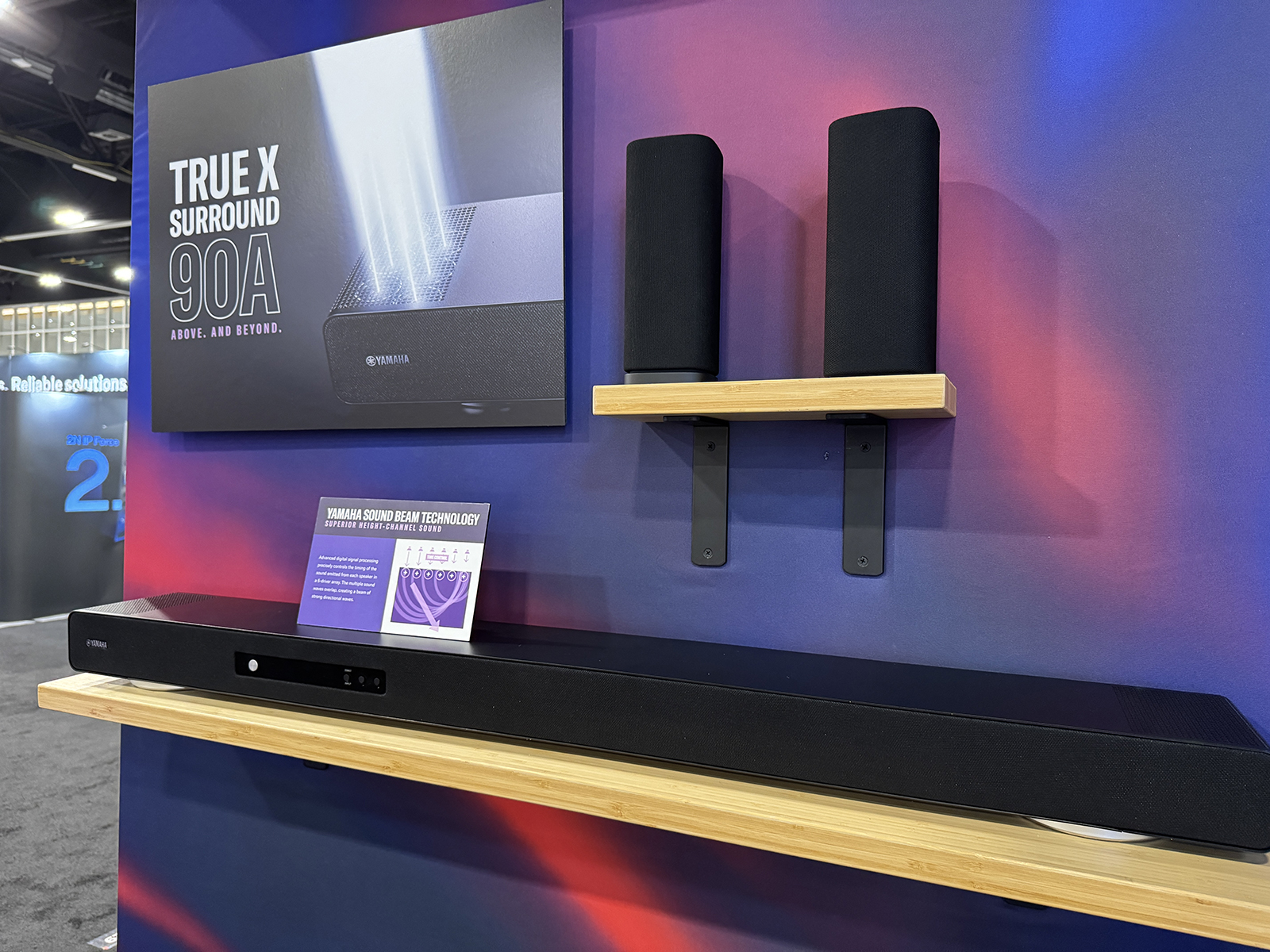 The soundbar itself has four front-facing 4-3/8-inch oval mid-bass drivers and three 1-inch front-facing tweeters. These are spread out to create the front L/C/R channels. On top of the chassis, there are twelve (six per side) 1-1/8-inch overhead-firing ATMOS speaker drivers that incorporate a type of beamforming technology to help adjust the angle of sound projection depending on the seating distance. The rear speakers each have two 2-1/4-inch full-range drivers and two passive radiators.
The soundbar itself has four front-facing 4-3/8-inch oval mid-bass drivers and three 1-inch front-facing tweeters. These are spread out to create the front L/C/R channels. On top of the chassis, there are twelve (six per side) 1-1/8-inch overhead-firing ATMOS speaker drivers that incorporate a type of beamforming technology to help adjust the angle of sound projection depending on the seating distance. The rear speakers each have two 2-1/4-inch full-range drivers and two passive radiators.
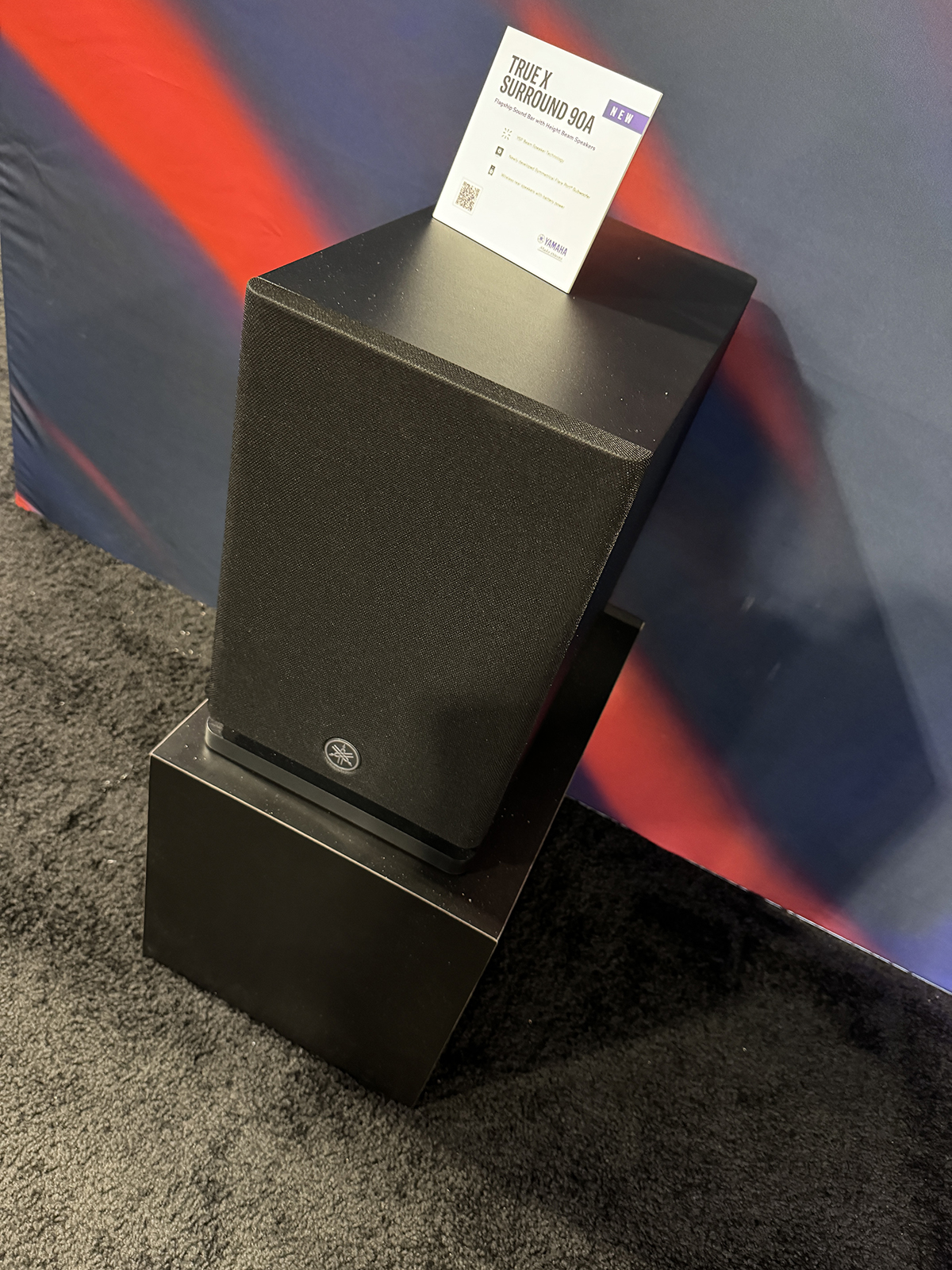 The subwoofer has a single 6-3/4-inch driver. The interesting thing about the rear surrounds is that they can be used, on their own, as portable Bluetooth speakers when you are on the go and then be returned to their charging stations when you get home to resume their duties as surround speakers. The System supports Dolby Atmos, DTS:X, AURO-3D, along with a few of Yamaha’s famous surround listening modes. There is also Bluetooth connectivity via AAC and SBC codecs. The system incorporates Yamaha’s MusiCast audio platform to control and manage a variety of popular music streaming services. This tidy little system retails for $3,499.95.
The subwoofer has a single 6-3/4-inch driver. The interesting thing about the rear surrounds is that they can be used, on their own, as portable Bluetooth speakers when you are on the go and then be returned to their charging stations when you get home to resume their duties as surround speakers. The System supports Dolby Atmos, DTS:X, AURO-3D, along with a few of Yamaha’s famous surround listening modes. There is also Bluetooth connectivity via AAC and SBC codecs. The system incorporates Yamaha’s MusiCast audio platform to control and manage a variety of popular music streaming services. This tidy little system retails for $3,499.95.


